3D printing
description: layer-by-layer additive process used to make a three-dimensional object
236 results
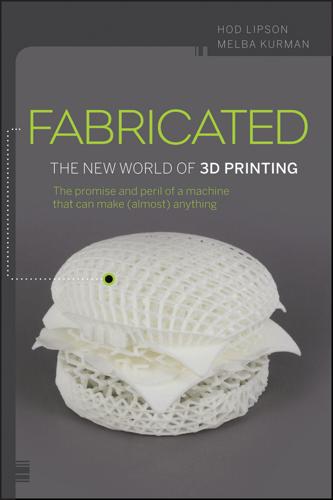
Fabricated: The New World of 3D Printing
by
Hod Lipson
and
Melba Kurman
Published 20 Nov 2012
Yet the physical world doesn’t break down easily into a set of finite possibilities. Today’s design software Design software and 3D printing technologies are together leaping forward and changing the way people design and make things. However, their relationship has been largely one-sided. 3D printing grew up reliant on design software. Yet design software did not grow up reliant on 3D printing. In fact, design software is only now starting to take 3D printing seriously as a viable medium for design. There’s only so much a design file can tell a 3D printer. If we’re ever going to 3D print a “real” rock, fully functioning robot, or new kidney, design software will need to raise its game.
…
Let’s start with the lowest rungs on the ladder—inanimate replacement “body parts” such as dental crowns or artificial limbs. The first wave of commercially available 3D printed body parts are already out there walking around inside the bodies or regular people, perhaps even in yours. Non-living prosthetics such as 3D printed bone implants, dental crowns, contact lenses, and hearing aids reside in thousands of humans worldwide. Phil Reeves, the managing director of Econolyst, a consulting company dedicated to the 3D printing industry, estimates that today there are “ten million 3D printed hearing aids in circulation worldwide.”4 Invisalign braces—3D printed, custom-made, clear disposable plastic braces that hide over a patient’s teeth to pull them into alignment—have been a tremendous commercial success.
…
There are an estimated half to three-quarters of a million 3D printed dental implants travelling around in people’s mouths right now.5 Like high-end 3D printed titanium airplane parts, 3D printed human body parts represent the ultimate in small batch, direct to digital custom manufacturing. The process for teeth, hearing aids, and braces is similar: the body part in question is scanned. The scan data is sent to a special lab where it’s adjusted into a viable design file. The design file is 3D printed into soft rubber, hard and shiny ceramic, or soft flexible transparent plastic. Approximately 50,000 custom Invisalign braces are 3D printed every day.

The Fourth Industrial Revolution
by
Klaus Schwab
Published 11 Jan 2016
http://www.technologyreview.com/news/429248/this-robotcould-transform-manufacturing/ 94 See http://www.stratasys.com/. 95 Dan Worth, “Business use of 3D printing is years ahead of consumer uptake”, V3.co.uk, 19 August 2014. http://www.v3.co.uk/v3-uk/news/2361036/business-use-of-3d-printing-is-years-ahead-of-consumer-uptake 96 “The 3D Printing Startup Ecosystem”, SlideShare.net, 31 July 2014. http://de.slideshare.net/SpontaneousOrder/3d-printing-startup-ecosystem 97 Alban Leandri, “A Look at Metal 3D Printing and the Medical Implants Industry”, 3DPrint.com, 20 March 2015. http://3dprint.com/52354/3d-print-medical-implants/ 98 “The Need is Real: Data”, US Department of Health and Human Services, organdonor.gov. http://www.organdonor.gov/about/data.html 99 “An image of the future”, The Economist, 19 May 2011.
…
Sources: https://bitnation.co/; http://www.pymnts.com/news/2014/estonian-national-id-cards-embrace-electronic-payment-capabilities/ Shift 19: 3D Printing and Manufacturing The tipping point: The first 3D-printed car in production By 2025: 84% of respondents expected this tipping point to have occurred 3D printing, or additive manufacturing, is the process of creating a physical object by printing it layer upon layer from a digital 3D drawing or model. Imagine creating a loaf of bread, slice by slice. 3D printing has the potential to create very complex products without complex equipment.94 Eventually, many different kinds of materials will be used in the 3D printer, such as plastic, aluminium, stainless steel, ceramic or even advanced alloys, and the printer will be able to do what a whole factory was once required to accomplish.
…
Source: “Boy Given a 3-D Printed Spine Implant, Loren Grush, Popular Science, 26 August 2014, http://www.popsci.com/article/science/boy-given-3-d-printed-spine-implant Shift 21: 3D Printing and Consumer Products The tipping point: 5% of consumer products printed in 3D By 2025: 81% of respondents expected this tipping point to have occurred Because 3D printing can be done by anyone with a 3D printer, it creates opportunities for typical consumer products to be printed locally and on demand, instead of having to be bought at shops. A 3D printer will eventually be an office or even a home appliance. This further reduces the cost of accessing consumer goods and increases the availability of 3D printed objects. Current usage areas for 3D printing (Figure VII) indicate several sectors related to developing and producing consumer products (proof of concept, prototype and production). Figure VII: Use of 3D Printing in Various Areas (% of respondents*) * Percentages are of respondents from the Sculpteo survey.

The Singularity Is Nearer: When We Merge with AI
by
Ray Kurzweil
Published 25 Jun 2024
BACK TO NOTE REFERENCE 260 For a closer look at the early history of 3D printing, see Drew Turney, “History of 3D Printing: It’s Older Than You Think,” Design and Make with Autodesk, August 31, 2021, https://www.autodesk.com/redshift/history-of-3d-printing; Leo Gregurić, “History of 3D Printing: When Was 3D Printing Invented?,” All3DP, December 10, 2018, https://web.archive.org/web/20211227053912/https://all3dp.com/2/history-of-3d-printing-when-was-3d-printing-invented/. BACK TO NOTE REFERENCE 261 For more on the process of 3D printing itself, see “How Does 3D Printing Work? | The Deets,” Digital Trends, YouTube video, September 22, 2019, https://www.youtube.com/watch?
…
BACK TO NOTE REFERENCE 278 For a helpful overview of recent advances in this area, see Sriram Renganathan, “3D Printed House/Construction Materials: What Are They?,” All3DP, April 23, 2019, https://all3dp.com/2/3d-printing-in-construction-what-are-3d-printed-houses-made-of. BACK TO NOTE REFERENCE 279 Melissa Goldin, “Chinese Company Builds Houses Quickly with 3D Printing,” Mashable, April 28, 2014, https://mashable.com/archive/3d-printing-houses-china. BACK TO NOTE REFERENCE 280 For impressive time-lapse video of constructing the frame of an entire building via 3D printing, see “The Biggest 3D Printed Building,” Apis Cor, YouTube video, October 24, 2019, https://www.youtube.com/watch?
…
BACK TO NOTE REFERENCE 264 For a sampling of 3D printing being used to customize objects to people’s bodies, see “IKEA Partnering with eSports Academy to Scan Bodies and 3D-Print Chairs,” NowThis, September 15, 2018, https://nowthisnews.com/videos/future/ikea-and-esports-academy-are-making-3d-printed-chairs [inactive]; Bianca Britton, “The 3D-Printed Wheelchair: A Revolution in Comfort?,” CNN, January 24, 2017, https://money.cnn.com/2017/01/24/technology/3d-printed-wheelchair-benjamin-hubert-layer/index.html; Clare Scott, “Knife Maker Points to 3D Printing as Alternative Method of Craftsmanship,” 3DPrint.com, October 16, 2018, https://3dprint.com/227502/knife-maker-uses-3d-printing.

The Zero Marginal Cost Society: The Internet of Things, the Collaborative Commons, and the Eclipse of Capitalism
by
Jeremy Rifkin
Published 31 Mar 2014
Engineers, architects, and designers are scrambling to bring 3D-printed buildings to market. While the technology is still in the R&D stage, it is already clear that 3D printing of buildings will reinvent construction in the coming decades. Dr. Behrokh Khoshnevis is a professor of industrial and systems engineering and director of the Center for Rapid Automated Fabrication Technologies at the University of Southern California. With support and financing from the U.S. Department of Defense, the National Science Foundation, and the National Aeronautics and Space Administration (NASA), Khoshnevis is experimenting with a 3D printing process called “contour crafting” to print buildings.
…
A new home could be potentially printed at a cost far below standard construction because of the cheap composite materials being used and the additive infofacturing process, which uses far fewer materials and human labor. He believes that 3D-printed building construction will be the dominant industry standard by 2025 around the world. Khoshnevis is not alone. The MIT research lab is using 3D printing to explore ways to create the frame of a house in one day with virtually no human labor. That same frame would take an entire construction crew a month to put up.21 Janjaap Ruijssenaars, a Dutch architect, is collaborating with Enrico Dini, chairman of Monolite, a U.K.-based 3D printing company. The two Europeans have announced that they will print out six-by-nine-foot frames made of sand and inorganic binder and then fill the frames with fiber-reinforced concrete.
…
This allows German infofacturers to leap ahead of the United States, where 3D printing firms find themselves adrift in an inefficient and outdated Second Industrial Revolution infrastructure whose productivity capacity has long since peaked. Germany’s small- and medium-sized engineering companies have long been regarded as the best in the world in precision engineering, making them ideally positioned to lead in the advancement of 3D printing. Ten German companies are already out front in the development of 3D printing. EOS and Concept Laser, both based in Bavaria, are among the world-class players.34 The German approach to shifting into a TIR infrastructure is both conventional, relying on a top-down implementation of the Internet of Things, and lateral, with local communities transforming their buildings to micropower plants, installing micropower grids, and introducing e-mobility transport.
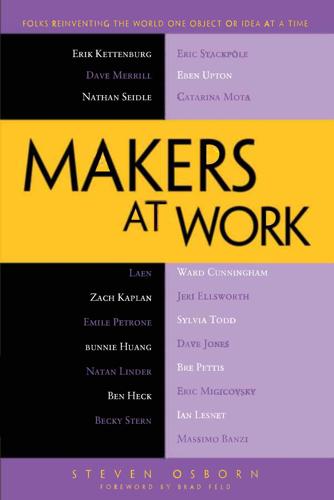
Makers at Work: Folks Reinventing the World One Object or Idea at a Time
by
Steven Osborn
Published 17 Sep 2013
Technologies that were reserved for extremely well-funded projects are now widely used. The wide availability of digital manufacturing tools is allowing us to explore, for the first time, the world of 3D printing as a global community and share our experiences and designs with the rest of the world. 3D printing is being used in almost every job field imaginable, from culinary masterpieces 3D-printed in chocolate to 3D-printed prosthetics and custom-fitted transplants for medical patients, these tools are changing the way the world itself is prototyped and designed. For individuals without the capital to buy these tools, maker spaces are popping up in droves all over the world to provide makers with the tools they need, as well as provide an environment of collaboration and information sharing.
…
You see companies like Nervous Systems6 that have jewelry lines. You see service bureaus like Shapeways making 3D printing available and different types of processes to basically print whatever. Then there’s the long tail. A lot of people have little uses for 3D printing, but there’s this big bright future where people talk about 3D printing as a replacement for manufacturing. There are companies doing that as well, and those processes are still very expensive, but they’re making commercial parts for airplanes with 3D printers. More and more car manufacturers are considering adding 3D printing to action-manufacturing processes. While I personally think that’s indeed going to happen in the future, I think we’re still quite far from the high-end, from that experience where you have just machines, that are part of a manufacturing process.
…
It opens the door for all sorts of other ways of thinking about how 3D printing can change any industry. Osborn: There are definitely some interesting medical use cases for 3D printing. I saw where they printed a woman’s entire lower jawbone. One thing you guys did recently that I thought was pretty interesting was open a retail space for 3D printers in New York. I was wondering what led you to do that, and how’s the response been? Pettis: My goal with that was to have a space where people could see, and touch, and feel, and hear, and smell 3D printing. In some ways, it’s sort of a community center. People who come to New York and are into 3D printing, it’s on their tourist list.
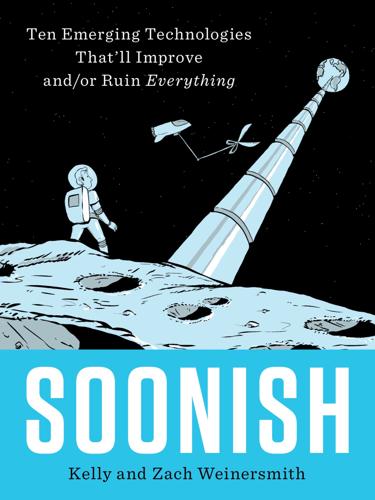
Soonish: Ten Emerging Technologies That'll Improve And/or Ruin Everything
by
Kelly Weinersmith
and
Zach Weinersmith
Published 16 Oct 2017
That means, here on Earth, we can try to figure out how a robot might build a house using only moondust. So instead of paying to blast tons of building supplies into space, we can build your cabin out of local materials. Nota Bene on 3D Printed Food As we researched this chapter, we got really into the geeky 3D printing movement. We’ve mostly stuck to the clearly useful stuff, but listen—when life presents you with a 3D printed cornbread octopus, by God you’ve got to tell the world. In their book Fabricated: The New World of 3D Printing, Dr. Hod Lipson and Melba Kurman suggest a perfected 3D food printer. Imagine a machine that can print you out a perfect muffin in less time than it’d take to make it from scratch.
…
Autonomously. Their approach blends the versatility of robotic arms with the power of large-scale 3D printing. And it’s on a truck. As a general method for doing things, 3D printing brings a lot of fringe benefits to construction; 3D printers could make complex structures that would be difficult or expensive to create by traditional means. This could mean cheaper, better-constructed houses, with more beautiful design elements (Gargoyles! Gargoyles for everyone!). For example, at least with some versions of 3D printing, you can vary the porosity of concrete, thus using less material and having structures that are heavy or light depending on need.
…
Some researchers think the answer is 3D printing. There are a lot of ways to 3D print, some of which we described in earlier chapters, but here’s the basic idea: By some means, you put down layer after layer of stuff onto a surface. By building up layers on top of each other, you eventually get a three-dimensional object. Generally speaking, this is less efficient than conventional methods of making a thing. For instance, if you’re making plastic chopsticks, it’s cheaper and quicker to inject plastic into a chopstick-shaped mold than to build chopsticks up with layers. But there are some advantages to 3D printing. For a traditional mold, anytime you want a different shape of chopstick, you have to get an expensive new mold created.
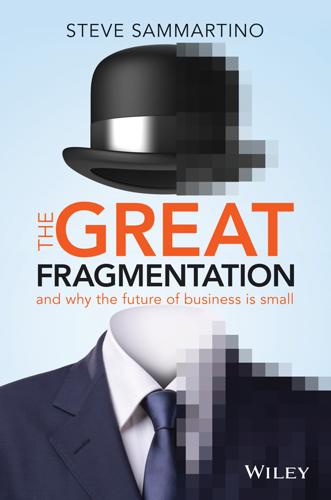
The Great Fragmentation: And Why the Future of All Business Is Small
by
Steve Sammartino
Published 25 Jun 2014
So what happens when the stuff we want can be made on demand at home? It’s hard to believe, but 3D printing will make this an everyday reality. What is fragmenting Retail is no longer just the end of the supply chain; it’s something every business and person can do now. What it means for business If you make, you must sell. The power lies with those who have a direct connection with their buyers or audience. CHAPTER 10 Bigger than the internet: 3D printing I’ve been mildly obsessed with 3D printing since I first learned about it. Also referred to as ‘additive manufacturing’ or ‘digital fabrication’, it’s a process where a three-dimensional, solid object is created by placing down successive layers of material fused together by laser (digital light processing) and a multitude of other methods that are evolving rapidly, almost daily.
…
They don’t have to wait for approval or permission. They just do it with open-source machines and software. In fact, there’s no way of knowing what someone has just created in their home as a 3D printing enthusiast. What’s important is what this list represents. At this early stage there’s a staggering scope of possibility for what can be made. From reviewing this it’s not silly to believe 3D printing could make anything. The processes used so far in 3D printing are not nearly as important as the concept that we can make things from digital instructions. We can even make things that make things. Everything — even technology, it turns out — has self-replicating seeds inside itself, just as nature does.
…
His oft-cited example was Henry Ford’s assembly line, which to this day has led to better products at a lower cost, in perpetuity. With 3D printing still largely on the tech-hacker fringes in terms of actual usage, the level of innovation is astounding. This non-exhaustive list provides a perspective of the potential impact of this technology and demonstrates how widely it is being embraced. Cars. Entire car bodies have been printed, both replicas and new models. The Urbee 2 is a vehicle for which more than 50 per cent was 3D printed and it can reach speeds of about one-hundred and ten kilometres per hour. Tools. Tools of every type, shape and mechanical movement have been made, all of which were printed in metals and even carbon composites stronger than most metals.

Come and Take It: The Gun Printer's Guide to Thinking Free
by
Cody Wilson
Published 10 Oct 2016
He believed the technology was and would be a great boon to American enterprise. So, 3D printing has been around for a while. But the consumer at large mostly started hearing about it only in the last several years. Why? A New York startup named Makerbot brought to market the first successful line of retail 3D printers in 2011. If the success of our printed pistol was not your introduction to the idea of 3D printing, it was most likely Makerbot in 2012 and 2013 that caught your attention: the company’s rise and disgraceful fall have been almost totally responsible for shaping the public’s perceptions and expectations of 3D printing. And here we are . . . I knew almost none of this when I began the work of Defense Distributed.
…
Names like Linux, Python, Apache, Perl, and perhaps even Bitcoin may not mean much to you, but you likely use devices or applications based upon these open-source softwares every day of your life. * * * I consider myself lucky to have been attending the University of Texas at Austin when we began the work that would lead to the 3D printed pistol. The university was at the forefront of developing 3D printing techniques in the 1980s, and in the years since I began the project, I’ve been regularly surprised by its academic and commercial contributions to the technologies I was exploring—not to mention the contributions of the state of Texas as a whole. Over the years I’ve picked through the old papers on the printing innovations, usually with an eye for the personalities of the early authors and industry players.
…
Chris’s friend looked at both of us then, his face flushed with the chill of true and unwelcome surprise. And I whispered it: “We are the heartworms of history.” * * * The eminent science-fiction writer Arthur C. Clarke’s Third Law states: “Any sufficiently advanced technology is indistinguishable from magic.” Although 3D printing may seem like magic, it came from very practical beginnings. A man named Chuck Hull first demonstrated “solid imaging” in the lab in 1984. He translated a digital design into a set of coordinates able to be translated to an ultraviolet beam aimed at a vat of liquid photopolymer. As the light traced lines upon the surface of this bath, the exposed lines cured and solidified.

Augmented: Life in the Smart Lane
by
Brett King
Published 5 May 2016
For example, replacement organs, such as kidneys and livers, could be developed by 2030. 3D Bioprinting As discussed in chapter 2, 3D printers have the potential for some incredible applications in the way we manufacture products, even at home, in the future. However, one specific application of 3D printing that holds huge promise in the field of medicine is bioprinting. Bioprinting in its simplest form is using a 3D printer to “print” an organ, bone or muscle tissue to replace damaged parts of your body. One of the more exciting applications is being applied to regenerative medicine to address the need for tissues and organs suitable for transplantation. 3D printing has already been used widely in facial reconstruction surgery. Figure 5.11: 3D-printed “bone” is commonly used in facial reconstruction surgery. (Credit: Osteofab) Compared with non-biological printing, 3D bioprinting involves additional complexities, such as the choice of materials, cell types, growth and differentiation factors, and technical challenges related to the sensitivities of living cells and tissue and vasculature construction.
…
Other applications include developing high-throughput 3D-bioprinted tissue models for research, drug discovery and toxicology. 3D printing has already been used in numerous medical procedures. For example, in 2012, physicians at the University of Michigan successfully utilised 3D printing to construct a synthetic trachea for three-month-old Kaiba Gionfriddo, who suffered from recurrent airway collapses.22 Other successes include printing bone to replace one patient’s jaw and part of the skull in another patient. As a developing industry, 3D printed body parts generated over US$500 million in revenue for companies globally in 2014, and that is expected to double by 2016.
…
Quite an achievement when a prosthetic might often sell for more than US$40,000. Figure 6.2: This Iron Man-themed prosthetic limb was 3D printed for around US$350. (Credit: Microsoft Collective Project) A 3D-printed bionic hand designed by prosthetics start-up Open Bionics was the recipient of the 2015 UK James Dyson Award for design engineering innovation. What makes the Open Bionics hand stand out is its design, which enables it to be cheaper and faster to produce than many of the prosthetics currently available for amputees. Taking just 40 hours to 3D print, the robotic hand is built from custom pieces designed to fit amputees’ limbs precisely, and uses electromyographic sensors, which detect muscle movement, to control the hand.By flexing their muscles, wearers can choose whether to open and close the hand or grip objects.

Exponential: How Accelerating Technology Is Leaving Us Behind and What to Do About It
by
Azeem Azhar
Published 6 Sep 2021
Biostars forum <https://www.biostars.org/p/42753/> [accessed 28 July 2020] and at ‘Next-Generation-Sequencing.v1.5.4 @albertvilella’ <https://docs.google.com/spreadsheets/u/0/d/1GMMfhyLK0-q8XkIo3YxlWaZA5vVMuhU1kg41g4xLkXc/edit#gid=1569422585> [accessed 28 July 2020]. 14 Michael Chui and others, ‘The Bio Revolution: Innovations Transforming Economies, Societies and Our Lives.’ (McKinsey Global Institute, 2020) 15 Conversations with the author, November 2018 and August 2020. See also India Block, ‘World’s Largest 3D-Printed Building Completes in Dubai’, Dezeen, 22 December 2019 <https://www.dezeen.com/2019/12/22/apis-cor-worlds-largest-3d-printed-building-dubai/> [accessed 1 August 2020]. 16 Christopher L. Benson, Giorgio Triulzi and Christopher L. Magee, ‘Is There a Moore’s Law for 3D Printing?’, 3D Printing and Additive Manufacturing, 5(1), March 2018, pp. 53–62 <https://doi.org/10.1089/3dp.2017.0041>. 17 Wohlers Associates, Wohlers Report 2020. 18 Richard Lipsey, Kenneth Carlaw and Clifford Bekar, Economic Transformations: General Purpose Technologies and Long-Term Economic Growth (Oxford University Press, 2006). 19 Lipsey et al., Economic Transformations, p. xvi. 20 James Bessen, Learning by Doing: The Real Connection between Innovation, Wages, and Wealth (New Haven: Yale University Press, 2015), p. 49. 21 Carlota Perez, Technological Revolutions and Financial Capital: The Dynamics of Bubbles and Golden Ages (Cheltenham: Edward Elgar, 2003). 22 ‘Internet Growth Statistics 1995 to 2021 – the Global Village Online’ <https://www.internetworldstats.com/emarketing.htm> 23 Steven Tweedie, ‘The World’s First Smartphone, Simon, Was Created 15 Years before the iPhone’, Business Insider, 14 June 2015 <https://www.businessinsider.com/worlds-first-smartphone-simon-launched-before-iphone-2015-6> [accessed 21 February 2021]. 24 Andrew Meola, ‘Rise of M-Commerce: Mobile Ecommerce Shopping Stats & Trends in 2021’, Business Insider, 30 December 2020 <https://www.businessinsider.com/mobile-commerce-shopping-trends-stats> [accessed 21 February 2021]. 25 T.
…
, the energyst, 12 April 2019 <https://theenergyst.com/evs-v2g-vehicle-to-grid-battery-storage-smartgrid/> [accessed 6 September 2020]. 12 Guste, ‘Moixa Secures £5M Investment to Drive Global Growth’, Moixa, 22 July 2020 <https://www.moixa.com/press-release/moixa-secures-5m-investment-to-drive-global-growth/> [accessed 6 September 2020]. 13 ‘What Smart Manufacturers Know About Bundling Products and Services’, Knowledge@Wharton, 30 September 2019 <https://knowledge.wharton.upenn.edu/article/what-smart-manufacturers-know-about-bundling-products-and-services/> [accessed 7 September 2020]. 14 Kif Leswing, ‘The $999 IPhone X Is Estimated to Include Less than $400 in Parts’, Business Insider, November 2017 <https://www.businessinsider.com/iphone-x-teardown-parts-cost-ihs-markit-2017-11> [accessed 7 September 2020]. 15 Kathy Chu and Ellen Emmerentze Jervell, ‘At Western Firms Like Adidas, Rise of the Machines Is Fueled by Higher Asia Wages’, Wall Street Journal, 9 June 2016 <https://www.wsj.com/articles/rise-of-the-machines-fueled-by-higher-asia-manufacturing-wages-1465457460> [accessed 14 October 2020]. 16 Marc Bain, ‘Adidas Is Shutting down the Robotic Factories That Were Supposed to Be Its Future’, Quartz, 11 November 2019 <https://qz.com/1746152/adidas-is-shutting-down-its-speedfactories-in-germany-and-the-us/> [accessed 14 October 2020]. 17 Eric Dustman, Kareem Elwakil and Miguel Smart, Metals 3D Printing: Closing the Cost Gap and Getting to Value (PricewaterhouseCoopers, 2019) <https://www.strategyand.pwc.com/gx/en/insights/2019/metals-3D-printing.html> [accessed 7 September 2020]. 18 Zoe Kleinman, ‘Coronavirus: Can We 3D-Print Our Way out of the PPE Shortage?’, BBC News, 9 April 2020 <https://www.bbc.co.uk/news/health-52201696> [accessed 14 October 2020]. 19 Pric Dustman et al., Metals 3D Printing. 20 Javier Blas and Jack Farchy, The World for Sale (London: Penguin Books, 2021), p. 220. 21 Blas and Farchy, The World for Sale, p. 221. 22 Atif Kubursi, ‘Oil Crash Explained: How Are Negative Oil Prices Even Possible?’
…
, BBC News, 9 April 2020 <https://www.bbc.co.uk/news/health-52201696> [accessed 14 October 2020]. 19 Pric Dustman et al., Metals 3D Printing. 20 Javier Blas and Jack Farchy, The World for Sale (London: Penguin Books, 2021), p. 220. 21 Blas and Farchy, The World for Sale, p. 221. 22 Atif Kubursi, ‘Oil Crash Explained: How Are Negative Oil Prices Even Possible?’, The Conversation, 20 April 2020 <https://theconversation.com/oil-crash-explained-how-are-negative-oil-prices-even-possible-136829>. 23 ‘3D Printing: A Threat to Global Trade’ <www.ingwb.com/insights/research/3d-printing-a-threat-to-global-trade> [accessed 28 December 2020]. 24 Nick Carey, ‘UPS, SAP team up for on-demand 3D printing network’, Reuters, 18 May 2016 <https://de.reuters.com/article/us-united-parcel-sap-se-3dprinting-IDUSKCN0Y90BR> [accessed 7 September 2020]. 25 T. X. Hannes, ‘Will Technological Convergence Reverse Globalization?’

Rise of the Robots: Technology and the Threat of a Jobless Future
by
Martin Ford
Published 4 May 2015
There would also be a multitude of free or open source designs—probably for nearly any conceivable product—available for download. The bottom line is that personal 3D printing would come to look much like the Internet: lots of free or inexpensive stuff for consumers, but far fewer opportunities for the vast majority of people to generate a significant income. This is not to say that 3D printing won’t be a transformative technology. The real action is likely to happen at industrial scale. Rather than displacing traditional manufacturing, 3D printing will be integrated with it. In fact, that’s already happening. The technology has made significant inroads in the aerospace industry, where it is often used to create lighter-weight components.
…
Tim Catts, “GE Turns to 3D Printers for Plane Parts,” Bloomberg Businessweek, November 27, 2013, http://www.businessweek.com/articles/2013–11–27/general-electric-turns-to-3d-printers-for-plane-parts. 4. Lucas Mearian, “The First 3D Printed Organ—a Liver—Is Expected in 2014,” ComputerWorld, December 26, 2013, http://www.computerworld.com/s/article/9244884/The_first_3D_printed_organ_a_liver_is_expected_in_2014?taxonomyId=128&pageNumber=2. 5. Hod Lipson and Melba Kurman, Fabricated: The New World of 3D Printing (New York, John Wiley & Sons, 2013). 6. Mark Hattersley, “The 3D Printer That Can Build a House in 24 Hours,” MSN Innovation, November 11, 2013, http://innovation.uk.msn.com/design/the-3d-printer-that-can-build-a-house-in-24-hours. 7.
…
To illustrate how a similar phenomenon is likely to unfold on a much broader front, let’s look in a bit more depth at two specific technologies that have the potential to loom large in the future: 3D printing and autonomous cars. Both are poised to have a significant impact within the next decade or so, and could eventually unleash a dramatic transformation in both the job market and the overall economy. 3D Printing Three-dimensional printing, also known as additive manufacturing, employs a computer-controlled print head that fabricates solid objects by repeatedly depositing thin layers of material. This layer-by-layer construction method enables 3D printers to easily create objects with curves and hollows that might be difficult, or even impossible, to produce using traditional manufacturing techniques.

Radical Technologies: The Design of Everyday Life
by
Adam Greenfield
Published 29 May 2017
Apart from pioneer Stratasys, which patented the most widely used depositional processes, and has never made any bones about the fact that it is a commercial, profit-seeking entity,28 it is interesting how much of the early innovation in 3D printing specifically was generated by groups of people who explicitly situated their work in the informational commons, including the RepRap project itself, MakerBot and the community around it, and the original Ultimaker. Just as RepRap eventually abandoned the project of unlimited self-replication, though, its direct descendants ultimately gave up on openness. Similarly, both MakerBot and Ultimaker reinvented themselves as closed ecosystems, alienating a significant proportion of their community in the process, including some of 3D printing’s earliest and most prominent developers.29 There is excellent reason to believe that this retrenchment will have strongly negative consequences for the future of digital fabrication.
…
As evangelical as they often can be, partisans of digital fabrication have done a relatively poor job of communicating what it might offer to anyone beyond those audiences already inclined to be enthused by it; the 3D printed nameplates, lasercut signs and similar tat often produced as proof of what can be done with these techniques certainly don’t help press the case. The 3D-printing kiosk that used to stand in South London’s Elephant and Castle Shopping Centre was an excellent example of this tendency: it stood for months, locked up and gathering dust, surrounded by busy stalls catering to the neighborhood’s Eastern European, Latin American and African immigrant communities, and offered nothing that any of the shoppers streaming past it might conceivably need.
…
Acquiring this sophistication will help us avoid the blunders well-intentioned thinkers often make, in offering recipes for the transition out of capitalism that are based on technologies they simply don’t understand very well. When Jeremy Rifkin argues, for example, that a “3D printing process embedded in an Internet of Things infrastructure means that virtually anyone in the world can [make] his or her own products for use or sharing, employing open-source software,” we may very well share his hope for the defeat of scarcity and the emergence of a planetary commons. But in proposing 3D printing, the internet of things and open-source software as the engines of this transition, we know he cannot possibly have reckoned with the contestations, the complexities and the outright vulnerability to capture that vex every single term in this equation.
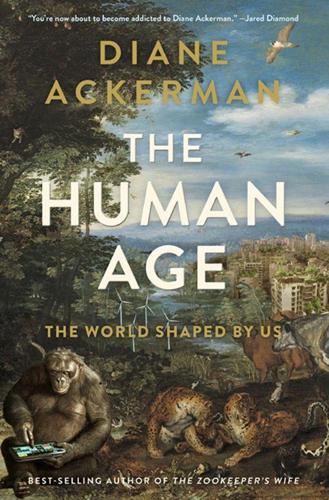
The Human Age: The World Shaped by Us
by
Diane Ackerman
Published 9 Sep 2014
Also, mass-produced items, whether clothing or electronics, require a predicament of cheap labor to add the final touches. In contrast, there’s “additive manufacturing,” also known as 3D printing, a new way of making objects in which a special printer, given the digital blueprint for a physical item, can produce it in three dimensions. Solidly, in precise detail, many times, and with minimal overhead. The stuff of Star Trek “replicators” or wish-granting genies. 3D printing doesn’t cut or remove anything. Following an electronic blueprint as if it were a musical score, a nozzle glides back and forth over a platform, depositing one microscopic drop after another in a molten fugue, layer upon layer until the desired object rises like a sphinx from the sands of disbelief.
…
With micrometer-scale precision, we can seal materials within materials, and weave them into stuff with bizarre new structural behaviors, like substances that expand laterally when you pull them longitudinally. A brave new world of objects. What is an object if you can grow it in your living room drop by drop or molten coil upon coil? How will we value it? Today, because 3D printing is still a novelty for many people, we value its products highly, in wonderment. But when cheap home 3D printers become commonplace (today’s cost anywhere from $400 to $10,000), and factory 3D printing replaces the assembly lines and warehouses, and even body parts and organs can be made to order, we’ll live in an even more improbable world, where some objects continue to exist as tangible things, as merchandise, but a great many will exist concretely but in nonmaterial form, in a cloud or in a cartridge of fluid or powder, the way e-books do, as quickly accessible potential.
…
Many companies won’t look the same, because they won’t need to hire scores of workers, buy raw materials, ship or stock or produce anything. Industry, as we know it, may end. Financial advisers, business magazines, and online investment sites such as the Motley Fool believe 3D printing companies will clean up big-time, because their overhead will be so much lower, and they’ll sell only the clever designs or raw materials. Not right away. Most people will probably still find it more convenient to buy ready-made things. But soon enough, in the next fifteen years, 3D printing will revolutionize life from manufacturing to art, and practical visionaries like Lipson feel certain it will usher in the next great cultural and psychological revolution.
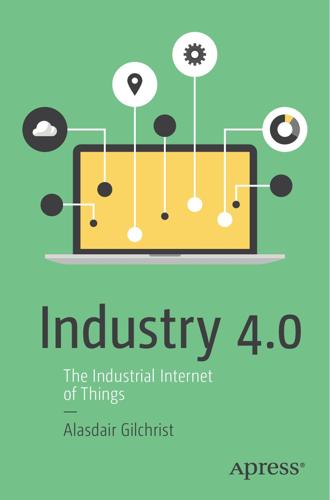
Industry 4.0: The Industrial Internet of Things
by
Alasdair Gilchrist
Published 27 Jun 2016
The applications in industry are vast as 3D printing lends itself to all sorts of rapid prototyping, architecting, and construction. 3D printing enables not just rapid modeling but one lot sized production of customized objects as only the base software template file needs changed. This is very attractive in manufacturing where previously to change a products design required weeks of work refitting production lines and reconfiguring machines. With 3D printing, lot sizes of one can be entertained profitably and cost effectively. It is important to differentiate between the media-hyped consumer market for 3D printing and the industrial reality.
…
This information lets the firefighter have a heads-up view of the entire building floor by floor and know instantly if anyone is in the building and, if so, in what rooms, as well as the surrounding environmental conditions. In short, only the boundaries of imagination and innovation of the developers and industry adopters of the technology limit the use-cases for AR when coupled with the Industrial Internet. 3D Printing Additive printing or what is more commonly known as 3D printing is a major technology that enables the financial reality of the IIoT across many industrial use-cases. 3D printing works by creating an image as a computer file of either an existing product or through a CAD design one thin layer at a time. It builds on each subsequent layer until a full copy of the subject or CAD image has been completed.
…
It is important to differentiate between the media-hyped consumer market for 3D printing and the industrial reality. Components created using 3D printing in industry are not models or gimmicks as they are used by NASA, and in the aviation industry in jet engines. Similarly, they are commonly utilized in cars, with at least one manufacturer making their entire vehicle via 3D printing. 3D printing goes beyond just manipulating polymers, ceramics, paper, and metal—it also can be used in health care. Additive manufacturing is used in prosthetics and medical components such as medical sensors and actuators implanted within the body, such as heart pace-makers for example. However, the latest research is being driven by bio-medical requirements such as creating 3D printed skin, and other body tissue, and perhaps soon even complete organs.

Machine, Platform, Crowd: Harnessing Our Digital Future
by
Andrew McAfee
and
Erik Brynjolfsson
Published 26 Jun 2017
It would take a while, since each layer was so thin, but making things this way would open up a huge range of possibilities. For one thing, complexity would be free, as 3D printing researcher Luana Iorio puts it. In other words, it would cost no more to make an extraordinarily complex part than a very simple one, since both are, at base, simply a bunch of very thin layers. An assembly of interlocking gears, for example, would be as easy to create as a single 3D-printed component. Innovators have also brought the techniques of 3D printing to making metal parts, which are built up by having a laser melt successive thin layers of powdered metal onto the structure below (which is itself made up previous layers).
…
A skeptic might ask at this point whether we want to generate innovations that keep flooding the world with more and more cheap plastic parts, stuffing our landfills and fouling our oceans with them. We see things differently. While we agree that overconsumption and inappropriate disposal of plastics are bad, we think that the advances in 3D printing are profoundly beneficial. Consider the case of the 3D-printed tumor model. Prior to the advent of 3D printing, surgeons simply had no realistic way to make an accurate representation of the mass of malignant tissue they were going after. They could not have afforded the dollars and time required to create a conventional mold, which makes economic sense only when you know you’re going to make many copies of a part.
…
Or you want to make a small set of parts, each one a bit different from the others? Conventional fabrication methods have been largely useless in these cases. 3D printing is ideal for them. The most profound benefit of 3D printing is probably that it makes experimentation and customization inexpensive. The path from idea or need to finished, useful part no longer has to include the time-consuming and expensive steps like mold making and other conventional manufacturing practices. Carl Bass, the former CEO of design and engineering software company Autodesk, sees 3D printing as only one part of a much larger story. As he told us, “I think additive manufacturing is a subset of what has really transformed manufacturing, which is the use of low-cost microprocessors to precisely control machinery.”

Frugal Innovation: How to Do Better With Less
by
Jaideep Prabhu Navi Radjou
Published 15 Feb 2015
For instance, the entry-level 3D printer from Replicator (“the Apple of 3D printing”) sells for $1,375, but several crowdfunded start-ups such as New Matter and M3D intend to mass-market 3D printers that sell for as little as $149. Autodesk, a leader in computer-aided design software, has launched a consumer-friendly open-source 3D printer and 3D printing software in an effort to democratise manufacturing. Shapeways, a global network of large-scale 3D printing factories, allows people who do not want to print objects at home to upload their designs to a website and have 3D-printed versions delivered. Lastly, consumers can now not only design and build industrial-quality products themselves, but also sell these online.
…
For instance, in May 2014, in an effort to make 3D printing accessible “to billions”, Autodesk, a design software provider, released Spark, an open-software platform that aims to make 3D printing simpler and more reliable. The same month, M3D, a start-up, raised a whopping $3.4 million on Kickstarter to produce a $300 super-easy-to-use 3D printer. One particularly impressive product of 3D printers is spare parts for fighter aircraft. In December 2013, BAE Systems, a British multinational defence and aerospace company, tested Tornado jets that had several 3D printed metal components in them. The company is now developing ready-made parts for four squadrons of Tornado GR4 aircraft.
…
Its Healthymagination programme, for example, is seeking new ways to fight breast cancer. The challenge received 500 proposals from 40 countries, from which 5 winners were each given $100,000 seed money, mentoring and access to GE’s R&D resources. GE also launched the 3D Printing Design Quest to design lighter, next-generation aircraft engine brackets that can be 3D-printed. The winner, Arie Kurniawan, an engineer from Salatiga, Indonesia, beat 699 other entries from 56 countries. Kurniawan’s bracket weighs 84% less than the original, but can withstand loads of 9,5001b or 4,310kg. Amazingly, Kurniawan had no aviation engineering experience, and it took him just a few weeks to create his ingenious solution.

Liquid: The Delightful and Dangerous Substances That Flow Through Our Lives
by
Mark Miodownik
Published 5 Sep 2018
Wasps use the same trick to make their nests, chewing wood fibres and mixing them with saliva to create paper houses for their larvae. Bees were using 3D printing to build their honeycombs long before humans happened upon the technique. Human 3D printing technology is now catching up with the bees and wasps. Plastics, for instance, can be squirted out of a printer, layer by layer, to create solid objects even more complex than honeycombs. Objects can even be 3D printed with moving parts, a technique being used in medicine to create prosthetics with functioning joints, all made in one piece, at low cost. 3D printing can also be used to print biological materials. In 2018 Chinese scientists conducted the first clinical trials to create replacement ears for children suffering from birth deformities.
…
In our research group at the Institute of Making, we are working on technologies that can help repair asphalt efficiently once the cracks have already got bigger: we’ve started 3D printing tar. The 3D printing process. A print head converts a solid to a liquid (often by heating), and squirts it out in a predetermined pattern in an x–y plane. Once cooled, this creates a single solid layer. Then the printing platform is moved down and another layer in a different pattern is printed. Printing hundreds of layers this way creates a whole object. 3D printing is a relatively new way of making and repairing objects. Thousands of years ago, printing was invented in China as a process of transferring ink on to a page via a wooden printing block.
…
The rest of the world caught on and innovated, giving us a world of books, newspapers and magazines – an information revolution. But all that is 2D printing. 3D printing takes the approach one stage further; instead of printing a thin, two-dimensional layer of liquid ink on to a page, 3D printing allows you to print many two-dimensional layers of liquid on top of one another, each one solidifying before the next is applied, ultimately constructing a 3D object. Of course, you don’t need to use ink to make a 3D print. You can use any material that can transform from a liquid into a solid. Just look at bees. This is exactly how bees make their extraordinary hexagonal honeycombs.
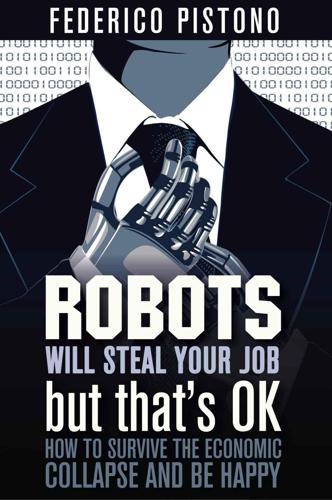
Robots Will Steal Your Job, But That's OK: How to Survive the Economic Collapse and Be Happy
by
Pistono, Federico
Published 14 Oct 2012
http://en.wikipedia.org/wiki/Replicator_(Star_Trek) 58 Will 3D Printing Change The World?, 2012. Forbes. http://www.forbes.com/sites/gcaptain/2012/03/06/will-3d-printing-change-the-world/print/ 59 Objet Connex 3D printers. http://www.ops-uk.com/3d-printers/objet-connex 60 iPhone 4’s Retina Display Explained, Chris Brandrick, 2010. PC World. http://www.pcworld.com/article/198201/iphone_4s_retina_display_explained.html 61 3D printing. http://www.explainingthefuture.com/3dprinting.html 62 A primer on 3D printing, Lisa Harouni, 2001. TEDSalon London Spring 2011. http://www.ted.com/talks/lisa_harouni_a_primer_on_3d_printing.html 63 3D-printed prosthetics offer amputees new lease on life, 2012.
…
Thingiverse has thousands of free designs that people can download, print, or improve upon,67 and The Pirate Bay recently announced a new section called “Physible”, CAD designs of physical objects, legal or not68. In a few years, most of us will all have a micrometre-precision 3D printer that prints multiple materials and colours in our house. Designs will be dead cheap, or they will cost nothing at all. Today 3D printing is little more than a hobby, but it can soon become a game changer for entire industries. Another advantage of 3D printing is that instead of conforming to sizes and shapes defined by the economies of scale, the object can adapt to you instead, moving from an economy of mass production to an economy of mass personalisation. How many jobs today rely on manufacturing?
…
http://www.reuters.com/video/2012/02/27/3d-printed-prosthetics-offer-amputees-ne?videoId=230878689 64 3D printer used to make bone-like material, 2011. Washington State University. http://wsutoday.wsu.edu/pages/publications.asp?Action=Detail&PublicationID=29002&TypeID=1 65 Making a bit of me, a machine that prints organs is coming to market, 2010. The Economist. http://www.economist.com/node/15543683 66 What drives us. Bespoke. http://www.bespokeinnovations.com/content/what-drives-us 67 Thingiverse. http://www.thingiverse.com 68 First Downloaded and 3D Printed Pirate Bay Ship Arrives, 2012. TorrentFreak.
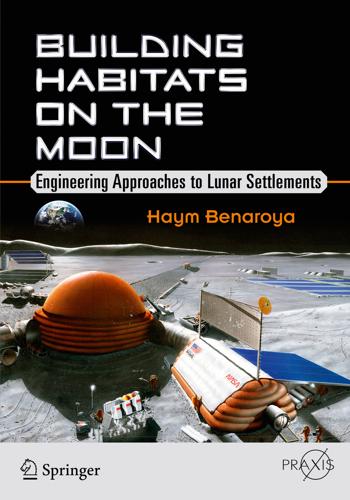
Building Habitats on the Moon: Engineering Approaches to Lunar Settlements
by
Haym Benaroya
Published 12 Jan 2018
Our Interview Lunar structures have been grouped into three categories: I – habitats brought from Earth, II – habitats with components from Earth, but also components made from lunar resources, and III – habitats primarily made from lunar resources; ISRU , perhaps 3D printed structures. The longer it takes for us to get back to the Moon to stay, the more certain technologies advance, for example 3D printing. Would you keep the above categories, or modify them in some way? I would keep them because in my opinion we are still pretty far out from even starting a lunar structures project. I suggest lots and lots of flexibility as this will change and evolve once a valid project is actually being planned for real, financed, and implemented.
…
Second- and third-generation structures will be increasingly based on 3D printing technologies utilizing in-situ resources. Ease of construction: Does the erection process of the structure need a shirt-sleeve environment? Simple modular connections result in less astronaut construction time and astronauts should not be construction workers. The ISS is a lesson. What kind of heavy construction equipment is needed? Heavy construction equipment is unlikely for the Moon, and the use of deployable /self-erecting structures can help to minimize EVA activities. Given that 3D printing technologies were not even on the radar screen several decades ago, it is not beyond reason to expect that in one or two decades – the current timeline for a manned return to the Moon – such technologies will offer completely autonomous, in-situ-created, structural fabrication in conjunction with advances in automation and robotics .
…
Lunar structures have been grouped into three categories: I – habitats brought from Earth, II – habitats with components from Earth, but also components made from lunar resources, and III – habitats primarily made from lunar resources, ISRU , perhaps 3D printed structures. The longer it takes for us to get back to the Moon to stay, the more certain technologies advance, for example 3D printing. Would you keep the above categories, or modify them in some way? It is awkward and unfortunate to begin your first question with a passive verb construction , Lunar structures have been grouped …, but who grouped them? You must recall that in the 1997 NASA Habitats and Surface Construction Roadmap – 20 years ago – Kriss Kennedy and I identified three classes of habitat: I.

Exponential Organizations: Why New Organizations Are Ten Times Better, Faster, and Cheaper Than Yours (And What to Do About It)
by
Salim Ismail
and
Yuri van Geest
Published 17 Oct 2014
Avatar is now three years old and will soon be available on the Oculus Rift. Almost perfect VR is around the corner, and will deliver experiential reality and transform retail, travel, and living and working environments. 3D printing Implications: 3D printing (and soon 4D) will not radically change big manufacturing, but it will enable an entirely new class of products that will displace traditional manufacturing. A Kinko’s model of local 3D printing of virtually anything will appear shortly and the technology will have a major impact on warehousing and transportation. U.S. manufacturing will be revitalized as recent offshoring trends reverse.
…
Consequentially, they represent a long tail of tens-of-trillions of dollars of emerging buying power. If they are not your direct customers, fear not; they are likely your customer’s customers. Second, this group—the “rising billion”—is a new entrepreneurial class powered with the latest generation of Internet-delivered technologies—everything from Google and Artificial Intelligence, to 3D printing and synthetic biology. As such, we will see an explosion in the rate of innovation, as millions of new innovators begin to experiment and upload their products and services and launch new businesses. If you think the rate of innovation has been fast in recent years, let me be among the first to tell you: you haven’t seen anything yet.
…
We use current computers to design faster computers, which then build faster computers, and so on. Finally, several key technologies today are now information-enabled and following the same trajectory. Those technologies include artificial intelligence (AI), robotics, biotech and bioinformatics, medicine, neuroscience, data science, 3D printing, nanotechnology and even aspects of energy. Never in human history have we seen so many technologies moving at such a pace. And now that we are information-enabling everything around us, the effects of the Kurzweil’s Law of Accelerating Returns are sure to be profound. What’s more, as these technologies intersect (e.g., using deep-learning AI algorithms to analyze cancer trials), the pace of innovation accelerates even further.
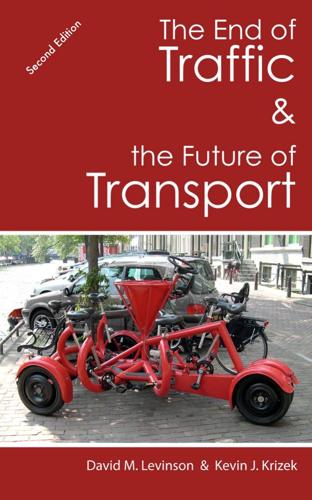
The End of Traffic and the Future of Transport: Second Edition
by
David Levinson
and
Kevin Krizek
Published 17 Aug 2015
Eventually (and not too far away) about 100% of this genre of product will be acquired online. 147 See e.g. teledildonics 148 One could also think of data nouns as bits, the smallest unit of information that can be stored or manipulated on a computer, where eight bits equals a byte. 149 Two examples of 3D printing of pizzas or other food are: http://www.cnn.com/2014/11/06/tech/innovation/foodini-machine-print-food/ and http://www.theverge.com/2014/1/24/5342180/watch-this-3d-printer-make-pizza-fit-for-astronauts 150 Some thoughts on how 3D printing will change the world, see: http://www.forbes.com/sites/gcaptain/2012/03/06/will-3d-printing-change-the-world/ 151 Thomas Birtchnell (2012, 11th of December), « 3D printing: towards a freightless future? », Mobile Lives Forum. Connnexion on 16th of December 2014, URL: http://en.forumviesmobiles.org/video/2012/12/11/3d-printing-towards-freightless-future-510 http://en.forumviesmobiles.org/video/2012/12/11/3d-printing-towards-freightless-future-510 152 Andy Greenberg (2014-05-14) How 3D Printed Guns Evolved into Serious Weapons in Just One Year.
…
Or think of how instead of meeting in person, people transmit moving pictures of themselves in the form of data over digital networks (e.g., Skyping with video calling, or broadcasting live with Meerkat or Periscope). While it is difficult to conceive of things moving over digital networks, the rise of 3D printing means data is being sent and instantly manufactured at physically remote locations. Ordering — and delivering — a pizza over the Internet, might be here sooner than later.149 Producing three dimensional solid objects from a digital file is clearly in its infancy. But three-dimensional (3D) printing is here.150 Alternative 3D printing scenarios are currently playing out that have different implications.151 As 3D printers improve more goods will be manufactured closer to their point of final consumption.
…
Connnexion on 16th of December 2014, URL: http://en.forumviesmobiles.org/video/2012/12/11/3d-printing-towards-freightless-future-510 http://en.forumviesmobiles.org/video/2012/12/11/3d-printing-towards-freightless-future-510 152 Andy Greenberg (2014-05-14) How 3D Printed Guns Evolved into Serious Weapons in Just One Year. Wired http://www.wired.com/2014/05/3-D-printed-guns/ 153 DARPA stands for Defense Advanced Research Projects Agency; it is a unit of the Department of Defense, as driverless cars have obvious military application. 154 Carnegie Mellon teams took second and third place. The Gray Insurance Company from New Orleans and Oshkosh Trucks also completed the course. 155 Markoff, John (2010) Google Cars Drive Themselves, in Traffic.

Future Politics: Living Together in a World Transformed by Tech
by
Jamie Susskind
Published 3 Sep 2018
Wallach, Dangerous Master, 59; Rick Kelly, ‘The Next Battle for Internet Freedom Could Be Over 3D Printing’, TechCrunch, 26 August 2012 <https://techcrunch.com/2012/08/26/the-nextbattle-for-internet-freedom-could-be-over-3d-printing/> (accessed 30 November 2017). 107. Jaron Lanier, Who Owns the Future? (London: Allen Lane, 2014), 79. 108. Wallach, Dangerous Master, 59. 109. Stuart Dredge, ‘30 Things Being 3D Printed Right Now (and None of them are Guns)’, The Guardian, 29 January 2014 <https://www. theguardian.com/technology/2014/jan/29/3d-printing-limbscars-selfies> (accessed 30 November 2017). 110. Jerome Groopman, ‘Print Thyself ’, New Yorker, 24 November 2014 <https://www.newyorker.com/magazine/2014/11/24/print- thyself> (accessed 30 November 2017). 111.
…
Printing splints for broken OUP CORRECTED PROOF – FINAL, 28/05/18, SPi РЕЛИЗ ПОДГОТОВИЛА ГРУППА "What's News" VK.COM/WSNWS Increasingly Integrated Technology 57 limbs is now relatively common,108 and customized replacement tracheae (windpipes) can now be printed in fifteen minutes.109 Surgeons have printed stents, prosthetics, and even bespoke replacement segments of human skull.110 Researchers at Cornell University have printed a human ear.111 Human kidneys, livers, and other organs, as well as blood vessels, are in development.112 A 3D-printed exoskeleton embedded with bionic technology has restored mobility to people unable to walk.113 Outside medicine, 3D printers have been used to make full-sized replica motorbikes,114 bikinis,115 aeroplane parts,116 entire houses,117 synthetic chemical compounds (i.e. drugs),118 and replicas of sixteenthcentury sculptures.119 Food is an area of growth, with 3D-printed chocolate, candy, pizza, ravioli, and chickpea nuggets all ‘on the menu’.120 Eventually, it is predicted, a plethora of materials will be used as ingredients for 3D-printing, including plastics, a luminium, ceramic, stainless steel, and advanced alloys.
…
Put another way, it could store the entire contents of the US Library of Congress in a cube measuring 0.1 mm each way.105 Another constitutive technology is 3D printing, also known as additive manufacturing. It enables us to print physical things from digital designs. Some think it could herald an era of ‘desktop manufacturing’ in which many people have 3D printers in their home or office and can ‘print’ a wide range of objects.106 Or municipal 3D printers could allow people to print what they need using opensource online digital templates.107 So far, some of the most useful 3D-printed objects have been in medicine. Printing splints for broken OUP CORRECTED PROOF – FINAL, 28/05/18, SPi РЕЛИЗ ПОДГОТОВИЛА ГРУППА "What's News" VK.COM/WSNWS Increasingly Integrated Technology 57 limbs is now relatively common,108 and customized replacement tracheae (windpipes) can now be printed in fifteen minutes.109 Surgeons have printed stents, prosthetics, and even bespoke replacement segments of human skull.110 Researchers at Cornell University have printed a human ear.111 Human kidneys, livers, and other organs, as well as blood vessels, are in development.112 A 3D-printed exoskeleton embedded with bionic technology has restored mobility to people unable to walk.113 Outside medicine, 3D printers have been used to make full-sized replica motorbikes,114 bikinis,115 aeroplane parts,116 entire houses,117 synthetic chemical compounds (i.e. drugs),118 and replicas of sixteenthcentury sculptures.119 Food is an area of growth, with 3D-printed chocolate, candy, pizza, ravioli, and chickpea nuggets all ‘on the menu’.120 Eventually, it is predicted, a plethora of materials will be used as ingredients for 3D-printing, including plastics, a luminium, ceramic, stainless steel, and advanced alloys.

Free Money for All: A Basic Income Guarantee Solution for the Twenty-First Century
by
Mark Walker
Published 29 Nov 2015
Wittbrodt et al., “Life-Cycle Economic Analysis of Distributed Manufacturing with Open-Source 3-D Printers,” Mechatronics 23, 6 (2013): 713–726. 28. Ibid. 29. Kira, “Exclusive: WinSun China Builds World’s First 3D Printed Villa and Tallest 3D Printed Apartment Building,” www.3ders.org, January 18, 2015, http://www.3ders.org/articles/20150118-winsun-builds-world-first-3d-printed-villa-and-tallest-3d-printed-building-in-china.html. 30. Megan Gannon, News Gannor, “3D Printer Could Transform Moon Dirt Into Lunar Base,” Space.com, accessed May 18, 2015, http:// www.space.com/18694-moon-dirt-3d-printing-lunar-base.html. NOTES 233 31. “The owl of Minerva takes its flight only when the shades of night are gathering,” Georg Wilhelm Friedrich Hegel, Philosophy of Right (London: George Bell and Sons, 1896). 32.
…
Accessed May 11, 2015. http://www.gao.gov/key_issues/tax_expenditures/ issue_summary. Khosla, Vinod. “Technology Will Replace 80% of What Doctors Do.” CNN, 2102. http://tech.fortune.cnn.com/2012/12/04/technology-doctorskhosla/. Kira. “Exclusive: WinSun China Builds World’s First 3D Printed Villa and Tallest 3D Printed Apartment Building.” www.3ders.org, January 18, 2015. http://www.3ders.org/articles/20150118-winsun-builds-worldfirst-3d-printed-villa-and-tallest-3d-printed-building-in-china.html. Krueger, Alan B., and David A. Schkade. “The Reliability of Subjective WellBeing Measures.” Journal of Public Economics 92, 8 (2008): 1833–45. Krugman, Paul. “Degrees and Dollars.”
…
“USDA Economic Research Service—Detail,” accessed May 18, 2015, http://www.ers.usda.gov/data-products/chart-gallery/detail. aspx?chartId=40094&ref=collection&embed=True. 33. Drexler, Nanosystems. 34. Andy Greenberg, “How 3-D Printed Guns Evolved Into Serious Weapons in Just One Year,” WIRED, May 15, 2014, http://www. wired.com/2014/05/3d-printed-guns/. 9 Concluding Unscientific Postscript 1. For some interesting thoughts on the political feasibility in the UK of a BIG at present, see Donald Hirsch, “Could a ‘Citizen’s Income’ Work?” (Joseph Rowntree Foundation, 2015), http://www.jrf.org. uk/sites/files/jrf/citizens-income-full.pdf. 2.

Unknown Market Wizards: The Best Traders You've Never Heard Of
by
Jack D. Schwager
Published 2 Nov 2020
If I don’t like the product, I won’t trade the company. Can you give me an example? A few years ago, I started hearing about 3D printing, so I spent $10,000 and bought four 3D printers. I taught myself CAD so that I could print out things that I wanted. I printed out pegs for a turtle house I designed. [Neumann has a large pet turtle that roams (ever so slowly) his backyard.] I wanted to know which 3D printer was the best and why. I not only listened to shareholder calls, but I attended 3D printing conferences. Learning enough about 3D printing to understand what these companies were doing and being surrounded by 3D printers helped me get positioned in these stocks before they took off.
…
There was lots of talk about 3D printing stocks in the chat rooms and CNBC. Once everyone is talking about it, I no longer have an advantage. By that point, if I am not already out, I want to be looking for a place to get out. Did you wait for the market to break down, or did you just get out? Analogous to the downtrend line that I draw to help me decide where to get into stocks, I draw an uptrend line to help me get out. When the sector leaders broke their uptrend lines, even though some of the smaller stocks held on, I started getting out of everything. One other thing I should mention is that the 3D printing experience led me into what turned out to be my most profitable trade ever.
…
I started buying the company as soon as I heard about it, which was about two months after they were listed on the OTC. The market cap at the time was probably only about $40 million. As I was making money in the 3D printing stocks, literally, every day, I would buy more Organovo stock, as my conviction level grew. I compare trading to a puzzle that needs to be filled in. The number of pieces in the puzzle were growing—other 3D printing stocks were moving higher, which was a big part of the puzzle for me, and volume in the stock was rising. I visited the CEO, who was also the founder, and I could see his sheer enthusiasm about the company. I met the original angel investor. I got to see their 3D bioprinter in action.
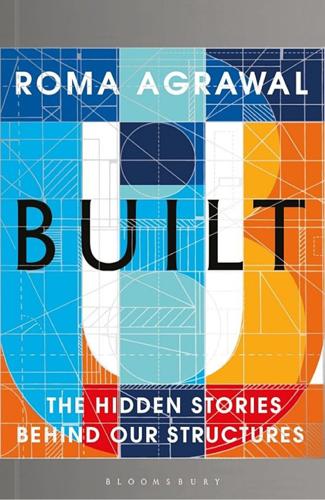
Built: The Hidden Stories Behind Our Structures
by
Roma Agrawal
Published 8 Feb 2018
I love the fact that, as well as working with traditional materials in a futuristic way – from geometric concrete blocks with irregular perforations to small gorgeously patterned hexagonal clay tiles for use on facades – they are also experimenting with waste materials, including those from the local wine industry. Some of their designs are self-supporting and don’t require any additional structure. It got me to thinking about how 3D printing, along with exciting new combinations of materials, could lead to a future where we print these pieces and then assemble our own homes. And 3D printing is not only being used on a modular scale – in fact, the world’s first 3D-printed footbridge was opened in Madrid in December 2016. At 12m long, it was analysed to find out exactly where the forces were being channelled; material was then deposited only in those sections – meaning minimal material, less waste and a lighter end product.
…
Human ingenuity is boundless; we will always aspire to manufacture more, to live better, to solve the next problem – and then the next. Engineering has created, in the most literal way, the fabric of our lives; it has shaped the spaces in which we live, work and exist. And it’ll shape our future, too. Already, I can see certain trends in engineering – irregular geometry, technology such as robotics and 3D printing, a quest for more sustainability, the merging of different disciplines (such as in biomedical engineering), a mimicking of Nature – that will once again change the way our landscape looks and feels, and the ways in which we inhabit the planet. Even if some of these seem the stuff of science fiction at the moment.
…
It completely changes the aesthetics of structures: architects and engineers need to catch up, as do the logistics and procurement of construction. But they will, and I bet you that when they do, I won’t be the only one caught stroking concrete in public. Talking about stroking materials: at the University of California, Berkeley, I once got my hands on some 3D printed modules (which ranged in size from my palm to a dinner plate) that could be assembled to make small installations, walls, facades and shelters. The modules were in a range of colours, and when I asked why I was gobsmacked by the answer. The white ones were salt. The black ones, recycled rubber tyres.

The Economic Singularity: Artificial Intelligence and the Death of Capitalism
by
Calum Chace
Published 17 Jul 2016
Many large factories and warehouses are dark: no light is required because no humans work there. People are becoming a rarity in smaller sites too. 3D printing has advanced less quickly than many expected, as it remained more expensive than mass production. But it is common in niche applications, like urgently required motor parts. 3. Agriculture. Farmers are moving heavily into leisure services, as their families and staff are losing their roles to robots. 4. Retail. Online shopping reaches 75% of all retail purchases, with a small but growing number of items being 3D printed domestically or in neighbourhood facilities, often with an element of customisation by the consumer.
…
Large numbers of dependent businesses (and jobs) are disappearing too, including repair shops and insurance brokers. 2. Manufacturing. Almost all factories and warehouses are dark. 3D printing is beginning to look competitive with some forms of mass production. 3. Agriculture. Robots do most farm work. Some countries have large communally-owned agricultural processing concerns which send out meal ingredients on drones in a service described as Netflix for food. 4. Retail. Most items are now bought online, and around half of all products sold at retail are 3D printed. Retail outlets on High Streets and city centres are mostly experiential rather than transactional, and mostly staffed by AIs and robots. 5.
…
Many jobs involving manual dexterity or the ability to traverse un-mapped territory are currently hard to automate. But as we will see in the next section, that is changing fast. Tipping points and exponentials New technologies sometimes lurk for years or even decades before they are widely adopted. 3D printing (also known as additive manufacturing[cxxxi]) has been around since the early 1980s but is only now coming to general attention. Fax machines, surprisingly, were first patented in 1843, some 33 years before the invention of the telephone.[cxxxii] Sometimes the delay happens because there is at first no obvious application for the inventions or discoveries.

12 Bytes: How We Got Here. Where We Might Go Next
by
Jeanette Winterson
Published 15 Mar 2021
In the November 1950 issue of the US Astounding Science Fiction magazine, there’s a story called ‘Tools of the Trade’ that imagines a ‘molecular spray’. At least that’s the reference you will read if you search for it – but there’s a much earlier one: the creation story in the Book of Genesis. 3D printing involves making a solid out of a digital image. God says, ‘Let us make man in our own image,’ and proceeds to do it with a molecular mixture of dust and the breath of life. Sounds like 3D printing to me. * * * But we may not need all those printed parts to keep our bodies in perfect working order. * * * Ray Kurzweil is certain that computing power will eventually allow us to scan and upload our brains.
…
To make a house, the 3D printer needs to be the size of a garage. The panels can be made overnight, while the workforce sleeps. Yes, it is like a fairy tale. In the morning, the construction panels are ready for assembly. In Mexico, a whole village of 3D-printed houses is being aimed at poor people living on $3 a day. These aren’t slums. They are insulated, water-conserving, decent homes. They are environmentally friendly. 3D printing doesn’t use hugely polluting concrete blocks. We can solve our housing crisis with the help of this computer tech. * * * We are solving the deepest mysteries of the human organism too. In 2020, it was announced that IBM’s supercomputer, Blue Gene, had cracked one of the most intractable problems in biology: protein folds.
…
When we consider that the earth is about 4.5 billion years old, and that the oldest Homo sapiens fossil, discovered in Morocco in 2017, is 300,000 years, then what has happened in the last 250 years is time on a tiny scale – my 1780s house in London has lived that long. Not the next 250 years but the next 25 years will take us into a world where intelligent machines and non-embodied AI are as much a part of everyday life as humans are. Many of the separate strings we are developing now – the Internet of Things, blockchain, genomics, 3D printing, VR, smart homes, smart fabrics, smart implants, driverless cars, voice-activated AI assistants – will work together. Google calls it ambient computing: it’s all around you. It’s inside you. This future isn’t about tools or operating systems; the future is about co-operating systems. The technology is moving fast.

Duty of Care: One NHS Doctor's Story of the Covid-19 Crisis
by
Dr Dominic Pimenta
Published 2 Sep 2020
It’s a lot to learn and I find it hard to take it in, while also trying to spend some time with the kids. By mid-morning, I have a call with a 3D-printing professional, Dr Nate Petre, to discuss the manufacturing of reusable PPE, a novel idea. We set up a Zoom call and Nate pops into view; with his soft American accent and raffish flop of black hair, Nate is a real character, full of energy and enthusiasm. He is also oddly exactly qualified for responding to a pandemic; he has just written a PhD thesis on disseminated distributive manufacturing in a crisis, and previously worked for NASA, 3D-printing surfboards in Jamaica. He’s calling me from Makerversity, a consortium of “makers” – engineers, designers and inventors, based in the historic Somerset House in London.
…
Michelle messages me – she’s sceptical that industry can supply the volumes we will need, but it gets me to wondering what else we could be doing. Maybe we could make things? Ehsan brought a 3D printer home a few months ago, and I’ve been desperate to play with it. The idea of a future technology like this, capable of printing anything in an emergency, seems wacky and wonderful. I’ve seen some US companies already making 3D-printed respirators and snorkel mask conduits to create DIY masks. I wonder if anyone is doing the same in the UK. I tweet asking for some help. More good news comes during the day: GoFundMe are donating £5,000 to us to cover their platform costs, which they can’t waive, and the childcare co-op has already matched 200 families to childcare.
…
I stretch out the morning with one more meeting; I have been connecting all the PPE groups together for a regular video call and have been helping to combine their logistics and procurement expertise. It’s a really satisfying process, with a Zoom gallery that seems to double in size every day. Between Paul, Michelle and I, we are connecting engineers, designers, 3D printers, volunteers, other doctors – everyone wants to work together. We plan to build a 3D print farm in London, which Nate is working on, and potentially another near Manchester. These hubs need a name, though. Nate knows I like acronyms and suggests: Sustainable Hubs for Innovative Emergent Local Development (SHIELD). Dilsan is less than pleased that I’ve started a whole other organization.
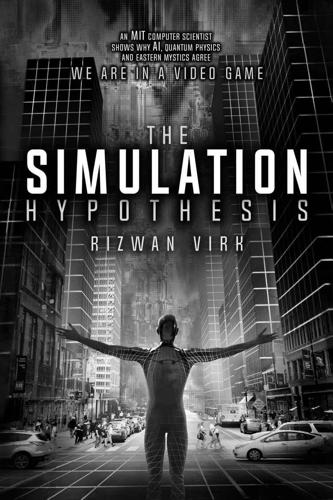
The Simulation Hypothesis
by
Rizwan Virk
Published 31 Mar 2019
The two technologies that I would like to present in the next stage, Stage 6, Real-World Rendering, are light-field display and 3D printing, both of which happen without computer screens. Light-field display is a way to render an object in the real world by analyzing how that object affects and reflects light. By simulating how light bounces off an object, it is possible to create a holograph-like projection of the object that appears real in the physical world without a screen and, eventually, without any glasses. 3D printing is a field that has taken off in the last decade. It shows us that in the same way that a rendering engine transforms information into pixels on a computer screen, and a printer converts pixels on the screen to dots on paper, the physical world also can have “rendering engines” that transform information about an object into a physical object consisting of physical pixels.
…
Science Fiction—How the Simulation Hypothesis Went Mainstream Quantum Physics and the Idea of a “Subjective Reality” Eastern Mysticism and the Western Afterlife Virtual Reality, Artificial Intelligence, and Simulated Consciousness Simulations, Computation, and Chaos The Great Simulation—Our Shared Video Game The Simulation Hypothesis Uses Information to Explain the Unexplainable Part I: How to Build the Matrix: The Computer Science 23 Stages 0 to 3: From Pong to MMORPGs 24 The Road to the Simulation Point The Modern Stages of Video Game Technology Stage 0: Text Adventures and the “Game World” (1970s to mid-1980s) Stage 1: Early Graphical Arcade and Console Games (1970s-1980s) Stage 2: Graphical Adventure/RPG Games (1980s-1990s) Stage 3: 3D Rendered MMORPGs and Virtual Worlds (1990s-Today) Where We Have Arrived on the Road Stages 4 to 8: From Virtual Reality to Mind Interfaces 53 Stage 4: Immersion Using Virtual Reality Stage 5: Photorealistic Augmented and Mixed Reality (AR, MR) Stage 6: Real-World Rendering: Light-Field Display and 3D Printing Stage 7: Mind Interfaces Stage 8: Implanted Memories Stages 9 to 10: Artificial Intelligence and Downloadable Consciousness 81 Stage 9: Artificial Intelligence and NPCs The History and Rise of AI Reaching Stage 9 From HAL to Data—Portrayals of Artificial Consciousness The Ethics of AI and Its Uses Stage 10: Downloadable Consciousness and Digital Immortality Altered Carbon and Downloading Consciousness The Upshot: Consciousness as Information Stage 11: The Simulation Point, Ancestor Simulations and Beyond 106 Stage 11: Reaching the Simulation Point What are Ancestor Simulations?
…
As with other graphics before, both of these can be improved via optimization. When they are, our underlying theme in this book that the physical world is comprised of information (the 3D models of the objects) and processing of that information (the rendering of these objects), will be validated. Stage 6: Real-World Rendering: Light-Field Display and 3D Printing Of course, today’s VR relies on VR glasses and AR relies on AR glasses, but once photorealism has been achieved inside these glasses, we move to the next stage: the promise of being able to render these objects in the physical world without glasses. As before, we will need new optimized rendering techniques and new software, but also new ideas about what constitutes a projector and what constitutes a screen.
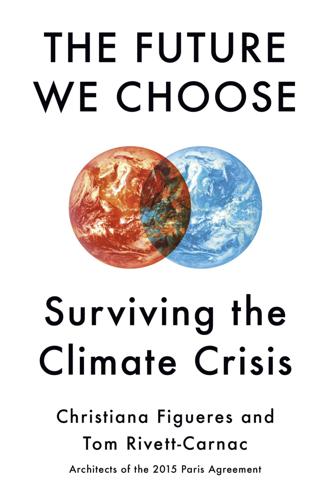
The Future We Choose: Surviving the Climate Crisis
by
Christiana Figueres
and
Tom Rivett-Carnac
Published 25 Feb 2020
Rood, “What Would Happen to the Climate If We Stopped Emitting Greenhouse Gases Today?” The Conversation, December 11, 2014. http://theconversation.com/what-would-happen-to-the-climate-if-we-stopped-emitting-greenhouse-gases-today-35011. 28. The 3D-printed version is already building houses at speed. See Adele Peters, “This House Can Be 3D-Printed for $4,000,” Fast Company, March 12, 2018, https://www.fastcompany.com/40538464/this-house-can-be-3d-printed-for-4000. 4. WHO WE CHOOSE TO BE 1. Joanna Macy and Chris Johnstone, Active Hope: How to Face the Mess We’re in Without Going Crazy (San Francisco: New World Library, 2012), 32. 5.
…
United Nations Department of Economic and Social Affairs, “68% of the World Population Projected to Live in Urban Areas by 2050, Says UN,” May 16, 2018, https://www.un.org/development/desa/en/news/population/2018-revision-of-world-urbanization-prospects.html. 22. David Dudley, “The Guy from Lyft Is Coming for Your Car,” CityLab, September 19, 2016, https://www.citylab.com/transportation/2016/09/the-guy-from-lyft-is-coming-for-your-car/500600/. 23. Annie Rosenthal, “How 3D Printing Could Revolutionize the Future of Development,” Medium, May 1, 2018, https://medium.com/@plus_socialgood/how-3d-printing-could-revolutionize-the-future-of-development-54a270d6186d; Elizabeth Royte, “What Lies Ahead for 3-D Printing?” Smithsonian, May 2013, https://www.smithsonianmag.com/science-nature/what-lies-ahead-for-3-d-printing-37498558/. 24.
…
Technology and business sectors stepped up, too, seizing the opportunity of government contracts to provide large-scale solutions for distributing food and providing shelter for the newly displaced. One company invented a giant robot that could autonomously build a four-person dwelling within days.28 Automation and 3D printing have made it possible to quickly and affordably construct high-quality housing for refugees. The private sector has innovated with water transportation technology and sanitation solutions. Fewer tent cities and housing shortages have led to less cholera. Everyone understands that we are all in this together.

Age of Discovery: Navigating the Risks and Rewards of Our New Renaissance
by
Ian Goldin
and
Chris Kutarna
Published 23 May 2016
All this feels like old news when set against the headlines since the turn of the new millennium: 9/11; devastating tsunamis and hurricanes; a global financial crisis that struck dumb the world’s highest-paid brains; a nuclear meltdown in hyper-safe Japan; suicide bombings in the heart of Paris, City of Love; riots over inequality—and happier events like the explosion of mobile and social media, cracking the human genome, the advent of 3D printing, the breaking of long-standing taboos such as gay marriage, the detection of gravitational waves and the discovery of Earth-like planets orbiting nearby stars. It seems every day we wake up to a new shock. And shock itself is the most compelling evidence that this age is very different, because it’s data that comes from within.
…
Print gave rise to the novel, the essay and the pamphlet; digitization has given rise to blogs, video channels, mashups, tweets and Pinterest boards, and an endless variety of virtual goods like apps and eBooks. In its first decade the Internet’s usefulness consisted chiefly of disseminating information quickly and cheaply. Now (enabled by the spread of broadband and mobile) it invites users into content collaborations (like Quora for facts, GitHub for software coding or Thingiverse for 3D print designs), curated opinion portals (such as The Huffington Post or Project Syndicate), or science projects like the Open Tree of Life. All these new forms share one common characteristic: they involve a switch from audience to participant—from consumer to producer and distributor of content. Finally, we are building a new layer of group intelligence.
…
These platforms have made viable: global niche markets for everything from bacon-flavored soap to Japanese Zen garden designers; micro-scale transaction models like micro-lending, micro-payments and micro-work; high-frequency trading on Wall Street; and global vacancy searches for job seekers. The arrival of 3D printing means that even manufacturing is becoming a pay-per-use service. Across a growing range of products, the expensive, customized molds and dies needed to form plastics and shape steel can be replaced by cheap digital blueprints. A robot can then assemble the physical version, one layer at a time, when and where it is wanted.

The Internet Is Not What You Think It Is: A History, a Philosophy, a Warning
by
Justin E. H. Smith
Published 22 Mar 2022
One of the most surprising lessons of Lovelace’s and Menabrea’s reflections on computing is that they not only deepen chronologically, but also reverse the chronological and conceptual order of what we often take to be much more recent developments in computer science. We typically suppose, namely, that what is erroneously called “3D printing,” or what is somewhat less erroneously called “the internet of things”—in short, wherever we have an information-processing machine directing its information in a way that brings about a change in the physical world, a plastic gun appearing from a mold, say, or a stove caused from a distance to commence its self-cleaning—is only the very latest development in a much longer history of computer science. 3D printing is thought to come after paper printing; the internet of things is supposed to follow the internet of screens.
…
We find, much more, that the history of looms and the history of computers is at certain moments literally one and the same history, as we shall now see.5 Algebraic Weaving In 1808, the French inventor Joseph Marie Jacquard introduced to the world his automated loom, capable of transferring a design onto silk that had been “programmed” into a sequence of punched cards.6 At first glance it might not seem that the punched-card weaving machine deserves a place in the history of computer science, alongside other technologies more narrowly focused on data processing rather than on the manufacture of a product. Yet consider: today some of the most remarkable innovations in computing are taking place in 3D printing and in the development of the so-called internet of things, or of physical objects networked together by sensors and software, “smart homes,” smart energy grids, remote health monitoring, shipping, and so on, all of which trace their origins back at least as much to the manufacturing machines of the industrial era as they do to the reckoning machines and analytical engines of the same period.
…
We typically suppose, namely, that what is erroneously called “3D printing,” or what is somewhat less erroneously called “the internet of things”—in short, wherever we have an information-processing machine directing its information in a way that brings about a change in the physical world, a plastic gun appearing from a mold, say, or a stove caused from a distance to commence its self-cleaning—is only the very latest development in a much longer history of computer science. 3D printing is thought to come after paper printing; the internet of things is supposed to follow the internet of screens. In fact, however, as we have been seeing, a prime candidate for the distinction of “first computer” had as its sole purpose what we may rightly call the 3D printing of brocaded stuffs. The dream of automata that transform the world is at least as old as the dream of automata that simulate the world. In the early nineteenth century an automaton of the former sort showed the way forward for automata of the latter sort. Woven fabrics have always been a powerful metaphor both for the order of nature and for our own efforts to simulate or reproduce that order in symbolic systems.

The Truth Machine: The Blockchain and the Future of Everything
by
Paul Vigna
and
Michael J. Casey
Published 27 Feb 2018
But for mission-critical products like these, there’s also a risk, one that’s put into context by James Regenor, director of the additive manufacturing and innovation unit at precision parts manufacturer Moog, Inc.: “How can the maintenance crew on a U.S. aircraft carrier have absolute confidence that the software file they downloaded to 3D-print a new part for a fighter jet hasn’t been hacked by a foreign adversary?” To tackle this problem, Regenor’s team at Moog has launched a service it calls Veripart, which uses blockchain technology to, among other things, verify the software design and upgrading work performed by different providers of 3D-printed products along a supply chain. It plans to incorporate a host of features that, among other things, will protect intellectual property and make it more flexible and dynamic as an asset.
…
For many of the new technologies that innovators are rolling out today, designers are thinking about how blockchain concepts will be part of the general enabling framework: • Internet of Things solutions will require a decentralized system for machine-to-machine transactions; • Virtual reality content creation, by which future imaginary worlds will be collaboratively produced by writers and coders, could use a blockchain system for divvying up royalties via smart contracts; • Artificial intelligence and Big Data systems will need a way to assure that the data they are receiving from multiple, unknown sources has not been corrupted; • “Industry 4.0” systems for smart manufacturing, 3D printing, and flexible, collaborative supply chains need a decentralized system for tracking each supplier’s work processes and inputs. In short, the blockchains may provide the architecture framework that makes possible the so-called Fourth Industrial Revolution that brings “bits and atoms” together and thrives off massive amounts of processed, global information.
…
Chipotle, for example, could see in real time whether a properly credentialed person in a beef facility is carrying out appropriate sterilization and disinfection procedures. This kind of provable, transparent credentialing will be especially important for what’s called additive manufacturing. That technology, the industrial version of 3D printing, is central to the dynamic, on-demand production model of the so-called Industry 4.0 movement, a phrase that describes a manufacturing sector that can respond in rapid time to changing consumer and other demands. 3D printers are already producing parts that are lighter than traditionally built parts, are much stronger in design, and are more readily produced on demand for machines as sophisticated as NASA rockets and Air Force fighters.
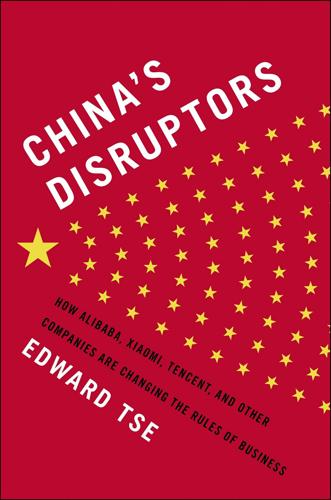
China's Disruptors: How Alibaba, Xiaomi, Tencent, and Other Companies Are Changing the Rules of Business
by
Edward Tse
Published 13 Jul 2015
Perhaps its most impressive development to date is a printer that builds titanium alloy structures, including the landing gear, main force-bearing frames, and windshield frames for a narrow-body airliner being developed by Commercial Aircraft Corporation of China as a rival to similar aircraft from Boeing and Airbus. Printing the main windshield frame of a C919 using 3D printing technology takes 55 days and costs less than $200,000. Traditional techniques would take around two years and cost $2 million. Industry groups forecast that by 2016, the country’s 3D printer market will be worth around $1.65 billion, 10 times bigger than in 2012, and large enough to displace the United States as the world’s largest user of 3D printing technology. While most developments continue to take place within state-owned companies, private companies are also making strides in this arena.
…
Headquartered in Beijing, Sinovac Biotech is currently awaiting approval for a vaccine against the EV71 virus that causes hand, foot, and mouth disease in children and is conducting clinical trials for a vaccine that could protect people from one of the most common bacterial causes of pneumonia and meningitis. In manufacturing, China is starting to benefit from advances in digital technology. The last few years have seen much speculation on the possibility of robots and 3D printing leading to a “reshoring” of manufacturing back to developed countries, including the United States. The likelihood, however, is rather the opposite: as Chinese companies refine their ability to introduce new practices and technologies to enhance their manufacturing prowess, they will find themselves in a strong position to claim a greater share of higher-end processes.
…
In Zhejiang, one of China’s leading industrial provinces, just to the south of Shanghai, officials have committed $82 billion over the five years through 2017 for factories to invest in automating production lines. China is making big steps to realize its goal of being the world’s leading developer of 3D printing technology. It already produces machines that can make steel and other heavy metal components up to six meters (nearly 20 feet) in diameter and weighing up to 300 tons for use in nuclear, thermal, hydro-, and other power applications. Perhaps its most impressive development to date is a printer that builds titanium alloy structures, including the landing gear, main force-bearing frames, and windshield frames for a narrow-body airliner being developed by Commercial Aircraft Corporation of China as a rival to similar aircraft from Boeing and Airbus.
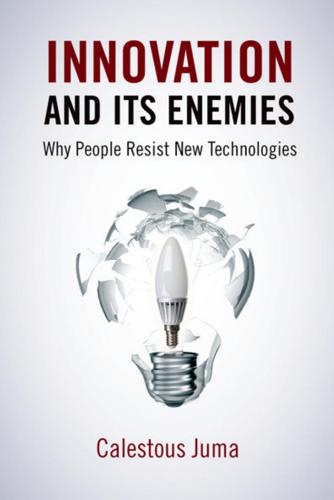
Innovation and Its Enemies
by
Calestous Juma
Published 20 Mar 2017
Equally important is the role of science and technology advice in ensuring that the law can adequately reflect the characteristics of emerging technologies. An example of the tensions is the rise of additive manufacturing, or 3D printing, which is advancing faster than the law can catch up.61 One of the main legal challenges is the potential convergence of digital information and physical objects.62 Proposals to reduce technological tensions could include exempting digital information used in 3D printing from copyright infringement.63 What may appear on the surface as being intellectual property concerns may in fact reflect deeper tensions between technological innovation and incumbency.
…
Nathan Cortez, “Regulating Disruptive Innovations,” Berkeley Technology Law Review 29, no. 1 (2014: 277. 61. Anne Lewis, “The Legality of 3D Printing: How Technology Is Moving Faster Than the Law,” Tulane Journal of Technology and Intellectual Property 17 (2014): 303–318. 62. Lucas S. Osborn, “Regulating Three-Dimensional Printing: The Converging Worlds of Bits and Atoms,” San Diego Law Review 51, no. 2 (2014): 553–621. 63. Deven R. Desai and Gerard N. Magliocca, “Patents, Meet Napster: 3D Printing and the Digitization of Things,” Georgetown Law Journal 102, no. 6 (2014): 1691–1720. 64. Jeffrey P. Baker, “The Incubator and the Medical Discovery of the Premature Infant,” Journal of Perinatology 5 (2000): 321–328. 65.
…
Emerging economies have to make complex decisions related to the impact of infrastructure projects in the same way that advanced countries grapple with social concerns in new fields such as nanotechnology, robotics, unmanned aerial vehicles, synthetic biology, artificial intelligence, and additive manufacturing (3D printing).8 Much of the public debate is intended to influence government policy on science, technology, and engineering. In this regard, the capacity of governments to assess the available information and use it for decisionmaking is an essential element of the debate. Political leadership on innovation and the existence of requisite institutions of science and technology advice are an essential aspect of economic governance.
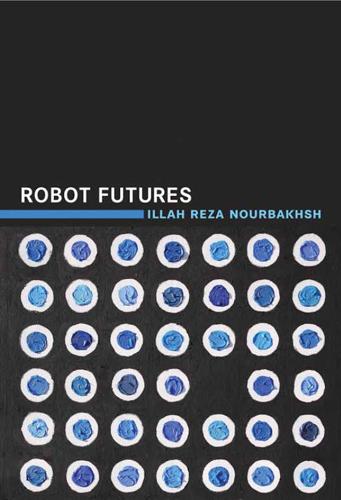
Robot Futures
by
Illah Reza Nourbakhsh
Published 1 Mar 2013
In this possible robot future, the robotics revolution can affirm the most nonrobotic quality of our world: our humanity. 120 Chapter 6 now I see where this revolution is leading To the withering of the individual man and a slow merging into uniformity to the death of choice to self denial to deadly weakness in a state which has no contact with individuals but which is impregnable So I turn away I am one of those who has to be defeated and from this defeat I want to seize all I can get with my own strength I step out of my place and watch what happens without joining in observing noting down my observations and all around me stillness And when I vanish I want all trace of my existence to be wiped out —Peter Weiss, The Persecution and Assassination of Jean-Paul Marat as Performed by the Inmates of the Asylum of Charenton under the Direction of the Marquis de Sade, 49–50 Glossary 3D printing A rapid prototyping process by which material is added in layers, often using plastics that are heated and melted on, to create a three-dimensional model. In robotics, 3D printing can even be used to create structural elements that are bolted or glued together to create robot parts such as a chassis or manipulator fingers. Adjustable autonomy An architectural consideration for robot control that embodies the notion that robots should be able to act on their own (autonomously) whenever possible, but that humans should be able to take gradual control of the robot along a sliding scale, from providing strategic oversight to manually and directly controlling the robot’s joints.
…
Doing research in robot structure used to be especially challenging because realizing new designs meant outfitting a research lab with high-end machining and fabrication equipment, including lathes, milling machines, and welding equipment. But over the past five years there has been a small revolution in lowcost, rapid prototyping thanks to 3D printing and laser cutting technologies. 3D printers can deposit hot plastic, one layer at a time, to create any three-dimensional form. Laser cutters can cut plastic, wood, and even metal into intricate patterns that can be assembled into a new robot frame. Every robot lab now has the ability to invent a new shape and have it prototyped and ready for testing in a matter of hours or days, at prices so affordable that they can make tens and even hundreds of experimental robot bodies in a matter of weeks.
…
Alone Together: Why We Expect More from Technology and Less from Each Other. New York: Basic Books. Walker, Matt. 2009. “Ant Mega-Colony Takes over World.” BBC Earth News. July 1. Wilber, B. M. 1972. “A Shakey Primer.” Technical Report. Stanford Research Institute, Menlo Park, CA. November. Index 3D Printing, 28, 30, 121 Abuse, 57–60, 117 Academia, 112, 113, 118, Accelerometers, xv, 36, 95, Accountability, 100–103, 107, 110, 117 Action, xvi, xviii, 60, 100, 103, 110, 111, 121 Adjustable autonomy, 45, 46, 77, 80, 102, 103, 121 Advertising, 4, 13, 14, Agency, 60, 61, 81, 121 Air quality, 74, 113–115 Analytics, 5–9, 12, 13, 121 Android, xiv, 29, 40, 55 Artificial Intelligence, xv, xxi, 79, 81, 98, 105, 118, 121 Attention dilution disorder, 65, 82 Batteries, 19, 28, 30, 33–35, 111 Big data, 6, 122 Blade Runner, 55, 56 Blue, xi, 10 Browser, 5, 7 BumBot, 24, 25, 110 Carnegie Mellon University, x, xviii, 113 Chips, 57, 58 Cognition, xvi, xvii, 11, 41, 122 Colonies, 40, 42, 97–99 Common ground, xix, 126 Community, 38–40, 43, 112–116 Computer vision, 11–14, 21, 23, 30, 39, 102, 103, 122 CREATE Lab, x, 113 Data mining, 6, 8–13, 16, 17, 81, 122 Dehumanization, 60, 63, 107 Dick, Philip K., 55 Digital walls, 14 Disempowerment, 110 Do-it-yourself (DIY), 25–27 Driverless vehicle, 49–51, 59, 60, Drone, 76, 102, 103 132 Electric motor.
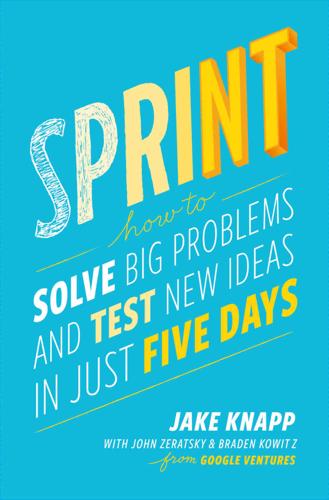
Sprint: How to Solve Big Problems and Test New Ideas in Just Five Days
by
Jake Knapp
,
John Zeratsky
and
Braden Kowitz
Published 8 Mar 2016
But the team wouldn’t give up so easily. If limited to just five days, they could prototype a brochure for the pump’s new features and try it in sales visits. That kind of test could answer questions about marketability. But what about the pump itself? The engineers had ideas for that, too. To test ease-of-use, they could 3D print new nozzles and attach them to existing pumps. To test installation, they could bring cables and hoses to nearby manufacturing plants and get reactions from assembly line workers. These tests wouldn’t be perfect. But they would answer big questions, before the pump even existed. Jake was wrong.
…
You read on page 176 about Foundation Medicine, a cancer diagnostics company whose product is a paper medical report. We designed their report in Keynote, then printed it out and showed it to oncologists. (Again, this kind of paper prototype actually makes sense.) For physical products, Keynote will be less useful. You may need to use 3D printing or make modifications to your existing product. But then again, many hardware devices have a software interface. Recall the story of Savioke, where part of our prototype involved attaching an iPad to their robot. And what, you may ask, was on that iPad? Keynote. The hits continue. Plus, for many physical-product sprints, you may not need to prototype the product at all.
…
—use Keynote, PowerPoint, or word processing software like Microsoft Word. • If it’s a service (customer support, client service, medical care, etc.)—write a script and use your sprint team as actors. • If it’s a physical space (store, office lobby, etc.)—modify an existing space. • If it’s an object (physical product, machinery, etc.)—modify an existing object, 3D print a prototype, or prototype the marketing using Keynote or PowerPoint and photos or renderings of the object. Building a prototype in one day sounds daunting, but when you put together a diverse sprint team you’ll have all the right expertise in the room. Chances are, a few people in your sprint will do most of the work, but we’ve found time and again that there’s a role for everyone.

The Internet Is Not the Answer
by
Andrew Keen
Published 5 Jan 2015
Hagerty and Kate Linebaugh, “Next 3-D Frontier: Printed Plane Parts,” Wall Street Journal, July 14, 2012. 62 Stuart Dredge, “30 Things Being 3D Printed Right Now (and None of Them Are Guns),” Guardian, January 29, 2014. 63 Chris Anderson, Makers: The New Industrial Revolution (New York: Crown, 2012), p. 12. 64 Eliza Brooke, “Why 3D Printing Will Work in Fashion,” TechCrunch, July 20, 2013. 65 Alice Fisher, “3D-Printed Fashion: Off the Printer, Rather Than Off the Peg,” Guardian, October 12, 2013. 66 Rebecca Hiscott, “Will 3D Printing Upend Fashion Like Napster Crippled the Music Industry?,” Mashable, March 3, 2014. 67 Katrina Dodd, “Monetize Me: Selfies, Social and Selling,” Contagious, May 19, 2014. 68 Alex Hudson, “Is Digital Piracy Possible on Any Object?
…
And over the next quarter of a century, as the Maker 3.0 revolution of 3-D printing begins to popularize the manufacturing of personalized clothing, these stores may—like Oxford Street’s 60,000-square-foot HMV music emporium—become redundant. The Silicon Valley hype machine is beginning to identify the world’s fashion industry as the source of the next great disruption. “Why 3D printing will work in fashion,” one TechCrunch writer glibly reveals.64 “3D-printed fashion: off the printer, rather than off the peg,” is how the Guardian’s Alice Fisher describes the so-called democratization of fashion in which we can all design our own personalized clothing. “It could revolutionize garment sizing and product development in mass production,” Fisher promises.

Infinite Detail
by
Tim Maughan
Published 1 Apr 2019
It’s not unfeasible, though, that they may have built it themselves. It’s certainly possible to do so, with a mix of off-the-shelf and 3D-printed components. The know-how is available online if you know where to look.” Certainly a do-it-yourself attitude seems prevalent amongst the community in the Croft. “It’s really the essence of what we’re trying to do here,” Manaan tells me as he shows me around the neighbourhood, pointing out the several boutique 3D print and bespoke component shops. “We’re all about finding alternatives to top-down approaches to technology, so it’s unsurprising that we’ve attracted people that want to start businesses and workshops along these lines.
…
The guy waves his right hand at him, wiggles his fingers. Rush recognizes the words, but right now they make no sense. How long has it been? “I—” “No fingerprints.” The guy is unbuttoning the sleeve of his shirt, and gently but purposefully pulling it up, an act often and proudly repeated, it’s clear. Plastic is revealed, 3D-printed prosthetic pink, a municipal flesh tone that sits far more comfortably with the official beige than the present color of this guy’s real skin. The guy flexes his arm and plastic carapaces shift against one another. The faint sound of motors whirring now that Rush knows to listen for them. “Lost it in Nigeria, back in ’17.”
…
The few remaining yellow cabs, artifacts from a dying age, honk in support, their human drivers reaching out of wound-down windows to high-five protestors as they pass. At Rush’s insistence both he and Scott have got their scarves and hoods up to try to mask their faces from the police drones that float constantly above their heads. Most of the rest of the marchers have done the same: if not hoodies or scarves then actual masks—3D-printed re-creations of too many other black men and women slain by the police, to keep their memories alive as much as to hide identities, as if vengeful ghosts have been summoned to march with them. Pretty much everyone is wearing spex, too, which gives Rush some pause. When he jumps into the #blacklivesmatter hashtag channel he can see why they are: virtual protest signs appear floating above heads, demands and slogans, calls to action, tweets from supporters across the globe, and video streams from simultaneous marches in Atlanta, D.C., L.A.
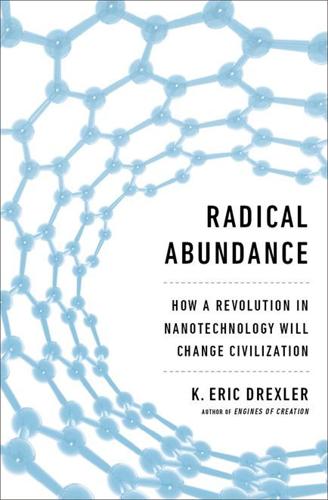
Radical Abundance: How a Revolution in Nanotechnology Will Change Civilization
by
K. Eric Drexler
Published 6 May 2013
A Special Manufacturing Method: 3D Printing Another emerging method for manufacturing also breaks the pattern of making and then assembling parts: 3D printing, sometimes known as additive manufacturing. 3D printing differs from the traditional ways of shaping materials. Some traditional methods make a shape all at once using a costly, specialized tool, like a mold to shape plastic, a die to stamp steel, or an optical mask in semiconductor lithography. Other traditional methods carve shapes by removing small bits of material using general-purpose equipment like lathes, drills, and milling machines. 3D printing, by contrast, makes shapes by adding small bits of material using general-purpose machines guided by digital data files. 3D printing can make shapes beyond the reach of casting or carving.
…
Other traditional methods carve shapes by removing small bits of material using general-purpose equipment like lathes, drills, and milling machines. 3D printing, by contrast, makes shapes by adding small bits of material using general-purpose machines guided by digital data files. 3D printing can make shapes beyond the reach of casting or carving. Today, the most common 3D printers produce structures by moving a nozzle as it lays down patterns of melted plastic in much the same way that ink-jet printers make 2D images by moving a print head as it lays down patterns of ink. 3D printing technologies can do more than this, however, and are advancing rapidly, with falling costs and an expanding range of materials and products. Although costs remain high by mass-production standards, 3D printers offer matchless flexibility for making unique or intricate objects.
…
Because of design costs and licensing fees (copyrights, patents), digital products are sometimes expensive to buy, and for the same reasons, per-unit purchase costs for APM products could likewise be much more than their cost of production. Nonetheless, artists, photographers, and software developers sometimes release products for free, and this trend continues in the emerging 3D printing community. The open-source model can apply equally well to APM. PERFORMANCE, COSTS, AND PRESSURES FOR CHANGE This chapter marks a threshold in a journey of ideas that leads from physical principles to prospects with human consequences on a global scale. The path has led from the concept of a timeless landscape of technological potential, through physics, engineering, and the methodology of exploratory engineering, to a partial view of the realm of atomically precise manufacturing and its potential products.

Bit Rot
by
Douglas Coupland
Published 4 Oct 2016
Drones are the embodiment of sexual damage. In Hall 6, people continued to 3D-print stuff, but not the stuff they make on their own—the things they’d never dare print out in public. Sex toys are massive download categories in the 3D-printing universe, as are weapons. This is mirrored in the world of Internet searches, where quests for porn and violence in all their forms are both copious and relentless. There, at the end of the hall, flew the drones. One of them, I was told, was a 3D-printed drone, which feels not just ironic but somehow inevitable. Was my red drone a 3D-printed drone? Does it matter? When I think of aliens, I think of the alien from M.N.
…
Half of the sports arena–sized space was filled with exhibitors mostly displaying 3D printing devices and the services that support them: printing filament, software and electronic add-ons. Booths tended to be staffed by twentysomethings radiating the cockiness that comes from knowing one is riding the winning historical wave. The hall’s visitors were also on the young side: young parents with palpably creative children, as well as (almost entirely) young men who can only be cheerfully described as nerds. And, as one might expect, everyone was making stuff: 3D-printed dodecahedrons, skulls, anime figurines, bionic arms, gears, doodads, frogs, vaping devices, cats, vases and…well, anything, really.
…
“Screw this,” he said to himself. He took all the money he made from saving the world and flew to Beverly Hills, where he had large amounts of cosmetic surgery—after which he leveraged his new looks to become a successful TV newscaster. The 2½th Dimension The plastic busts that illustrate this essay were 3D printed with plastic filament. There’s that rare moment we all know when we walk down a street and catch a glimpse of someone reflected in a window and we say to ourselves, “Why, what an attractive and likeable human being that person is! Dang, I wish I could look like that!”…only to realize we were looking at our own reflection…at which point we say to ourselves, “Maybe I shouldn’t be so hard on my self-image as I tend to be.”

Squid Empire: The Rise and Fall of the Cephalopods
by
Danna Staaf
Published 14 Apr 2017
“Cephalopods constitute a small-enough class of mollusks that an effort to digitally scan one representative from each genus or species would constitute a realistic goal,” writes Xavier.7 Imagine a digital cephalopod library that you could browse on your computer or virtual reality headset. You could pace the length of a giant squid, cup a blue-ringed octopus in your hand with no fear. And once there are 3D scans, there can be 3D prints. You could select any cephalopod species to print in your own lab or home to peruse at your leisure—rocketing the dusty old science of taxonomy into the twenty-first century. Thus, the study of modern living cephalopods meets the study of dead fossilized ones, as computed tomography, 3D printing, and scanning become practical tools for daily research. In one lab, we can imagine Xavier scanning and printing octopuses; in another, Ritterbush scans and prints ammonoid shells.
…
For example, one of the most important parameters in calculating the force of a jet, and therefore an ammonoid’s swimming speed, is the volume inside the living chamber. That’s incredibly difficult to estimate for ammonoids with complex sutures (which is to say, most ammonoids). But 3D scans mean we don’t have to estimate. We can measure. Such scans become even more powerful in conjunction with the rapidly advancing field of 3D printing. Ritterbush is in the midst of creating a laboratory setup that would allow her to pick any fossil, scan it, and print it. Just as premium golf balls are constantly tested for speed and spin, Ritterbush’s goal is to plop ammonoids of every shape into a water tank for testing. Her succinct description of the project is “to look at the shell as just a pain in the ass.”
…
As small as these structures are, it’s possible to trace their evolution through rock because their hard material fossilizes rather well.6 Squid hooks and sucker rings are made of the same tough material that coleoids use for their beaks: chitin. (Scientists and engineers have found an astonishing array of uses for squid chitin in recent years, from prosthetics for amputees to biothermoplastic for 3D printing.) No suckers, rings, or hooks have been found on any fossil ammonoids or nautiloids, so these appendage accessories are considered one of the many exclusive coleoid inventions.7 The ink sac is another, of course, and so is the breathtaking ability to change skin color, pattern, and texture. Modern nautiluses do not change their skin, and indeed the trick seems far less useful for an animal that keeps most of its body inside a shell.
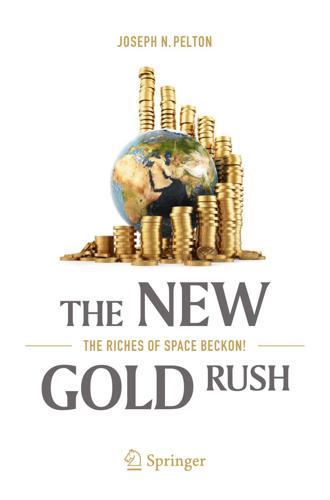
The New Gold Rush: The Riches of Space Beckon!
by
Joseph N. Pelton
Published 5 Nov 2016
One such exploratory project is with the Pacific International Space Center for Exploration Systems (PISCES) , This PISCES-NASA project involves 3D printing on a construction scale using basalt. Here on Earth, 3-D printers in prototype form are already building houses using recycled materials. Launching construction materials for a space colony via a rocket is much too costly. Basalt rocks, which are abundant on Earth and on many celestial bodies including the Moon and Mars, could be the key to building infrastructure in space using robots. Because Hawaii’s basalt is quite similar to the regolith found on Mars and the Moon, it could be used to 3D print shelters, landing pads, and tools that could be used on other planets.
…
Fig. 5.3Artist’s conception of a solar power system fabricated from materials mined from an asteroid (Image courtesy of Wikimedia commons. https://en.wikipedia.org/wiki/Space-based_solar_power#/media/File:Solar_power_satellite_from_an_asteroid.jpg.) This analysis, which was admittedly undertaken as part of the rationale in support of space mining ventures, argues that if space mining and space-based fabrication using 3D printing technology are all taken amazing results can be achieved—perhaps by or even before 2050. In these scenarios the future of space transportation, space-based energy generation, and space-based manufacturing and fabrications are not really separate ventures, but integrated and symbiotic activities that become a win-win-win type enterprise.
…
Due to the exciting potential of such technology, Pacific International Space Center for Exploration Systems (PISCES) is one of four partners chosen by NASA to work on a project involving robotic-enabled construction. Hawaiian lawmakers—through Hawaii Senate Concurrent Resolution No. 83—have backed this initiative with local funding support. Under the proposed plans, PISCES and NASA would work together to 3D print a landing pad, a curved wall and a dome-shaped structure in Hawaii using basalt. The first phase of the project began in October 2014 and is expected to continue through 2017 [8]. Although this may sound exotic there are already large scale 3D printers large enough to “print out” an entire house in a single day.

Who Owns the Future?
by
Jaron Lanier
Published 6 May 2013
A chip is just a pattern deposited by something like a printing process to begin with. So is a flat display. In theory, it ought to be possible, in the not-so-distant future, to print out a working phone or tablet. It is still unknown how good 3D printing will become, or how soon. The little gotchas and annoyances of technology are not predictable and can add decades of uncertainty to the timing of technological change. But it seems likely that 3D printing can close the various loops and become a fairly complete technology in this century. But notice that once a 3D printer can be deployed in a factory, it might just as well be placed close to where the product will be used.
…
At first manufacturing robots will be expensive, and there will be plenty of well-paying jobs created to operate them, but eventually they will become cheap and the data to operate them might then be crowdsourced, sending manufacturing down the same road traveled by the recorded music industry. A current academic and hobbyist craze is known as “3D printing.” A 3D printer looks a little like a microwave oven. Through the glass door, you can watch roaming robotic nozzles deposit various materials under software control in an incremental way to form a product as if by magic. You download a design from the ’net, as if you were downloading a movie file, send it to your 3D printer, and come back after a while.
…
Instead of melting it down, little nozzles with specialized solvents and cutting tools will separate each striation that originated from a different antecedent goop. The process will not be perfect, since the laws of thermodynamics cannot be revoked, but it will be hugely more efficient than what we do today. Between the obsolescence of shipping and an extreme increase in recycling precision, 3D printing could create a massive explosion of convenience and fun, and at the same time vastly reduce humanity’s carbon footprint and reliance on nonrenewable resources. All this modulo the gotchas we don’t know about yet, of course. But supposing that some portions of the benefits appear, it certainly would be foolish to oppose this stream of progress.

The Matter of the Heart: A History of the Heart in Eleven Operations
by
Thomas Morris
Published 31 May 2017
This scaffold could then be seeded with living cells and incubated in the normal way.74 Pushing the technology further, Adam Feinberg, a materials scientist at Carnegie Mellon University in Pittsburgh, recently succeeded in fabricating the first anatomically accurate 3D-printed heart. He used the heart of a chick embryo, chosen because its complex internal anatomy made it particularly difficult to replicate. The tiny organ, just 2.5 millimetres in diameter, was mapped microscopically to provide a template for the printer, which was set up so that it produced a replica ten times life size. This facsimile was made of hydrogel and contained no tissue, but it did show a remarkable fidelity to the original organ.75 Since then, Feinberg has used natural proteins such as fibrin and collagen to 3D-print hearts; his group is now aiming to include living cardiac cells in the hydrogels extruded by the device so that it is able to print living tissue and so construct a viable organ.76 For many researchers in this field a fully tissue-engineered heart is the ultimate prize, but even those involved acknowledge that their goal is a long way off.
…
The original heart came from a pig, and after it had been decellularised it was populated with human vascular cells and cardiac cells harvested from a newborn rat.fn6 After ten days the walls of the organ had become lined with new myocardium which even showed signs of electrical activity.73 As a proof of concept the experiment was a success, though after three weeks of culture the organ could neither contract nor pump blood. Growing tissues and organs in a bioreactor is a laborious business, but recent improvements in 3D printing offer the tantalising possibility of manufacturing a new heart rapidly and to order. 3D printers work by breaking down a three-dimensional object into a series of thin two-dimensional ‘slices’, which are laid down one on top of another. The technology has already been employed to manufacture complex engineering components out of metal or plastic, but it is now being used to generate tissues in the laboratory.
…
When I asked one whether he could see it being a realistic alternative to transplantation, he laughed before suggesting that it would take another forty years to perfect. We are, therefore, left with several competing visions of the future. Within a few decades it is possible that we will be breeding transgenic pigs in vast sterile farms and harvesting their hearts to implant in sick patients. Or that new organs will be 3D-printed to order in factories, before being dispatched in drones to wherever they are needed. Or maybe an unexpected breakthrough in energy technology will make it possible to develop a fully implantable, permanent mechanical heart. More mundanely, it’s also conceivable that advances in drug therapy and preventative care will render such dramatic interventions largely unnecessary.

Supertall: How the World's Tallest Buildings Are Reshaping Our Cities and Our Lives
by
Stefan Al
Published 11 Apr 2022
Material scientists, engineers, and architects draw from evolution’s strongest and toughest materials and structures. Bone, teeth, nacre, bamboo, and spiderweb silk are exceptionally strong, a result of Darwinian struggle in different and harsh environments. Their qualities range from unique macroscopic forms to the nano-scale-level proteins. With 3D printing, we can mimic these micro-scale designs of nature’s finest engineering marvels. Already, shoe companies are 3D printing soles based on lattice structures inspired by insect wings and leaves. Material researchers, to make stronger body armor, find inspiration from the herringbone structure of the appendage of mantis shrimp, its weapon to smash through shells of mollusks and crabs.19 With new computer software and manufacturing techniques, it may become easier to make structures more material efficient.
…
The concrete in the Burj Khalifa can withstand about 8,000 tons of pressure per square meter—the weight of the Eiffel Tower on an area the size of a table. The future of concrete may lead us to a path of even higher strengths. Plus hopefully a more sustainably built world. And with new ways of manufacturing, including 3D printing, we may create even taller and more sophisticated buildings in the future. What horizons can be viewed from those future heights? ARCHAEOLOGISTS BELIEVE A LIGHTNING BOLT led to the invention of lime, the essential binding substance of concrete. How else would our Paleolithic ancestors have discovered that heating up limestone to furnace-like temperatures would create a magical powdery substance?
…
Material researchers, to make stronger body armor, find inspiration from the herringbone structure of the appendage of mantis shrimp, its weapon to smash through shells of mollusks and crabs.19 With new computer software and manufacturing techniques, it may become easier to make structures more material efficient. Structural members, like steel bars and concrete columns, used to be predominantly straight. Now, 3D printing can print steel in any shape, and make custom molds for more elaborate concrete forms. With a wider palette of shapes at their disposal, engineers can devise structures that more naturally and efficiently transfer horizontal forces to the ground. Faster computer processing, artificial intelligence, and the widespread availability of simulations for wind and structural loads can help them test and predict more efficient shapes, with almost instant feedback, even on a simple desktop computer.

The Second Machine Age: Work, Progress, and Prosperity in a Time of Brilliant Technologies
by
Erik Brynjolfsson
and
Andrew McAfee
Published 20 Jan 2014
For the year, revenue is projected to roll in at $11.82 billion.39 Even computer peripherals like printers are getting in on the act, demonstrating useful capabilities that seem straight out of science fiction. Instead of just putting ink on paper, they are making complicated three-dimensional parts out of plastic, metal, and other materials. 3D printing, also sometimes called “additive manufacturing,” takes advantage of the way computer printers work: they deposit a very thin layer of material (ink, traditionally) on a base (paper) in a pattern determined by the computer. Innovators reasoned that there is nothing stopping printers from depositing layers one on top of the other.
…
And because of the way it is built up, this shape can be quite complicated—it can have voids and tunnels in it, and even parts that move independently of one another. At the San Francisco headquarters of Autodesk, a leading design software company, we handled a working adjustable wrench that was printed as a single part, no assembly required.40 This wrench was a demonstration product made out of plastic, but 3D printing has expanded into metals as well. Autodesk CEO Carl Bass is part of the large and growing community of additive manufacturing hobbyists and tinkerers. During our tour of his company’s gallery, a showcase of all the products and projects enabled by Autodesk software, he showed us a beautiful metal bowl he designed on a computer and had printed out.
…
The bowl had an elaborate lattice pattern on its sides. Bass said that he’d asked friends of his who were experienced in working with metal—sculptors, ironworkers, welders, and so on—how the bowl was made. None of them could figure out how the lattice was produced. The answer was that a laser had built up each layer by fusing powdered metal. 3D printing today is not just for art projects like Bass’s bowl. It’s used by countless companies every day to make prototypes and model parts. It’s also being used for final parts ranging from plastic vents and housings on NASA’s next-generation Moon rover to a metal prosthetic jawbone for an eighty-three-year-old woman.
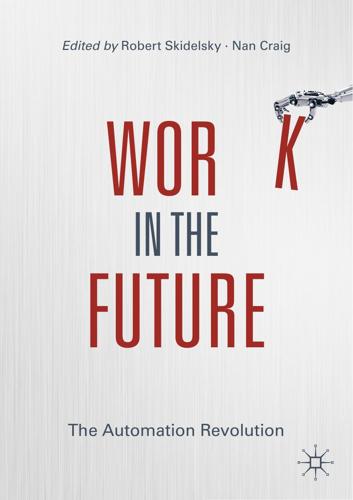
Work in the Future The Automation Revolution-Palgrave MacMillan (2019)
by
Robert Skidelsky Nan Craig
Published 15 Mar 2020
Researchers like Frank Wilson have tried to validate neurologically this connection between the head and the hand: the hand problematises the head. 4 Patterns and Types of Work in the Past: Part 2 35 So it’s not a matter of being a Ruskinian Romantic, nor a Luddite bent on smashing the infernal machine. The architectural designer needs both CAD and the pencil—the pencil to think, CAD to execute. So is this the case with 3D printing: so easy to use, which means so numbing. Good 3D modellers start with thinking in wet clay. The uncertainty and open- endedness of actual physical effort is a way to open up what should be produced as an object, which you can then summon into being by 3D printing via mimetic algorithms on screen. Rather than craftsmanship, particularly hand-craftsmanship, being put out of date by any kind of mechanical labour, we have to have a much more sophisticated notion of connecting the bodily work we do to the mental labour we do.
…
The challenge in labour, it seems to me, is how to organise technology so that it is a partner rather than a replacement. What we are trying to do in our design lab, as is the Media Lab at Massachusetts Institute of Technology (MIT), in experimenting with computerised prostheses in surgery, is to use devices like CAD or 3D printing as technologies which enable more human choice, rather than replace choice with one standard. As in Stradivarius’ studio, we are trying to design these two machines so that they are challenging rather than “friendly”. 36 R. Sennett As a generality, I would say that thinking fresh about labour requires new ways of connecting material and sensate experience to mental understanding.
…
, 29 Srnicek, Nick, 5, 59, 179n2 Star Trek, 146–148 Status goods, 88 Stirling, Alfie, 177 Stoics (view of work), 74 Stradivarius, 33–35 Subsistence, 27, 38, 40, 41, 44, 45, 73, 75, 76 Summers, Larry, 2 Supply and demand, 16, 21 Susskind, Daniel, 5 Susskind, Richard, 127, 132 T Tasks routine vs. non-routine, 126, 127, 129, 131 simplification, 91, 92 Taylor, Frederick Winslow, 30 Technological determinism, 5 Technological progress, 9, 18, 59, 89, 93, 96, 131, 176 Technological unemployment, 2, 6, 10, 16, 160, 173, 192 Technology, 2–5, 7, 9, 16–19, 27–30, 35, 57, 59, 61, 62, 75, 83–96, 110, 111, 115, 117, 119, 120, 126, 129, 131, 133, 139, 140, 145, 149, 150, 160, 161, 180, 181, 189–195, 198–200 Terkel, Studs, 4 Textile industry, 85, 182 3D printing, 35 Time and motion studies, 30 Toffler, Alvin, 159 Tokumitsu, Miya, 73 Tools/tool-making, 11, 26–28, 34, 35, 70, 109, 149, 197, 198 Trades Union Congress (TUC), 175, 177 Trump, Donald, 94, 95 Turello, Dan, 103 Turing, Alan, 100, 105 Turing test, 91, 101n1 U Uber, 6, 133–137 Uberisation (of the economy), 27, 133, 134, 184 Index Unemployment, 10, 11, 16, 17, 59, 60, 68, 78, 89, 160, 164, 171, 178, 179, 183, 193, 195 Unions, 68, 69, 136, 176–178, 182, 184, 185, 193 United Kingdom, 6, 26, 68, 127, 151, 163, 164, 175–185 Universal Basic Income (UBI), 70, 78, 171, 199 USA, 15, 28, 68, 83, 85, 86, 89, 126, 151, 165, 166, 178, 194 Utility, 55, 62, 94, 166 V Value extraction of, 134 labour theory of, 165 of work, 11, 31, 58, 60, 61, 65, 66, 73, 163, 165–167 Van Wanrooy, Brigid, 178 Veblen, Thorstein, 27, 56–58, 62 Venture capital, 111, 114, 135 Violin making, 34 Vivarelli, Marco, 191 Vocational training, 68 Voice, 69, 106, 147, 159 Volf, Miroslav, 176, 180 Vonnegut, Kurt, 158, 160 Walsh, Toby, 119 Weaving industry, 18, 29, 38, 85 Weber, Max, 75 Weeks, Kathi, 79 Welfare, 5, 54, 60, 66–70, 135, 160, 171 Welfare state, 66, 69, 70, 160, 171 Welfarist understanding of work, 65 Wellbeing, 19, 27, 66, 177, 179 West, Darell, 196 Western Europe, 4, 37, 39, 44 Williams, Alex, 59, 179n2 Williamson, O, 55 Wilson, Frank, 34 Work as a cost/burden, 13, 18, 44, 55, 57, 58, 60, 75, 77, 78 freedom from, 39, 60, 77, 78 as meaningful, 76, 77, 179, 180 as pleasurable, 3 Workforce skills, 6 Working hours increase vs falls in, 19 part-time vs. full-time, 181 targeted reduction of, 185 Working Hours Adjustment Act 2000, 181 ‘Working poor’ model, 67, 68 Work-life balance, 79, 179 Wright, Chris F., 185 W Wages minimum, 69 stagnation, 87, 89, 94, 183 211 Z Zuckerberg, Mark, 138

Heart of the Machine: Our Future in a World of Artificial Emotional Intelligence
by
Richard Yonck
Published 7 Mar 2017
Overall, the impact would be significantly greater for women, who would lose five jobs for every job gained compared with men losing three jobs for every job gained. That’s an unfortunate trend that we will need to keep an eye on. As with so many technologies today, social robotics has also seen a number of open-source approaches. Ono, a DIY Open Source Platform for Social Robotics Project out of Belgium; Poppy, an open-source robotics platform based on 3D printing; and Open Robot Hardware have worked to apply the open-source concept to robotics systems. All of these include social robot designs and programs in their platforms. (A platform is a group of technologies that support the development of other application, services, and, in this case, robots.) It can be argued that the robots aren’t as sophisticated as some of products coming out of commercially and institutionally-based robotics labs; nevertheless, if history is any indication, platforms such as these will play an increasingly important role in the continuing cycle of innovation.
…
In one of these, Tzezana’s research team established timeframes in which different combinations of emerging technology could potentially start becoming a threat, as well as calculating their relative likelihood and severity of impact. Most of these fell under the heading of cybercrime because of the increasingly interconnected and digital nature of our world. However, there were also elements that normally fall under other headings, such as bioterrorism, 3D printed weapons, and aerial drone technology. The likelihood of different technologies being used for different categories of crime was ranked, then re-explored as a particular tech was combined with two, three, or four others. In the end a range of new threats and vulnerabilities were revealed. The same methodology might be applied to affective technologies and social robotics in order to better foresee how these could be misused, particularly in combination with other technologies.
…
Apart from the difficulties of actually justifying such distinctions—it would be impossible to successfully ban sex toys entirely, since they’ve been around for millennia—opponents would be up against the reality of living in a globally connected world. People would no doubt be able to purchase and import from jurisdictions where emotionally aware sex toys were still legal. Others could download plans off the Internet to build feature-rich devices themselves, perhaps even 3D printing them from digital files. An effective ban is essentially unsustainable over the long term, so it’s safe to say that sexbots are here to stay. Aside from this, would it even be ethical to try to ban such devices? Consider those places in the world where there are significant disparities between the numbers of available men and women.
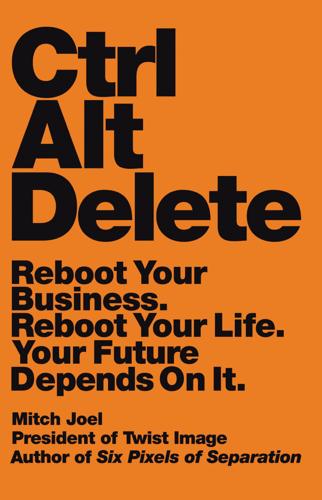
Ctrl Alt Delete: Reboot Your Business. Reboot Your Life. Your Future Depends on It.
by
Mitch Joel
Published 20 May 2013
The current limitations of the technology (both hardware and software) make it as crude as the early days of dot matrix printing, but groups like MakerBot are running Hackathons to demonstrate the power and potential of 3D printing. Business is going to change dramatically when making three-dimensional solid objects from a digital file is as simple as hitting “command P” on your keyboard. A business’s ability to produce rapid prototypes and to sell individualized products to consumers will create the next generation of upheaval. This is a profound change and can be witnessed in how the medical field is currently prototyping body parts and more using 3D printing. Imagine a world—in the not too distant future—when a failing kidney can simply be replaced by a healthy one that was just printed up on one of these printers.
…
Ultimately, as technology connects more people and as more people become content creators and curators, our jobs moving forward will be in how we integrate a hacker culture into our business. This is equally important because two additional future trends are intrinsically linked with the hacking culture: 1. 3D printing. Imagine being able to “print up” a three-dimensional product in much the same way you hit the print button for your word processing software. The hacker culture has given rise to many startups and centers of innovation within major corporations that are tinkering with the printer of the future.
…
Imagine a world—in the not too distant future—when a failing kidney can simply be replaced by a healthy one that was just printed up on one of these printers. This type of innovation is already in development. 2. Maker Movement. In 2006, an event called Maker Faire was born. What can only be described as a contemporary subculture, this annual event showcases “makers”—people who create robotics, electronics, woodworking, 3D printing, and more. These hobbyists embody the next generation of the same philosophical ideologies that brought together people interested in computers and computing back in the 1970s at computer clubs and meetups (the places that people like Bill Gates and Steve Wozniak used to hang out). What’s now being worked on in these garages and shared at events like Maker Faire is a combination of invention and prototyping.

The Measure of Progress: Counting What Really Matters
by
Diane Coyle
Published 15 Apr 2025
However, car sharing is not a phenomenon in the United States due to its strong car culture, longer distances, and absence of public transport alternatives. Yet f uture trends may point to more renting of external capital services, such as autonomous vehicles if these take off at scale, or likewise access to 3D printing machines. Business models of this kind are as-a-service subscription offers for h ouseholds rather than t hose provided to companies as described in the previous chapter. Gig Work here is another aspect to digital disintermediation: as the digital T platform business model has become more widespread, so have non- standard modes of work, often collected under the (disparaging) heading of gig work.
…
Other consumer or non-professional examples cited in the literature include medical devices invented to serve markets too small to appeal to commercial investors; the mountain bike; and the zipper. For example, c hildren who needed prosthetic limbs might have had to wait until their teens, as they were too expensive to replace frequently as they grew (Graboyes 2016). However, a South African carpenter and an American maker designed a 3D-printed prosthetic hand by email correspondence and posted the design freely online. Subsequently e-NABLE (https://enablingthefuture.org/), an online volunteer group, started in the United States and spread globally to match t hose who needed prosthetic upper limbs with t hose who could help additively print them.
…
One review article concludes that the extent of user innovation is underestimated in policy decisions (and much academic work), leading policymakers to miss a trick because they pay too much attention to innovation in formal research organizations and business (Bradonjic et al. 2019). One attempt to put an aggregate figure on the scale (Pearce and Qian 2022) looks at open-source digital designs for 3D-printed products, taking the top 100 most popular designs posted on the YouMagine repository. It uses the price of similar products on Amazon to estimate how much people can save from the DIY home production: $35–40 million a year. User innovation is unlikely to be substituting for many activities in the market, as almost by definition it targets market niches that are unfilled or commercially unattractive.

On the Future: Prospects for Humanity
by
Martin J. Rees
Published 14 Oct 2018
If this happens, the freedom to choose your family size, proclaimed as one of the UN’s fundamental rights, may come into question when the negative externalities of a rising world population are weighed in the balance. We must hope that the global population declines rather than increases after 2050. Even though nine billion can be fed (with good governance and efficient agribusiness), and even if consumer items become cheaper to produce (via, for instance, 3D printing) and ‘clean energy’ becomes plentiful, food choices will be constrained and the quality of life will be reduced by overcrowding and reductions in green space. 1.4. STAYING WITHIN PLANETARY BOUNDARIES We’re deep into the Anthropocene. This term was popularised by Paul Crutzen, one of the scientists who determined that the ozone in the upper atmosphere was being depleted by CFCs—chemicals then used in aerosol cans and refrigerators.
…
These moral ambiguities, together with a shortage of organ donors, will continue (and indeed be aggravated) until xenotransplantation—harvesting organs for human use from pigs or other animals—becomes routine and safe. Better still (though more futuristically), techniques akin to those being developed in order to make artificial meat could enable 3D printing of replacement organs. These are advances that should be prioritised. Advances in microbiology—diagnostics, vaccines, and antibiotics—offer prospects of sustaining health, controlling disease, and containing pandemics. But these benefits have triggered a dangerous ‘fight back’ by the pathogens themselves.
…
See also solar system Sundback, Gideon, 202 superconductors, 190–91 sustainability, Vatican conference on, 34 sustainable development, 26–27, 28 sustainable intensification of agriculture, 23, 24 technology: improvement in most people’s lives due to, 6, 60, 215; need for appropriate deployment of, 4, 26, 60; optimism about, 5, 225–26; as practical application of science, 202; preserving basic methods for the apocalypse, 216–17; for scientific experiments, 206–7; timescales for advance of, 152; unintended destructive consequences of, 215 telescopes: on far side of Moon, 144; optical Earth-based, 134–35, 137; radio telescopes, 134, 144, 157, 207; space telescopes, 137, 142, 143 Teller, Edward, 110 telomeres, 79 terrorism: biological techniques and, 73, 75, 77–78; in interconnected world, 215; new technology and, 100; nuclear weapons and, 20 Thomas, Chris, 74 thorium-based reactor, 54 3D printing: making consumer items cheaper, 31; of replacement organs, 72 tidal energy, 50–51 timescales: of planning for global challenges, 3–4, 59–60, 217. See also short-termism tipping points, 4, 32, 41, 42 Titan, 128, 136 Tito, Dennis, 147 translation by computer, 85, 89, 104 Trump regime, and climate change, 37–38 Tunguska event of 1908, 15 23andMe, 80 universal income, 96 universe: Dyson on numerical bounds for, 179–80; fine-tuned for life, 186, 197–98.
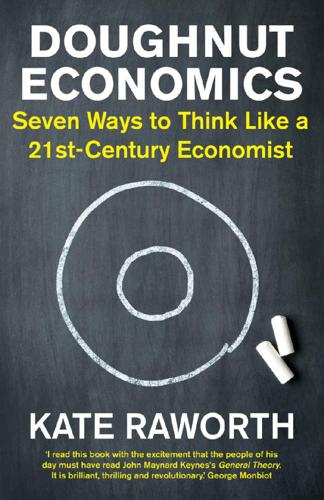
Doughnut Economics: Seven Ways to Think Like a 21st-Century Economist
by
Kate Raworth
Published 22 Mar 2017
It is a transformation made possible, argues the economic analyst Jeremy Rifkin, by the ongoing convergence of networks for digital communications, renewable energy and 3D printing, creating what he has called ‘the collaborative commons’. What makes the convergence of these technologies so powerfully disruptive is their potential for distributed ownership, networked collaboration, and minimal running costs. Once the solar panels, computer networks and 3D printers are in place, the cost of producing one extra joule of energy, one extra download, one extra 3D printed component, is close to nothing, leading Rifkin to dub it ‘the zero-marginal-cost revolution’.39 The result is that a growing range of products and services can be produced abundantly, nearly for free, unleashing potential such as open-source design, free online education, and distributed manufacturing.
…
In the Togolese capital of Lomé, architect Sénamé Agbodjinou and colleagues set up Woelab in 2012, a ‘low-high tech’ workshop making its own design of open-source 3D printers using the component parts of defunct computers, printers and scanners that have been dumped in West Africa. ‘We wanted to make our 3D printer from the resources we have at hand – and electronic waste is now practically our primary material available in Africa,’ says Agbodjinou. The project is exploring the most useful local applications for 3D printing. ‘Doctors have told us that when a little piece of equipment breaks, it takes at least two months for the replacement parts to come from Europe or the United States,’ he explains. ‘With this technology – if we can master it – we can create these parts, repair the equipment faster, and perhaps help to save a life.’42 These open-source innovations are impressive but still fledgling, and to many the movement may look unfeasibly utopian.
…
A wide array of online products and services like software, music, education and entertainment are already available almost for free because, thanks to the Internet, they can be created and reproduced at near-zero marginal cost. Analysts such as Jeremy Rifkin believe that today’s emerging horizontal networks of renewable energy generation and 3D printing are set to amplify this trend. If they do, it could result in a great deal of economic value that was once sold at a profit in the marketplace being shared for low or no cost in the collaborative commons. The sharing economy is also growing, in which the culture of ownership – with every household equipped with its own washing machine and car – is giving way to a culture of access, with households sharing laundry facilities and renting cars by the hour from a local car club.
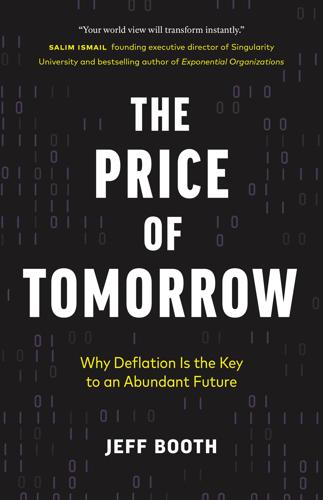
The Price of Tomorrow: Why Deflation Is the Key to an Abundant Future
by
Jeff Booth
Published 14 Jan 2020
How the Economy Works, Part II: Creative Destruction Out with the old, in with the new The BuildDirect journey The windows of opportunity The rise of the platforms On the eve of destruction 3. It Is Hard to Think Differently Building on weak foundations Two-speed thinking Myths we live by How do we overcome our errors? 4. The Technology Boom Doubling up Self-driving cars Virtual and augmented reality Additive manufacturing and 3D printing The coming sonic boom 5. The Future of Energy The laws of energy Let the sun shine in Changing the price of tomorrow 6. The Future of Intelligence The impact of artificial intelligence A brief history of intelligence The beginning of AI 7. Who Will Be the Masters? The power of technology What’s coming The body digitized The AI race 8.
…
There is a chance that Amazon or the others racing to create artificial intelligence will gain a lock-in that we underestimate, in turn driving asymmetric benefits to the platforms that would be almost impossible to break. But technology isn’t slowing down. Besides artificial intelligence, a wave of disruption like 3D printing could change where value is derived from again and provide an opening for a new company to invent everything anew. Instead of simply believing that you would be better at facing the disruption than Walmart has been—or Blockbuster, or Kodak, or Sears—imagine if you were in their shoes. Imagine it was your business and what you would do when most of the profits still come from stores, but the future is in digital.
…
And why should we expect the travel industry to act differently than other industries in transition to digital? Why does that matter? According to the World Travel and Tourism Council, in 2018, travel contributed $8.8 trillion and 319 million jobs to the global economy. Entire local economies have become reliant on tourist dollars. What will they do if travelling slows? Additive manufacturing and 3D printing To the general population, the promise of anything we want printed right before our eyes vanished with the first wave of 3D printers that only printed crude versions of knickknacks. That image, of a printer slowly layering plastic into a rudimentary product, has been etched into our minds because the reality was so far away from the promise.

The Stack: On Software and Sovereignty
by
Benjamin H. Bratton
Published 19 Feb 2016
For such strangeness, see Mark Wilson, “The DRM Chair Self-Destructs after 8 Sittings,” Fast Company, March 7, 2013, http://www.fastcodesign.com/1672050/the-drm-chair-self-destructs-after-8-sittings. 18. Consider the following regarding potential interfaces between viral systems of various scales. John Baichtal, “3D Printed Model of a Virus Self Assembles When Shaken,” MAKE, August 16, 2011, http://makezine.com/2011/08/16/3d-printed-model-of-a-virus-self-assembles-when-shaken/. 19. Not just in Charles Stross's Rule 34, malware for 3D printers is live and at play. Kerry Stevenson, “The 3D Printer Virus, Really?” Fabbaloo, April 7, 2010, http://www.fabbaloo.com/blog/2010/4/7/the-3d-printer-virus-really.html. 20.
…
Both events and pseudoevents are plentiful and it's hard to know what signals a new situation and what is trivial: the Google Earth stand-off between Costa Rica and Nicaragua, Prism and Data.Gov, hyperbolic packet-routing topologies, Dot-P2P and OpenDNS, net neutrality and the golden shield, downloadable guns 3D printed out of synthetic biopolymers paid for with Bitcoins, the National Security Agency (NSA) versus Unit 6139, NSA versus Anonymous, Anonymous versus Syrian Electronic Army, NSA versus Syrian Electronic Army versus ISIL versus FSB (Federal Security Service of the Russian Federation) versus North Korea versus Samsung versus Apple versus European Parliament, and on and on.
…
As Amazon further shrinks the remote order-delivery cycle from a network of nearby distribution hubs and subhubs toward the same-day and instantaneous downloadable delivery of items, the remaining functions of local retail become both more constricted and more open.61 On the one hand, ever greater supply chain compression may further transform retail space into purely experiential demonstration theaters, designed to motivate later online purchase, or may push to reprogram them all as publicly accessible storage facilities: a Tesla showroom or Home Depot, and not much in between. In time, 3D printing and other digital fabrication technologies may accelerate and overpower even this process, as your Kindle evolves from an e-book reader to an e-goods fabricator key and license library. Perhaps the Amazon model will lead away from today's warehouse archipelagos dotting rural landscapes connected by cargo trucks and toward a denser network of print stations where furniture, electronics, appliances, clothes, and other products are fabricated on demand for pickup or shuttled to nearby residences (by drones, maybe—and maybe not).
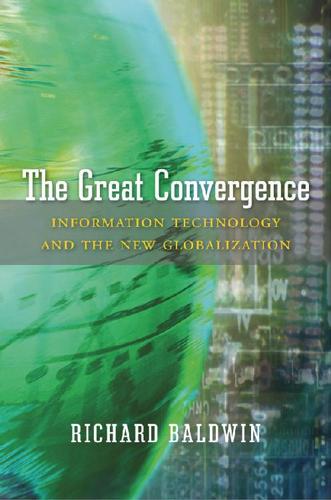
The Great Convergence: Information Technology and the New Globalization
by
Richard Baldwin
Published 14 Nov 2016
A fascinating special report by The Economist in 2012 extrapolates these trends even further.2 It notes that manufacturing may be going through a new industrial revolution due to the advent of “3D printing” (also called additive manufacturing), which bundles virtually all stages of manufacturing into a single machine. Combined with the virtual designing made possible by computer-aided design systems, 3D printing would take manufacturing very close to the Star Trek replicators. While it seems more than a few years away, we are clearly moving toward a reality where “if I can imagine it, the computer can make it for me.” Supply chain unbundling would be seriously undermined by radical advances in the direction of mass customization and 3D printing by sophisticated machines.
…
Since IT basically means automation, better IT disfavors specialization by reducing the cost of grouping many tasks into a single occupation. This happens in several ways. Today, many factories can be thought of as computer systems where the peripherals are industrial robots, computerized machine tools, and guided vehicles. Additive manufacturing (also known as 3D printing) is the extreme where IT allows a single worker to perform all tasks simply by operating one machine. Perhaps this type of advanced manufacturing should be called “compufacturing” since rather than machines helping workers make things, the workers are helping machines make things. To sum up, coordination technologies and information technologies cut in opposite directions when it comes to fractionalization.
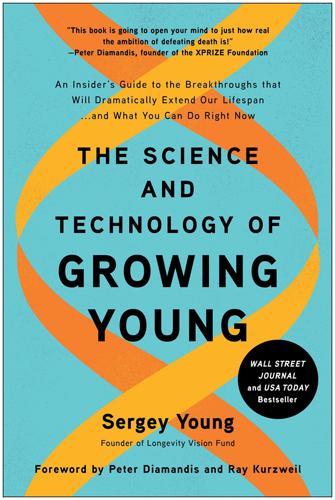
The Science and Technology of Growing Young: An Insider's Guide to the Breakthroughs That Will Dramatically Extend Our Lifespan . . . And What You Can Do Right Now
by
Sergey Young
Published 23 Aug 2021
Connon, "3D bioprinting of a corneal stroma equivalent," <style face=”italic”>Experimental Eye Research</style> 173 (2018 18Kristin Samuelson, “3-D printed ovaries produce healthy offspring,” Northwestern University, last modified May 16, 2017, https://news.northwestern.edu/stories/2017/may/3-d-printed-ovaries-offspring/. 19Jonathan Shieber, “3D-printing organs moves a few more steps closer to commercialization,” Tech Crunch, last modified August 11, 2019, https://techcrunch.com/2019/08/11/3d-printing-organs-moves-a-few-more-steps-closer-to-commercialization/. 20“TAU scientists print first ever 3D heart using patient’s own cells,” Tel Aviv University, last modified April 16, 2019, https://english.tau.ac.il/news/printed_heart. 21Megan Garber, “The Perfect, 3,000-Year-Old Toe: A Brief History of Prosthetic Limbs,” The Atlantic, last modified November 21, 2013, https://www.theatlantic.com/technology/archive/2013/11/the-perfect-3-000-year-old-toe-a-brief-history-of-prosthetic-limbs/281653/; “Copy of an Etruscan denture, Europe, 1901-1930,” Science Museum Group, accessed July 20, 2020, http://broughttolife.sciencemuseum.org.uk/broughttolife/objects/display?
…
Daniel is a youthful-looking, high-energy repository of knowledge with a passing resemblance to Steve from the children’s show Blue’s Clues. He rattles off statistics and studies from the precision medicine universe with confidence. Notably, Daniel is also the founder of several start-ups, including Intellimedicine, which is developing a machine to 3D-print personalized Intellimeds containing exactly the right molecules, in exactly the right doses, that correspond to your conditions, nutritional needs, and daily health status. Intellimed’s prototype 3D printer has sixteen silos, which can combine 1- to 2-milligram microdoses of multiple substances into a single pill.
…
It’s most important to pursue a diversity of options.”16 I met Martine at the SUMMIT LA—perhaps the best convergence of amazing ideas and people on Earth. If you have time, dig into Martine’s fascinating life story. She is a giant of our time. Finally, another Near Horizon method of organ regeneration is 3D bioprinting. 3D bioprinting works just like the industrial and consumer sorts of 3D printing that you are no doubt familiar with. But instead of using plastic resins, it typically uses “bio-ink”—specialized, living concoctions of proteins and pluripotent stem cells differentiated into the cells of the desired organ or tissue. These are typically then printed directly onto a collagen scaffolding resembling the shape of the target organ.

Click Here to Kill Everybody: Security and Survival in a Hyper-Connected World
by
Bruce Schneier
Published 3 Sep 2018
Nicole Perlroth and David Sanger (15 Mar 2018), “Cyberattacks put Russian fingers on the switch at power plants, U.S. says,” New York Times, https://www.nytimes.com/2018/03/15/us/politics/russia-cyberattacks.html. 2The hacker wrote a program: Christopher Meyer (8 Feb 2017), “This teen hacked 150,000 printers to show how the Internet of Things is shit,” Vice Motherboard, https://motherboard.vice.com/en_us/article/nzqayz/this-teen-hacked-150000-printers-to-show-how-the-internet-of-things-is-shit. 2Earlier in the same year: Carl Straumsheim (27 Jan 2017), “More anti-Semitic fliers printed at universities,” Inside Higher Ed, https://www.insidehighered.com/quicktakes/2017/01/27/more-anti-semitic-fliers-printed-universities. 3These are still in their infancy: Jennifer Kite-Powell (29 Oct 2014), “3D printed virus to attack cancer cells,” Forbes, https://www.forbes.com/sites/jenniferhicks/2014/10/29/3d-printed-virus-to-attack-cancer-cells/#7a8dbddb104b. Katie Collins (16 Oct 2014), “Meet the biologist hacking 3D printed cancer-fighting viruses,” Wired UK, https://www.wired.co.uk/article/andrew-hessel-autodesk. 4Modern pacemakers: University of the Basque Country (28 Jan 2015), “Pacemakers with Internet connection, a not-so-distant goal,” Science Daily, https://www.sciencedaily.com/releases/2015/01/150128113715.htm. 4insulin pumps: Brooke McAdams and Ali Rizvi (4 Jan 2016), “An overview of insulin pumps and glucose sensors for the generalist,” Journal of Clinical Medicine 5, no. 1, http://www.mdpi.com/2077-0383/5/1/5.
…
Alex Horton (3 Oct 2017), “The Las Vegas shooter modified a dozen rifles to shoot like automatic weapons,” Washington Post, https://www.washingtonpost.com/news/checkpoint/wp/2017/10/02/video-from-las-vegas-suggests-automatic-gunfire-heres-what-makes-machine-guns-different. 91That gun-carrying drone will become: ReprapAlgarve (23 Sep 2016), “DIY 3D printed assassination drone,” YouTube, https://www.youtube.com/watch?v=N3mdUjT6C5w. 91Liberal democracies are more vulnerable: Jack Goldsmith and Stuart Russell (5 Jun 2018), “Strengths Become Vulnerabilities: How a Digital World Disadvantages the United States in Its International Relations,” Aegis Series Paper, Hoover Working Group on National Security, Technology, and Law, https://www.hoover.org/sites/default/files/research/docs/381100534-strengths-become-vulnerabilities.pdf 92“Our economy is more digitalized”: Barack Obama (16 Dec 2016), “Press conference by the president,” White House Office of the Press Secretary, https://obamawhitehouse.archives.gov/the-press-office/2016/12/16/press-conference-president. 92This asymmetry makes deterrence more difficult: Joseph Nye has written extensively about deterrence in cyberspace.
…
Baker (22 Jul 2016), “The case for limited hackback rights,” Washington Post, https://www.washingtonpost.com/news/volokh-conspiracy/wp/2016/07/22/the-case-for-limited-hackback-rights. 205For example, what Mattel, Disney: Charles Finocchiaro (18 Mar 2013), “Personal factory or catalyst for piracy? The hype, hysteria, and hard realities of consumer 3-D printing,” Cardozo Arts and Entertainment Law Journal 31, http://www.cardozoaelj.com/issues/archive/2012-13. Matthew Adam Susson (Apr 2013), “Watch the world ‘burn’: Copyright, micropatent and the emergence of 3D printing,” Chapman University School of Law, http://papers.ssrn.com/sol3/papers.cfm?abstract_id=2253109. 206I worry that analogous laws: Cory Doctorow (10 Jan 2012), “Lockdown: The coming war on general-purpose computing,” Boing Boing, http://boingboing.net/2012/01/10/lockdown.html. Cory Doctorow (23 Aug 2012), “The coming civil war over general purpose computing,” Boing Boing, http://boingboing.net/2012/08/23/civilwar.html. 206With respect to radios, one solution: Kristen Ann Woyach et al. (23–26 Sep 2008), “Crime and punishment for cognitive radios,” 2008 46th Annual Allerton Conference on Communication, Control, and Computing, http://ieeexplore.ieee.org/document/4797562. 12.

Greater: Britain After the Storm
by
Penny Mordaunt
and
Chris Lewis
Published 19 May 2021
Further developments on the Internet will only be deflationary if they manage to increase trade and the amount of money does not increase accordingly.22 We’re at the start of a new and emerging global market for goods and services driven by data. You might not think this applies to physical goods, but what are these goods except solidified data? With the growth of 3D printing,23 we’re already beginning to see the data blueprint for many products transmitted across borders and printed out or assembled locally. The question of how governments will charge import duties on data remains, but it’s a question that should be answered sooner rather than later. Here are just some items that can be 3D printed: musical instruments, food via open-sourced ‘growbots’, quick-build homes, body parts/prosthetic limbs, electric vehicles, firearms, plastic components.24 From time to time throughout the centuries, governments, whether they admit it or not, have inflated their way out of debt.
…
r=6 14 Op. cit. 15 https://winstonchurchill.org/publications/finest-hour/finest-hour-118/wit-and-wisdom-10/ 16 https://itep.org/60-fortune-500-companies-avoided-all-federal-income-tax-in-2018-under-new-tax-law/ 17 https://www.un.org/africarenewal/magazine/december-2013/africa-loses-50-billion-every-year 18 https://www.ifs.org.uk/publications/9178 19 https://www.wsj.com/articles/tax-competition-works-for-europe-1416511643 20 https://ourworldindata.org/economic-growth 21 https://www.mckinsey.com/business-functions/mckinsey-digital/our-insights/digital-globalization-the-new-era-of-global-flows 22 https://www.youtube.com/watch?v=GTG2VvvIs1o 23 https://www.newscientist.com/article/2110280-what-can-we-3d-print-everything-here-are-8-awesome-examples/ 24 https://all3dp.com/1/3d-printing-materials-guide-3d-printer-material/ 25 https://www.bbc.com/news/business-40189959 26 https://www.theguardian.com/business/2013/sep/10/banknotes-history 27 https://www.economist.com/leaders/2017/05/06/the-worlds-most-valuable-resource-is-no-longer-oil-but-data 28 https://www.wired.com/story/no-data-is-not-the-new-oil/ 29 https://datareportal.com/reports/digital-2019-global-digital-overview 30 https://www.oecd.org/internet/ascendancy-digital-trade-new-world-order.htm 31 https://e-estonia.com/solutions/e-governance/i-voting/ 32 https://www.cnbc.com/2020/11/19/Covid-drives-global-debt-to-a-new-record-high.html 33 https://money.cnn.com/2017/01/12/pf/americans-lack-of-savings/index.html 34 https://www.theguardian.com/money/2018/jan/25/uk-workers-chronically-broke-study-economic-insecurity 35 https://www.forbes.com/2009/11/03/capitalism-greed-recession-forbes-opinions-markets.html?
…
Thus, the creativity is incremental rather than revolutionary, although it is now moving into completely new areas. It has the world’s largest floating solar power plant, the largest waste-to-energy plant and a string of world firsts. It has the world’s first passenger and delivery drone, trackless smart train, electromagnetic hypersonic cannon, forest city, solar motorway, 3D printed car, fully electric cargo ship, quantum satellite and unhackable computer.22 Whether innovation in scaling or improving, it is churlish for the West to say that it doesn’t exist in China. It does and it’s everywhere. ‘China has destroyed its own environment.’ China is spending heavily on an environmental clean-up.
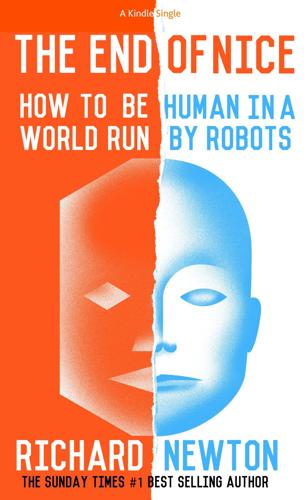
The End of Nice: How to Be Human in a World Run by Robots (Kindle Single)
by
Richard Newton
Published 11 Apr 2015
The Machine can only do what is logical based on a set of rules. But it can’t do what is inexplicable. …And that inexplicable thing is something uniquely human, something that no other animal does, that no machine can do, that provides joy and fulfillment and cannot be routinised, replicated and 3D-printed – it is simply to be creative. Being futureproof is about creativity in the broadest sense. The sense that recognises the daring, the flights of imagination realised by chemists, builders, business owners, chefs, growth hackers and teachers can be creative. It’s what comes from wanting to make a difference, to make a connection, to innovate and add value by bringing the best of yourself to bear upon the world.
…
And as jobs and companies get accelerated into the history books by permanent acceleration, this sort of motivation will bring forth only more shallow results. In contrast, start-up companies are bursting with a sense of mission and a satchel full of doubt. The very creation of a business that dreams to do something new and better – whether it’s 3D printing jewellery, sorting out online storage (like Dropbox), or disrupting the taxi business (Uber)the important thing they do is acknowledge that yes, they have doubts and then they press on and start to make, solve, fix, do, create. That first step gets them on the path to working things out en route.

Future Crimes: Everything Is Connected, Everyone Is Vulnerable and What We Can Do About It
by
Marc Goodman
Published 24 Feb 2015
Autonomous Killer Robots Are Already Here,” NBC News, May 14, 2014. 79 Goldman Sachs has noted: Goldman Sachs, 2013 Annual Report, http://www.goldmansachs.com/; Matt Clinch, “3-D Printing Market to Grow 500% in 5 Years,” CNBC, April 1, 2014. 314 Digital fabrication: Jessica Leber, “This Man Thinks He Can 3-D Print an Entire House,” Co.Exist, Nov. 12, 2013. 80 Bio-fabricating printers: Lyndsey Gilpin, “New 3D Bioprinter to Reproduce Human Organs, Change the Face of Healthcare,” Tech-Republic, Aug. 1, 2014; Melissa Davey, “3D Printed Organs Come a Step Closer,” Guardian, July 4, 2014; Kate Lyons, “Humans Could Be Fitted with Kidneys Made on 3D Printers,” Mail Online, May 23, 2014. 81 Today most 3-D printers: Ben Rooney, “The 3D Printer That Prints Itself,” Wall Street Journal, June 10, 2011; Brad Hart, “Will 3D Printing Change the World?,” Forbes, March 6, 2012. 82 The Gartner group: Gartner, “Gartner Says Uses of 3D Printing Will Ignite Major Debate on Ethics and Regulation,” Gartner.com, Jan. 29, 2014. 83 Digital manufacturing will also be a boon: Drew Prindle, “KeyMe Joins Forces with Shapeways to Bring You Custom 3D-Printed Key Copies,” Digital Trends, Dec. 17, 2013. 84 There are apps too: Ann Givens and Chris Glorioso, “New Technology Could Let Thieves Copy Keys,” NBC New York, May 21, 2014. 85 In 2012, cops uncovered: Andy Greenberg, “Hacker Opens High Security Handcuffs with 3D-Printed and Laser-Cut Keys,” Forbes, July 16, 2012. 86 While the potential humanitarian benefits: Tim Adams, “The ‘Chemputer’ That Could Print Out Any Drug,” Guardian, July 21, 2012. 87 Wilson created the Wiki Weapon Project: Carole Cadwalladr, “Meet Cody Wilson, Creator of the 3D-Gun, Anarchist, Libertarian,” Guardian, Feb. 8, 2014. 88 The lower receiver: Andy Greenberg, “Here’s What It Looks Like to Fire a (Partly) 3D-Printed Gun,” Forbes, Dec. 3, 2012. 89 In May 2013: Andy Greenberg, “Meet the ‘Liberator’: Test-Firing the World’s First Fully 3D-Printed Gun,” Forbes, May 5, 2013. 90 Wilson’s efforts have left: Andy Greenberg, “How 3-D Printed Guns Evolved into Serious Weapons in Just One Year,” Wired, May 15, 2014. 316 These plastic firearms: Cheryl K.
…
,” Forbes, March 6, 2012. 82 The Gartner group: Gartner, “Gartner Says Uses of 3D Printing Will Ignite Major Debate on Ethics and Regulation,” Gartner.com, Jan. 29, 2014. 83 Digital manufacturing will also be a boon: Drew Prindle, “KeyMe Joins Forces with Shapeways to Bring You Custom 3D-Printed Key Copies,” Digital Trends, Dec. 17, 2013. 84 There are apps too: Ann Givens and Chris Glorioso, “New Technology Could Let Thieves Copy Keys,” NBC New York, May 21, 2014. 85 In 2012, cops uncovered: Andy Greenberg, “Hacker Opens High Security Handcuffs with 3D-Printed and Laser-Cut Keys,” Forbes, July 16, 2012. 86 While the potential humanitarian benefits: Tim Adams, “The ‘Chemputer’ That Could Print Out Any Drug,” Guardian, July 21, 2012. 87 Wilson created the Wiki Weapon Project: Carole Cadwalladr, “Meet Cody Wilson, Creator of the 3D-Gun, Anarchist, Libertarian,” Guardian, Feb. 8, 2014. 88 The lower receiver: Andy Greenberg, “Here’s What It Looks Like to Fire a (Partly) 3D-Printed Gun,” Forbes, Dec. 3, 2012. 89 In May 2013: Andy Greenberg, “Meet the ‘Liberator’: Test-Firing the World’s First Fully 3D-Printed Gun,” Forbes, May 5, 2013. 90 Wilson’s efforts have left: Andy Greenberg, “How 3-D Printed Guns Evolved into Serious Weapons in Just One Year,” Wired, May 15, 2014. 316 These plastic firearms: Cheryl K.
…
,” Forbes, March 6, 2012. 82 The Gartner group: Gartner, “Gartner Says Uses of 3D Printing Will Ignite Major Debate on Ethics and Regulation,” Gartner.com, Jan. 29, 2014. 83 Digital manufacturing will also be a boon: Drew Prindle, “KeyMe Joins Forces with Shapeways to Bring You Custom 3D-Printed Key Copies,” Digital Trends, Dec. 17, 2013. 84 There are apps too: Ann Givens and Chris Glorioso, “New Technology Could Let Thieves Copy Keys,” NBC New York, May 21, 2014. 85 In 2012, cops uncovered: Andy Greenberg, “Hacker Opens High Security Handcuffs with 3D-Printed and Laser-Cut Keys,” Forbes, July 16, 2012. 86 While the potential humanitarian benefits: Tim Adams, “The ‘Chemputer’ That Could Print Out Any Drug,” Guardian, July 21, 2012. 87 Wilson created the Wiki Weapon Project: Carole Cadwalladr, “Meet Cody Wilson, Creator of the 3D-Gun, Anarchist, Libertarian,” Guardian, Feb. 8, 2014. 88 The lower receiver: Andy Greenberg, “Here’s What It Looks Like to Fire a (Partly) 3D-Printed Gun,” Forbes, Dec. 3, 2012. 89 In May 2013: Andy Greenberg, “Meet the ‘Liberator’: Test-Firing the World’s First Fully 3D-Printed Gun,” Forbes, May 5, 2013. 90 Wilson’s efforts have left: Andy Greenberg, “How 3-D Printed Guns Evolved into Serious Weapons in Just One Year,” Wired, May 15, 2014. 316 These plastic firearms: Cheryl K. Chumley, “Israeli TV Crew Sneaks Printed 3-D Gun into Knesset—Twice,” Washington Times, July 4, 2013. 91 Other repositories: Greenberg, “How 3-D Printed Guns Evolved into Serious Weapons in Just One Year.” 92 The FBI’s Terrorist Explosive Device Analytical Center: Aliya Sternstein, “The FBI Is Getting Its Own, Personal 3D Printer for Studying Bombs,” Next gov, June 13, 2014.

AI 2041: Ten Visions for Our Future
by
Kai-Fu Lee
and
Qiufan Chen
Published 13 Sep 2021
The position was his under the condition of his showing up for an interview in person. As Amaka entered a small reception area on the third floor, the receptionist smiled and pointed to Amaka’s mask, indicating he should remove it for an identity check. The young man hesitated, then took his mask off. Reflected in the camera lens was a young, smooth face. His 3D-printed mask couldn’t match the delicate quality of the pricey handmade versions sold at absurd prices to tourists in the Lekki Market, but the coarse reproduction, with its butterfly-like pattern, was enough to fool the facial recognition algorithm of most common surveillance cameras. In the eyes of AI, Amaka was a “faceless person.”
…
“I will be the master of my own destiny and will decide when it is time for death to take me,” whispered the boy earnestly, as if chanting a magic spell. The quote was from Fela Kuti himself—an explanation of his middle name, Anikulapo, which meant “he who carries death in his pouch” in Yoruba. Amaka entered a few lines of command on his smartstream and tossed it into a trash can. He pulled out his crude 3D-printed mask and concealed his face behind it. He prayed that he could get away—as far as possible before Chi realized what he had done. He would leave Lagos, leave this enormous city drenched in spray-painted Eko o ni baje—meaning “Lagos must not spoil”—and return to his home with a smell resembling the freshness of earth.
…
Jennifer had joined the company amid a period of huge opportunity—and stress. Michael was determined to win the Landmark construction contract. With the traditional construction industry evolving toward digitalization, Landmark had opted for wide-scale replacement of traditional human roles with automation, prefabricated 3D-printed components, and AI designers. The result would be a major round of layoffs, primarily of blue-collar workers. To go through with the plan, the government required Landmark to retain the services of an occupational restoration company. In one fell swoop, thousands of workers would need to be steered toward new jobs.

The Future Is Asian
by
Parag Khanna
Published 5 Feb 2019
According to Rakuten founder Hiroshi Mikitani, “The greatest business risk [Japan] faces is that of staying at home.”20 Japan is invigorating its already deep advantages in precision industries through new public-private alliances amounting to several trillion dollars devoted to the Internet of Things (IoT), big data, AI, 3D printing, robotics, biotech, health care, clean energy, enhanced agriculture, and other sectors—all ready for export to Asia’s high-growth markets. SoftBank has become Japan’s standout example of a bridge between Japan, Asia, and the world. SoftBank’s Vision Funds—in which Saudi Arabia is the largest investor followed by the UAE—are the largest technology portfolio in the world, making aggressive investments in semiconductors, satellites, artificial intelligence, and IoT companies around the world.
…
Similarly, professional services and consulting firms such as McKinsey & Company, Deloitte, KPMG, Accenture, and Ernst & Young have all expanded their Asia-based practice areas from infrastructure advisory to fintech to help Asian clients improve their corporate governance and consumer offerings. The growing adoption of 3D printing for designing and producing auto components, medical devices, and various consumer products on a large scale might replace large volumes of goods mass-manufactured in Asia and reimported to the United States and Europe. But since most such goods are sold in Asia anyway, more and more companies are positioning these technologies as much abroad as at home.
…
The German architect Ole Scheeren has designed award-winning East Asian buildings such as the Interlace in Singapore, the MahaNakhon tower in Bangkok and, in Ho Chi Minh City, the Empire City project, where green design will meet the natural green of Vietnam’s tropical flora. British architect Norman Foster designed an entire new sustainable capital city, Amaravati, for the Indian state of Andhra Pradesh. And for Asia’s masses, a dozen European companies have developed low-cost 3D printed homes made of snap-together parts.7 Another valuable service Europeans have to offer Asians is moving money across borders. HSBC, Standard Chartered, and other banks with colonial origins have been operating in dozens of Asian markets for generations and have broad regional networks that most national Asian banks haven’t yet built.
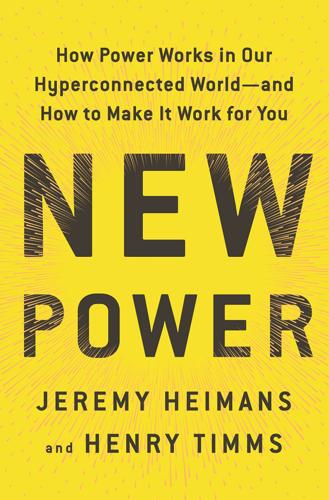
New Power: How Power Works in Our Hyperconnected World--And How to Make It Work for You
by
Jeremy Heimans
and
Henry Timms
Published 2 Apr 2018
But despite good intentions, these people often end up as “digital beards,” providing cover for a risk-averse leader and an unchanging strategy, and relegated to the margins of power and influence within the organization. They are often a small department paid to think about the future, resented by the rest of the organization for not doing what is considered “real work.” They cut ribbons at openings for 3D printing labs but in reality are often siloed and underfunded. Instead of the “beard,” what organizations really need is a “bridge,” that person who can meaningfully connect his organization to the new power world, making the practical “jumps” between old and new power. A bridge’s work is structural, above all.
…
“We do our best thinking and creating behind open doors.” That slogan is one of the rallying cries of Local Motors, and it announces a very different kind of car company. The Financial Post describes Local Motors’ business model as “so radical that it’s hard to comprehend at first: crowd-sourced, 3D-printed electric vehicles built in local microfactories the size of grocery stores, then sold directly to consumers.” Local Motors has a community of 50,000 people not on its payroll who design and develop concepts for vehicles that the company makes and sells in small batches. Think artisanal jam, only with engines.
…
You’ve said that identifying rattles and noises is difficult because parts are buried within the inaccessible depths of your cars’ structures. It’s like we’re all driving mystery machines.” Here’s how Local Motors framed one of its most recent challenges to its community: to imagine the world’s first highway-ready 3D-printed car, with open-source design and parts so that anyone can repair it, and a modular concept that allows the owner to create a vehicle to his or her own specifications. The winning design was the “Swim,” the brainchild of Kevin Lo of Vancouver (username Reload), a Hewlett-Packard engineer who had taken to learning about car design in his spare time to get better at the user-interaction aspects of his full-time job.

MegaThreats: Ten Dangerous Trends That Imperil Our Future, and How to Survive Them
by
Nouriel Roubini
Published 17 Oct 2022
“The Return of the Machinery Question,” The Economist, June 25, 2016, https://www.economist.com/special-report/2016/06/23/the-return-of-the-machinery-question. 2. Sarah Paynter, “First 3-D-Printed House for Sale Listed at $300K on Long Island,” New York Post, February 8, 2021, https://nypost.com/2021/02/08/first-3d-printed-house-for-sale-listed-in-long-island-new-york/. 3. Aleksandar Furtula, “Dutch Queen and Robot Open 3D-printed Bridge in Amsterdam,” AP News, July 15, 2021, https://apnews.com/article/technology-europe-amsterdam-a37e034e02967886c2e0a64c17f34f3a. 4. “In the Age of AI,” Frontline, PBS, December 2, 2019, https://www.youtube.com/watch?v=5dZ_lvDgevk (@ approx. 3:55). 5.
…
Salesforce, a public company that helps other companies reach customers, got the message and acquired MetaMind.1 Here’s one recent example of technology that reduces costs and eliminates jobs, one that could be directed by AI. Early in 2021, the New York Post reported that a 1,407-square-foot gray house with white trim and a front porch on a quarter-acre lot went up for sale in Calverton, New York. As the first 3D-printed house to obtain approval for sale on Long Island, it made news.2 Equipment that prints houses and office buildings resembles a giant hot glue gun on a mechanical arm. Guided by a computer, it dispenses layers of liquid cement in lines to create walls, leaving space for windows and doors. Constructing the frame in nine days required just two workers to monitor the equipment.
…
“It’s not about making things cheaper and more efficient for us,” Tim Geurtjens said, “it’s about giving architects and designers a new tool—a new very cool tool—in which they can rethink the design of their architecture and their designs.”3 But now consider the power of AI connected to this scale of 3D printing. When will a computer propose designs without a bridge architect? An architect spends years learning her craft by studying engineering and design. A computer could acquire as much structural knowledge in less than a day. Do not suppose that creativity requires people. The elusive spark of human ingenuity faces digital competition.
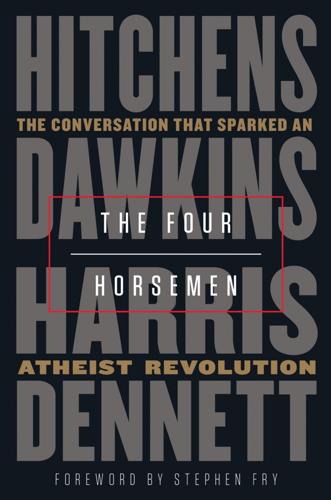
The Four Horsemen
by
Christopher Hitchens
,
Richard Dawkins
,
Sam Harris
and
Daniel Dennett
Published 19 Mar 2019
Your smartphone, your laptop computer, the satnav in your car and the satellites that feed it, your car itself, the giant airliner that can loft not just its own weight plus passengers and cargo but also the 120 tons of fuel it ekes out over a thirteen-hour journey of seven thousand miles. Less familiar, but destined to become more so, is 3D printing. A computer ‘prints’ a solid object, say a chess bishop, by depositing a sequence of layers, a process radically and interestingly different from the biological version of ‘3D printing’ which is embryology. A 3D printer can make an exact copy of an existing object. One technique is to feed the computer a series of photographs of the object to be copied, taken from all different angles.

Stakeholder Capitalism: A Global Economy That Works for Progress, People and Planet
by
Klaus Schwab
Published 7 Jan 2021
This time, the new frontiers of globalization are the cyber world (including cybercrime), climate change, and the increased threat posed by viruses. The digital economy, in its infancy during the third wave of globalization, has become a force to reckon with through e-commerce, digital services, and 3D printing. Digital globalization, in fact, has become a global economic power hiding in plain sight. While most countries still focus on physical trade when negotiating trade agreements or pursuing industrial policies, digital trade has become by some measures as large or even multiple times larger than physical trade—though there is no way of knowing.
…
Indeed, they didn't just pause and reflect on their own lives and careers but on the merits and shortcomings of our global economic system at large, and the potential of other ways of producing and consuming necessary goods and services. Should Europeans and Americans still procure goods from China or other overseas destinations, given their environmental footprint and the fragility of supply chains? Or can they near-shore or even re-shore production, thanks to advances in automation and 3D printing? Should countries with different labor, competition, and industrial policies be trading at all, given the tilted playing field that results from such policies? And, for that matter, has globalization stopped being a force for good? Or was it never one, after all? Globalization Today The history of globalization shows us in fact that trade can be an incredibly powerful force, which can connect people and generate enormous prosperity.
…
I too share the concern over the future of work in this era of automation. Back in 2015, I realized we were at the dawn of a new era—one of artificial intelligence, advanced robotics, and integrated cyber-physical systems—and that together they constituted a Fourth Industrial Revolution. The new technologies we were witnessing, including also 3D printing, quantum computing, precision medicine, and others, I came to believe, were on par with that of the First Industrial Revolution—the steam engine—those of the Second Industrial Revolution—the combustion engine and electricity—and that of the Third Industrial Revolution—information technology and computing.

Stakeholder Capitalism: A Global Economy That Works for Progress, People and Planet
by
Klaus Schwab
and
Peter Vanham
Published 27 Jan 2021
This time, the new frontiers of globalization are the cyber world (including cybercrime), climate change, and the increased threat posed by viruses. The digital economy, in its infancy during the third wave of globalization, has become a force to reckon with through e-commerce, digital services, and 3D printing. Digital globalization, in fact, has become a global economic power hiding in plain sight. While most countries still focus on physical trade when negotiating trade agreements or pursuing industrial policies, digital trade has become by some measures as large or even multiple times larger than physical trade—though there is no way of knowing.
…
Indeed, they didn't just pause and reflect on their own lives and careers but on the merits and shortcomings of our global economic system at large, and the potential of other ways of producing and consuming necessary goods and services. Should Europeans and Americans still procure goods from China or other overseas destinations, given their environmental footprint and the fragility of supply chains? Or can they near-shore or even re-shore production, thanks to advances in automation and 3D printing? Should countries with different labor, competition, and industrial policies be trading at all, given the tilted playing field that results from such policies? And, for that matter, has globalization stopped being a force for good? Or was it never one, after all? Globalization Today The history of globalization shows us in fact that trade can be an incredibly powerful force, which can connect people and generate enormous prosperity.
…
I too share the concern over the future of work in this era of automation. Back in 2015, I realized we were at the dawn of a new era—one of artificial intelligence, advanced robotics, and integrated cyber-physical systems—and that together they constituted a Fourth Industrial Revolution. The new technologies we were witnessing, including also 3D printing, quantum computing, precision medicine, and others, I came to believe, were on par with that of the First Industrial Revolution—the steam engine—those of the Second Industrial Revolution—the combustion engine and electricity—and that of the Third Industrial Revolution—information technology and computing.

The Rise and Fall of American Growth: The U.S. Standard of Living Since the Civil War (The Princeton Economic History of the Western World)
by
Robert J. Gordon
Published 12 Jan 2016
Only terminally ill people see some benefit.”82 In spite of these formidable barriers and the generally stagnant trends of the past several decades—from unchanging cancer treatments to static new drug approvals—medical optimists continue to extol inventions such as diagnostic robots83 or 3D printing of internal organs. Even if robots and 3D printing can improve the efficacy of surgery, however, the gains will likely be minor compared to the achievements of the decades between 1940 and 1970, including antibiotics and the development of the basic tools to fight CVD and cancer. Furthermore, as we will see in the following section, the problems of the U.S. medical system lie not in the scarcity of advanced modern technology, but rather, at least to some extent, in its overuse.
…
The difference between picking up a lace nightgown versus unraveling a pair of crumpled jeans knotted with other clothes is a calculation that requires massive computing power and a soft touch.55 3D printing is another revolution described by the techno-optimists. Its most important advantage is the potential to speed up the design process of new products. New prototypes can be designed in days or even hours rather than months and can be created at relatively low cost, lowering one major barrier to entry for entrepreneurs trying to attract financing for their startups. New design models can be simultaneously produced at multiple locations around the world. 3D printing also excels at one-off customized operations, such as the ability to create a crown in a dentist office instead of having to send out a mold, reducing the process of creating and installing a dental crown from two office visits to one.
…
Thus it may contribute to productivity growth by reducing certain inefficiencies and lowering barriers to entrepreneurship, but these are unlikely to be huge effects felt throughout the economy. 3D printing is not expected to have much effect on mass production and thus on how most U.S. consumer goods are produced. Big Data and Artificial Intelligence. The core of the optimists’ case lies not with physical robots or 3D printing but with the growing sophistication and humanlike abilities of computers that are often described as “artificial intelligence.” Brynjolfsson and McAfee provide many examples to demonstrate that computers are becoming sufficiently intelligent to supplant a growing share of human jobs.

Visual Thinking: The Hidden Gifts of People Who Think in Pictures, Patterns, and Abstractions
by
Temple Grandin, Ph.d.
Published 11 Oct 2022
Wall Street Journal, December 12, 2013, A1, A4. Barstow, D., D. Rohde, and S. Saul. “Deepwater Horizon’s Final Hours.” New York Times, December 25, 2010, https://www.nytimes.com/2010/12/26/us/26spill.html. Benedict. “Google AI Sees 3D Printed Turtle as a Rifle, MIT Researchers Explain Why.” 3D Printer and 3D Printing News, November 2, 2017. https://www.3ders.org/articles/20171102-google-ai-sees-3d-printed-turtle-as-a-rifle-mit-researchers-explain-why.html. Bennett, J. “Screws and Washers Are Falling off NASA’s Multi-Billion Dollar Space Telescope.” Popular Mechanics, May 3, 2018. Bloomberg. “Lion Air Pilots Battled Confusing Malfunctioning before Deadly Crash.”
…
Scheck, W. “Lawrence Sperry: Genius on Autopilot.” HistoryNet. https://www.historynet.com/lawrence-sperry-autopilot-inventor-and-aviation-innovator.htm. Schindler, J. “The Benefits of Cognitive Diversity.” Forbes, November 26, 2018. Sciaky, Inc. “The EBAM 300 Series Produces the Largest 3D Printed Metal Parts and Prototypes in the Addictive Manufacturing Market,” 2021. https://www.sciaky.com/largest-metal-3D-printer-available/. “The Seamstresses Who Helped Put Men on the Moon.” CBS News, July 14, 2019. https://www.cbsnews.com/news/apollo-11-the-seamstresses-who-helped-put-a-man-on-the-moon/.
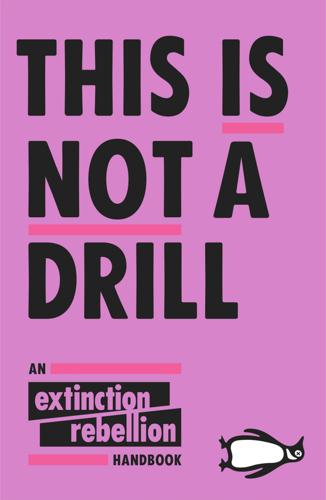
This Is Not a Drill: An Extinction Rebellion Handbook
by
Extinction Rebellion
Published 12 Jun 2019
It was by far the largest fee I had ever been offered for a talk – about half my annual professor’s salary – all to deliver some insight on the subject of ‘the future of technology’. I’ve never liked talking about the future. The Q&A sessions always end up more like parlour games where I’m asked to opine on the latest technology buzzwords as if they were ticker symbols for potential investments: blockchain, 3D printing, CRISPR. The audiences are rarely interested in learning about these technologies or their potential impacts beyond the binary choice of whether or not to invest in them. But money talks, so I took the gig. After I arrived, I was ushered into what I thought was the Green Room. But instead of being wired with a microphone or taken to a stage, I just sat there at a plain round table as my audience was brought to me: five super-wealthy guys – yes, all men – from the upper echelon of the hedge-fund world.
…
For the first time in human history, innovations in four key technologies – how we generate energy, how we make things, how we communicate and how we share knowledge – are giving us the chance to create economies that are far more distributive by design. Energy generation is switching from oil rig to solar panel. Making things is shifting from mega factory to desktop 3D printing. Communications have already leapt from switchboards to mobile networks. And knowledge sharing is evolving from patents to open source. Of course, these technologies – especially digital networks – can also be captured in few hands, but if regulated, designed and owned for the common good, their distributive potential is profound.
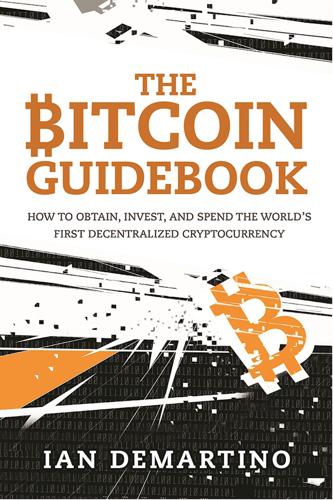
The Bitcoin Guidebook: How to Obtain, Invest, and Spend the World's First Decentralized Cryptocurrency
by
Ian Demartino
Published 2 Feb 2016
Ross Ulbricht: Was accused and convicted of being Dread Pirate Roberts; his case is under appeal. Roger Ver: Angel investor and Bitcoin evangelist; CEO of Memorydealers.com, one of the first sites to accept Bitcoin, and founder of the company Blockchain. Cody Wilson: Dark Wallet co-creator and 3D-printed gun designer. Craig Wright: A recent addition to the search for Satoshi Nakamoto. Wired magazine recently reported he was “probably” the creator of Bitcoin (or wanted the world to think he was). In May 2016, he attempted to prove that he had created Bitcoin by signing a message using an account associated with Satoshi Nakamoto.
…
One of the most promising technologies in this specific niche of the Bitcoin ecosystem was Darkwallet, but it seems development has halted on the project as the developers ran out of money, despite having raised a lot of it. It is not currently in a usable state. Co-invented by Cody Wilson, the creator of the 3D-printed gun, and Amir Taaki, the creator of Darkmarket, Darkwallet is a decentralized mixing service. Both of its inventors have anti-authoritarian, pro-individual freedom histories and politics. Nevertheless, their projects shouldn’t be considered as radical as they are often painted by the mainstream media.
…
The documentary Deep Web, directed by Alex Winter, opens with a quote from OpenBazaar developer Amir Taaki: “The fascists, they have resources, but we have imagination. We are making the tools to take back our sovereignty.”7 The same sort of philosophy was behind the Silk Road. It also continues to motivate Brian Hoffman’s OpenBazaar, Cody Wilson’s 3D-printed gun, Darkwallet, and a dozen other tools that scare the shit out of people who have devoted their whole lives to upholding the status quo. The Silk Road was an unregulated marketplace and a gathering place for like-minded individuals, many of whom were true believers in the philosophy described by Amir Taaki in the Deep Web documentary.
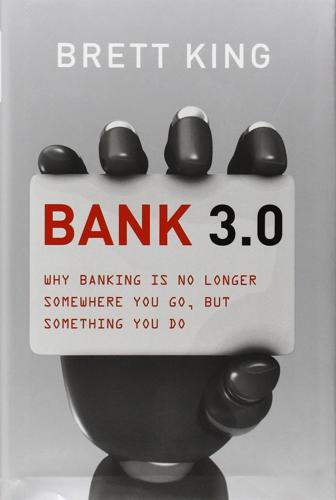
Bank 3.0: Why Banking Is No Longer Somewhere You Go but Something You Do
by
Brett King
Published 26 Dec 2012
Self-driving cars, computer-based personal assistants that can predict and anticipate our needs or manage our calendar without needing to ask us any questions; holographic telepresence when we’re away from our loved ones; computers built into everything, from the paint we put on our walls, the clothes to jewellery we wear, to sensors in our bathrooms that can monitor our health based on our morning’s ablutions . . . However, one of the most significant developments Kurzweil predicts centres around the development of 3D printing and replication technologies. “Ten years ago, if I wanted to send you a movie, I would have sent you a FedEx package. I can now send you an email attachment. The same goes for a music file or a book. What used to be physical products can now be sent as files of information.” —Ray Kurzweil, Vice Magazine interview, 20098 Ubiquitous 3D printing technology means I might soon be able to email you a toaster, toast, a blouse, a solar panel or a module to build housing or transportation.
…
In the past, manufacturing something made out of a plastic was generally done through a technique called injection moulding. For metal forms, components were either cut from a block of raw material, cast via a mould, or cut from steel plate. Often these methods required a very expensive mould or die that was used for that one single component. 3D printing allows new techniques such as additive manufacturing, where raw materials are used to build up the form gradually, printing one layer at a time. Figure 9.3: 3D printers are a reality today 3D printers are advancing in capability rapidly. Already 3D printers today can print wearable fabrics, integrated circuits, blood vessels, cells and organs (a kidney, a bladder and an ear have recently been printed, for example9), engine components, model aircraft, etc.
…
Technology is no longer exceptional, nor is it an alternative choice for consumers—it is the way we do our banking in the Bank 3.0 world. It is the primary, day-to-day relationship channel for your customers now. The branch cannot compete in any meaningful way. What will such a future bring? How does it impact service providers in the finance space? How can they prepare? Keywords: Disruptive, Moore’s Law, 3D Printing, Screens, Image Recognition, Exponential Growth, Haptic Touch, Artificial Intelligence, The Singularity Endnotes 1 Excerpts from A Conversation with Gordon Moore: Moore’s Law (Intel Corporation, 2005), p.1 2 IBM: History of Transistors, IBM 1401 3 http://archive.computerhistory.org/resources/text/Ferranti/Ferranti.Sirius.1961.102646236.pdf 4 mKomo.org, “A history of storage costs” (http://www.mkomo.com/cost-per-gigabyte) 5 See http://www.netlingo.com/word/gilders-law.php 6 See Wikipedia.org articles on WiMax, 4G, UMTS, and Spectra Efficiency of long-range networks utilizing 802.11, 802.16, and 802.20 standards 7 CNET News, 19 Nov 2008,Q&A: Kurzweil on tech as a double-edged sword, Natasha Lomas, http://news.cnet.com/cutting-edge/?
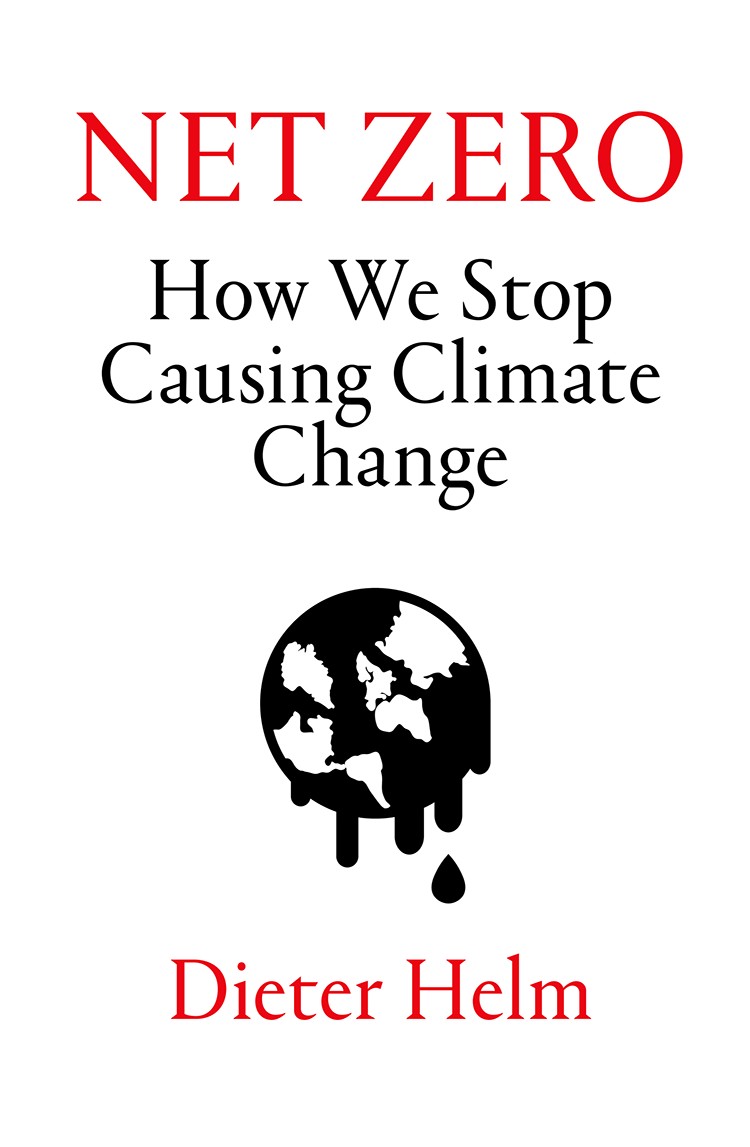
Net Zero: How We Stop Causing Climate Change
by
Dieter Helm
Published 2 Sep 2020
With the average age of farmers in most developed countries (including the US) at around 60, it will be a generational change too, with maths graduates increasingly taking over from students at agricultural training colleges. Digitalisation is not confined to robots, data and AI, but also includes the things that these will enable. 3D printing ushers in a much greater degree of customisation, as products are printed from digital images and instructions. The food chain itself has already been digitalised, but there is more to come here too, with blockchain and the internet-of-things allowing precision identification and tracking of each item and payment.
…
In both cases, while there may be long-run technological solutions, like solar- and battery-powered planes and hydrogen-powered ships, the more efficient answer is to reduce the demand. One of the silver linings of the developing trade wars and tariff increases is that they may reduce shipping. Once carbon consumption is considered, and 3D printing and robotics undermine the advantages of cheap labour in the Far East and especially China, reshoring of production is economically more attractive. This may, for non-carbon reasons, be the beginning of a slow but possibly permanent decline in global trade, and with it shipping. Add in carbon border adjustments so that the playing field is properly levelled, and trade should fall a bit further.
…
acid rain 25, 194 Africa xiv, xv, 2, 25, 30, 38, 44, 45, 47, 48, 51, 137, 229 agriculture 2, 6, 12, 13, 14, 23, 35–6, 43, 44–5, 70, 76, 86, 87–8, 95, 100, 102, 109, 116, 146–7, 149, 159, 163–80, 181, 183, 192, 197, 198, 206, 220 baseline, the 164–8 biodiversity loss and 2, 5, 100, 164, 165, 168, 169, 171, 172, 174, 180 biofuels and 197–8 carbon emissions and 2, 12, 13, 35–6, 76–7, 146–7, 163–80 carbon price and 167–70, 171, 172, 173, 180 China and 28–9, 35, 45, 180 economics of 76, 165, 166–7, 171, 174 electricity and 13, 166, 168, 174, 178, 180 fertiliser use see fertiliser lobby 14, 110, 164, 165, 169, 170, 197 methane emissions 23, 84, 177, 178, 179 net gain and 172–4 net value of UK 76, 166 new technologies/indoor farming 87–8, 174–9, 180, 213 peat bogs and 2, 179 pesticide use see pesticides petrochemicals and 166 polluter-pays principle and 76, 168–70, 172, 173 pollution 36, 86, 163, 165–6, 168–70, 172, 173, 177–8, 230 public goods, agricultural 170–4, 180 sequestering carbon and 12, 95, 163, 166, 168, 169, 170, 171, 172, 173–4, 177, 179, 180 soils and 2, 146, 163, 164, 165, 166, 168, 169, 171, 172, 175, 179 subsidies 14, 76, 102, 109, 116, 164, 165, 166, 167, 169, 170, 172, 180, 228 25 Year Plan and 179–80 Agriculture Bill (2018), UK 170 air conditioning 135–6, 224, 233 air quality xiii, 13, 25, 46, 52, 61, 70, 135, 153, 177, 180, 201, 216, 230, 232 air transport 3–4, 6, 11, 13, 22, 50, 53, 73, 87, 88, 92, 107, 125, 128, 129, 132, 133, 134, 149, 156–7, 186, 195, 201, 203–5 aluminium 7, 117 Amazon rainforest 2, 34, 35, 95, 145, 149–50, 151, 155, 229, 230 ammonia 35, 137, 191 anaerobic digesters 35, 165, 230 animal welfare 167, 177 antibiotics 93, 165, 174 Arctic 26, 46, 114, 178 artificial intelligence (AI) 32, 175, 220, 231 autonomous vehicles 13, 129, 132, 175, 189–90, 231 Balkans 137–8 Bank of England 121 batteries 6, 31, 131, 135, 141, 183, 184, 185–90, 191, 199, 204, 213, 214, 219, 220, 221, 225, 231 beef 5, 95, 116, 117, 167, 230 Berlin, Isaiah 104 big 5 polluter products 117–18, 120 bin Salman, Mohammad 27 biocrops 36 biodiversity xiv, 2, 5, 12, 13, 28, 35, 51, 76, 94, 100, 148, 149, 152, 153, 158, 159, 164, 165, 168, 169–70, 171, 172, 174, 180, 227, 233 bioenergy 31, 34–5, 36 biofuels 21, 35, 49, 50, 67, 70, 95, 135, 183, 184, 197–8, 210, 230 biomass 32, 34, 49, 50, 67, 69, 109, 146, 147, 151, 210, 217 bonds, government 220 BP 27, 149, 187, 199 Deepwater Horizon disaster, Gulf of Mexico (2010) 147 Brazil 2, 35, 38, 44–5, 47, 95, 145, 149–50, 155, 198 Brexit 42, 47, 56, 117, 165 British Gas 102, 139 British Steel x, 194 broadband networks 6, 11, 90, 92, 125, 126, 127–8, 130–1, 132–3, 135, 140–1, 199, 201, 202, 205, 211, 214, 231, 232 Brundtland Commission 45 BT 127–8, 141 Openreach 214 Burn Out (Helm) ix, xiv Bush, George W. 36, 48, 53, 103 business rates 76, 165 Canada 52, 191, 193 capitalist model 26, 42, 99, 227 carbon border tax/carbon border adjustment xii, 11, 13, 60, 80, 115–20, 194–6, 204 carbon capture and storage (CCS) xiv, 12, 75–6, 95, 109, 146, 147–8, 149, 154, 159, 203–4, 207, 209, 222, 223 Carbon Crunch, The (Helm) ix, xiv, 221 carbon diary 4–5, 8, 10, 11, 64–6, 83, 86, 116, 143, 144, 155, 156, 167, 180, 181, 185, 203, 205 carbon emissions: agriculture and see agriculture by country (2015) 30 during ice ages and warm periods for the past 800,000 years 21 economy and 81–159 electricity and see electricity global annual mean concentration of CO2 (ppm) 19 global average long-term concentration of CO2 (ppm) 20 measuring 43–6 since 1990 1–14, 17–37 transport and see individual method of transport 2020, position in 36–7 UN treaties and 38–57 unilateralism and 58–80 see also unilateralism carbon offsetting xiii–xiv, 4, 5, 12, 34, 45, 72, 74, 79, 94–6, 97, 105, 143–59, 192, 201, 203, 207, 214, 222, 223, 234 for companies 148–50 for countries 151–5 for individuals 155–7 markets 71–2, 110–13, 117, 144, 157–9, 208 travel and 156, 201–3 see also sequestration carbon permits 71–2, 79, 110–13, 117, 144, 208 carbon price/tax xii, xiii, xv, 8, 11, 12, 13, 26, 60, 61, 71, 72, 77, 79, 80, 84, 85–6, 102–3, 105, 106–24, 134, 143, 146, 147, 150, 151–4, 157, 159, 192, 197, 198, 199, 203, 227–30, 232, 234 agriculture and 167, 168, 169–70, 171, 173, 180 domain of the tax/carbon border adjustment xii, 11, 13, 60, 80, 115–20, 121, 124, 192, 194–6, 197, 204, 227 electric pollution and 216–18 ethics of 107–10 floor price 115, 117, 208 for imports 11, 13 prices or quantities/EU ETS versus carbon taxes 110–13 setting 113–15 transport and 192–9 what to do with the money 121–4 where to levy the tax 119–20 who fixes the price 120–1 carbon sinks 2, 5, 166, 169, 203 carboniferous age 34 cars 1, 3, 4, 7, 20, 22, 36, 44, 70, 73, 114, 129, 181, 182, 183, 184–5, 190, 191, 193, 196, 197, 198, 199 see also electric vehicles cartels 39, 40, 43, 45, 46, 47, 56 cattle farming 35, 36, 95, 150, 166, 167, 173, 177, 198 Central Electricity Generating Board (CEGB) 102, 139, 218 cement 6, 7, 26, 29, 34, 87, 117, 171 charging networks, electric vehicle 91, 129–30, 141–2, 184, 185–90, 199, 200, 202, 219 Chernobyl 78 China xi, xv, 1–2, 5, 8, 18, 42, 46, 47, 48, 64, 66, 74, 101, 180, 229 Belt and Road Initiative 28, 45 coal use 1–2, 8, 23–4, 24, 28, 31, 38, 117, 154, 206, 208 Communist Party 2, 27, 42, 46 demand for fossil fuels/carbon emissions 1–2, 8, 18, 20, 22, 23–4, 24, 25, 27–31, 36, 38, 51, 73, 117, 154, 206, 208 export market x–xi, 5, 9, 64, 66, 117, 155, 194 fertiliser use 35 GDP xv, 27, 29 nationalism and 42 petrochemical demand 22 renewables companies 9, 32, 73, 74, 77, 79 Tiananmen Square 42 unilateralism and 58, 59 UN treaties and 46, 47, 48, 53, 54, 55, 58, 59 US trade war 56, 118 Churchill, Winston 183 citizen assemblies 99–101 climate change: carbon emissions and see carbon emissions 1.5° target 38, 57 2° target 1, 10, 22–3, 28, 30, 38, 39, 45, 47, 54, 55, 57, 108, 122, 155, 206 see also individual area of climate change Climate Change Act (2008) 66, 74–7 Clinton, Bill 40, 48 Club of Rome 98 coal 1–2, 5, 8, 13, 20, 23–5, 28, 29, 30, 31, 32, 34, 36, 38, 50, 52, 53, 60–1, 67, 72, 77, 78–9, 101, 109, 112, 116, 117, 119, 134, 136, 145, 147, 148, 151, 154, 155, 182, 183, 194, 196, 206–9, 210, 212, 214, 216, 217, 218, 229, 230 coastal marshes 146, 159 colonialism 45 Committee on Climate Change (CCC), UK x–xi, 7, 74–5, 120, 164, 166, 169, 217, 235 ‘Net Zero: The UK’s Contribution to Stopping Global Warming’ report x–xi conference/video calls 6, 129, 156, 202, 205 Conference of the Parties (COP) xii, 10, 48, 50, 53–4, 55, 59, 205 congestion charges 198 Copenhagen Accord 48, 53–4, 59 Coronavirus see Covid-19 cost-benefit analysis (CBA) 71, 108, 110, 114, 138 cost of living 116 Covid-19 x, xi–xii, 1, 3, 6, 9, 18, 19, 22, 25, 27, 30, 37, 44, 46, 50, 57, 65, 69, 80, 89, 93, 129, 135, 148, 171, 201, 202, 204, 232 CRISPR 176 crop yields 172, 177 dams 2, 36, 52–3, 179 DDT (Dichlorodiphenyltrichloroethane) 100 deforestation 2, 5, 34, 35, 36, 38, 43, 44, 47, 55, 87, 95, 145, 146, 149–50, 155, 172–3, 179, 197–8, 229 Defra (Department for Environment, Food and Rural Affairs) 170 deindustrialisation x, 29, 46, 52, 54, 59, 72–4, 218 Deng Xiaoping 27 Denmark 69–70, 136–7 desalination 135–6, 179 diesel 4, 20–1, 70, 76, 86, 109, 119, 121, 129, 132, 164, 165, 166, 174, 175, 178, 179, 181, 182, 185, 186, 191, 192, 196–7, 208, 217, 230 ‘dieselgate’ scandal 196–7 digitalisation 1, 8, 11, 13, 33, 92, 117, 136, 174, 175, 180, 206, 211, 215, 221, 228–9, 231 DONG 69 Drax 147, 151, 154, 218 economy, net zero 10–12, 81–159 delivering a 96–103 intergenerational equity and 96–7 markets and 103–5 net environmental gain see net environmental gain political ideologies and 98–101 polluter-pays principle see polluter-pays principle public goods, provision of see public goods, provision of technological change and 98 EDF 139, 218 Ehrlich, Paul 98 electricity 1–2, 4, 6, 11, 12, 13, 23, 31, 32, 49, 53, 61, 65, 66, 68, 70, 73, 77, 78, 79, 91, 92, 101, 102, 109, 117, 125, 127, 128, 129–30, 131–2, 134, 135, 136, 137, 139, 140, 141, 149, 158, 166, 168, 174, 178, 180, 182, 183, 228, 229, 231, 232, 234, 235 coal, getting out of 206–7 electric pollution and the carbon price 216–18 electric vehicles 4, 6, 13, 20, 23, 49, 61, 91, 92, 94, 121, 125, 128, 129–30, 131–2, 134, 141, 183–92, 193, 194, 197, 200, 201, 202, 206, 219, 228 equivalent firm power auctions and system operators 210–16 future of 206–25 gas, how to get out of 207–9 infrastructure, electric 185–90, 218–20 low-carbon options post-coal and gas 209–10 net gain and our consumption 222–5 R&D and next-generation renewables 220–2 renewable see renewables Energy Market Reform (EMR) 219 equivalent firm power (EFP) 212–16, 217, 220 ethanol 35, 71, 95, 197 eucalyptus trees xiv, 152 European Commission 60, 71, 72, 112 European Union (EU) xiv, 2, 7, 8, 9, 37, 42, 44, 46, 47, 117, 137, 165, 166, 197; baseline of 1990 and 51–2 Common Agricultural Policy (CAP) 76, 165 competition regime and customs union 56 deindustrialisation and 46, 52, 54, 59, 72–4 directives for 2030 66 Emissions Trading System (EU ETS) 71–2, 73, 79, 110–13, 117, 144, 208 importing carbon emissions 59 Internal Energy Market (IEM) 68, 71 Kyoto and 9, 51, 59, 66–7 Mercosur Agreement 44, 95 net zero target for 2050 66, 115, 143, 155, 167, 180 Paris and 54 Renewable Energy Directive 68–71, 73, 109 2020 targets signed into law 66 2020–20–20 targets 67, 69, 74 unilateralism and 59, 66–71, 80 Eurostar 133 externalities 104, 170, 180, 196 Extinction Rebellion 6 farmers 14, 26, 35, 36, 43, 71, 76, 86, 95, 102, 109, 110, 146–7, 164, 165, 166, 169, 170, 174, 175, 196, 197, 198 fertiliser 4, 6, 7, 26, 29, 35, 61, 73, 86, 87, 116, 117, 119, 163, 165, 169, 174, 175, 178, 179, 191, 194, 197 fibre/broadband networks 6, 11, 90, 92, 125, 126, 127–8, 130–1, 132–3, 135, 140–1, 201, 202, 205, 211, 214, 231, 232 financial crisis (2007/8) 1, 19, 69 first-mover advantage 75 First Utility 199 flooding 13, 77, 149, 152, 153, 159, 170, 233 food miles 167 food security 170–1 food waste 178, 180, 231 Forestry Commission xiv Formula One 186, 196 fossil fuels, golden age of 20–5 see also individual fossil fuel France 46, 47, 52, 56, 73, 78, 101, 113, 130, 136, 138 free-rider problem 39–40, 43, 62–4, 106, 119 fuel duty 121, 195–6 fuel efficiency 197 fuel prices 26, 112–13, 209 fuel use declaration 195 Fukushima Daiichi nuclear disaster (2011) 52, 78 Fukuyama, Francis: The End of History and the Last Man 40–1 gardens 6, 43, 143, 156 gas, natural ix, 2, 5, 8, 20, 23, 24, 25, 26, 29, 31, 32, 36, 50, 52, 68, 69, 79, 102, 109, 117, 119, 129, 136, 137, 146, 147–8, 149, 183, 190, 193, 194, 207–9, 210, 211, 214, 216–17 G8 47 gene editing 172, 176, 231 general election (2019) 121 genetics 98, 172, 174–6, 231 geoengineering 177 geothermal power 137, 178 Germany 9, 30, 47, 52, 59, 60, 62, 66, 67, 69, 70, 71, 72, 73, 75, 77–80, 83, 91, 101, 112, 136, 137, 138, 144, 206, 208, 209 Energiewende (planned transition to a low-carbon, nuclear-free economy) 59, 69, 77–80, 112, 144, 208 Gilets Jaunes 101, 113 GMOs (genetically modified organisms) 176, 177 Great Northern Forest, Britain 151 Green and Prosperous Land (Helm) xiii, xiv, 165, 169, 234 greenbelt 173 greenhouse effect 17 green new deal 90, 102, 234 green parties/green votes 69, 77, 78 green QE (quantitative easing) 102–3 green walls 153, 231 greenwash 156 gross domestic product (GDP) xii, xv, 1, 25, 27, 29, 41, 57, 59, 73, 76, 83, 93, 98, 103, 133, 165, 207, 227, 229, 233 growth nodes 133 G7 47 G20 47 Haber-Bosch process 35, 163 Hamilton, Lewis 186 ‘hands-free’ fields 175 Harry, Prince 6 Heathrow 133, 134 hedgerow 76, 166, 167, 172 Helm Review (‘The Cost of Energy Review’) (2017) ix, 120, 141, 200, 210, 212, 215, 217, 220, 238 herbicide 163 home insulation 102 House of Lords 170 housing 101, 223–4 HS2 92, 125, 132–4, 138, 202 Hume, David 49 hydrogen 13, 49, 92, 125, 128, 135, 137, 183, 184, 190–2, 199, 200, 204, 206, 213, 228 hydro power 31, 35, 36, 50, 52–3, 70, 136, 137, 191 Iceland 137, 178 imports x–xi, xiii, 5, 8, 10, 11, 12, 13, 62, 68, 70, 117–18, 155, 167, 178, 173, 180, 196, 227 income effect 72, 111 income tax 121, 122, 232 India xiv, xv, 25, 30, 31, 38, 43, 44, 47, 48, 51, 54, 55, 57, 154, 229 individuals, net zero for 155–7 Indonesia 2, 35 indoor farming 87–8, 177–8, 180, 213 indoor pollutants 223, 232 Industrial Revolution 1, 18, 19, 25, 47, 116, 145 INEOS Grangemouth petrochemical plant xi information and communications technology (ICT) 117, 202, 231 infrastructures, low-carbon xiii, xiv, 11–12, 14, 28, 60, 62, 65, 66, 90, 91–4, 96, 105, 109, 123, 125–42, 143, 147, 151, 154, 159, 171, 184, 186, 187, 190, 199–200, 214, 218–20, 228, 230, 231–2, 234–5 centrality of infrastructure networks 128–30 electric 125–41, 218–20 making it happen 141–2 net zero national infrastructure plan 130–6 private markets and 125–8, 141–2 regional and global infrastructure plan 136–7 state intervention and 126, 127–8, 141–2 system operators and implementing the plans 138–41 inheritance tax 76, 165 insects 164, 177, 231 insulation 102, 224 Integrated Assessment Models 114 intellectual property (IP) 75 Intergovernmental Panel on Climate Change (IPCC) 17–18, 47, 55, 57, 108, 172 internal combustion engine 13, 22, 181–2, 183, 184, 200, 221, 228 Internal Energy Market (IEM) 68, 71, 138 International Energy Agency (IEA) 25, 207 International Monetary Fund (IMF) 51 internet banking 131, 213 internet-of-things 128, 175 Iran 27, 42, 113, 137 Iraq 56, 192 Ireland 43, 157 Italy 137, 182 Japan 27, 28, 30, 52, 73, 78, 101, 185 Jevons Paradox 224 Johnson, Boris 89–90 Kant, Immanuel 104 Keynes, John Maynard 89, 102, 103, 105 Kyoto Protocol (1997) xii, 2, 7, 9, 13, 17–18, 37, 38, 39, 40–1, 47–8, 49, 51, 52–3, 59, 66–7, 119 laissez-faire 104, 138, 188 land use 35, 61, 95, 172, 237 LED (light-emitting diode) lighting 87, 178, 179, 180, 213 liquefied natural gas (LNG) 136, 183 lithium-ion battery 185 lobbying 10, 14, 33, 69, 71, 109, 110, 111–12, 115, 121, 157, 169, 170, 187, 197, 209, 223, 227, 228 location-specific taxes 194 maize 35, 165, 197 Malaysia 2, 229 Malthus, Thomas 98 Mao, Chairman 27, 42 meat xi, 65, 164, 177, 180, 232 Mekong River 2, 28, 179, 229 Mercosur Agreement 44, 95 Merkel, Angela 78 methane 4, 23, 84, 177, 178, 179, 216 microplastics 22 miracle solution 49–50, 55, 209 mobile phone 5, 125, 185 National Farmers’ Union (NFU) 110, 164, 165, 169, 170, 171 National Grid 139, 141, 189, 200, 211, 214, 219 nationalisations 101–2, 126–7 nationalism 41, 43, 55, 56, 138 nationally determined contributions (NDCs) 54–5 natural capital xiii, 14, 33–6, 51, 85, 86, 88, 90, 94, 97, 154, 158, 168, 171, 173–4, 236 Nature Fund 123, 169, 234 net environmental gain principle xiii, xiv, 10, 12, 62, 84, 94–6, 105, 143–59, 169, 172–4, 192, 201–3, 222–5 agriculture and 169, 172–4 carbon offsetting and see carbon offsetting electricity and 222–5 principle of 94–6, 143–4 sequestration and see sequestration transport and 192, 201–3 Netherlands 138 Network Rail 214 net zero agriculture and see agriculture defined x–xv, 3–14 economy 10–12, 81–159 see also economy, net zero electricity and see electricity transport and see individual method of transport 2025 or 2030 target 89 2050 target x, xi, 5, 59, 66, 74, 75, 115, 120, 135, 143, 155, 167, 169, 180, 184, 216, 217, 222, 226, 230, 231, 232 unilateralism and see unilateralism NHS 65 non-excludable 91, 93, 126, 170 non-rivalry 91, 93, 126, 170 North Korea 42 North Sea oil/gas 9, 40, 75, 97, 102, 137, 139, 147, 148, 193 Norway 130, 137, 191 nuclear power 5, 9, 12, 18, 23, 52, 60, 73, 77–9, 109, 125, 128, 129, 136, 140, 178, 194, 199, 206, 207, 208, 209–10, 212, 214, 216, 218, 219, 222, 228 Obama, Barack 48, 53, 54, 59 oceans 2, 14, 22, 33, 85, 86, 88, 148, 163, 231 offsetting see carbon offsetting offshore wind power 31, 69, 75–6, 208, 212, 219, 221 Ofgem 220 oil ix, 2, 20, 22–3, 25, 26, 27, 31, 32, 33, 36, 39, 40, 50, 67, 69, 86, 97, 117, 119, 129, 136, 137, 146, 147, 148–9, 150–1, 152, 181–3, 184, 185, 187, 189, 190, 192–4, 196, 197, 199, 206, 209, 210, 216–17, 229 OPEC 39, 40, 193 Orbán, Viktor 41, 42 organic food 61, 87, 178 Ørsted 70 palm oil 2, 5, 6, 35, 36, 66, 71, 167, 173, 197–8, 230 pandemic see Covid-19 Paris Climate Change Agreement (2015) xii, 2, 10, 13, 18, 30, 37, 38, 39, 48, 49, 54–5, 56, 57, 58, 66, 80, 105, 106, 118, 119, 227 peat bogs xiv, 2, 13, 14, 33, 35, 36, 43, 109, 146, 169, 179 pesticides 4, 26, 61, 163, 165, 169, 174, 178, 231 petrochemicals xi, 7, 8, 20, 22–3, 29, 73, 80, 86, 117, 166, 182 petrol 4, 86, 119, 121, 129, 185, 186, 187, 191, 192, 199 photosynthesis 34, 197 plastics 1, 22, 28, 35, 43, 66, 86, 87, 119, 143, 166, 184, 231 polluter-pays principle xiii, xv, 84–90 agriculture and 76, 168–70, 172, 173 carbon price and see carbon price/tax generalised across all sources of pollution 86 identifying polluters that should pay 86 importance of 10–11, 13, 61, 62, 65 intergenerational balance and 96–7 net environmental gain and 94 sequestration and see sequestration, carbon sustainable economy and 96–7, 105, 106 transport and 192–5, 198–9 see also individual type of pollution population growth 93, 97, 177, 178, 179, 232 privatisation 127, 140, 218–19, 220 property developers 94 public goods, provision of xiii, 10, 11–12, 62, 75, 84, 90–4, 96, 104, 105, 109, 122, 123, 126, 128, 141, 147, 151, 153, 159, 164, 168, 173–4, 180, 192, 199–200, 202, 218, 229, 230 agricultural 170–4, 180 low-carbon infrastructures see infrastructures, low-carbon research and development (R&D) see research and development (R&D) Putin, Vladimir 27, 41, 42, 89 railways 11, 13, 13, 87, 91, 92, 94, 125, 128, 129, 130, 131, 132–3, 138, 139, 156, 182, 183, 187, 202, 212, 214, 232 rainforest 2, 5, 34, 35, 36, 38, 44, 47, 55, 87, 95, 145, 149, 155, 173, 179–80, 197, 229 rationalism 40–1 Reagan, Ronald 103 red diesel 76, 109, 164, 165, 196 regulated asset base (RAB) 127, 141, 215, 220 remote working 128, 156, 201–2, 205 renewables ix, 6, 8, 9–10, 18, 19, 21, 26, 31–5, 36, 49, 50, 55, 61, 67, 72, 77, 79, 85, 86, 109, 110, 112, 123, 125, 128, 131, 135, 138, 140, 144, 149, 178, 188, 191, 194, 197, 199, 207, 209–10, 211, 212, 213, 214, 215, 216, 217, 219, 220–2, 224, 228 Chinese domination of market 9, 32, 73, 74, 77, 79 cost-competitiveness of 9–10, 49, 51, 61, 68 failure of, 1990-now 19, 31–3, 36 modern global renewable energy consumption measured in TWh per year 32 miracle solution and 49–51 Renewable Energy Directive 68–71, 73, 109 subsidies ix, 9, 10, 50, 68–9, 71, 79, 80 see also individual renewable energy source Renewables UK 110 research and development (R&D) xiv, 12, 13, 14, 62, 65, 66, 90, 93–4, 104, 109, 123, 165, 172, 192, 200, 218, 220–2, 223, 228, 234 reshoring businesses 8, 204 rivers 2, 22, 28, 86, 128, 152, 165, 169, 179, 214, 230 roads 11, 28, 45, 91, 92, 125, 129, 131–2, 140, 165, 182, 189, 194, 198, 202, 232 robotics 32, 175, 204, 206, 231 Rosneft 26 Royal Navy 183 Russia 26, 27, 30, 40, 42, 44, 45, 46, 47, 48, 50, 52, 55, 56, 192, 193 RWE 139, 218 Ryanair 156–7 rye grass 35 salmon 169, 177 Saudi Arabia 26, 33, 40, 42, 50, 137, 192, 193 Saudi Aramco 26, 50 seashells 34 sequestration, carbon xi, xiv, 12, 61, 66, 85, 90, 95, 143–59, 228, 229, 231, 232 agriculture and 12, 163, 166, 168, 169, 170, 171, 172, 173, 176–7, 179, 180 baseline definition and 146–7 biofuels and 35, 146, 217 carbon capture and storage (CCS) xiv, 12, 75–6, 95, 109, 146, 147–8, 149, 154, 159, 203–4, 207, 209, 222, 223 companies, net zero for 148–51 countries, offsetting for 151–5 electricity and 222, 223 gas and 207 individuals, net zero for xi, xiv, 155–7 markets, offsetting 157–9 natural capital destruction and 2, 19, 33–6, 44, 45, 51 natural sequestration xi, xiii, 2, 7, 12, 14, 33–6, 37, 45, 52, 66, 85, 90, 94–6, 105, 143–59, 163, 168, 171, 173, 176–7, 179, 180, 203, 206, 207, 222, 223 net gain principle and 143–4, 146, 149–50 offsetting principle and 143–5 peat bogs and see peat bogs principle of xi, xiii, 2, 7, 12–13 soils and see soils transport and 185, 190, 203 tree planting and see trees, planting/sequestration and types of 145–8 wetlands/coastal marshes and 146, 159, 233 shale gas 8, 208 Shell 27, 149, 199 shipping 8, 13, 22, 28, 36, 49, 114, 125, 137, 181, 182–3, 191, 194–5, 203–5, 217 Siberia 2, 46 smart appliances 128, 129, 132 smart charging 11, 13, 128, 129, 130, 139, 214, 219 soils xiii, 2, 5, 7, 12, 14, 33, 35, 36, 43, 55, 76, 109, 146, 149, 152, 156, 159, 163, 164, 165, 166, 168, 169, 171, 172, 175, 179, 203, 228 solar panels/solar photovoltaics (PV) 5, 6, 9, 12, 13, 21, 31, 32, 33, 49, 53, 68, 69, 71, 74, 79, 87, 91, 135, 136, 137, 178, 179, 188, 204, 207, 208, 209, 210, 211, 213, 214, 216, 217, 221, 222, 223, 224–5 Sony 185 Soviet Union 18, 40, 52, 67–8, 89 soya 95 Spain 69, 130, 137 sport utility vehicles (SUVs) 106, 121, 192 spruce xiv, 152, 170 standard of living xv, 1, 5, 8, 10, 11, 14, 229, 233 staycations 201 steel x–xi, 6, 7, 8, 26, 28, 29, 53, 66, 73, 80, 87, 116, 117, 118, 119, 171, 184, 194–5 Stern, Nicholas: The Economics of Climate Change 41, 63 subsidies ix, 9, 10, 14, 32, 50, 51, 52, 53, 69, 71, 76, 79, 80, 89, 102, 109, 110, 113, 116, 123, 140, 154, 164, 165, 166, 167, 169, 170, 172, 180, 193, 196, 198, 209, 215, 221, 222, 228, 230 sugar cane 35, 71, 95, 197, 198 sulphur pollution 22, 25, 28, 78, 191, 194, 197, 230 sustainable economic growth xv, 10, 12, 14, 61, 83, 92, 94, 97, 98, 105, 227, 233 Taiwan 42 taxation xii, 11, 62, 71, 72, 76, 80, 87, 89, 90, 91, 92, 97, 101, 102, 103, 106–24, 126, 127, 130, 133, 147, 150, 151–2, 153–4, 157, 159, 165, 169, 170, 192–6, 197, 198, 199, 203, 232, 234 technological change 98, 127, 141, 174–5, 221 Thatcher, Margaret 17 Thompson, Emma 6 3D printing 175, 204 Thunberg, Greta 6, 205 tidal shocks 159 top-down treaty frameworks 13, 38–57, 80, 110, 119 tourism/holidays 6, 22, 36, 88, 94, 107, 114, 128, 156, 201, 204–5 transport, reinventing 181–205 aviation 195, 201, 203–5 see also air transport batteries and charging networks 185–90 biofuels 196–8 electric alternative 183–5 hydrogen and fuel cells 190–2 innovation, R&D and new infrastructures 199–200 internal combustion engine 181–2 net gain and offsets (reducing travel versus buying out your pollution) 201–3 oil 183–4 polluter pays/carbon tax 192–6 shipping 203–5 urban regulation and planning 198–9 vehicle standards 196–8 see also individual type of transport Treasury, UK 120–2 trees, planting/sequestration and xi, xiii, xiv, 2, 7, 13, 14, 33, 34, 45, 76, 85, 94–6, 146, 148, 149–51, 152–3, 155, 156, 157, 158, 159, 168, 169, 172, 179, 203, 231 trophy project syndrome 133 Trump, Donald 2, 8, 41, 42, 48, 89, 99, 103, 121 25 Year Environment Plan xiii, 153, 170, 179–80 UK 47, 69 agriculture and 164, 166, 167, 173 carbon emissions (2015) 30 carbon price and 115, 120 Climate Change Act (2008) 66, 74–7 coal, phasing out of 24–5, 60–1, 77, 208 Committee on Climate Change (CCC) x–xi, 7, 74–6, 120, 164, 166, 169, 217, 235 deindustrialisation and 72–4 80 per cent carbon reduction target by 2050 74 electricity and 206, 208, 218, 219, 224 Helm Review (‘The Cost of Energy Review’) (2017) ix, 120, 141, 200, 210, 212, 215, 217, 220, 238 infrastructure 125, 132–3, 134, 137, 139–40 net zero passed into law (2019) 66 sequestration and 145, 150, 153, 154, 155, 156 transport and 195–6, 197, 198 unilateralism and 58–9, 60–1, 65, 66, 69, 72–7, 80 unilateralism xi, 8, 10, 11, 25, 58–80, 83, 105, 106, 119, 125, 143, 144, 155, 164, 167, 197, 203, 227 in Europe 66–80 incentive problem and 58–60 morality and 62–6 no regrets exemplars and/showcase examples of how decarbonisation can be achieved 60–2 place for 80 way forward and 80, 83 United Nations xi, xii, 6, 10, 17, 37, 38, 118 carbon cartel, ambition to create a 39–40, 43, 45, 46–7, 56 climate treaty processes xi, 6, 10, 13, 17–18, 36, 37, 38–57, 59, 80, 110, 118, 119, 204–5 see also individual treaty name Framework Convention on Climate Change (UNFCCC) 17–18, 36, 38, 59 miracle solution and 50–1 origins and philosophy of 41 Security Council 46, 47, 57 United States 8, 74, 139, 206 agriculture in 175, 176, 197 carbon emissions 8, 29, 30 China and 27–8, 42, 118 coal and 2, 24, 28, 29, 208 economic imperialism 45 energy independence 50 gas and 8, 20, 23, 24, 29, 50, 208 oil production 40, 50, 193 pollution since 1990 29 unilateralism and 58, 59, 74 UN climate treaty process and 38, 40–1, 44, 45, 46, 47, 48, 53, 54, 56 universal service obligations (USOs) 92, 126, 131, 202 utilitarianism 41, 63–4, 108, 110 VAT 117, 119–20, 121, 122, 232 Vesta 69 Volkswagen 196–7 water companies 76, 214, 230 water pollution/quality xiv, 12, 22, 61, 76, 152, 153, 165, 169, 170, 171, 172, 175, 177, 178, 179, 180, 232 Wen Jiabao 53, 59 wetlands 159, 233 wildflower meadow 164, 184 wind power 5, 9, 12, 21, 31, 32, 33, 49, 53, 68, 69–70, 71, 74, 75, 76, 78, 79, 91, 135, 136, 137, 138, 139, 178, 188, 191, 207, 208, 209, 210, 211, 212, 213, 214–15, 216, 217, 219, 221, 222 wood pellets 67, 217, 230 Woodland Trust 156, 158 World Bank 51 World Trade Organization (WTO) 52, 56, 118 World War I 183 World War II (1939–45) 78, 90, 92, 101, 106, 171 Xi Jinping 27, 41, 42 ACKNOWLEDGEMENTS So much is now discussed, written and published about climate change that it is impossible to keep track of all the ideas and conversations that have influenced my understanding of the subject.
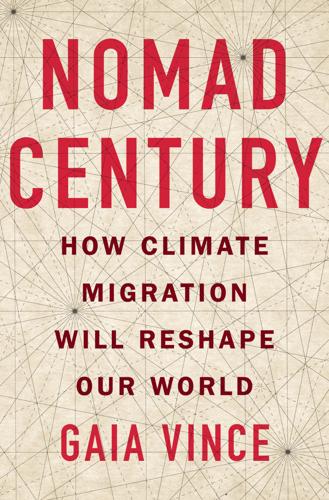
Nomad Century: How Climate Migration Will Reshape Our World
by
Gaia Vince
Published 22 Aug 2022
The Seasteading Institute was founded in San Francisco in 2008 by anarcho-capitalist (and Google software engineer) Patri Friedman, with funding from PayPal billionaire Peter Thiel, to ‘establish permanent, autonomous ocean communities to enable experimentation and innovation with diverse social, political, and legal systems’. Some of the ideas they plan to use include harvesting calcium carbonate from seawater to create 3D-printed ‘artificial coral’ cities of upside-down skyscrapers – ‘seascrapers’ – powered by oceanic geothermal energy. Some of this energy will be used to draw nutrients from deeper waters to the surface to grow seaweeds in farms worked on by ‘the poorest billion people on earth’, welcomed because ‘floating societies will require refugees to survive economically’.
…
Although the project began with grey, ugly-looking identical concrete pads, within months, the neighbourhood had diversified with paint, additions and other improvements. Something like this could be a model for urban development in other migrant cities. In the Mexican state of Tabasco, for instance, construction company ICON has partnered with non-profit New Story to build affordable, earthquake-proof housing that can withstand extreme weather, using a giant 3D-printing machine.8 The two-bedroom houses take just a day to be created by the machine, which uses a locally produced concrete, meaning a whole neighbourhood could be produced within a few months, with various print designs. Over time, families could then adapt and augment them to their requirements. When 1 million refugees arrived at Germany’s borders in 2015, Chancellor Angela Merkel had the option of sending the military to turn them away, or welcoming them into the country to help plug the national shortage of workers.
…
Live tables on land use, available at: https://www.gov.uk/government/statistical-data-sets/live-tables-on-land-use 6. N. Gabobe, ‘Living together: It’s time for zoning codes to stop regulating family type’, Sightline Institute, 28 February 2020. 7. Araveno has since put all the architectural designs online to be freely used, and other cities are using them. 8. ‘The world’s first affordable 3D printed village pops-up [sic] in Mexico’, The Spaces, 13 December 2019. 9. Anthropocene Habitats 1. Urbanisation and Climate Change Risks: Environmental risk outlook 2021 (Verisk Maplecroft); available at: https://www.maplecroft.com/insights/analysis/asian-cities-in-eye-of-environmental-storm-global-ranking/ 2.
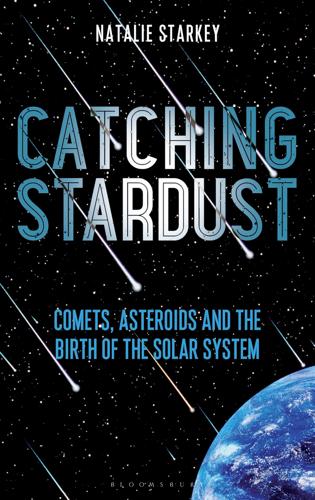
Catching Stardust: Comets, Asteroids and the Birth of the Solar System
by
Natalie Starkey
Published 8 Mar 2018
If materials can be efficiently mined from asteroids, and returned to Earth, then they can provide us with more metal than we’d ever be able to collect from the Earth’s crust. The impetus for space mining is not just about mining materials to return to Earth, though, because these space rock ingredients may be useful in helping us to further explore the Solar System. For example, mined metals could be used to enable 3D printing in space. Human space missions, to date, have relied on taking everything that they think will be required with them at launch as, so far, there has been no capability to fabricate or manufacture items in space. In the future, this may not be necessary, as space can provide all the ingredients needed to survive, and thrive, away from Earth.
…
These humans will require robots to have paved the way for them, mining and preparing the resources they will require to live, and sustain their lifestyle, in space. It may not be instantly obvious how mined metals could be used by humans in space. After all, on Earth we tend to think of humans controlling large factories to make all the objects we use in everyday life. However, this is where the technology for 3D printing could play an important role, with the first space 3D printer up and running on the International Space Station in 2014 currently testing the technology. The idea is that astronauts on long-duration missions would be able to simply print anything they required, so long as they had the right printing supplies for the printer: ingredients such as metals that could come from asteroids or comets.
…
Space exploration is a bit like preparing for a camping trip – you simply can’t predict everything you need for the journey, despite your best efforts. When camping, you have the option of giving up and going home if, for example, your camping stove breaks. This simply isn’t possible for space missions visiting far-flung parts of the Solar System, where broken equipment could result in a life-or-death situation. 3D printing any desired tool or spare part could literally be a lifesaver. If we, as humans, really have the ambition, or even the requirement one day, to explore beyond our exquisite world, then we must establish the capability to live and survive in space, for lengthy periods or even lifetimes. This will almost certainly rely on obtaining resources from other space objects we encounter along the way, as we can’t rely on bringing everything we need from Earth for the exploration of deep space, much as our ancestors tried when exploring our unknown world centuries ago.

Architects of Intelligence
by
Martin Ford
Published 16 Nov 2018
Information technology has a 50% deflation rate; you get the same computation, communication, genetic sequencing that you could purchase a year ago for half the price, and this massive deflation is going to attend to these traditionally physical products.” MARTIN FORD: So, you think that technologies like 3D printing or robotic factories and agriculture could drive costs down for nearly everything? RAY KURZWEIL: Exactly, 3D printing will print out clothing in the 2020s. We’re not quite there yet for various reasons, but all that’s moving in the right direction. The other physical things that we need will be printed out on 3D printers, including modules which will snap together a building in a matter of days.
…
I think we will also see a pull for construction work because we are urbanizing the world at an incredible rate. Many of the techniques that we use in construction were invented by the Romans, there’s room for a little technological update in some of those. MARTIN FORD: Do you think that would be construction robots or would it be construction scale 3D printing? RODNEY BROOKS: 3D printing may come in for aspects of it. It’s not going to be printing the whole building, but certainly we might see printed pre-formed components. We’ll be able to manufacture a lot more parts off-site, which will in turn lead to innovation in delivering, lifting, and moving those parts.
…
DANIELA RUS: Our world has already been transformed by robotics. Today, doctors can connect with patients, and teachers can connect with students that are thousands of miles away. We have robots that help with packing on factory floors, we’ve got networked sensors that we deploy to monitor facilities, and we have 3D printing that creates customized goods. Our world has already been transformed by advances in artificial intelligence and robotics, and when we consider adding even more extensive capabilities from our AI and robot systems, extraordinary things will be possible. At the high level, we have to picture a world where routine tasks will be taken off our plate because this is the sweet spot for where technology is today.
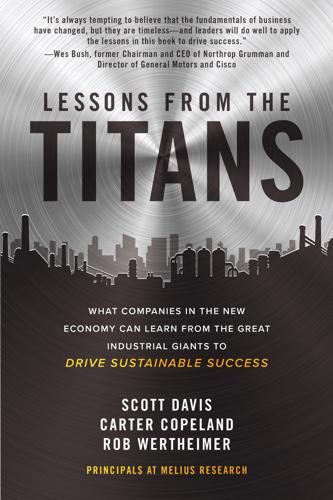
Lessons from the Titans: What Companies in the New Economy Can Learn from the Great Industrial Giants to Drive Sustainable Success
by
Scott Davis
,
Carter Copeland
and
Rob Wertheimer
Published 13 Jul 2020
But as he reduced the company’s exposure to financial services, he needed something to replace the lost earnings. He settled on two big initiatives: digital transformation and the acquisition of a large French power infrastructure company named Alstom. With digital, Immelt saw enormous potential in the industrial internet and additive manufacturing (also known as 3D printing), and he wanted to supply the software as well as the hardware. He turned the company’s small IT support unit into a separate GE Digital division. It had the ambition and budget to become a world-class software house. The digital foray won the company good press, but it would be many years of heavy investment before anything tangible emerged, and even then, finding new revenues was difficult.
…
At SBD, he and other leaders had executed well on the playbook of systematizing operations. Many companies fail to get that far. The next step, however, required a reinvention. Loree saw the pace of change in the world increasing as systems that unlock growth and innovation stack onto each other—artificial intelligence, rapid prototyping with 3D printing, factory connectivity and automation. He wanted to push SBD ahead, to keep his workforce engaged, flexible, and filled with lifetime learners who can continually adapt to emerging tech and new challenges. Loree spends a lot of time explaining the company’s vision, and he’s enthusiastic about it.
…
That limits immersion in the buzz of innovation via employee networks, as well as opportunities for cross-pollination from hiring. Stanley Ventures aimed to sync with that ecosystem. The company partnered with leading accelerator TechStars to create an external accelerator in Hartford, Connecticut, near SDB’s headquarters in New Britain. The accelerator was focused on 3D printing and packaging, thereby investing in SBD’s community and in advanced manufacturing at the same time. Internally Stanley Black & Decker created an Exponential Learning Unit in Silicon Valley, both to attract talent from that area and to serve as an incubator of ideas. A look at the company’s Facebook Workplace page will show a dozen activities and links showcasing the organization’s openness: makerspaces, scholarships for students, sponsorships for vocational skills competitions, support for LGBT events, a women-founded 3D design lab.

Green and Prosperous Land: A Blueprint for Rescuing the British Countryside
by
Dieter Helm
Published 7 Mar 2019
Nature will be ever-more confined to reserved areas – like zoos in an increasingly urban and industrial landscape. There will be compensations. You will have communications technologies that cannot even be imagined today, just as I have an iPhone now, which was unimaginable a couple of decades ago. Everything will be digital, with robots, 3D printing and artificial intelligence (AI) fulfilling many of your needs. You will know your genome, and have medical treatments available to you that again are hard to imagine now. Some economists continue to think that the natural capital you will have lost is a price worth paying for all these new benefits.
…
To these incremental technological advances, two new and transformational ones are being added, together already further changing the face of agriculture. These are digitalisation and genetics. Digitalisation enables both precision farming based on big data, and a further switch away from labour to robotics, 3D printing and AI. Genetics means that centuries of careful plant and animal breeding can be leapfrogged in a test tube. The very building blocks of species can be manipulated and changed, and all at a fast pace. These two changes are probably each more profound than the switch from horse power to tractors.
…
In the last 20 years, the digital communications revolution has changed almost all economic activity, and most personal behaviours too. The smartphone, Facebook, Twitter and Instagram are a world away from the fixed telephone line, letters drafted on a typewriter and photographic slides. Ahead lies genetics as a technology for all, robotics, 3D printing, new materials and AI. It is safe to assume that future generations will have more and much better technologies than we do. For this reason we should discount their future – a bit. A less convincing reason relates to whether in fact we and our predecessors will have done so much damage to the environment that they will be worse off.
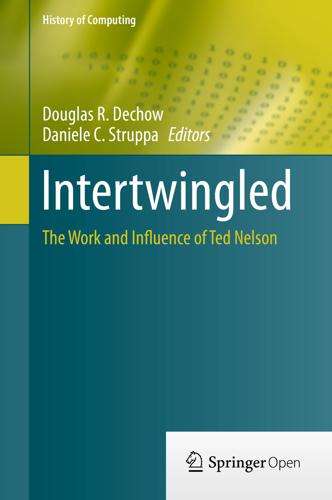
Intertwingled: The Work and Influence of Ted Nelson (History of Computing)
by
Douglas R. Dechow
Published 2 Jul 2015
A company called “We Love Fine” produces and sells a wide range of T-shirts with My Little Pony fan art that requires both copyright permission from the fan creators of the art and trademark permission from Hasbro. Hasbro have also begun licensing the creators of 3D models based on their characters to sell 3D prints of those models, starting with My Little Pony and planning to expand to their other toy franchises such as Transformers. This is very forward looking because 3D printing may soon come to have a significant impact on the toy market. These kinds of interconnections between cultural works, and between the creators and the fans, are great examples of the increasingly prominent intertwingularity of the modern world.
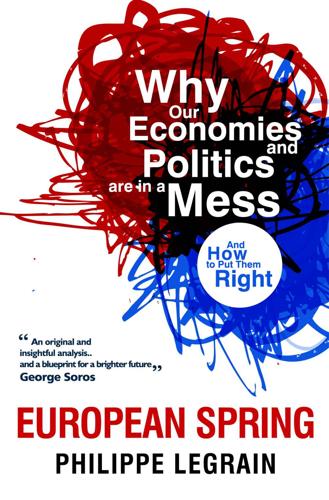
European Spring: Why Our Economies and Politics Are in a Mess - and How to Put Them Right
by
Philippe Legrain
Published 22 Apr 2014
Thanks to imports from China and elsewhere, the cost of clothing, toys and much else has plummeted. Supermarkets provide a wider range of better food. Flying around Europe is no longer a luxury. High-speed rail has proliferated; even Britain has one short link. Cars are starting to drive themselves. 3D printing shops are opening on high streets. Fears that we would run short of fossil fuels have proved false: shale oil and gas (and coal) are plentiful. AIDS has become a chronic disease, not a quickly fatal one. Viagra has given many men a new lease of life. Starting with the Netherlands in 2001, ten European countries have allowed gays to marry; England and Wales are due to do so in 2014.
…
Even when it is more future-oriented, its priorities tend to be distorted by fashion and favour. Antonio Tajani, the buffoon appointed by Silvio Berlusconi to the European Commission, wants to craft a European industrial policy which – surprise, surprise – favours his chums in Italian industry. His six priorities are: new manufacturing technologies in areas such as robotics and 3D printing; basic “enabling technology” such as optical electronics and new materials linked to novel products; biotech-based production techniques; low-carbon and other low-pollution manufacturing techniques; “clean” vehicles, such as cars using new forms of hybrid engines; and equipment needed for new “smart grids” to facilitate more efficient energy use.
…
Many domestic markets are dominated by big players that deter (and stamp on) competition, cosseted by a host of regulations that impede new entrants. Silicon Valley is the cauldron of many American start-ups. But the US is also much more enterprising generally. Witness how shale gas has revolutionised America’s energy landscape within a few years. Cheap energy, in turn, could spark a new manufacturing revolution in the US, together with 3D printing. Genetic modification is breeding better, hardier, cheaper, tastier and more nutritious food. America is also pouring many more resources into the biotech revolution. Stopped-up Europe Four types of barrier hold European enterprise back: education systems that fail to encourage entrepreneurship; a cultural aversion to risk-taking, diversity and many new technologies; flawed regulations that restrict competition, stymie start-ups and hamper smaller businesses; and a shortage of finance.

Ghost Fleet: A Novel of the Next World War
by
P. W. Singer
and
August Cole
Published 28 Jun 2015
locale=en. 157 stepped out for a coffee break: Kay Mathews, “Photo: Sam Walton’s Office in Walmart Visitor Center, Bentonville, Ark.,” Digital Journal, June 4, 2011, accessed August 20, 2014, http://www.digitaljournal.com/image/88949. 163 graphene was light and strong: “The Story of Graphene,” University of Manchester, accessed August 20, 2014, http://www.graphene.manchester.ac.uk/explore/the-story-of-graphene/. 163 also known as a 3-D printer: Bob Tita, “How 3-D Printing Works,” Wall Street Journal, June 10, 2013, accessed August 20, 2014, http://online.wsj.com/news/articles/SB10001424127887323716304578483062211388072. 164 a manufacturing revolution: “3D printing: Second Industrial Revolution Is Under Way,” New Scientist, accessed August 20, 2014, http://www.newscientist.com/special/3D-printing. 165 just spoken Klingon: Klingon Pocket Dictionary, Klingonska Akademien, accessed August 20, 2014, http://klingonska.org/dict/. 166 “Russian Foundation for Advanced Research Projects”: “Putin Seeks to Create Russian DARPA Equivalent,” Global Security Newswire, June 21, 2012, accessed August 20, 2014, http://www.nti.org/gsn/article/putin-seeks-create-darpa-equivalent/. 167 the electronic ink used: Jason Koebler, “This E-Tattoo Uses Conventional Chips, No Nanotech Required,” Motherboard, April 4, 2014, accessed August 20, 2014, http://motherboard.vice.com/read/this-e-tattoo-uses-conventional-chips-no-nanotech-required. 167 Dmitri Shostakovich’s Fifth Symphony: “Shostakovich’s Symphony No. 5,” Keeping Score, accessed August 20, 2014, http://www.pbs.org/keepingscore/shostakovich-symphony-5.html. 169 Iliahi Elementary School: “About Iliahi,” Iliahi Elementary School, accessed August 20, 2014, https://sites.google.com/a/dragons.k12.hi.us/iliahiel/. 173 community development units: “Provincial Reconstruction Teams (PRTs),” Department of State, accessed August 20, 2014, http://www.state.gov/p/nea/ci/iz/c21830.htm; fictional unit. 174 Directorate Z-8K assault helicopters: “Product Information — Z8 Helicopter,” Changhe Aircraft Industries Group, accessed August 20, 2014, http://www.changhe.com/english/ecpxx/ecpxx.htm. 174 “It was always a risk”: Charles J.
…
hpt=hp_c2. 261 a love that would never come: Christopher Paul et al., “Paths to Victory: Detailed Insurgency Case Studies,” RAND Corporation, 2013, accessed August 23, 2014, http://www.rand.org/pubs/research_reports/RR291z2.html. 261 civilian-style Great Wall pickups: “Wingle 5,” Great Wall Motors, accessed August 23, 2014, http://www.gwm-global.com/wingle5.html. 265 the two metallic hands: Francie Diep, “A Mind-Controlled Robotic Hand with a Sense of Touch,” Popular Science, February 5, 2014, accessed August 23, 2014, http://www.popsci.com/article/science/mind-controlled-robotic-hand-sense-touch. 266 “lenses of the wrong prescription”: Emily Gold Boutilier, “Thinking the World into Motion,” Brown Alumni Magazine, January 2005, accessed August 23, 2014, http://archive.today/hf0P9. 266 “William Gibson’s 1984 novel Neuromancer”: Ed Cumming, “The Man Who Saw Tomorrow,” Guardian, July 27, 2014, accessed August 23, 2014, http://www.theguardian.com/books/2014/jul/28/william-gibson-neuromancer-cyberpunk-books. Also see http://williamgibsonbooks.com/books/neuromancer.asp. 267 the five-foot-tall spider-bot: Lance Ulanoff, “3D-Printed Spiderbot Is Stuff of Dreams and Nightmares,” Mashable.com, July 5, 2013, accessed August 24, 2014, http://mashable.com/2013/07/05/3d-printed-spider-robot/. 267 sifting through rubble: Dan Nosowitz, “Meet Japan’s Earthquake Search-and-Rescue Robots,” Popular Science, March 11, 2011, accessed August 24, 2014, http://www.popsci.com/technology/article/2011-03/six-robots-could-shape-future-earthquake-search-and-rescue. 269 “What we observe”: Werner Heisenberg, as quoted in Robert Pine, Science and the Human Prospect (Honolulu: University of Hawaii, 1999), online edition, accessed July 15, 2014, http://home.honolulu.hawaii.edu/~pine/book1qts/chapter8qts.html. 276 a Type 98 bayonet knife: Fan Zhibin, “Regiment in Bayonet Training,” People’s Daily Online, accessed August 24, 2014, http://english.peopledaily.com.cn/90786/7689290.html. 276 QSZ-92: “NORINCO QSZ-92 (Type 92) Semi-Automatic Pistol (1998),” MilitaryFactory.com, September 2, 2011, accessed August 24, 2014, http://www.militaryfactory.com/smallarms/detail.asp?
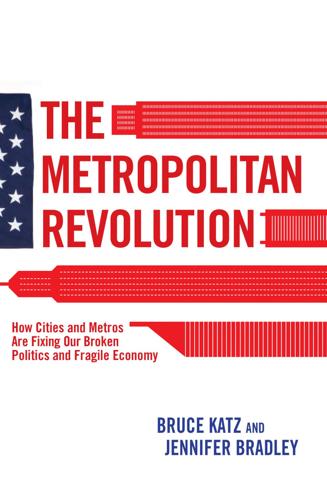
The Metropolitan Revolution: How Cities and Metros Are Fixing Our Broken Politics and Fragile Economy
by
Bruce Katz
and
Jennifer Bradley
Published 10 Jun 2013
“Difference Engine: The PC All Over Again?” Babbage (blog), The Economist, September 9, 2012 (www.economist.com/blogs/babbage/2012/09/3d-printing). 10-2151-2 notes.indd 220 5/20/13 7:00 PM NOTES TO PAGES 77–81 221 31. “Print Me a Jet Engine.” See also “Difference Engine: The PC All Over Again?”; Vivek Srinivasan and Jarrod Bassan, “Manufacturing the Future: 10 Trends to Come in 3D Printing,” Forbes, December 7, 2012 (www.forbes.com/sites/ciocentral/ 2012/12/07/manufacturing-the-future-10-trends-to-come-in-3d-printing/). 32. Fay Hanleybrown, John Kania, and Mark Kramer, “Channeling Change: Making Collective Impact Work,” Stanford Social Innovation Review, January 26, 2012 (www.ssireview.org/blog/entry/channeling_change_making_collective_ impact_work?

A World Without Work: Technology, Automation, and How We Should Respond
by
Daniel Susskind
Published 14 Jan 2020
Alan Burdick, “The Marriage-Saving Robot That Can Assemble Ikea Furniture, Sort Of,” New Yorker, 18 April 2018. 34. For “kippot,” see Eitan Arom, “The Newest Frontier in Judaica: 3D Printing Kippot,” Jerusalem Post, 24 October 2014; for all others, see J. Susskind, Future Politics, pp. 56–7. 35. Tomas Kellner, “Mind Meld: How GE and a 3D-Printing Visionary Joined Forces,” GE Reports, 10 July 201710; “3D Printing Prosthetic Limbs for Refugees,” Economist, 18 January 2018, https://www.youtube.com/watch?v=_W1veGQxMe4 (accessed August 2018). 36. Debra Cassens Weiss, “JPMorgan Chase Uses Tech to Save 460,000 Hours of Annual Work by Lawyers and Loan Officers,” ABA Journal, 2 March 2017. 37.

The AI Economy: Work, Wealth and Welfare in the Robot Age
by
Roger Bootle
Published 4 Sep 2019
You risk drowning in the onrush of loose language, flabby concepts, crude extrapolation, impenetrable jargon and lack of perspective, all wrapped up in an aura of supposed inevitability. And yet something truly amazing is happening in the world of technology, not just increasing digitization, or the development of nanotechnology, biotechnology and 3D printing, but also with regard to robots and AI. In this cocktail of ingredients for a technological revolution it is AI that stands out. It may offer the greatest benefits, but it also seems the most threatening to individual human beings and to society as a whole. For it seems to penetrate deep into the human realm and to pose fundamental questions about who we are and what we may become.
…
We consistently fail to grasp how many ideas remain to be discovered … Possibilities do not merely add up; they multiply.33 The first of the new “ideas” is biotechnology, which may make a major contribution to agricultural production, food processing, and protection of the environment. And developments in medical science promise both major improvements in the quality of life and a much-extended lifespan. Meanwhile, nanotechnology and 3D printing also hold out the prospect of increases in productivity in many traditional areas of manufacturing. And now, on top of this, we have robots and AI. Back to the future This lightning tour of our economic history has brought out several key points: • Continued improvement in living standards has not been our lot since the beginning of time.
…
Because of economies of scale and first mover advantage, they may not be very vulnerable to competitors trying to do the same as them – although they cannot be sure of this. Their real vulnerability is that some new technology may come along and undermine them, just as happened to those who preceded them. Furthermore, some modern technologies, such as blockchain and 3D printing, facilitate small-scale production. Moreover, another surprising possible effect on the income distribution springs up from the discussion of work versus leisure in Chapter 4. It transpires that, in a turnaround from most of human history, in today’s society, those at the top of the income distribution currently tend to work longer hours that those at the bottom.
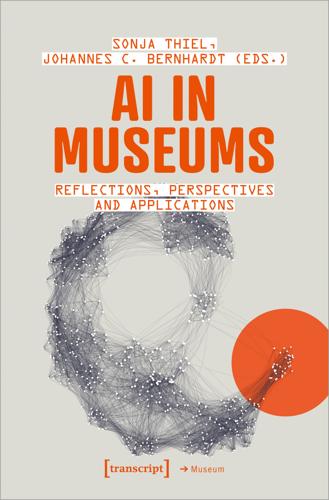
AI in Museums: Reflections, Perspectives and Applications
by
Sonja Thiel
and
Johannes C. Bernhardt
Published 31 Dec 2023
For example, the artist Sofia Crespo has been experimenting with the potential of these tools to generate images of a crossover between a zebra and a flamingo, resulting in one 4 5 6 7 8 9 https://aiartists.org/tom-white. https://www.lumenprize.com/2021-global-south-shortlist/igun. https://www.oxia-palus.com/. https://www.ucl.ac.uk/news/2022/sep/x-rays-ai-and-3d-printing-bring-lost-van-gogh-artw ork-life#:~:text=%E2%80%9CThis%20week%20I%20painted%20a,from%20the%20X%2 Dray%20data. https://egorkraft.com/. https://refikanadolstudio.com/. Luba Elliott: Discovering Culture with AI image of a flamingo with zebra stripes and another with zebra wings reminiscent of the animal’s torso.10 As humans, we typically might imagine a crossover between images differently and it is therefore useful to be able to access additional forms of imagination.
…
Botto learns from community feedback and develops art from its findings.11 The artist duo Varvara & Mar investigated the potential of text prompts and 3D models to create a form in their series of sculptures titled Psychedelic Forms (2022). Using ancient sculpture as input, Varvara & Mar stylized the mesh with a text prompt and proceeded to 3D print the items in ceramics, adding physical material and artisanal craft techniques to create a unique work in an era of reproduction.12 In addition to artists working with generative models and text-to-image models, there are others who focus on different AI techniques, frequently in order to highlight their issues.
…
Although our focus is on visualization rather than data analysis, we would also like to mention RunwayML’s most recent motion tracking tool for video editing5 and Najeeb Tarazi’s application of RunwayML’s rotoscoping techniques in the impressive One More Try experimental skating video.6 Implementation and Evaluation Figure 2: Setup of eight GoPro cameras positioned around the musicians. 5 6 https://runwayml.com/. https://vimeo.com/717945664. 297 298 Part 3: Applications Hardware Setup To capture the poses of the 50 musicians, we used a reproducible setup consisting of eight GoPro cameras (see fig. 2). Since we required an affordable solution, we used off-the-shelf GoPro Hero 5 Black Cameras attached to long tripods with a 3D-printed mount. A major challenge was positioning the cameras to capture all the musicians without occluding other people, instruments, or chairs. We resolved this by calculating, defining, and fixing the positions of the chairs and the camera tripods for the recordings of the rehearsals. A GoPro Remote served as the control for the cameras to capture a synchronized recording of the various views.

50 Future Ideas You Really Need to Know
by
Richard Watson
Published 5 Nov 2013
Thus, transport, logistics, inventory, waste disposal and retail all disappear right in front of your eyes. This ushers in a whole new economic system that is less reliant on physical resources and human labor. In other words, we no longer experience physical constraints. 3D printing In the late 1700s and early 1800s, the Industrial Revolution created mass production, which in turn allowed economies of scale and turned both business and society upside down. So too, 3D printing (also known as fabbing)—is in one sense a very early and very crude version of atomically precise manufacturing, and it could turn everything upside down once again by making it as cheap to produce one of something as it is to produce many.

Human + Machine: Reimagining Work in the Age of AI
by
Paul R. Daugherty
and
H. James Wilson
Published 15 Jan 2018
Dave Gershgorn, “Hitachi Hires Artificially Intelligent Bosses for Their Warehouses,” Popular Science, September 8, 2015, www.popsci.com/hitachi-hires-artificial-intelligence-bosses-for-their-warehouses. b. Mike Murphy, “Siemens is building a swarm of robot spiders to 3D-print objects together,” Quartz, April 29, 2016, https://qz.com/672708/siemens-is-building-a-swarm-of-robot-spiders-to-3d-print-objects-together/. c. Robotiq, “Inertia Switch Case Study – Robotiq 2-Finger Adaptive Gripper – ROBOTIQ,” YouTube video, 1:32 minutes, posted July 28, 2014, https://www.youtube.com/watch?v=iJftrfiGyfs. Kindler, Gentler Robots During the second AI “winter,” Rodney Brooks challenged one of the fundamental ideas that had driven previous AI research—namely, the reliance on predetermined symbols and relationships between symbols to help computers make sense of the world (see the sidebar “Two AI Winters”).
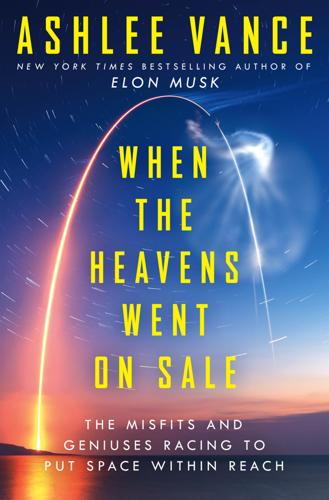
When the Heavens Went on Sale: The Misfits and Geniuses Racing to Put Space Within Reach
by
Ashlee Vance
Published 8 May 2023
But Beck figured he was the man for the job. Rocket Lab’s other major advance would come through its embrace of 3D printing. Instead of making its engines by hand, Rocket Lab would use machines to build its machines. It would acquire 3D printers that could blast metal powder with a laser, fuse the metal, and build up an engine layer by thin layer. People in the aerospace industry had dabbled with the technique for building engine components here and there. No one, though, had tried to make an entire engine via the 3D printing process. Though experimental, the technology held the promise of allowing Rocket Lab to manufacture new Rutherfords with the push of a button.
…
The now hundreds of employees had sleek desks to work at and state-of-the-art labs for their electronics and engine experiments. The factory floor had transformed from a cramped, R&D-style shop to an industrial-grade manufacturing cathedral. Black Electron bodies were lined up one after the other in perfect rows, flanked by pristine workbenches. There were special areas to work on carbon fiber, 3D print engines, perform vibration tests, and paint parts. Each area had been marked off with big red swaths of paint along a gray, shiny floor. Two huge flags—US and New Zealand—hung down from the rafters like celebratory banners of the activity taking place below. The facility punctuated the head start that Rocket Lab had secured over its rivals.
…
See also individual satellites collision monitoring for, 481–483 constellations of, 26 cost of launching, 141–142 costs of, 14, 15 imaging and, 14–15, 98–99, 115–120 increase in number of, 14, 127–128, 129, 396 internet service and, 14, 18 from Legos, 87, 89 spy, 115–118 various types of, 130–131 Satish Dhawa Space Centre, 27, 28–30 Schingler, Jessy Kate (née Cowan-Sharp), 71–75, 102, 324–325, 423, 488–489 Schingler, Robbie Dove project and, 103–104 founding of Planet Labs and, 101 goals of, 26 in India, 25, 27 Kemp and, 59–60, 254 launch attempts and, 28–33 at Planet Labs, 325 Rainbow Mansion and, 71, 73, 75 recent work of, 488–489 success of, 488 Ventions LLC and, 250 Whitesides and, 423 Worden and, 50, 51 Schlumberger, 166 Schmidt, Eric, 61, 64–65, 105 Schnugg, Celestine, 76 Sea Launch, 443n Sea Launch Commander, 443n SGI Technologies, 270–271 Shelby, Richard, 53–54, 56, 57 Shockley Semiconductor Laboratory, 41n Shriram, Ram, 251n Silicon Valley, 41–42, 58–59, 68–69 Singularity University, 62–63, 64 Skybox Imaging, 111n SkySats, 111, 114, 396 SkyTrak, 305, 306 Smith, Kris, 288–289 Snopes, 469–470 solar panels, 31–32 solid propellants, 196 sounding rockets, 178–179, 182 Southern Festival of Speed, 163–164 Southland Astronomical Society, 148–149, 153 Southland Museum and Art Gallery, 148 Soviet Union, 115–117, 403, 436–437, 443, 452 Soyuz rockets, 104, 443 Space and Missile System Center, Los Angeles, 36 space debris, 131 Space Generation Advisory Council, 49, 62, 84n Space Launch Complex 2, 461 Space Race, 145 space shuttle, 43, 53 Space Warfare Center, 48 spaceplanes, 426 SpaceX attention given to, 33 Carlson and, 327 delays and, 224 as dominant presence, 483 Falcon 1 and, 2–12, 132 Falcon 9 and, 395 Firefly and, 208, 403 funding and, 12 goals of, 16 internet service and, 14 Judson and, 291 launch location for, 397 LeoLabs and, 482 Markusic and, 415–420 Martin at, 356 NASA and, 435 number of satellites and, 127–130 Planet Labs and, 29 progress of, 214 Rocket Lab and, 138, 141, 188, 242–243 Russian invasion of Ukraine and, 487–488 Starship and, 13 Worden and, 38–40 SPACs (special purpose acquisition companies), 385–390 special purpose acquisition companies (SPACs), 385–390 “spiral of doom,” 189 Spire, 238 Sputnik 1, 115 sriharikota, 28 SS-18, 440 Stachowski Farm, 409–410 Stalin, Josef, 440 Star Wars (Strategic Defense Initiative; SDI), 43, 45–48, 55 Starlink internet system, 128–130, 487–488 Starship, 13 static fire tests, 314–318 Stealth Space Company employees of, 265, 286–293 engine tests at, 281–283, 287–288 funding and, 260 goals of, 258–259, 265–266 Kemp and, 276 launch locations for, 279–280 name change for, 294 offices of, 261–264, 280 secrecy and, 278 simplicity of design and, 279 Stern, Alan, 56–57 Strategic Defense Initiative (SDI; “Star Wars”), 43, 45–48, 55 strippers, 319–320 sun-synchronous orbits, 110 Sutton, George P., 162 Svalbard archipelago, 397 Swarm Technologies, 131 Tata Nardini, Flavia, 239, 241 Teledesic, 388–389 Terra Bella, 111, 288–289 Thiel, Peter, 105 Thompson, Chris in Alaska, 324, 329, 331–332 at Astra, 300–301 joining Astra, 305 Kemp and, 295, 306, 348–349 launch attempts and, 348, 360, 376, 382 modifications to rocket and, 365 Rocket 3 and, 378 rocket tests and, 307, 315 SpaceX and, 302 3D printing, 210 Tirtey, Sandy, 211, 212, 213, 227, 240, 244 tool and die making, 154–157 trees, counting of, 121 Troy 7, 303 Tsiolkovsky, Konstantin, 145 turbopumps, 209–210, 449, 459, 467, 479, 493 Tyvak Nano-Satellite Systems, 238 Ukraine, 403, 435, 436–446, 448–450, 452, 456, 470–471, 485–488 Ukrainian Academy of Sciences, 451 United Launch Alliance (ULA), 449 United Nations Office for Outer Space Affairs, 84, 84n unreality field, 76–77, 83 US Space Force, 391 vacuum chambers, 211–212 Valley of Heart’s Delight, 42 Vandenberg Air Force Base, 456, 460–464, 472–473, 485 Vector Space Systems, 230, 370, 371, 375 Ventions LLC attempts to contact, 249–250 early days of, 255–257 employees from, 290–291, 306 funding and, 257–258 Kemp and, 254 offices of, 255 start of, 254–255 Vernadsky, Vladimir, 451, 459 Verne, Jules, 145 Vienna Declaration on Space and Human Development, 85 Virgin Galactic, 50, 179, 207–208, 356, 421–423, 428 Virgin Orbit, 214, 230, 370, 375, 423n viscous liquid monopropellant (VLM), 196, 197, 202 von der Dunk, Frans, 432 Wallops Island, Virginia, 231, 397 War on Terror, 35 Weeks, David, 414–415 Wells, H.
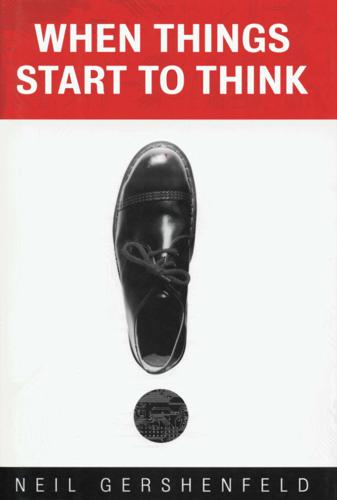
When Things Start to Think
by
Neil A. Gershenfeld
Published 15 Feb 1999
This convenience is significantly decreasing the time it takes companies to make product prototypes. The machines are currently expensive and slow, but like any promising machinist they are steadily becoming more efficient. As interesting as 3D printing is, it's still like using a PC to execute a mainframe program. The end result is not very different from what can be made with conventional machine tools, it's just the path to get there that is simpler. The real question posed by our Any Thing design review was whether 3D printing could be extended as Lego had been to incorporate sensors and actuators, computing and communications. If we could do this, then instead of forcing people to use their infinitely flexible and personal computers to browse through catalogs reflecting someone else's guesses at what they want, they could directly output it.

Hit Refresh: The Quest to Rediscover Microsoft's Soul and Imagine a Better Future for Everyone
by
Satya Nadella
,
Greg Shaw
and
Jill Tracie Nichols
Published 25 Sep 2017
As leaders ask themselves, “Where can we be the best in the world?” the answers might be surprising—desert farming in Australia or local banking in Dubai. Some other country or community might strive to become the world’s leader for innovations in IoT; ambient intelligence; mobile payment systems; virtual reality; silicon photonics; 3D printing; wearables; lightweight, low altitude satellites; drones; native advertising; driverless cars; robotics and industrial automation; adaptive, gamified education; nano-machines; genomics; or economical solar, wind, and tidal power. Each represents an opportunity for leadership that no single community or region has yet seized.
…
See also specific products Tait, Richard, 7, 29 talent development, 117–18 TCI company, 28 teachers, 104, 106, 198, 226 teams and team building, 1, 39, 56, 107, 117–18 technology boom of 1990s, 24 democratizing and personalizing, 69 diffusion of, 216–17, 219 disruption and, 12 empathy and, 42–43 future of, 140–44 human performance augmented by, 142–43, 201 intensity of use, 217, 219, 221, 224–26 soul and, 68–69 transformation and, 11–12 TED talks, 180 telecommunications, 225 teleconferencing, shared-screen, 142 telegraph, 186 telepresence, 236 telerobotics, 236 tensor-processing unit (TPU), 161 Teper, Jeff, 29 terrorism, 172, 177–79 TextIt, 216 theoretical physicists, 162–64 think weeks, 64 32-bit operating systems, 29 Thiruvengadam, Arun, 187 Thompson, John, 14–15 3D printing, 228 three C s, 122–23, 141 Three Laws of Robotics, 202 ThyssenKrupp, 59–60 Tiger Server project, 30 time management model, 138 Tirupati, India, 19 topological quantum computing (TQC), 166 Toyota, 127 Tractica, 198 trade, 229–31, 236 training, 92, 227 transfer learning, 151, 153, 155 transformation, 11–12, 57, 67, 90 cloud and, 42, 55–56, 71 cultural (see culture, transforming) Trans-Pacific Partnership (TPP), 230–31 transparency, 135, 174–75, 191–92, 202, 204–6 Trump, Donald, 212, 230 trust, 56, 88, 107, 135, 169–94, 205, 236 Turing, Alan, 26 Turner, Kevin, 3 TV white space, 99, 225 Twilight Zone, The (TV show), 159 Twitter, 174 2001 (film), 201 two-in-one computers, 129 two-sided markets, 50 Uber, 44, 126, 153 uncertainty, 38, 111, 157 United Kingdom, 215, 236 United Nations, 44 U.S.

The Brussels Effect: How the European Union Rules the World
by
Anu Bradford
Published 14 Sep 2020
See also specific companies and topics additive manufacturing, 274, 382n38 geo-blocking, 274–76 GMO cultivation and GURTs, 276–77 on non-divisibility, 273 3D printing, 274 terminator seeds, 276–77 territorial extension (extraterritoriality), 67–68 TFEU. See Treaty of the Functioning of the European Union (TFEU) theory, 7–24. See also specific topics Brussels Effect, defined, 7 European Commission pro-regulation agenda, 15 external regulatory agenda, emerging, 18–21 integration through regulation, European, 9 3D printing, 274 Tiebout sorting, 53 tort liability and litigation, 41–43 Toxic Substances Control Act (TSCA), 194, 200–2 amendment, 223, 364n145 trade.
…
Such a development, to the extent that it applies to a significant number of product markets, may gradually erode the EU’s ability to exert global regulatory clout in the future. One of the most notable new technologies enabling greater customization and local production is additive manufacturing, such as 3D printing.38 Using additive manufacturing, the same machines can produce goods with different features simply by changing the digital file that is used to provide the blueprint. Additive manufacturing relies less on economies of scale and thereby allows for mass customization. In practice, this may give manufacturers the ability to conform to a number of different production standards without substantial additional costs and rely on more dispersed production networks.
…
_r=0 (on file with author). 107.European Commission Press Release MEMO 18/5715, State of the Union 2018: A fully equipped European Border and Coast Guard—Questions and Answers, (Sept. 12, 2018), https://europa.eu/rapid/press-release_MEMO-18-5715_en.htm [https://perma.cc/4HMP-5TQA]. Index For the benefit of digital users, indexed terms that span two pages (e.g., 52–53) may, on occasion, appear on only one of those pages. 3D printing, 274 5G telecommunication systems, 88–89, 314n115 acid rain, 210–11 acquis communitaire, 69–70, 71–72 activist pressure, 62 ADA (azodicarbonamide), 181, 348n72 additive manufacturing, 274, 382n38 adequacy decision, 149, 168 administrative rule making, 38–39, 41 Africa. See also specific countries agriculture, 186 Economic Community of West African States, 79–80, 312n79 food safety, 186, 189–90 agriculture.
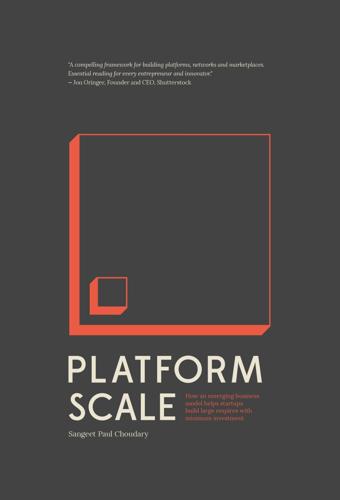
Platform Scale: How an Emerging Business Model Helps Startups Build Large Empires With Minimum Investment
by
Sangeet Paul Choudary
Published 14 Sep 2015
Nest, unlike every other physical thermostat, aggregates data about energy consumption across all thermostats in an area and provides consolidated analytics and insights to utilities. Today’s products and services benefit from platform-powered communities. A traditional camera, gymnasium, or thermostat would never have employed such business models, but in a constantly connected world, they provide enormous value to all connected parties. f. 3D printing – The distributed factory With the rise of the Internet, manufacturing firms have increasingly relied on external innovators for sourcing industrial design. However, there has never been a concerted shift toward distributed manufacturing because the costs of manufacturing at these individual distributed locations would be too high compared to manufacturing centrally.
…
As we progress through this section, we will increasingly note that all platform design decisions are built around the core value unit. PLATFORM SCALE IMPERATIVE The age of the industrial economy accorded inordinate power to those who held the means of production. In the age of platforms, production is decentralized. Whether it is the decentralization of manufacturing through 3D printing, the decentralization of marketing and journalism through social media, or the decentralization of service providers in the collaborative economy, the means of production are no longer limited to large companies or entities. With decentralized production, the platforms that enable and aggregate this production are the new winners.
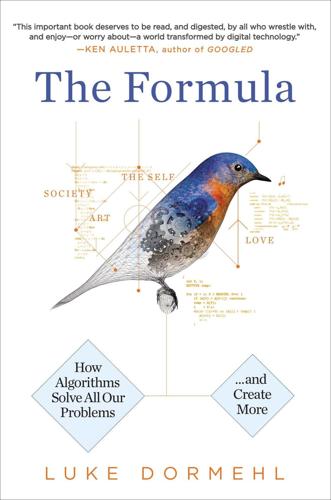
The Formula: How Algorithms Solve All Our Problems-And Create More
by
Luke Dormehl
Published 4 Nov 2014
P) Y = T, where S equals the sum of the principles (P), Y equals intuition, and T equals artistic creation. 14 Benjamin, Walter. The Work of Art in the Age of Mechanical Reproduction (London: Penguin, 2008). 15 Clark, Liat. “2D Photos Translated into 3D-Printed Translucent Artworks.” Wired, May 23, 2013. wired.co.uk/news/archive/2013-05/23/3d-printed-touch-photos. 16 Kim, Seung-Chan, Ali Israr, and Ivan Poupyrev. “Tactile Rendering of 3D Features on Touch Surfaces.” Proceedings of the 26th Annual ACM Symposium on User Interface Software and Technology—UIST 2013 (2013): 531–38. disneyresearch.com/wp-content/uploads/uist-2013-final.pdf. 17 Poupyrev, Ivan.
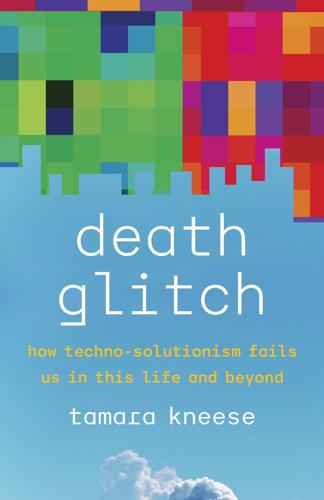
Death Glitch: How Techno-Solutionism Fails Us in This Life and Beyond
by
Tamara Kneese
Published 14 Aug 2023
When his wife and artistic partner, Leonor Caraballo, was diagnosed with terminal breast cancer, Farman says there was no way out: “We spent the next eighteen months revising our temporal horizon, but in every revision, death was always a step ahead of us, the horizon was always one measure closer.”16 Terminality is a liminal state of being in which the medical establishment labels our bodies as beyond care, but we and our loved ones still go about our normal routines, boiling lentils on the stove or worrying about paying the bills.17 I juxtapose platform temporality with Farman’s terminality and ask: How do these divergent experiences of time impact the digital care of illness blogs? As artists, Farman and Caraballo continued to collaborate and produce new work in the face of an uncertain future. Together, they created sculptures and jewelry based on 3D printed images of Caraballo’s breast tumors, showing images of the objects on a Tumblr titled “Object Breast Cancer,” and they produced a film about the condition of terminality, daring to imagine what Caraballo’s death might look like.18 Illness blogs, like other artifacts that document terminal illness, have a particular affective weight because their writers are conscious of their being digital remains long before they become ways of remembering the dead.
…
Heath, “Mark Zuckerberg Builds Virtual Assistant.” 23. Madrigal, “Why Millennials Can’t Afford to Buy a House.” 24. Daws, “90% of US Consumers Own a Smart Home Device.” 25. At the Singularity Summit I attended in 2012 as a participant-observer, one programmer told me during our lunch break that he could not wait for the day when 3D printing would end capitalism as we know it: everyone would be free to print their own coffee mugs and other necessary objects. 26. Fantasies of computing labor disengaged from feminine coded workers, many of them in the Global South, are something many other scholars have traced. See Chun, “On Software”; Hicks, Programmed Inequality; Light, “When Computers Were Women”; Nakamura, “Economies of Digital Production in East Asia.” 27.

The Future of the Professions: How Technology Will Transform the Work of Human Experts
by
Richard Susskind
and
Daniel Susskind
Published 24 Aug 2015
<http://autodeskresearch.com/projects/dreamcatcher> (accessed 8 March 2015). 290 <http://www.sketchup.com>, <http://www.chiefarchitect.com>, <http://www.mattermachine.com>. 291 Steven Kurutz, ‘Computer Programs Help Users Bypass the Architect’, New York Times, 20 June 2012 <http://www.nytimes.com> (accessed 8 March 2015). 292 <http://www.webuildhomes.nl/en> (accessed 8 March 2015). 293 <http://www.arcbazar.com>. 294 See both ‘WikiHouse 4.0’, WikiHouse website, <http://www.wikihouse.cc/news-2/> (accessed 8 March 2015), and also Rory Stott, ‘WikiHouse Unveils World’s First Two-Storey Open-Source House at London Design Festival’, ArchDaily, 22 Sept. 2014 <http://www.archdaily.com/> (accessed 8 March 2015). 295 <http://www.paperhouses.co>. 296 <http://openarchitecturenetwork.org> (accessed 9 March 2015). 297 Andrew Blackman, ‘Real-Estate Crowdfunding Finds Its Footing’, Wall Street Journal, 13 Apr. 2014 <http://www.wsj.com> (accessed 9 March 2015). 298 <http://www.luchtsingel.org/en/> (accessed 9 March 2015). 299 Naushad Forbes, ‘India’s Higher Education Opportunity’, in Economic Reform in India: Challenges, Prospects, and Lessons, ed. Nicholas C. Hope et al. (2014), 261. 300 Marcus Fairs, ‘In the future we might print not only buildings, but entire urban sections’, 21 May 2013, Dezeen magazine, <http://www.dezeen.com> (accessed 27 March 2015). 301 Rory Olcayto, ‘How 3D printing could transform building design’, Financial Times, 30 May 2014 <http://www.ft.com/> (accessed 8 March 2015). 302 Alexandra Witze, ‘NASA to send 3D printer into space’, Nature, 513: 7517 (2014), 156. ‘3DPrinting: Food in Space’, NASA, 23 May 2013 <http://www.nasa.gov/directorates/spacetech/%20home/feature_3d_food.html#.VP18-N5mjww> (accessed 9 March 2015). 303 Kelly Smith, ‘Minnesota man builds castle with 3-D concrete printer’, Minnesota Star Tribune, 2 Sept. 2014 <http://www.startribune.com> (accessed 9 March 2015). 304 Chris Anderson, Makers: The New Industrial Revolution (2012), 52. 305 Norman Hack and Willi Viktor Lauer, ‘Mesh-Mould: Robotically Fabricated Spatial Meshes as Reinforced Concrete Formwork’, Architectural Design, 84: 3 (2014), 44–53. 306 AKT II, deliverance of Design (2013) and ‘UK Pavilion: Shanghai Expo 2010’, Heatherwick Studio website <http://www.heatherwick.com/uk-pavilion/> (accessed 9 March 2015). 307 <http://brickdesign.rob-technologies.com>. 308 <http://gramaziokohler.arch.ethz.ch/web/e/forschung/221.html> (accessed 9 March 2015). 309 Matthias Kohler, Fabio Gramazio, and Jan Williamson, The Robotic Touch: How Robots Change Architecture (2014), 310–23. 310 Justin Werfel, ‘Collective Construction with Robot Swarms’, in Morphogenetic Engineering: Understanding Complex Systems, ed.
…
Mumford, Lewis, Technics and Civilization (Chicago: University of Chicago Press, 2010). Nagel, Thomas, Equality and Partiality (New York: Oxford University Press, 1991). Narrative Science, ‘Earnings Increase Expected for Dick’s Sporting Goods’, Forbes, 3 Feb. 2015 <http://www.forbes.com> (accessed 27 March 2015). NASA, ‘3D Printing: Food in Space’, 23 May 2013 <http://www.nasa.gov/directorates/spacetech/home/feature_3d_food.html#.VP18-N5mjww> (accessed 9 March 2015). Negroponte, Nicholas, Being Digital (London: Hodder & Stoughton, 1995). Neville, Sarah, ‘Hospital Takes the Pulse of Nursing by Video’, Financial Times, 5 Oct. 2014 <http://www.ft.com/> (accessed 6 March 2015).
…
OECD, ‘The Internet Economy on the Rise: Progress since the Seoul Declaration’, Sept. 2013. Office for National Statistics, ‘Internet Access—Households and Individuals 2014’, Office for National Statistics, 7 August 2014 <http://www.ons.gov.uk/ons/index.html> (accessed 7 March 2015). Olcayto, Rory, ‘How 3D Printing Could Transform Building Design’, Financial Times, 30 May 2014 <http://www.ft.com/> (accessed 8 March 2015). Ollman, Bertell, Alienation (London: Cambridge University Press, 1973). Olmstead, Kenneth, Amy Mitchell, Jesse Holcomb, and Nancy Vogt, ‘News Video on the Web’, Pew Research Center, 26 March 2014 <http://www.journalism.org> (accessed 8 March 2014).

The Patient Will See You Now: The Future of Medicine Is in Your Hands
by
Eric Topol
Published 6 Jan 2015
Lovejoy, “Stanford University Develops $90 iPhone Accessory to Replace Ophthalmology Kit Costing Tens of Thousands,” 9 to 5 Mac, March 17, 2014, http://9to5mac.com/2014/03/17/stanford-university-develops-90-iphone-accessory-to-replace-ophthalmology-kit-costing-tens-of-thousands/. 58. D. Myung et al., “Simple, Low-Cost Smartphone Adapter for Rapid, High Quality Ocular Anterior Segment Imaging: A Photo Diary,” Journal MTM 3, no. 1 (2014): 2–8. 59a. M. Aderholt, “Researchers 3D Print Smartphone Compatible Microscope Lenses for 1 Penny,” 3D Print, April 27, 2014, http://3dprint.com/2721/3d-print-smartphone-microscope-lenses/. 59b. A. Nemiroskia et al., “Universal Mobile Electrochemical Detector Designed for Use in Resource-Limited Applications,” PNAS Early Edition, August 4, 2014, www.pnas.org/cgi/doi/10.1073/pnas.1405679111. 59c.
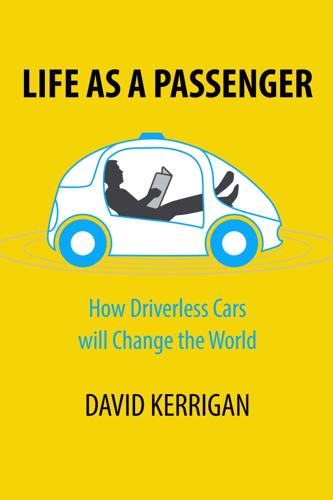
Life as a Passenger: How Driverless Cars Will Change the World
by
David Kerrigan
Published 18 Jun 2017
For those millions of people that will die in the intervening period, we surely have a duty to make it happen as fast as is practicable. It is also worth pointing out that these driverless cars do not operate in isolation and the parallel development of many other technologies will also shape our future landscape - for example, many commentators believe that 3D printing may see the term “factory” redefined and lead to mass layoffs in manufacturing. There are also many more anticipated developments in communications, materials sciences and energy production, not to mention healthcare and even other forms of transport up to and including the mythical flying car (which has recently started to seem less mythical with demonstrations from companies such as Lilium[8] and Uber,[9] among others).
…
We are facing some decisions we may be poorly equipped to take as we reach a point in our evolution where our technical capabilities challenge long-established pillars of our society and threaten social, political and economic change on an unprecedented scale. The reach of emerging technologies will make the Luddite movement of the industrial revolution seem very, very small in nature. And it’s not just driverless cars - changes are coming thick and fast - from transport, to health to 3D printing, robots and virtual reality - it’s the Hard Wave and we can’t assess this change with a mentality of ceteris paribus (all else being equal). The final push towards driverless cars is going to require a massive amount of engineering effort but, more importantly, regulatory and societal accord about acceptable levels of risk (including very sizable risks to a whole swathe of human employment).

The Dark Net
by
Jamie Bartlett
Published 20 Aug 2014
Just over 100 euros will get you a room and working space for a month. Throw in the communal cooking system, and you can get by on very little, and be free to develop your own projects (when you’re not putting in some free labour for the community). Dark Wallet is one of dozens of projects at Calafou, Pablo says. Just before I arrived there had been a session on 3D printing. In the room next door, there is a scientific experiment to grow a strand of amoeba that can store energy. The long-term plan is to create organic computers. Other residents are creating compost toilets, manufacturing solar panels, selling clay ovens and building open-source telecommunications.
…
Digging around the Bitcoin protocols, he noticed it wasn’t quite as secure and anonymous as everyone thought. It was a brilliant invention, of course, but with a few additions could be made even more subversive. That’s when he came up with the idea of Dark Wallet. He moved to Calafou, brought in Pablo alongside Cody Wilson – the American crypto-anarchist who created the first 3D printed gun – and together they raised $50,000 in a month via the crowdfunding site Indiegogo. Although Amir’s technical know-how and experience are admired, his ideals and motivations have put him on the fringes of what has become an increasingly respectable Bitcoin community. Dark Wallet has pitted itself directly against organisations seeking to capitalise and control Bitcoin and its market.
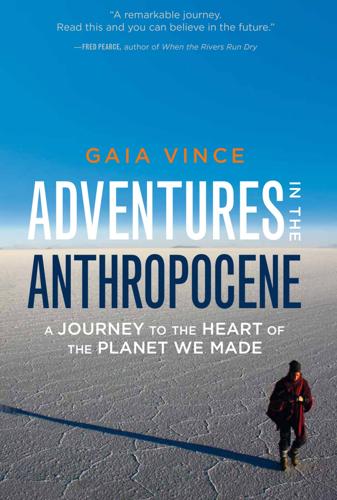
Adventures in the Anthropocene: A Journey to the Heart of the Planet We Made
by
Gaia Vince
Published 19 Oct 2014
Carbon nanotubes, which are so tiny as to be transparent, are also excellent conductors, and offer perhaps the most sustainable solution to the indium problem. Carbon is one of the most abundant elements on Earth, and sheets of carbon nanotubes, called graphene, have several performance advantages over ITO. The invention of 3D printing, which will enable people to manufacture things as and when they need them, may spell an end to unnecessary products – such as novelty items – being made and marketed, and an end to excess packaging. Or, it may lead to an increase in the production of poorly made, one-use disposable items. Currently, only a limited range of plastic items can be made in this way, but as more materials and techniques become available, it would be wise to design concurrent recycling methods.
…
Foundation 342 Goodall, Chris 322 Google 28, 44 Google Earth/Maps 51, 366, 367 Goreau, Thomas 167 gorillas 237, 248, 276 granite 299 graphene 317 grasses/grasslands 7, 106, 109, 129, 221, 222, 231, 238, 240, 271, 287 Great Acceleration 3, 8, 307, 320 Great Barrier Reef, Australia 169 Green Revolution 109, 114, 133, 317 greenhouse gases 8, 23, 34, 35, 51, 67, 68, 144, 146 and biofuel production 145 see also carbon dioxide; methane greenhouses 65 desalinated seawater 219–20 Greenland 73, 177, 178, 182, 215 Greenpeace 183 Gregory, John and Sue 153 Grindr app 367 groundwater 47 contamination of 310 extraction of 50, 72, 115, 203, 215, 379 Groupon (online shopping network) 367 guanacos 74 guano 108 Gujarat, India 110–14, 115–16, 212 Guyana Shield 267 Haber, Fritz 108 Hadley Cell 15–16 Hadley Centre for Climate Research 66 Hadzabe people 223–7, 320 Haiti 28, 366 Haiyan, typhoon 66 Hansen, James 177 Hartmann, Peter 80–82, 85, 86 Haywood, Jim 66 HCFCs 374 helium 298, 329 H5N1 influenza 349 HidroAysén (company) 79–80, 86–7 high-voltage direct current (HVDC) lines 213–14 Hilbertz, Wolf 167 Himalayas 19, 40, 46, 47, 51–3 Hippocrates 304 hippopotamuses 207, 229 Hiroshima, bombing of 327 HIV/Aids 135, 198, 234, 245, 283, 349 Ho Chi Minh City, Vietnam 89, 380 Ho Tong Yen 360–61, 362 Hoatzin/‘stink bird’ 271–2 Hobbs, Richard 253–4 Hofmeister, Anke 172 Holocene epoch 4, 7, 8, 9, 17, 238, 264, 299, 338 honey badgers 199–200, 226 honey birds 199–200, 226 Hong Kong 90, 346, 340, 369–70 Hooker, Joseph 285–6 Hoover Dam, USA 77 Huaneng Group: carbon capture facility 330 huemal deer 82, 83 Hulhumalé, the Maldives 162 Hunt Oil 280 hunter gatherers 7, 11, 94, 107, 124, 223–7, 233, 238, 279, 338, 345 Hurricane Katrina (2005) 380 Hurricane Sandy (2012) 379 Huvadhoo atoll, the Maldives 164 hydrocarbon fuels 214, 296 hydrodams see dams hydroelectricity/hydropower 31–2, 39–42, 52, 77–8, 213–14, 327 see also dams hydrogen 16, 214, 298, 329, 365 ‘hydropeaking’ 85 hydropower see dams; hydroelectricity Hydropower Sustainability Assessment Protocol 98 ibex 50, 260 ice ages 7, 17, 34, 264 ice melt 177–81 see also glaciers Iceland 184, 213 ICRISAT see International Crops Research Institute for the Semi-Arid Tropics IGCC see integrated gasification combined cycle power plants IMF 135 Imja glacial lake, Nepal 52 Incas, the 62, 270, 333, 334 Independent 178 India 34, 37, 116–17, 147, 320 air-conditioning units 374 air pollution/‘brown cloud’ 37, 38 aquifers 111, 112, 114 biofuel production 145, 332 coal-fired stations 325 GM crops 140, 141 groundwater extraction 115, 117 irrigation 114, 115, 211 land bought in Africa 102–3 mobile phones 28 Slum-Dwellers International network 350 tanka system 115–16, 117 tigers 244, 247 water shortages 110, 114–15 see also Ladakh India Space Research Centre 112 indium 315–16 indium tin oxide (ITO) 316 Indonesia 2, 35, 129, 256 ‘Indus Oasis’ (casino) 113 Indus River 53, 71–2 Industrial Revolution 3, 35, 263, 300, 307, 310 industrial symbiosis manufacture see ‘closed-loop’ manufacture insects 1, 17, 71, 108, 141, 142, 263, 271, 291 as food 97, 148, 388--9 and pest-control 134 see also ants; bees integrated gasification combined cycle (IGCC) power plants 330, 331, 332 Interface (carpet manufacturer) 319 International Crops Research Institute for the Semi-Arid Tropics (ICRISAT) 139–40 International Energy Agency (IEA) 213, 318, 325 International Institute for Environment and Development 98 International Thermonuclear Experimental Reactor (ITER) 328–9 Internet, the 11, 18, 24, 26, 27, 29–34, 136, 322, 367–9 Inuit, the 182 invasive species 250, 252–6 iron 298, 299, 306, 307 Irrawaddy River 53 irrigation 72, 79, 109, 114, 115, 118, 121, 132, 133, 143 with desalinated seawater 219–20 in deserts 107 drip 112, 113, 114, 120 in India 49, 50, 51, 52, 54, 56, 57, 58, 59, 61, 211 in Libya 215 solar-powered 211 Isiolo, Kenya 193, 194 Isla Incahuasi, Bolivia 334 Israel: electric cars 373 Itaipu dam, Brazil/Paraguay border 102 ITER see International Thermonuclear Experimental Reactor ITO see indium tin oxide Ito, Akinori 326 Ituri Forest, Democratic Republic of Congo 246 ivory trade 198, 246 Jadeja, Hardevsinh 110–14, 143 jaguars 240–43, 237, 247, 260, 270, 275, 278 Janjaweed, the 245 Japan 102, 147, 161, 186, 318–19, 327, 340 jatropha 145 jellyfish 185–6 JET experiment 329 jet stream, the 180–81 Jinja, Uganda 122 Jones, Steve 378 Kalinowski, Celestino 279, 280 Kalinowski, Jan 279–80 Kalundborg, Denmark 320 Kampala, Uganda 112 Kandholhudhoo, the Maldives 160, 161, 163 Karachi, Pakistan: Orangi slum 350 Kathmandu, Nepal 18, 30, 32, 36–7, 39, 42 Kenya 135 drought 193, 195–6, 200–1, 206 education 204–5 206 M-Pesa 28 missionaries/missions 193–4, 199, 202, 204–5, 206–7, 208 pastoralists 196, 201, 205–6, 210 road-building 197–8 shanty towns 350 tribal conflict 193, 194–5, 196–7, 201, 206 see also missionaries; Turkana, Lake Kenya, Mount 46, 235 Kew Gardens, London 286 kha-nyou (rodent) 94 Khone Phaphene Falls, Laos 97 Khulna, Bangladesh 343, 346, 347, 352 Kikwete, Jakaya Mrisho, President of Tanzania 230, 259 Kilimanjaro, Mount 46 Kilimo Trust 120 Kinabalu, Mount 46 kingfishers 268, 271 Kipling, Rudyard 18 Kiribati 174–7 Kissinger, Henry 109 koala bears 237, 250 Kolkata, India: 2 Nehru Colony 366–7 Konik ponies 236 Korea, South 90, 102, 124, 346, 365 POSCO iron and steel consortium 336 krill 180 Kubuqi Desert, China 192 Kyakamese village, Uganda 118–20 Laama, Ringin 40 labour, division of 339 Lackner, Klaus 294, 295–6 Ladakh, India 48–51 artificial glaciers 53, 56–61 Laetoli, Tanzania 223–4 landslides 40, 46, 52 languages 26, 55, 62, 224, 273, 277, 347, 378 Lanzhou, China 362 Laos 88, 97, 98, 99 cluster bombs 90 Communist government 90, 91, 94 opium use 89 road-building 91–2 slash-and-burn 89 see also Mekong River La Paz, Bolivia 274, 275, 310 Las Vegas, Nevada 103, 193 ‘Late Heavy Bombardment’ 298 Laurance, Bill 255 lead/lead mining 301, 310, 315, 316 Leakey, Mary 223–4, 232 legumes 38, 133, 134 Leh, Ladakh, India 50–51, 54–5 leishmaniasis 274 lemurs, Madagascan 247, 250, 256 Lenfest Center for Sustainable Energy, Columbia University 294 León, German Cardinas 348 Leonard, Annie: The Story of Stuff 319 leopards 94, 227, 229 snow leopards 33, 260 leprosy 343 Li Quan 247 Libya: Great Man-made River project 215 Licancabur volcano, Bolivia 333 Licapa, Peru 62–4 ‘light-bulb conspiracy’ 312 lighting/light bulbs 315, 371 Lima, Peru 216–17 asentamientos humanos (AAHH; slums) 62, 217, 218, 347–8, 352 fog-harvesting 217–19 lions 227, 228, 229, 239–40, 248 Liquiñe–Ofqui fault line 85 lithium 332, 335–6 Liverpool 349 livestock 147, 148, 196, 200–1, 206 see also cattle; sheep; yaks llamas 74, 221, 300, 334 logging industry 9, 267, 268, 270, 273, 274, 276, 277, 283, 288, 289--90 Loiyangalani, Kenya 199, 204–5, 206–8 London 317, 349, 350, 364, 372, 378 ‘Gherkin’ 374 ‘guerrilla gardeners’ 377 smog 3, 35 Thames Barrier 379 Lopes, Antonio Francisco Bonfim (‘Nem’) 356 Lord’s Resistance Army (LRA) 126, 245 Loshner, Gabriella 83 Lovelock, James 294 Lowoi (schoolteacher) 201, 202 Luang Prabang, Laos 89 Lugo, Ariel 254 Luis Val, Adalberto 291, 292 Lummerich, Anne 218 Luna, Javier Torres 217–18 Lyme disease 242 lysine 138 Ma’aden aluminium mine, Saudi Arabia 104 Maasai, the 224, 229–31 macaws 268, 271, 278, 281 McDougall, Gerald 188–9 McKinsey (consultants) 103, 319 Macquarie Island: rabbits 255 Madagascan lemurs 247, 250, 256 Madagascar 93, 124, 237, 264 Madidi National Park, Amazon Basin 267, 269–72, 273–4, 277–8 Madre de Dios region, Peru 278–84 Madre de Dios River, Peru 280–81, 283 Madrid: Canada Real Galiana 344 mahogany trees 270, 275, 279, 289 maize 125, 129, 130, 138, 144, 250 Makerere University, Kampala 137, 138 malaria 43, 121, 135, 199, 224, 274, 283, 293, 341, 367 Malawi 135 Malaysia 28 Petronas Towers 370 see also Singapore Maldives, the 152–3, 156--9, 175, 186 artificial islands/floating islands 157, 162–3 coral reefs 158, 159, 160, 161–2, 164, 166–8 ‘designer islands’ 160–61 heroin dependency 156 overfishing 169–70, 171–2 Soneva Fushi 172–3 tourists 153–4, 156, 158, 160, 163, 171, 172, 173 Malé, the Maldives 153, 154, 156, 161 Mamang-Kanga, Jean-Baptiste 245 Manaus, Brazil 290–91 manta rays 170, 185, 245 Manu National Park, Madre de Dios, Peru 278–80 Manu River 280–81 Manu Wildlife Centre 279, 281 marijuana 357, 369 marine reserves 186–7 Mascho-Piro tribe 279 Masdar, Abu Dhabi 366 Matterhorn, the 48 Mawlamyaing, Burma 91 meat consumption 147, 148, 290, 322 Medellín, Colombia 353–4, 357 Mekong River 53, 88–9, 90–91, 95, 99–101, 105 fish/fishing 95–6, 100, 101 hydrodams 83, 88, 89, 91, 92–4, 95–6 meltwater see glaciers Mesozoic era 221 metals 298, 299–300 rare earth 305, 315, 373 see also copper; gold; gold mining; iron; silver; silver mining methane 41, 78, 129, 134, 178, 214 methanol 296 metro/underground systems 346, 353, 354, 357, 364, 372, 373 Mexico City 379 miconia shrub 252 ‘microloan’ cooperatives 130 millets 130, 139, 143 minerals 191, 272, 298–9, 300, 305 mining 8, 9, 300, 308–9 see also coal; copper mining; gold mining; silver mining miscarriages 203 missionaries/missions see Kenya mobile phones/smartphones 27–9, 34, 118, 136, 210, 212, 231, 300, 304, 311, 312, 315–16, 335, 367 see also M-Pesa Mohammed, Fatima 161 Mojave Desert, California 209, 213, 214 monkeys 275, 291 chimpanzees 3–4, 306 howler monkeys 271, 281 spider monkeys 267, 271, 275–6, 277, 278, 281 Monsanto (company) 140–41 Montana, USA 236 Morales, Evo, President of Bolivia 274, 277, 278, 282, 335, 336 Morgan, Ned 121 mosquitoes 47, 274, 293, 341 moths, urban 377 mountains 8, 45–8, 66–7 painting white 62–4 M-Pesa mobile phone banking service 28, 208, 211, 350 mulch/mulching 133, 134, 145 Mumbai, India 344, 374 Murray River 72 Museveni, Yuweri, President of Uganda 126 mussels 187 Mutharika, Bingu wa, President of Malawi 135 Mwanawasa, Levy, President of Zambia 175 Nagasaki, bombing of 327 Nairobi 200, 207, 209, 210, 344 Nakai, Laos 92–4 Nam Theun II dam, Laos 92–4 Namibia 215, 216, 362 Nangi, Nepal 21, 24, 25–7, 30–32, 33, 36, 43 Napoleon Bonaparte 285 NASA 177, 294, 333 NaSARRI see under Uganda Nasheed, Laila 154 Nasheed, Mohamed (‘Anni’), President of the Maldives 153–8, 160, 161, 163, 172, 173–5, 190 National Geographic 273 Neanderthals 2, 238, 259, 306 Neem trees 134 Nepal 18–20, 21–3, 24–7, 43 Bengal tigers 243–5 electricity 20, 27, 41–2, see also hydropower (below) glacier melt 37, 40–41 hydropower 31–2, 39–40, 41 Internet/Wi-Fi 24, 27, 30–31, 32, 33, 34 tourism 32–3, 39 yak herders 24, 33, 37, 40 see also Kathmandu; Nangi Netherlands, the 236–7, 379 New Guinea: rainforest 264 New Orleans: and Hurricane Katrina 380 New Songdo City, South Korea 365 New York City 35, 317, 349, 350, 365, 378, 379 Bank of America Tower 371 raised railway park 377 water sources 104 New York Times 77 New Zealand 47, 175, 184, 237, 308 Ngorongoro Crater, Tanzania 224, 228–30 Niger Delta 309 Nigeria 114 Nile, River 71–2, 79, 103, 122, 204, 207 Nineveh 339, 340 nitrogen 8–9, 16, 108, 133, 146, 373 nitrogen-’fixing’ plants 133, 136, 142, 143–4 Nomura’s jellyfish 186 Norphel, Chewang 53–9, 60–61, 69 North-East Passage 181 North Pole, the 177, 182 Norway: hydroelectricity 213–14 Nottingham, University of: Frozen Ark project 259 Nubian Sandstone Aquifer 215 nuclear energy/power stations 327–8 nuclear fusion plants 328–30 nylon stockings/tights 312 obsolescence, planned 312–14 oceans 150–52 acidification 3, 9, 152, 153, 165, 168–9 conservation zones/reserves 186–7 phytoplankton 152, 180, 190 pollution 152, 187–9 see also Arctic Ocean; sea-levels, rising ocelots 240 Odentethes hatcheri (fish) 83 Ohtake, Ruy 358 oil/oil industry 23–4, 181–2, 183, 280, 284, 296, 308, 309, 318, 326 oil spills 182 Okehampton, Devon 349 Okello, David Kalule 135–9 Olmaikorit-Oumo, Florence 130 Ologara village, Uganda 125–6, 127–31 Oman: peridotite 296 Omo Valley, Ethiopia 203, 204 Omoding, Ephrem 125, 127 Omoding, Winifred 125–7, 129–33, 143 One-Laptop-One-Child organisation 31 Oostvaardersplassen, the Netherlands 236–7 opium industry 89–90 orang-utans 248, 273, 276–7 Ordos, Inner Mongolia 331, 359 organic farming 133–4 orius (pirate bugs) 219 oryx, Arabian 256 oscar (fish) 291–2 ostriches 197 otters 83, 270 oxygen 16, 142, 214, 285, 293–4 lack of 133, 185, 186, 187, 291–2 and photosynthesis 263, 264, 284, 299 oysters 168 ozone 35, 37, 38, 373 ozone layer 3, 11, 17, 66 painting mountains/roofs white 62–4, 374 palm oil 276, 290 palm trees 172, 204, 266, 270, 293, 343 Panama Canal 320–21 pandas, Chinese 257 Pangaea 45 pangolins 245 Pantanal, the 240–42 Paraguay 102, 240 Parana River 102 Parco, Salamon 62–4 Paris 347, 364, 373 Parker, Ted 280 parks, national 236 see Bardia, Madidi, Manu, Serengeti and Yellowstone National Park Pascua River dam, Patagonia 73, 75–6 passenger pigeons 259 pastoralists 205–6, 210, 214, 220, 225 see also Maasai, the Patagonia 74–5, 81, 86 hydroelectric dams 73–4, 75–7, 79–88 Peak District, England 310 peanuts 118–19, 120, 129, 132–3, 136, 143 genetically modified 138, 139–40 peas 51, 139 peat 263, 310 Pemuteran, Bali 167 peridotite 296 Peru 41, 52, 108, 278–84, 332 mountain painting 62–4 pest-control/pesticides 129, 132, 134, 136, 141, 143, 185, 219, 243, 293 petrels 186 petroleum 309, 325–6 Petronas Towers, Malaysia 370 Phakding, Himalayas 39 pharmaceuticals 272 Philippines 28, 65, 66 Phnom Penh, Cambodia 100 Phoenix, Arizona 103, 193 photography 304 photosynthesis 2, 16, 38, 143–4, 165, 180, 190, 214, 263, 264, 265, 284–5, 291, 293–4, 297, 299, 317 photovoltaic (PV) panels see solar energy Phuktse, Ladakh, India: artificial glacier 58–9 phytoplankton 152, 180, 190 piezoelectric generators 363 Pilon Lajas Biosphere Reserve, Bolivia 278 Pinatubo, Mount (Philippines): eruption of (1991) 65 pine beetles 236 Piñera, Sebastian, President of Chile 80, 87 PlanIT Valley, Portugal 365 plankton 84, 168, 185, 309, 386 see also phytoplankton plants 1–2, 47, 70–71, 262, 263, 288, 326 plastic 5, 187–8, 311 bags 4, 128, 189, 323, 341 3D-printed items 317 turning back into oil 326 plate tectonics see tectonic movements platinum 214, 298 Playas de Rosarito, Mexico: proposed desalination plants 102 Pleistocene epoch 236, 237, 238 plutonium 328 Pokhara, Nepal 18, 19–20, 30 polar bears 178, 187 polio vaccination 367 pollution 310, 312, 318, 321, 330, 360–61 and environmental services fees 322–3 radioactive 7, 11 see also air pollution; ocean; waste; polyester garments 187 population growth 3, 9, 11, 36, 146–7, 251 POSCO iron and steel consortium 336 potatoes, sweet 140, 143 Potosí, Bolivia: silver mines 300–6, 307, 310 prickly pear 251, 256 printers, electronic 313 3-D 317 public transport 345, 372–3, see also metro Puerto Maldonado, Peru 283–4, 288 Puerto Rico, Gran Canaria: International Institute of Tropical Forestry 254 pumas 73 pumps, groundwater 50, 51, 115, 121, 122 see also boreholes; wells Pun, Mahabir 18–19, 21–7, 30–33, 37 Pun tribe 24, 27, 41 Putin, Vladimir, President of Russia 181–2 PV panels see solar energy pyrolysis 326 Qatar 219 Quechua 62, 347 Racoviteanu, Adina 60–61 radio 17–18 Rahmsdorf, Stefan 177 rain/rainfall 15, 37–8, 46, 47, 150, 151 acid rain 3, 310 in Africa 118, 122, 195 artificial production of 66, 132 harvesting and storing 115–17, 121–2, 216 in India 49–50, 111 in Lima, Peru 216, 217 in Uganda 118, 119, 122, 128 rainforests 15–16, 262, 264–5, 272–3 Borneo 264, 276–7 see also Amazon rainforests Raj-Samadhiyala, Gujarat, India 110–14 Rajkot, Gujarat, India 110, 115 Rajoelina, Andry, President of Madagascar 124 rats 250, 255 Ravalomanana, Marc, President of Madagascar 124 recycling see waste; water REDD+ (Reducing Emissions from Deforestation and Forest Degradation) 287–8, 289 redwoods, Californian 218, 293 Rees, Richard 171 refrigerants 17 Reid, Brian 84 reservoir-building 53, 77–8, 104, 112 Restore and Revive 259 rhinoceroses 227, 228, 246, 248, 258 rhododendrons 250 Ribeiro da Silva, José Claudio 268 rice/rice-growing 78, 90, 97, 101, 109, 134, 136, 143–4, 147, 185, 250 genetically modified 140, 141 Rift Valley 203, 223, 232 Rimac River 216 Rio de Janeiro, Brazil: favelas 354–8, 367 Rio Grande 72 rivers 4, 8, 50, 53, 70–73, 104, 308 see also dams and specific rivers road-building Amazon rainforest 281–4 Burma–Vietnam 91–2 Serengeti 258–9 Robichaud, Bill 92, 94 Robinah, Byarindaba 118–20, 121 Rockefeller Foundation 138, 139 ‘rock glaciers’ 60 rocks 2, 46, 74, 108, 299–300 Rome/Romans 34, 307 roofs, whitewashing 64, 374 Roosevelt, Theodore, US President 227 Rotterdam, Netherlands 379 Rubbish Island, 163 Ruiz, Rosa Maria 266–72, 273–4, 275, 277, 278 ruminants 221–2, see cattle Rurrenabaque, Bolivia 265–6, 269 Rwanda: gorillas 276 Sahara Desert 195 aquifers 215 Desertec solar power plant 213 Great Green Wall 192 minerals from 191, 272 salamander, jumping 257 Sale, Peter 164, 167 salmon, farmed 185 salt production 334 Salter, Stephen 66 Samburu tribe 195, 197, 201, 204, 208 Samso island, Denmark 325 San Cristobel, Bolivia: silver/zinc mine 333 San Diego, California: Zoo 259 San people 232–5 Sánchez de Lozada, Gonzalo 273 sand dams 198, 216 sanitation 11, 20–21, 38, 115, 339 see also toilets Santa Cruz, island of, Galapagos 251–3 Charles Darwin Research Station 251–2, 253, 254 Santiago, Chile 75 São Paulo, Brazil: Heliopolis favela 358 saola antelope 94 Sarima, Kenya 201–3 SARS 349 satellites 18, 22–3 mapping by 60–61, 112, 367 Saudi Arabia 102, 104, 308 solar-powered desalination plants 216 superfarms 148 savannahs 221–3, 238, 265 Save the Children 135 scalesia (Scalesia pedunculata) 251, 252, 253 schizophrenia 377 schools see education seabirds 186 sea cucumbers 168–9 seagulls 377 sea-levels, rising 5, 9, 52, 151, 153, 159–60, 174–8, 189–90, 343, 379 Seasteading Institute 189 Semiletov, Igor 178 Seoul, South Korea 346 Serengeti National Park 223, 227–32, 256, 258 Serere bird 271–2 Serere Sanctuary, Amazon Basin 268 service manuals 313–14 sesame seeds 125, 131, 138 Shabab, the 245 Shanghai 35, 89, 211, 321, 322, 379 shanty towns see slums sharks 164, 171–2, 185, 242 whale 170–71 shearwaters 186 sheep 74, 81, 82, 221, 236 Shemenauer, Bob 219 ships 65, 317, 320–21 Shivdasani, Sonu 172–3 Shrestha, Alok 41 Siem Reap, Cambodia 99 silica 84 silicosis 301, 302, 303, 306 silver 304–5, 312 silver mining, Bolivian 300–6, 333 silver nitrate 304 Silvestre, Elizabeth 216–17 Simpson Valley, Chile 83 Singapore 90, 346, 360, 362, 369 Marina Bay Sands 376 Si Phan Don, Laos 95 Siteram (Nepali guide) 243–4 Skarra, Ladakh, India 53 Skinner, Jamie 98 skyscrapers 370–71 slash-and-burn 107, 128, 277 sleeping sickness 225 sloths 237, 250, 270 slums/shanty towns 341–4, 346, 347, 348–53, 366–7, 378 in Brazil (favelas) 354–8, 367 smartphones see mobile phones Smil, Vaclav 250–51 Smithsonian Institute, Washington DC 227 Smits, Willie 276–7 social media sites see Facebook; Twitter soil(s) 108, 127–9, 142 solar energy/power 30, 211–14 combined with wind projects 209, 213, 361 for desalination plants 193, 216, 219–20 for public and private buildings 363–4, 366 panels/photovoltaic (PV) panels 116, 211–12, 214, 315, 331, 332 and payback schemes 211, 212, 323 storage and distribution 213–14, 365 solar radiation management 63–5, 68–9, 132 Soneva Fushi, the Maldives 172–3 sorghum 120, 125, 130, 139, 143, 144 Soroti, Uganda 125–6, 132, 135 Soules, Luke 313, 314 South Africa 118, 236, 351–2 Southern Ice Field 73 soya/soybean 281, 289, 290 Spain 65, 128, 184, 213, 216, 301, 307 spotted fever 242 Stakmo, Ladakh, India 48–50, 61 Stanbic Bank Uganda 120 star coral 257 Starbucks 368 steam power 213, 219, 307, 365 Stone Age 2–3, 307 stoves see cooking stromatolites 16 sturgeon 71 sugar cane 122, 144, 145, 290 Sumatra: rainforest 264 Sumerian cities 339 Sundrop Farms, South Australia 219 sunflowers 125, 131, 138, 145 sunlight see solar energy; solar radiation management Survival International 234 sustainability 323–5, 369, 371, 375–6 Suzano (Brazilian consortium) 290 Svalbard islands, the Arctic 37 Switzerland 20, 21, 48, 60 Syncrude mine, Athabasca oil sands, Canada 4 syngas 296, 330 Syngenta 140–41 Tacana people 269, 277 Taiwan 90, 146–7 tamarin, pied 291 tanka system 115–16 Tanzania 223–4 road-building 258–9 tourism 227, 231 UAE hunting reserves 227, 230 see also Serengeti National Park tapirs 237, 240, 270, 275, 281 tar sands 309 tara trees 218 Target (supermarket) 369 tarpans 236 Tashi (Indian farmer) 48, 49, 61 Tasmanian devils 247 Tasmanian tigers 260 taxes 97, 123, 194, 324, 350, 356, 357, 368, 372 tectonic movements 45–6, 73, 85, 250, 263, 299, 334 telegraphy 27 television sets 313, 314, 315 tenebrionid desert beetle 218 Thailand 90, 91, 93, 100, 256 Thakek, Laos 91, 95 Thar Desert, Rajasthan, India 209 Thiel, Peter 189 Thiladhunmathi atoll, the Maldives 164 Thilafushi, the Maldives 163 Thompson, Lonny 64 thorium/thorium reactors 315, 328 3D printing 317 Three Gorges Dam, China 83 Thupstan (Indian farmer) 50 Tianjin, China Eco-city 360–63, 375 GreenGen energy plant 330 Tiedemann, Kai 218 tigers 94, 243–5, 246–8, 249, 260 tiger wine 245, 246 Tigris, River 71–2 tilapia 207, 208 tin/tin mining 299, 301, 310, 316 tin oxides, non-stochiometric 316 Toba, Indonesia: volcanic eruption 2 toilets 20–21, 25, 26, 113, 115, 116, 348, 363 tokamaks 329 tokay geckos 256 Tokyo: population 340 Tomasetti, Roberto 166–7 Tong, Anote, President of Kiribati 174–6, 190 Tonle Sap, Lake 99–100 Torres, Geronimo 63–4 tortoises 214, 250, 251, 252, 253, 255 Toshiba 314 tourism industry/tourists Amazon rainforest 270, 273, 276, 279 Cambodia 99 and ‘conservation fees’ 248 India 50–51, 57, 244 Maldives 153–4, 156, 158, 160, 163, 171, 172, 173 Nepal 32–3, 39 Serengeti 228, 231 in Tanzania 227, 231 TRAFFIC 245, 246 trains, maglev 372 trees 129, 263 artificial 295–6, 297 fog-trapping 218 see also deforestation; forests tryptophan 138 tsetse flies 225 Tsodilo Hills, Botswana 233 tsunamis 160, 161, 328 tuberculosis 135, 234 Tullow Oil 210 tuna 169–70, 185, 187 tundra, Arctic 178, 293 tungsten 298 tunqui (bird) 279 Turkana, Lake (Kenya) 193, 199, 203–4, 205, 208, 209 and see below ‘Turkana Boy’ 203 Turkana Corridor Low Level Jet Stream 208–9 Turkana solar power station 210–11 Turkana tribe 194–5, 197, 201–2, 204, 207–8, 242, 316 Turkana wind farm 208–9, 210 Turkmenistan 59 turtles 170, 174, 185, 187, 268, 280 Tuvalu 174 Twitter 28–9, 367, 368 Uganda 26, 118–22 agriculture 118–22, 125, 126–33, 135, 136, 137–8, 140, 144 gorillas 276 National Semi-Arid Resources Research Institute (NaSARRI) 130–31, 136, 138 roads 144 United Arab Emirates: Tanzanian hunting reserves 227, 230 United Nations Convention on Biological Diversity 247 Environment programme 37, 248 Food and Agriculture programme 145 GRIDMAP programme 203 United States of America 157 Agency for International Development 133 biofuel production 145 dams 77, 98 maglev trains 372 meat consumption 147, 148 National Ignition Facility, California 329 Natural Resources Defense Council 374 no-till agriculture 142 oil consumption 318 water use 102, 362 see also specific states and towns Ur 339 uranium 308, 315, 327, 328 Uribe, Freddie 342 Uunartoq Qeqertaq 178 Uyuni, Bolivia 332–3, 336–7 salar (salt flats) 333–6, 337 Vabbinfaru, the Maldives 166–7 Vanua Levu, Fiji 176 VCRs 313–14 vegetables 26, 61, 65, 97, 272 see also legumes Venice 168 vetifer 129 Victoria, Queen 27 Vientiane, Laos 91 Vietnam 90, 92, 100–1 floating markets 101 Villa Hermosa, Colombia 341, 342–3, 344, 346, 347, 352 villages 338–9, 378 Vio, Francisco 82 Vishwanath (‘Zen Rainman’) 116–17 vitamin A deficiency 140 VoIP phones 31 volcanoes/volcanic eruptions 2, 5, 36, 65, 66, 68, 73, 79, 85, 299, 333 Vong, Mr (restaurateur) 96–7 Wageningen, Carlo van 210 Walker, Barry 279, 280–81 warthogs 229 waste 310–11, 312–13, 361 electronic 311–12, 313 food 144, 147 plastic 5, 187–8, 326 recycling 319–20, 322, 323, 324, 351 waste-pickers 350, 351–2 water 11, 46–7, 72–3, 215 fetching 202–3 recycling 115, 323, 362–3 ‘virtual water’ trade 102–3 see also aquifers; boreholes; dams; desalination; fossil water; glaciers; groundwater; irrigation; rain; reservoirs; rivers; wells water shortages 72–3, 103–4, 215–16 Africa 118, 121, 122–3, 215 India 49–51, 57, 110, 111–13, 114–15 see also droughts wattieza (plants) 263 wells, hand-dug 121, 122, 132 Westpoint Island, Belize 188–9 wetlands 53, 71, 78, 85 artificial 104–5 whale sharks 170–71 whales 73, 164, 180 wheat 7, 23, 38, 43, 51, 88, 109, 136, 138, 193, 250, 251 Wiens, Kyle 313, 314–15 Wi-Fi 24, 30–31, 32, 356 Wikipedia 12 wildebeest 228, 229, 231, 258 wildlife see animals and specific animals Wilson, E.
…
Foundation 342 Goodall, Chris 322 Google 28, 44 Google Earth/Maps 51, 366, 367 Goreau, Thomas 167 gorillas 237, 248, 276 granite 299 graphene 317 grasses/grasslands 7, 106, 109, 129, 221, 222, 231, 238, 240, 271, 287 Great Acceleration 3, 8, 307, 320 Great Barrier Reef, Australia 169 Green Revolution 109, 114, 133, 317 greenhouse gases 8, 23, 34, 35, 51, 67, 68, 144, 146 and biofuel production 145 see also carbon dioxide; methane greenhouses 65 desalinated seawater 219–20 Greenland 73, 177, 178, 182, 215 Greenpeace 183 Gregory, John and Sue 153 Grindr app 367 groundwater 47 contamination of 310 extraction of 50, 72, 115, 203, 215, 379 Groupon (online shopping network) 367 guanacos 74 guano 108 Gujarat, India 110–14, 115–16, 212 Guyana Shield 267 Haber, Fritz 108 Hadley Cell 15–16 Hadley Centre for Climate Research 66 Hadzabe people 223–7, 320 Haiti 28, 366 Haiyan, typhoon 66 Hansen, James 177 Hartmann, Peter 80–82, 85, 86 Haywood, Jim 66 HCFCs 374 helium 298, 329 H5N1 influenza 349 HidroAysén (company) 79–80, 86–7 high-voltage direct current (HVDC) lines 213–14 Hilbertz, Wolf 167 Himalayas 19, 40, 46, 47, 51–3 Hippocrates 304 hippopotamuses 207, 229 Hiroshima, bombing of 327 HIV/Aids 135, 198, 234, 245, 283, 349 Ho Chi Minh City, Vietnam 89, 380 Ho Tong Yen 360–61, 362 Hoatzin/‘stink bird’ 271–2 Hobbs, Richard 253–4 Hofmeister, Anke 172 Holocene epoch 4, 7, 8, 9, 17, 238, 264, 299, 338 honey badgers 199–200, 226 honey birds 199–200, 226 Hong Kong 90, 346, 340, 369–70 Hooker, Joseph 285–6 Hoover Dam, USA 77 Huaneng Group: carbon capture facility 330 huemal deer 82, 83 Hulhumalé, the Maldives 162 Hunt Oil 280 hunter gatherers 7, 11, 94, 107, 124, 223–7, 233, 238, 279, 338, 345 Hurricane Katrina (2005) 380 Hurricane Sandy (2012) 379 Huvadhoo atoll, the Maldives 164 hydrocarbon fuels 214, 296 hydrodams see dams hydroelectricity/hydropower 31–2, 39–42, 52, 77–8, 213–14, 327 see also dams hydrogen 16, 214, 298, 329, 365 ‘hydropeaking’ 85 hydropower see dams; hydroelectricity Hydropower Sustainability Assessment Protocol 98 ibex 50, 260 ice ages 7, 17, 34, 264 ice melt 177–81 see also glaciers Iceland 184, 213 ICRISAT see International Crops Research Institute for the Semi-Arid Tropics IGCC see integrated gasification combined cycle power plants IMF 135 Imja glacial lake, Nepal 52 Incas, the 62, 270, 333, 334 Independent 178 India 34, 37, 116–17, 147, 320 air-conditioning units 374 air pollution/‘brown cloud’ 37, 38 aquifers 111, 112, 114 biofuel production 145, 332 coal-fired stations 325 GM crops 140, 141 groundwater extraction 115, 117 irrigation 114, 115, 211 land bought in Africa 102–3 mobile phones 28 Slum-Dwellers International network 350 tanka system 115–16, 117 tigers 244, 247 water shortages 110, 114–15 see also Ladakh India Space Research Centre 112 indium 315–16 indium tin oxide (ITO) 316 Indonesia 2, 35, 129, 256 ‘Indus Oasis’ (casino) 113 Indus River 53, 71–2 Industrial Revolution 3, 35, 263, 300, 307, 310 industrial symbiosis manufacture see ‘closed-loop’ manufacture insects 1, 17, 71, 108, 141, 142, 263, 271, 291 as food 97, 148, 388--9 and pest-control 134 see also ants; bees integrated gasification combined cycle (IGCC) power plants 330, 331, 332 Interface (carpet manufacturer) 319 International Crops Research Institute for the Semi-Arid Tropics (ICRISAT) 139–40 International Energy Agency (IEA) 213, 318, 325 International Institute for Environment and Development 98 International Thermonuclear Experimental Reactor (ITER) 328–9 Internet, the 11, 18, 24, 26, 27, 29–34, 136, 322, 367–9 Inuit, the 182 invasive species 250, 252–6 iron 298, 299, 306, 307 Irrawaddy River 53 irrigation 72, 79, 109, 114, 115, 118, 121, 132, 133, 143 with desalinated seawater 219–20 in deserts 107 drip 112, 113, 114, 120 in India 49, 50, 51, 52, 54, 56, 57, 58, 59, 61, 211 in Libya 215 solar-powered 211 Isiolo, Kenya 193, 194 Isla Incahuasi, Bolivia 334 Israel: electric cars 373 Itaipu dam, Brazil/Paraguay border 102 ITER see International Thermonuclear Experimental Reactor ITO see indium tin oxide Ito, Akinori 326 Ituri Forest, Democratic Republic of Congo 246 ivory trade 198, 246 Jadeja, Hardevsinh 110–14, 143 jaguars 240–43, 237, 247, 260, 270, 275, 278 Janjaweed, the 245 Japan 102, 147, 161, 186, 318–19, 327, 340 jatropha 145 jellyfish 185–6 JET experiment 329 jet stream, the 180–81 Jinja, Uganda 122 Jones, Steve 378 Kalinowski, Celestino 279, 280 Kalinowski, Jan 279–80 Kalundborg, Denmark 320 Kampala, Uganda 112 Kandholhudhoo, the Maldives 160, 161, 163 Karachi, Pakistan: Orangi slum 350 Kathmandu, Nepal 18, 30, 32, 36–7, 39, 42 Kenya 135 drought 193, 195–6, 200–1, 206 education 204–5 206 M-Pesa 28 missionaries/missions 193–4, 199, 202, 204–5, 206–7, 208 pastoralists 196, 201, 205–6, 210 road-building 197–8 shanty towns 350 tribal conflict 193, 194–5, 196–7, 201, 206 see also missionaries; Turkana, Lake Kenya, Mount 46, 235 Kew Gardens, London 286 kha-nyou (rodent) 94 Khone Phaphene Falls, Laos 97 Khulna, Bangladesh 343, 346, 347, 352 Kikwete, Jakaya Mrisho, President of Tanzania 230, 259 Kilimanjaro, Mount 46 Kilimo Trust 120 Kinabalu, Mount 46 kingfishers 268, 271 Kipling, Rudyard 18 Kiribati 174–7 Kissinger, Henry 109 koala bears 237, 250 Kolkata, India: 2 Nehru Colony 366–7 Konik ponies 236 Korea, South 90, 102, 124, 346, 365 POSCO iron and steel consortium 336 krill 180 Kubuqi Desert, China 192 Kyakamese village, Uganda 118–20 Laama, Ringin 40 labour, division of 339 Lackner, Klaus 294, 295–6 Ladakh, India 48–51 artificial glaciers 53, 56–61 Laetoli, Tanzania 223–4 landslides 40, 46, 52 languages 26, 55, 62, 224, 273, 277, 347, 378 Lanzhou, China 362 Laos 88, 97, 98, 99 cluster bombs 90 Communist government 90, 91, 94 opium use 89 road-building 91–2 slash-and-burn 89 see also Mekong River La Paz, Bolivia 274, 275, 310 Las Vegas, Nevada 103, 193 ‘Late Heavy Bombardment’ 298 Laurance, Bill 255 lead/lead mining 301, 310, 315, 316 Leakey, Mary 223–4, 232 legumes 38, 133, 134 Leh, Ladakh, India 50–51, 54–5 leishmaniasis 274 lemurs, Madagascan 247, 250, 256 Lenfest Center for Sustainable Energy, Columbia University 294 León, German Cardinas 348 Leonard, Annie: The Story of Stuff 319 leopards 94, 227, 229 snow leopards 33, 260 leprosy 343 Li Quan 247 Libya: Great Man-made River project 215 Licancabur volcano, Bolivia 333 Licapa, Peru 62–4 ‘light-bulb conspiracy’ 312 lighting/light bulbs 315, 371 Lima, Peru 216–17 asentamientos humanos (AAHH; slums) 62, 217, 218, 347–8, 352 fog-harvesting 217–19 lions 227, 228, 229, 239–40, 248 Liquiñe–Ofqui fault line 85 lithium 332, 335–6 Liverpool 349 livestock 147, 148, 196, 200–1, 206 see also cattle; sheep; yaks llamas 74, 221, 300, 334 logging industry 9, 267, 268, 270, 273, 274, 276, 277, 283, 288, 289--90 Loiyangalani, Kenya 199, 204–5, 206–8 London 317, 349, 350, 364, 372, 378 ‘Gherkin’ 374 ‘guerrilla gardeners’ 377 smog 3, 35 Thames Barrier 379 Lopes, Antonio Francisco Bonfim (‘Nem’) 356 Lord’s Resistance Army (LRA) 126, 245 Loshner, Gabriella 83 Lovelock, James 294 Lowoi (schoolteacher) 201, 202 Luang Prabang, Laos 89 Lugo, Ariel 254 Luis Val, Adalberto 291, 292 Lummerich, Anne 218 Luna, Javier Torres 217–18 Lyme disease 242 lysine 138 Ma’aden aluminium mine, Saudi Arabia 104 Maasai, the 224, 229–31 macaws 268, 271, 278, 281 McDougall, Gerald 188–9 McKinsey (consultants) 103, 319 Macquarie Island: rabbits 255 Madagascan lemurs 247, 250, 256 Madagascar 93, 124, 237, 264 Madidi National Park, Amazon Basin 267, 269–72, 273–4, 277–8 Madre de Dios region, Peru 278–84 Madre de Dios River, Peru 280–81, 283 Madrid: Canada Real Galiana 344 mahogany trees 270, 275, 279, 289 maize 125, 129, 130, 138, 144, 250 Makerere University, Kampala 137, 138 malaria 43, 121, 135, 199, 224, 274, 283, 293, 341, 367 Malawi 135 Malaysia 28 Petronas Towers 370 see also Singapore Maldives, the 152–3, 156--9, 175, 186 artificial islands/floating islands 157, 162–3 coral reefs 158, 159, 160, 161–2, 164, 166–8 ‘designer islands’ 160–61 heroin dependency 156 overfishing 169–70, 171–2 Soneva Fushi 172–3 tourists 153–4, 156, 158, 160, 163, 171, 172, 173 Malé, the Maldives 153, 154, 156, 161 Mamang-Kanga, Jean-Baptiste 245 Manaus, Brazil 290–91 manta rays 170, 185, 245 Manu National Park, Madre de Dios, Peru 278–80 Manu River 280–81 Manu Wildlife Centre 279, 281 marijuana 357, 369 marine reserves 186–7 Mascho-Piro tribe 279 Masdar, Abu Dhabi 366 Matterhorn, the 48 Mawlamyaing, Burma 91 meat consumption 147, 148, 290, 322 Medellín, Colombia 353–4, 357 Mekong River 53, 88–9, 90–91, 95, 99–101, 105 fish/fishing 95–6, 100, 101 hydrodams 83, 88, 89, 91, 92–4, 95–6 meltwater see glaciers Mesozoic era 221 metals 298, 299–300 rare earth 305, 315, 373 see also copper; gold; gold mining; iron; silver; silver mining methane 41, 78, 129, 134, 178, 214 methanol 296 metro/underground systems 346, 353, 354, 357, 364, 372, 373 Mexico City 379 miconia shrub 252 ‘microloan’ cooperatives 130 millets 130, 139, 143 minerals 191, 272, 298–9, 300, 305 mining 8, 9, 300, 308–9 see also coal; copper mining; gold mining; silver mining miscarriages 203 missionaries/missions see Kenya mobile phones/smartphones 27–9, 34, 118, 136, 210, 212, 231, 300, 304, 311, 312, 315–16, 335, 367 see also M-Pesa Mohammed, Fatima 161 Mojave Desert, California 209, 213, 214 monkeys 275, 291 chimpanzees 3–4, 306 howler monkeys 271, 281 spider monkeys 267, 271, 275–6, 277, 278, 281 Monsanto (company) 140–41 Montana, USA 236 Morales, Evo, President of Bolivia 274, 277, 278, 282, 335, 336 Morgan, Ned 121 mosquitoes 47, 274, 293, 341 moths, urban 377 mountains 8, 45–8, 66–7 painting white 62–4 M-Pesa mobile phone banking service 28, 208, 211, 350 mulch/mulching 133, 134, 145 Mumbai, India 344, 374 Murray River 72 Museveni, Yuweri, President of Uganda 126 mussels 187 Mutharika, Bingu wa, President of Malawi 135 Mwanawasa, Levy, President of Zambia 175 Nagasaki, bombing of 327 Nairobi 200, 207, 209, 210, 344 Nakai, Laos 92–4 Nam Theun II dam, Laos 92–4 Namibia 215, 216, 362 Nangi, Nepal 21, 24, 25–7, 30–32, 33, 36, 43 Napoleon Bonaparte 285 NASA 177, 294, 333 NaSARRI see under Uganda Nasheed, Laila 154 Nasheed, Mohamed (‘Anni’), President of the Maldives 153–8, 160, 161, 163, 172, 173–5, 190 National Geographic 273 Neanderthals 2, 238, 259, 306 Neem trees 134 Nepal 18–20, 21–3, 24–7, 43 Bengal tigers 243–5 electricity 20, 27, 41–2, see also hydropower (below) glacier melt 37, 40–41 hydropower 31–2, 39–40, 41 Internet/Wi-Fi 24, 27, 30–31, 32, 33, 34 tourism 32–3, 39 yak herders 24, 33, 37, 40 see also Kathmandu; Nangi Netherlands, the 236–7, 379 New Guinea: rainforest 264 New Orleans: and Hurricane Katrina 380 New Songdo City, South Korea 365 New York City 35, 317, 349, 350, 365, 378, 379 Bank of America Tower 371 raised railway park 377 water sources 104 New York Times 77 New Zealand 47, 175, 184, 237, 308 Ngorongoro Crater, Tanzania 224, 228–30 Niger Delta 309 Nigeria 114 Nile, River 71–2, 79, 103, 122, 204, 207 Nineveh 339, 340 nitrogen 8–9, 16, 108, 133, 146, 373 nitrogen-’fixing’ plants 133, 136, 142, 143–4 Nomura’s jellyfish 186 Norphel, Chewang 53–9, 60–61, 69 North-East Passage 181 North Pole, the 177, 182 Norway: hydroelectricity 213–14 Nottingham, University of: Frozen Ark project 259 Nubian Sandstone Aquifer 215 nuclear energy/power stations 327–8 nuclear fusion plants 328–30 nylon stockings/tights 312 obsolescence, planned 312–14 oceans 150–52 acidification 3, 9, 152, 153, 165, 168–9 conservation zones/reserves 186–7 phytoplankton 152, 180, 190 pollution 152, 187–9 see also Arctic Ocean; sea-levels, rising ocelots 240 Odentethes hatcheri (fish) 83 Ohtake, Ruy 358 oil/oil industry 23–4, 181–2, 183, 280, 284, 296, 308, 309, 318, 326 oil spills 182 Okehampton, Devon 349 Okello, David Kalule 135–9 Olmaikorit-Oumo, Florence 130 Ologara village, Uganda 125–6, 127–31 Oman: peridotite 296 Omo Valley, Ethiopia 203, 204 Omoding, Ephrem 125, 127 Omoding, Winifred 125–7, 129–33, 143 One-Laptop-One-Child organisation 31 Oostvaardersplassen, the Netherlands 236–7 opium industry 89–90 orang-utans 248, 273, 276–7 Ordos, Inner Mongolia 331, 359 organic farming 133–4 orius (pirate bugs) 219 oryx, Arabian 256 oscar (fish) 291–2 ostriches 197 otters 83, 270 oxygen 16, 142, 214, 285, 293–4 lack of 133, 185, 186, 187, 291–2 and photosynthesis 263, 264, 284, 299 oysters 168 ozone 35, 37, 38, 373 ozone layer 3, 11, 17, 66 painting mountains/roofs white 62–4, 374 palm oil 276, 290 palm trees 172, 204, 266, 270, 293, 343 Panama Canal 320–21 pandas, Chinese 257 Pangaea 45 pangolins 245 Pantanal, the 240–42 Paraguay 102, 240 Parana River 102 Parco, Salamon 62–4 Paris 347, 364, 373 Parker, Ted 280 parks, national 236 see Bardia, Madidi, Manu, Serengeti and Yellowstone National Park Pascua River dam, Patagonia 73, 75–6 passenger pigeons 259 pastoralists 205–6, 210, 214, 220, 225 see also Maasai, the Patagonia 74–5, 81, 86 hydroelectric dams 73–4, 75–7, 79–88 Peak District, England 310 peanuts 118–19, 120, 129, 132–3, 136, 143 genetically modified 138, 139–40 peas 51, 139 peat 263, 310 Pemuteran, Bali 167 peridotite 296 Peru 41, 52, 108, 278–84, 332 mountain painting 62–4 pest-control/pesticides 129, 132, 134, 136, 141, 143, 185, 219, 243, 293 petrels 186 petroleum 309, 325–6 Petronas Towers, Malaysia 370 Phakding, Himalayas 39 pharmaceuticals 272 Philippines 28, 65, 66 Phnom Penh, Cambodia 100 Phoenix, Arizona 103, 193 photography 304 photosynthesis 2, 16, 38, 143–4, 165, 180, 190, 214, 263, 264, 265, 284–5, 291, 293–4, 297, 299, 317 photovoltaic (PV) panels see solar energy Phuktse, Ladakh, India: artificial glacier 58–9 phytoplankton 152, 180, 190 piezoelectric generators 363 Pilon Lajas Biosphere Reserve, Bolivia 278 Pinatubo, Mount (Philippines): eruption of (1991) 65 pine beetles 236 Piñera, Sebastian, President of Chile 80, 87 PlanIT Valley, Portugal 365 plankton 84, 168, 185, 309, 386 see also phytoplankton plants 1–2, 47, 70–71, 262, 263, 288, 326 plastic 5, 187–8, 311 bags 4, 128, 189, 323, 341 3D-printed items 317 turning back into oil 326 plate tectonics see tectonic movements platinum 214, 298 Playas de Rosarito, Mexico: proposed desalination plants 102 Pleistocene epoch 236, 237, 238 plutonium 328 Pokhara, Nepal 18, 19–20, 30 polar bears 178, 187 polio vaccination 367 pollution 310, 312, 318, 321, 330, 360–61 and environmental services fees 322–3 radioactive 7, 11 see also air pollution; ocean; waste; polyester garments 187 population growth 3, 9, 11, 36, 146–7, 251 POSCO iron and steel consortium 336 potatoes, sweet 140, 143 Potosí, Bolivia: silver mines 300–6, 307, 310 prickly pear 251, 256 printers, electronic 313 3-D 317 public transport 345, 372–3, see also metro Puerto Maldonado, Peru 283–4, 288 Puerto Rico, Gran Canaria: International Institute of Tropical Forestry 254 pumas 73 pumps, groundwater 50, 51, 115, 121, 122 see also boreholes; wells Pun, Mahabir 18–19, 21–7, 30–33, 37 Pun tribe 24, 27, 41 Putin, Vladimir, President of Russia 181–2 PV panels see solar energy pyrolysis 326 Qatar 219 Quechua 62, 347 Racoviteanu, Adina 60–61 radio 17–18 Rahmsdorf, Stefan 177 rain/rainfall 15, 37–8, 46, 47, 150, 151 acid rain 3, 310 in Africa 118, 122, 195 artificial production of 66, 132 harvesting and storing 115–17, 121–2, 216 in India 49–50, 111 in Lima, Peru 216, 217 in Uganda 118, 119, 122, 128 rainforests 15–16, 262, 264–5, 272–3 Borneo 264, 276–7 see also Amazon rainforests Raj-Samadhiyala, Gujarat, India 110–14 Rajkot, Gujarat, India 110, 115 Rajoelina, Andry, President of Madagascar 124 rats 250, 255 Ravalomanana, Marc, President of Madagascar 124 recycling see waste; water REDD+ (Reducing Emissions from Deforestation and Forest Degradation) 287–8, 289 redwoods, Californian 218, 293 Rees, Richard 171 refrigerants 17 Reid, Brian 84 reservoir-building 53, 77–8, 104, 112 Restore and Revive 259 rhinoceroses 227, 228, 246, 248, 258 rhododendrons 250 Ribeiro da Silva, José Claudio 268 rice/rice-growing 78, 90, 97, 101, 109, 134, 136, 143–4, 147, 185, 250 genetically modified 140, 141 Rift Valley 203, 223, 232 Rimac River 216 Rio de Janeiro, Brazil: favelas 354–8, 367 Rio Grande 72 rivers 4, 8, 50, 53, 70–73, 104, 308 see also dams and specific rivers road-building Amazon rainforest 281–4 Burma–Vietnam 91–2 Serengeti 258–9 Robichaud, Bill 92, 94 Robinah, Byarindaba 118–20, 121 Rockefeller Foundation 138, 139 ‘rock glaciers’ 60 rocks 2, 46, 74, 108, 299–300 Rome/Romans 34, 307 roofs, whitewashing 64, 374 Roosevelt, Theodore, US President 227 Rotterdam, Netherlands 379 Rubbish Island, 163 Ruiz, Rosa Maria 266–72, 273–4, 275, 277, 278 ruminants 221–2, see cattle Rurrenabaque, Bolivia 265–6, 269 Rwanda: gorillas 276 Sahara Desert 195 aquifers 215 Desertec solar power plant 213 Great Green Wall 192 minerals from 191, 272 salamander, jumping 257 Sale, Peter 164, 167 salmon, farmed 185 salt production 334 Salter, Stephen 66 Samburu tribe 195, 197, 201, 204, 208 Samso island, Denmark 325 San Cristobel, Bolivia: silver/zinc mine 333 San Diego, California: Zoo 259 San people 232–5 Sánchez de Lozada, Gonzalo 273 sand dams 198, 216 sanitation 11, 20–21, 38, 115, 339 see also toilets Santa Cruz, island of, Galapagos 251–3 Charles Darwin Research Station 251–2, 253, 254 Santiago, Chile 75 São Paulo, Brazil: Heliopolis favela 358 saola antelope 94 Sarima, Kenya 201–3 SARS 349 satellites 18, 22–3 mapping by 60–61, 112, 367 Saudi Arabia 102, 104, 308 solar-powered desalination plants 216 superfarms 148 savannahs 221–3, 238, 265 Save the Children 135 scalesia (Scalesia pedunculata) 251, 252, 253 schizophrenia 377 schools see education seabirds 186 sea cucumbers 168–9 seagulls 377 sea-levels, rising 5, 9, 52, 151, 153, 159–60, 174–8, 189–90, 343, 379 Seasteading Institute 189 Semiletov, Igor 178 Seoul, South Korea 346 Serengeti National Park 223, 227–32, 256, 258 Serere bird 271–2 Serere Sanctuary, Amazon Basin 268 service manuals 313–14 sesame seeds 125, 131, 138 Shabab, the 245 Shanghai 35, 89, 211, 321, 322, 379 shanty towns see slums sharks 164, 171–2, 185, 242 whale 170–71 shearwaters 186 sheep 74, 81, 82, 221, 236 Shemenauer, Bob 219 ships 65, 317, 320–21 Shivdasani, Sonu 172–3 Shrestha, Alok 41 Siem Reap, Cambodia 99 silica 84 silicosis 301, 302, 303, 306 silver 304–5, 312 silver mining, Bolivian 300–6, 333 silver nitrate 304 Silvestre, Elizabeth 216–17 Simpson Valley, Chile 83 Singapore 90, 346, 360, 362, 369 Marina Bay Sands 376 Si Phan Don, Laos 95 Siteram (Nepali guide) 243–4 Skarra, Ladakh, India 53 Skinner, Jamie 98 skyscrapers 370–71 slash-and-burn 107, 128, 277 sleeping sickness 225 sloths 237, 250, 270 slums/shanty towns 341–4, 346, 347, 348–53, 366–7, 378 in Brazil (favelas) 354–8, 367 smartphones see mobile phones Smil, Vaclav 250–51 Smithsonian Institute, Washington DC 227 Smits, Willie 276–7 social media sites see Facebook; Twitter soil(s) 108, 127–9, 142 solar energy/power 30, 211–14 combined with wind projects 209, 213, 361 for desalination plants 193, 216, 219–20 for public and private buildings 363–4, 366 panels/photovoltaic (PV) panels 116, 211–12, 214, 315, 331, 332 and payback schemes 211, 212, 323 storage and distribution 213–14, 365 solar radiation management 63–5, 68–9, 132 Soneva Fushi, the Maldives 172–3 sorghum 120, 125, 130, 139, 143, 144 Soroti, Uganda 125–6, 132, 135 Soules, Luke 313, 314 South Africa 118, 236, 351–2 Southern Ice Field 73 soya/soybean 281, 289, 290 Spain 65, 128, 184, 213, 216, 301, 307 spotted fever 242 Stakmo, Ladakh, India 48–50, 61 Stanbic Bank Uganda 120 star coral 257 Starbucks 368 steam power 213, 219, 307, 365 Stone Age 2–3, 307 stoves see cooking stromatolites 16 sturgeon 71 sugar cane 122, 144, 145, 290 Sumatra: rainforest 264 Sumerian cities 339 Sundrop Farms, South Australia 219 sunflowers 125, 131, 138, 145 sunlight see solar energy; solar radiation management Survival International 234 sustainability 323–5, 369, 371, 375–6 Suzano (Brazilian consortium) 290 Svalbard islands, the Arctic 37 Switzerland 20, 21, 48, 60 Syncrude mine, Athabasca oil sands, Canada 4 syngas 296, 330 Syngenta 140–41 Tacana people 269, 277 Taiwan 90, 146–7 tamarin, pied 291 tanka system 115–16 Tanzania 223–4 road-building 258–9 tourism 227, 231 UAE hunting reserves 227, 230 see also Serengeti National Park tapirs 237, 240, 270, 275, 281 tar sands 309 tara trees 218 Target (supermarket) 369 tarpans 236 Tashi (Indian farmer) 48, 49, 61 Tasmanian devils 247 Tasmanian tigers 260 taxes 97, 123, 194, 324, 350, 356, 357, 368, 372 tectonic movements 45–6, 73, 85, 250, 263, 299, 334 telegraphy 27 television sets 313, 314, 315 tenebrionid desert beetle 218 Thailand 90, 91, 93, 100, 256 Thakek, Laos 91, 95 Thar Desert, Rajasthan, India 209 Thiel, Peter 189 Thiladhunmathi atoll, the Maldives 164 Thilafushi, the Maldives 163 Thompson, Lonny 64 thorium/thorium reactors 315, 328 3D printing 317 Three Gorges Dam, China 83 Thupstan (Indian farmer) 50 Tianjin, China Eco-city 360–63, 375 GreenGen energy plant 330 Tiedemann, Kai 218 tigers 94, 243–5, 246–8, 249, 260 tiger wine 245, 246 Tigris, River 71–2 tilapia 207, 208 tin/tin mining 299, 301, 310, 316 tin oxides, non-stochiometric 316 Toba, Indonesia: volcanic eruption 2 toilets 20–21, 25, 26, 113, 115, 116, 348, 363 tokamaks 329 tokay geckos 256 Tokyo: population 340 Tomasetti, Roberto 166–7 Tong, Anote, President of Kiribati 174–6, 190 Tonle Sap, Lake 99–100 Torres, Geronimo 63–4 tortoises 214, 250, 251, 252, 253, 255 Toshiba 314 tourism industry/tourists Amazon rainforest 270, 273, 276, 279 Cambodia 99 and ‘conservation fees’ 248 India 50–51, 57, 244 Maldives 153–4, 156, 158, 160, 163, 171, 172, 173 Nepal 32–3, 39 Serengeti 228, 231 in Tanzania 227, 231 TRAFFIC 245, 246 trains, maglev 372 trees 129, 263 artificial 295–6, 297 fog-trapping 218 see also deforestation; forests tryptophan 138 tsetse flies 225 Tsodilo Hills, Botswana 233 tsunamis 160, 161, 328 tuberculosis 135, 234 Tullow Oil 210 tuna 169–70, 185, 187 tundra, Arctic 178, 293 tungsten 298 tunqui (bird) 279 Turkana, Lake (Kenya) 193, 199, 203–4, 205, 208, 209 and see below ‘Turkana Boy’ 203 Turkana Corridor Low Level Jet Stream 208–9 Turkana solar power station 210–11 Turkana tribe 194–5, 197, 201–2, 204, 207–8, 242, 316 Turkana wind farm 208–9, 210 Turkmenistan 59 turtles 170, 174, 185, 187, 268, 280 Tuvalu 174 Twitter 28–9, 367, 368 Uganda 26, 118–22 agriculture 118–22, 125, 126–33, 135, 136, 137–8, 140, 144 gorillas 276 National Semi-Arid Resources Research Institute (NaSARRI) 130–31, 136, 138 roads 144 United Arab Emirates: Tanzanian hunting reserves 227, 230 United Nations Convention on Biological Diversity 247 Environment programme 37, 248 Food and Agriculture programme 145 GRIDMAP programme 203 United States of America 157 Agency for International Development 133 biofuel production 145 dams 77, 98 maglev trains 372 meat consumption 147, 148 National Ignition Facility, California 329 Natural Resources Defense Council 374 no-till agriculture 142 oil consumption 318 water use 102, 362 see also specific states and towns Ur 339 uranium 308, 315, 327, 328 Uribe, Freddie 342 Uunartoq Qeqertaq 178 Uyuni, Bolivia 332–3, 336–7 salar (salt flats) 333–6, 337 Vabbinfaru, the Maldives 166–7 Vanua Levu, Fiji 176 VCRs 313–14 vegetables 26, 61, 65, 97, 272 see also legumes Venice 168 vetifer 129 Victoria, Queen 27 Vientiane, Laos 91 Vietnam 90, 92, 100–1 floating markets 101 Villa Hermosa, Colombia 341, 342–3, 344, 346, 347, 352 villages 338–9, 378 Vio, Francisco 82 Vishwanath (‘Zen Rainman’) 116–17 vitamin A deficiency 140 VoIP phones 31 volcanoes/volcanic eruptions 2, 5, 36, 65, 66, 68, 73, 79, 85, 299, 333 Vong, Mr (restaurateur) 96–7 Wageningen, Carlo van 210 Walker, Barry 279, 280–81 warthogs 229 waste 310–11, 312–13, 361 electronic 311–12, 313 food 144, 147 plastic 5, 187–8, 326 recycling 319–20, 322, 323, 324, 351 waste-pickers 350, 351–2 water 11, 46–7, 72–3, 215 fetching 202–3 recycling 115, 323, 362–3 ‘virtual water’ trade 102–3 see also aquifers; boreholes; dams; desalination; fossil water; glaciers; groundwater; irrigation; rain; reservoirs; rivers; wells water shortages 72–3, 103–4, 215–16 Africa 118, 121, 122–3, 215 India 49–51, 57, 110, 111–13, 114–15 see also droughts wattieza (plants) 263 wells, hand-dug 121, 122, 132 Westpoint Island, Belize 188–9 wetlands 53, 71, 78, 85 artificial 104–5 whale sharks 170–71 whales 73, 164, 180 wheat 7, 23, 38, 43, 51, 88, 109, 136, 138, 193, 250, 251 Wiens, Kyle 313, 314–15 Wi-Fi 24, 30–31, 32, 356 Wikipedia 12 wildebeest 228, 229, 231, 258 wildlife see animals and specific animals Wilson, E.

Hope Dies Last: Visionary People Across the World, Fighting to Find Us a Future
by
Alan Weisman
Published 21 Apr 2025
A few months later, they were back in BIG’s 55,000-square-foot gleaming white Brooklyn workspace, illuminated by fluorescent halos encircling white concrete pillars, with blond plywood scoop chairs around blond wooden tables, floor cushions, and a succession of glass-walled workshops to convey the sense of a huge team collaborating, including the lab where they 3D-print mockups. One of these was now a model of their floating city: a hexagonal layout resembling an aquatic snowflake, formed by clusters of triangular lots that fit together into neighborhoods linked by walkway bridges—it was all modular, and could be repeated on any or all sides without compromising the underlying floating infrastructure.
…
The second-tier stuff we’re not quite ready for, but they’ll prove very desirable: inter-island transport drones; salt-tolerant crops; floating lagoon homes; bladeless wind power; 3D ocean farming; coral reef seeding; harvesting water from air; and a whole list of things MIT wants to try, including 3D-printing buildings with plant-based polystyrene.” “Floating houses?” said Jelton. “With vegetables growing under rooftop photovoltaic panels. My construction engineer from Ukraine wants to come for Spartan Camp and put one on floats right here,” he said, pointing to the lagoon. Jelton frowned.
…
Eric refrained from describing a wine-induced dream he’d had of ringing inner lagoon shores with self-sustaining floating neighborhoods that, when waters subsume the atolls, would still outline where they once were, entitling Marshallese to keep valuable fishing rights. “The last tier is stuff that would be fabulous, but the people with the ideas haven’t invented them yet.” This included DARPA’s reef-regeneration project; transmuting oceanic plastic waste into 3D-printing resin; saltwater-powered illumination; wave-energy generators; clearance of unexploded ordnance from out-islands for drone-monitored farming… No harm dreaming, although, with the exception of MIT, which long had a Department of Defense–funded field station on the Kwajalein base for developing national security technology, whether companies could be convinced to test in a place at the farthest end of supply chains, which still had bandwidth issues and was served by only three commercial flights a week, was unknown.

The Politics of Bitcoin: Software as Right-Wing Extremism
by
David Golumbia
Published 25 Sep 2016
For thoughtful and critical overviews of blockchain technology viewed separately from Bitcoin, see DuPont and Maurer (2015) and Grimmelmann and Narayanan (2016). Typically hype-filled presentations include Naughton (2016), Swan (2015), and Tapscott and Tapscott (2016). 2. For background on Cody Wilson and his promotion of 3D-printed guns, see Silverman (2013). 3. Some of the few exceptions to this rule in scholarship—political analysis that acknowledges the parallels or connections between Bitcoin discourse and far-right political beliefs—include Maurer, Nelms, and Swartz (2013), Payne (2013), and Scott (2014). Robinson (2014) is the best introduction to the general system of beliefs found among Bitcoin promoters.
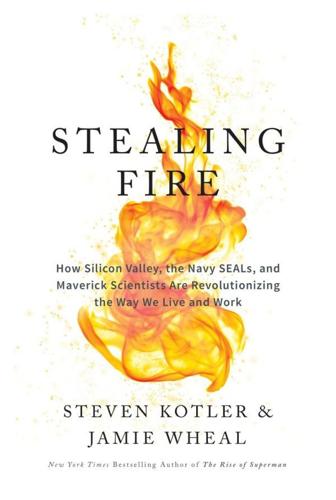
Stealing Fire: How Silicon Valley, the Navy SEALs, and Maverick Scientists Are Revolutionizing the Way We Live and Work
by
Steven Kotler
and
Jamie Wheal
Published 21 Feb 2017
One or two data points like a Moses or a Joseph Smith can’t ever make a trend, but what about a thousand data points? A hundred thousand? A picture is starting to emerge of the worlds inside us. And while it’s no less strange, it is arguably a good deal more accurate than the singular epiphanies that have come before. The Molecules of Desire In 2010, chemist Lee Cronin31 saw a demonstration of 3D printing while attending a conference in London. The technology caught his attention. At his own lab, he was always having to fabricate equipment. So, he wondered, could 3D printers solve this problem? Cronin returned to the University of Glasgow, where he was a professor, and organized a feasibility workshop.
…
See also Musk, Elon testing/experimenting, self, 120, 121, 123, 184, 207 testosterone, 98, 112 THC (drug), 133 therapeutic programs, 29–30. See also specific program Thiel, Peter, 163 Think and Grow Rich (Hill), 80 thinking lateral, 45, 117–18 See also cognition; precognition Thompson, Hunter S., 189, 209 3D experiences and Jones art, 145 and Siegel-Page technology, 152 3D printing, 132, 133, 222 TiHKAL (Shulgin), 122, 128 Tillotson, John, 73 time and altered states to altered traits, 91–93 and brain, 40 and flow, 4–5 importance of, 39–40 lack of, 39–41 See also Ecstasis Equation; timelessness Time magazine, 33, 82 The Time Paradox (Zimbardo), 40 timelessness benefits of, 42 “known issues”/downsides of, 203–5 and learning, 220 and misuse/dangers of ecstasis, 193 and open-sourcing ecstasis, 200 as STER category, 39–41, 45 and Tolle, 76 and training for nonordinary states, 203–5 See also STER tobacco, 29, 62.
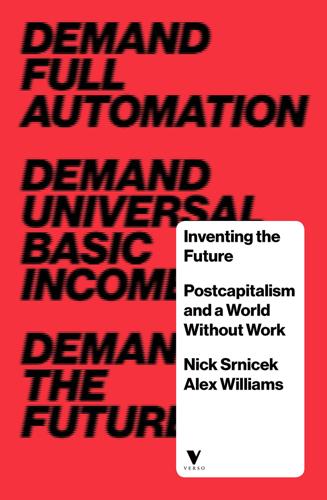
Inventing the Future: Postcapitalism and a World Without Work
by
Nick Srnicek
and
Alex Williams
Published 1 Oct 2015
The technological infrastructure of the twenty-first century is producing the resources by which a very different political and economic system could be achieved. Machines are accomplishing tasks that were unimaginable a decade ago. The internet and social media are giving a voice to billions who previously went unheard, bringing global participative democracy closer than ever to existence. Open-source designs, copyleft creativity, and 3D printing all portend a world where the scarcity of many products might be overcome. New forms of computer simulation could rejuvenate economic planning and give us the ability to direct economies rationally in unprecedented ways. The newest wave of automation is creating the possibility for huge swathes of boring and demeaning work to be permanently eliminated.
…
Siu, The Micro and Macro of Disappearing Routine Jobs: A Flows Approach, Working Paper, National Bureau of Economic Research, July 2014, at nber.org. 24.David Autor, Polanyi’s Paradox and the Shape of Employment Growth, Working Paper, National Bureau of Economic Research, September 2014, at nber.org; Maarten Goos, Alan Manning and Anna Salomons, ‘Job Polarization in Europe’, American Economic Review 99: 2 (2009). 25.Morris-Suzuki, ‘Robots and Capitalism’, p. 17. 26.The significance of 3D printing (or additive manufacturing) lies first in its generic capacity to create complexity with a simple technology – anything from houses to jet engines to living organs can be created in this way. Second, its ability to drastically reduce the costs of construction (in terms of both material and labour) portend a new era in the building of basic infrastructure and housing.
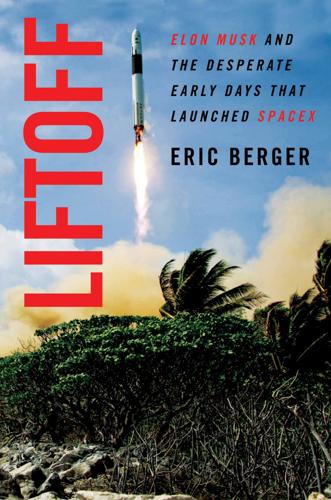
Liftoff: Elon Musk and the Desperate Early Days That Launched SpaceX
by
Eric Berger
Published 2 Mar 2021
Buzza left SpaceX in mid-2014 to join Thompson at Virgin. After four years he moved to the rocket company Relativity Space, where he serves as the company’s distinguished engineer. Relativity is the spiritual successor to SpaceX in terms of boldness. It seeks to 3D-print the entirety of its rockets to speed development and bring down costs. One day, it aspires to 3D-print a rocket on Mars, and launch from the red planet. Buzza, no doubt, will play an essential role in that, as he has done with this book. Many of the stories in these pages began with a tip from Buzza. Many of the details came from his notes and timelines.

To Save Everything, Click Here: The Folly of Technological Solutionism
by
Evgeny Morozov
Published 15 Nov 2013
,’” Moviefone, April 15, 2010, http://blog.moviefone.com/2010/04/15/cranky-chicagoan-the-internet-is-ruining-film-criticism. 17 “The Next Battle for Internet Freedom”: Rick Kelly, “The Next Battle for Internet Freedom Could Be over 3D Printing,” TechCrunch, August 26, 2012, http://techcrunch.com/2012/08/26/the-next-battle-for-internet-freedom-could-be-over-3d-printing. 18 “All too many U.S. lawmakers are barely”: Bill Snyder, “Facial Recognition Abuse Is Bad, Government Regulation Even Worse,” CIO, July 23, 2012, http://blogs.cio.com/privacy/17254/facial-recognition-abuse-bad-government-regulation-even-worse. 18 That facial-recognition technology developed: see Kelly A.
…
—NICOLAS MENDOZA, ALJAZEERA.COM “What made Blockbuster close? The Internet. What made At the Movies get canceled? The Internet. Who went tromping across my lawn and ruined my petunias? The Internet.” —ERIC SNIDER, CINEMATICAL BLOG These days, “the Internet” can mean just about anything. “The Next Battle for Internet Freedom Could Be over 3D Printing,” proclaimed the headline on TechCrunch, a popular technology blog, in August 2012. Given how fuzzy the very idea of “the Internet” is, derivative concepts like “Internet freedom” have become so all-encompassing and devoid of any actual meaning that they can easily cover the regulation of 3D printers, the thorny issues of net neutrality, and the rights of dissident bloggers in Azerbaijan.

The Technology Trap: Capital, Labor, and Power in the Age of Automation
by
Carl Benedikt Frey
Published 17 Jun 2019
Roboticists at Nanyang Technological University in Singapore imagine that a robotic swarm of 3-D printers could be used in construction. While this might seem like a distant prospect, engineers have actually managed to create a single-piece concrete structure, using two mobile robots operating concurrently. See X. Zhang et al., 2018, “Large-Scale 3D Printing by a Team of Mobile Robots,” Automation in Construction 95 (November): 98–106. 35. C. B. Frey and Osborne, 2017, “The Future of Employment,” 261. 36. M. Mandel and B. Swanson, 2017, “The Coming Productivity Boom—Transforming the Physical Economy with Information” (Washington, DC: Technology CEO Council), 14. 37.
…
Microsoft AI and Research Technical Report MSR-TR-2017-39, August 2017. Young, A. 1772. Political Essays Concerning the Present State of the British Empire. London: printed for W. Strahan and T. Cadell. Zhang, X., M. Li, J. H. Lim, Y. Weng, Y.W.D. Tay, H. Pham, and Q. C. Pham. 2018. “Large-Scale 3D Printing by a Team of Mobile Robots.” Automation in Construction 95 (November): 98–106. INDEX Acemoglu, Daron, 15, 19, 80, 86, 144, 225 age of discovery, 67–71, 76 agglomeration economies, 257 Agrawal, Ajay, 308 agriculture, 34, 54, 62; labor-replacing inventions in, 38; mechanization of, 189; three-field system of, 42 Aguiar, Mark, 338 airline reservation systems, 215 airship technology, 110 Alison, William, 115 Allen, Robert, 65, 75, 121, 132, 223 AlphaGo, 302–3 Amara, Roy, 323 Amara’s Law, 323–25 Amazon Go, 312 American capitalism, perceived threat to, 210 American dream, 251, 280 American Federation of Labor (AFL), 279 American system.
…
P., 208 Morrill Act, 364 mortality gap, 255 mortality rate, 65 mother of invention, 73 motion-picture machine operator, 178 multipurpose robots, 242, 261, 327 Mumford, Lewis, 46 Municipal Corporations Act of 1835, 86 Murnane, Richard, 237, 302 Murray, Charles, 252–53, 281 Musk, Elon, 313 Mutiny Act, 82 Napoléon Bonaparte, 9 Napoleonic War, 130 National Electric Light Association (NELA), 159 National Industrial Recovery Acts of 1933 and 1935, 200 National Labor Relations (“Wagner”) Act of 1935, 200 national minimum wage, introduction of, 211 National Recovery Administration, 178 nation states, rise of, 57 Nazi Labor front, 12 necessity, technological advances emerging from, 76 Neolithic communities, 34 Neolithic revolution, 33, 61 Neural Machine Translation (NMT), 304 neural networks, 303, 305, 314 Newcomen, Thomas, 53, 106, 317 New Deal, 200, 212, 272, 325 Newton, Isaac, 54 New World, discovery of, 19, 80 Nicholas I of Russia, Emperor, 85 Nobel Prize in Economics, 2, 4, 14, 20 Nordhaus, William, 2, 230, 297 Norman Conquest, 44 North, Douglass C., 79 North Africa, 77 nursery cities, 261 Nye, David, 155 Obama, Barack, 238, 277, 290, 322 occupational licensing, 358 occupational statistics, 219 OECD, 243, 321 Offenbach, Jacques, 53 Ogilvie, Sheilagh, 56–57 Old Poor Law, 344 OpenAI, 313 opportunity gap, societal costs of, 351 Osborne, Michael, 315 Otto, Nikolaus, 166 Ottoman Empire, 17, 66 overproduction, crisis of, 266 Owenism, 137 ownership, concept of, 34 Papin, Denis, 52, 86 Pareto improvement, 13 Paris Universal Exposition of 1867, 147 Park Avenue, 1 Paul, Lewis, 101 Pax Romana, 41 Pearl Harbor, attack on, 180 Pennsylvania Railroad, 208 Percy, Hiram, 165 personal computer (PC), 231 Peter the Great, Tsar, 58 Piketty, Thomas, 210, 217, 277, 361 “pink-collar” workforce, 241 plant downsizings, 255 Pliny the Elder, 36, 40 Polanyi’s paradox, 234, 304 polarization, politics of, 272–77; American dream, 280; Blue Wall, 284; civil rights legislation, 280; clientelism, 271; democracy and the middle class, 265–69; “disciplined self” identity, 279; economic inequality, 274, 277; Engels’ pause, 266, 287; feudal order, political participation in, 265; globalization, automation, and populism, 277–85; housing bubble, 282; identity politics, 278; inflation, 294; Labor Party, rise of, 268; labor unions, bargaining power of, 277; laissez-faire regime, 267; legitimacy of democracy, undermining of, 274; liberal democracy, components of, 267; lobbying, corporate spending on, 275; Luddite uprisings, 265; machinery riots, 265, 289; majority-rule voting system, 270; median voter theories, 270; middle class, rise of, 292; New Deal, 272; new Luddites, 286–92; political elites, 288; populist backlash, 293; Progressive Era, reform agenda of, 271; redistributive taxing and spending, 271; Rust Belt, 279, 283, 291; social class, Marx’s theory of, 265; socialism in America, 272; social media, 285; strikes, protection of car companies from, 276; technology types, distinguishing between, 287; unemployment, American social expenditure on, 274; United Auto Workers union, 276; universal white male suffrage, 270; vulnerability to populist revolutions, 264; welfare state, rise of, 272; welfare system, tax-financed, 267; working class, 278, 279 Polhem, Christopher, 149 political elites, 288 poor laws, 344 Pope, Albert A., 165 population curse, 64–67 populism, rise of, 277–85, 365 populist backlash, 293 populist renaissance, 21 populist revolutions, vulnerability to, 264 Port Clinton, Ohio, 250–51 Portuguese caravel ship, 51 power loom, arrival of, 15 prefabrication, 311 Price, Derek, 39 printing press, Gutenberg’s, 17 Procter and Gamble, 199 productivity, populations and, 64 Progressive Era, reform agenda of, 271 property rights: in American culture, 200; concept of, 62, 91; importance of, 20; in preindustrial societies, 33 Protestant Huguenots, 80 Protestant movement, 46 “proto-industrialization,” 68 prototypes: adoption of, 323; Amazon Go store, 312; developed, 261; imperfect, 298, 314; inventions turned into, 73 public clocks, 45 public infrastructure projects, 363 public schooling, 214 purchasing power, 191 Putnam, Robert, 250–51, 272, 276 railroads: arrival of, 108; declining importance of, 170; as enabling technology for revolutions, 85; network, expansion in Britain, 110; revenues (America), 208 Ramey, Valerie, 159, 332 redistributive taxing and spending, 271 Reform Acts of 1832 and 1867, 83 Reich, Robert, 235 relocation, 359–60 Renaissance, 51; as “age of instruments,” 59; beginnings of modern capitalism during, 70; great inventors of, 38; origin of, 51; productivity-enhancing technological improvements of, 54; technological advances of, 51 rent-seeking monarchs, 79 Restrepo, Pascual, 15, 144, 227, 242, 346 retraining, 353–54 Reuther, Walter, 191, 276, 356 Ricardo, David, 4, 116, 206, 345 right-to-work states, 257 robber barons, 208 Robinson, James, 19, 80 robots, 14; automobile assembly, 18; autonomous, 307; creation of new jobs for engineers, 15; flying, 312; human perception and, 318; jobs of machine operators taken over by, 14; middle-income jobs cut out by, 26; multipurpose, 242, 261, 327; of preindustrial times, 74; routine tasks performed by, 229 Rockefeller, John D., 208 Rodrik, Dani, 286–87 Roman alphabet, 47 Roman Empire: fall of, 41; most famous invention of, 38; slavery in, 74 Roosevelt, Franklin D., 157, 179, 211 Rousseau, Jean-Jacques, 62 royal trading monopolies, 80 Rural Electrification Administration, 157 Russell, Bertrand, 33, 78 Rust Belt, 279, 283, 291 Sanders, Bernie, 286 Savery, Thomas, 106, 317 Scheidel, Walter, 211 Schumpeter, Joseph, 73, 294 Schumpeterian growth, absence of, 72 Schumpeterian transformation, 49 scribes, 49, 50 Second Industrial Revolution, 22, 25, 148–73; agriculture, mechanization of, 189; American inequality during, 217; automotive industry, 202; child labor, as opportunity cost to education, 21; elimination of jobs created for machine operators during, 228; greatest virtue of, 155; mechanization following arrival of, 142; new tasks for labor spawned by, 202; skill-biased technological change, 213; skill demand raised by, 209; technological leadership of, 25; tractor use, expansion of, 196; urban-rural wage gap self-employment, 71 serfdom, 41 Shannon, Claude, 302 Sigismund I of Poland, King, 29 Silicon Valley, 257, 359 silk industry, beginnings of, 99 silk-throwing machine, 52 Simon, Herbert, 316, 336 Singer, Isaac, 149 Skill-biased technological change, 213 slavery, 39, 74 smartphone, spread of, 328 Smiles, Samuel, 110 Smith, Adam, 67, 69–70, 83, 228 Smithian growth, Schumpeterian vs., 58, 72 smokestack cities, 263 social class, Marx’s theory of, 265 socialism in America, 272 social media, 285 socioeconomic segregation, 26 Solow, Robert, 4, 180, 206, 325 speech recognition technology, 306 Spence, Michael, 292 spinning jenny, 102 spousal employment, 240 Sprague, Frank J., 152 steam engine: development of, 73; economic virtuosity of, 107; impact of on aggregate growth, 136; universal application of, 249 steel production, changed nature of, 13 Stephenson, George, 109 Stevenson, Betsey, 336 stocking-frame knitting machine, 10, 54, 76 strikes, protection of car companies from, 276 “stylized facts of growth,” 205 subjective well-being, 255 Summers, Lawrence, 261, 349 supercomputers, 290 supply of technology, obstacles to, 77 “symbolic analysts,” 235 task simplification, example of, 311 tax credits, 355–58 taxing and spending, redistributive, 271 tax revenue, 133 technological gap (1500–1700), 51 technology companies, location decisions of, 260 telephone operator, vanishing of, 201 telescope, 59 Tennessee Valley Authority (TVA) Act of 1933, 363 Tesla, Nikola, 152 textile industry, 38, 55, 95 Thirty Years’ War, 58 Thompson, E. P., 90 3D printing, 22 three-field system, 42 Tiberius, Roman Emperor, 40 Tilly, Charles, 58 Tinbergen, Jan, 14, 213, 225 Tocqueville, Alexis de, 147, 207, 270 Toffler, Alvin, 257 Torricelli, Evangelista, 52, 76 tractor use, expansion of, 196 trade, expansion of, 68 trade unions, emergence of, 190 treaty ports, 88 Trevithick, Richard, 109 Triangle Shirtwaist Factory fire (1911), 194 truck driver, 340–41 trucker culture, ending of the heyday of, 171 Trump, Donald, 278, 280, 286, 331 Tugwell, Rexford G., 179 Tull, Jethro, 54 Turing test, 317 Turnpike Trusts, 108 Twain, Mark, 21, 165, 208 typewriter, 161–62 typographers, computer’s effect on jobs and wages of, 247 unemployment, 246, 254; AI-driven, 356; American social expenditure on, 274; average duration of, 177; blame for, 141; fear of, 113; mass, fears of, 366; technological, 12, 117 union security agreements, 257 United Auto Workers (UAW) union, 276 United Nations, 305 universal basic income (UBI), 355 universal white male suffrage, 270 unskilled work, 350 urban-rural wage gap, 209 Ure, Andrew, 97, 104, 119 U.S.

Beyond: Our Future in Space
by
Chris Impey
Published 12 Apr 2015
Science, vol. 330, p. 434, and a subsequent set of research articles in the special issue of Science. 4. “Mining and Manufacturing on the Moon,” from the Aerospace Scholars program, online at http://web.archive.org/web/20061206083416/http://aerospacescholars.jsc.nasa.gov/HAS/cirr/em/6/6.cfm; and “Building a Lunar Base with 3D Printing,” a research program at the European Space Agency, online at http://www.esa.int/Our_Activities/Technology/Building_a_lunar_base_with_3D_printing. 5. “The Peaks of Eternal Light on the Lunar South Pole: How They Were Found and What They Look Like” by M. Kruijff 2000. 4th International Conference on Exploration and Utilisation of the Moon (ICEUM4), ESA/ESTEC, SP-462.
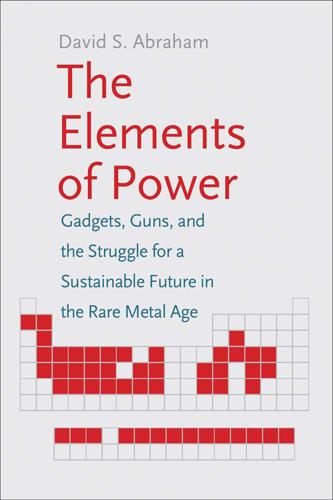
The Elements of Power: Gadgets, Guns, and the Struggle for a Sustainable Future in the Rare Metal Age
by
David S. Abraham
Published 27 Oct 2015
People will soon get tired of staring at a plywood box,” Darryl Zanuck, founder of Twentieth Century Pictures (1946).18 • “There is no reason anyone would want a computer in their home,” Ken Olsen, founder of Digital Equipment Corporation (1977).19 • “I predict the Internet … will soon go spectacularly supernova and in 1996 catastrophically collapse,” Robert Metcalfe, founder of 3Com and the Ethernet (1995).20 Since we don’t know which invention will take off, we can’t estimate which rare metal will either. Thirty years ago, dysprosium had little use. Now, in part because of its use in magnets, it is essential for our new high-tech lives. Gallium, because of its low melting point, could find itself in high demand in 3D printing, a type of home-based manufacturing. Or gadolinium, a sister element to dysprosium, has long shown promise in a magnet to produce energy-efficient cooling. This future technology could revolutionize the refrigerator market, putting that appliance within reach of the billions who do not now have one.
…
See Rare metals Teck Resources, 184 Teddy Ruxpin (talking teddy bear), 119 Telemarketing, indium sales via, 251n7 Tellurium, xiii, 78–79, 80, 148–50, 167, 190, 207, 209, 246n40 Tenent, Robert, 217 Teng Biao, 200 Teran, Alex, 147 Terbium, 2, 4, 151, 167, 174, 206, 229 Territorial disputes, China-Japan, 22–24 Tesla, 145–47 Texas Instruments, 117, 118 Thatcher, Margaret, 30 Thermal-imaging systems, 163–65 Thin film technologies, 148–49 Thorium, 3, 57, 176 Thor Lake mine (Avalon Rare Metal), 54–56 3D printing, 221 Tin, 48, 105–7, 108 Tiomin Resources, 46–48, 54 Titanium: in aerospace industry, 162, 263n30 in airplanes, 96, 128, 156–60, 168, 274n6 commoditization of, 221 market for, 44 in mobile phones, 121 nonmilitary use of, 121, 124, 146, 162–63, 221 shape memory, 221 sources of, 46, 93, 113 U.S. research on, 206 in weaponry, 163, 168, 169 “Titanium Goose” (A-12 spy plane, “Oxcart”), 155–57, 158–59 Titanium Metal Corporation, 156 Toothbrushes, 115–17, 258n3 Toothpaste, ancient use of, 257–58n1 Toronto Stock Exchange, 50 Toshiba, 112–13, 256n42 Touch screens, 261n19 Toyota Tsusho, 108 Toys, electronic, 119–20 Trade secrets, xi Trading networks, 89–114 China, rare metal exchanges in, 96–98 China, regulatory environment in, 98–101 conflict funding, 108–12 evading export controls, 104 export quotas/ban set by China, x, 24, 240n34 Indonesia, illegal trade in, 105–8 Lehrman family, 91–96 limited suppliers, problem of, 112–13 London Metal Exchange, 101–2 overview, 89–91 precariousness of, x price bubbles, 113–14 secrecy in, 16 smuggling, 102–5 Truman, Harry S., 30 Tungsten: Allied actions on, in WWII, 239n28 China, production in, 32, 205, 240n33, 289n16 conflict tungsten, 108, 109 Congo production, 108 export quota, 240n34 in glass, 217 importance, xi, 11 in lighting, 151 patents, 211 production locations, 48 shortage fears, 207, 219 sources of, 32, 48, 93, 108, 205, 240n24, 240n33, 289n16 wartime use of, 29, 30, 239n28 in weaponry, 29, 161–62, 167 Tunna, Nigel, 96 Twitter, 126 Uganda, cassiterites from, 111 Umicore, 191 UN Intergovernmental Panel on Climate Change, 135 United States: aluminum can recycling, 285n34 Bureau of Mines closure, 222 China, trade case against, 36 on China’s materials exports, 203 cobalt supplies, 19 commodity stockpiles, 291n36 conflict materials, actions on, 110–11 Japan, embargo against, 30 rare metal security strategy, 206, 208–12 reshoring, 212 tungsten, wartime actions on, 162, 239n28.

Bold: How to Go Big, Create Wealth and Impact the World
by
Peter H. Diamandis
and
Steven Kotler
Published 3 Feb 2015
By adding in graphics and replacing Unix with Windows—the operating system that was then running nearly 80 percent of the computers in the world—Andreessen mainstreamed a technology developed for scientists, engineers, and the military. As a result, a worldwide grand total of twenty-six websites in early 1993 mushroomed into more than 10,000 sites by August 1995, then exploded into several million by the end of 1998.6 Industries Being Disrupted by 3-D Printing Sources: Deloitte analysis; CSC, 3D printing and the future of manufacturing, 2012 Graphic: Deloitte University Press | DUPress.com This is the power of an elegant and robust user interface. It’s also a sign that it’s time for an exponential entrepreneur to get in the game. Certainly, deciding when a technology is ripe for entrepreneurial development is not too different from a venture capitalist deciding a technology is ripe for investment.
…
See http://www.kurzweilai.net/memorandum-for-members-and-affiliates-of-the-intergalactic-computer-network. 5 Chris Anderson, “The Man Who Makes the Future: Wired Icon Marc Andreessen,” Wired, April 24, 2012, http://www.wired.com/2012/04/ff_andreessen/all/. 6 Ian Peter, “History of the World Wide Web,” Net History, http://www.nethistory.info/History%20of%20the%20Internet/web.html. 7 McKinsey Global Institute, “Manufacturing the future: The next era of global growth and innovation,” McKinsey & Company, November 2012, http://www.mckinsey.com/insights/manufacturing/the_future_of_manufacturing. 8 Institute of Human Origins, “Earliest Stone Tool Evidence Revealed,” Becoming Human, August 11, 2010, http://www.becominghuman.org/node/news/earliest-stone-tool-evidence-revealed. 9 Pagan Kennedy, “Who Made That 3-D Printer,” New York Times Magazine, November 22, 2013, http://www.nytimes.com/2013/11/24/magazine/who-made-that-3-d-printer.html. 10 In full disclosure, Peter Diamandis is a member of the 3D Systems Board of Directors. 11 All Avi Reichenthal quotes come from a series of AIs conducted between 2012 and 2014. 12 Based on approximate average share price for 2014. 13 AI, June 2014. 14 AI with Jay Rogers, 2014. 15 David Szondy, “SpaceX completes qualification test of 3D-printed SuperDraco thruster,” Gizmag, May 28, 2014, http://www.gizmag.com/superdraco-test/32292/. 16 James Hagerty and Kate Linebaugh, “Next 3-D Frontier: Printed Plane Parts,” Wall Street Journal, July 14, 2012, http://online.wsj.com/news/articles/SB10001424052702303933404577505080296858896. 17 Tim Catts, “GE Turns to 3D Printers for Plane Parts,” Bloomberg Businessweek, November 27, 2013, http://www.businessweek.com/articles/2013-11-27/general-electric-turns-to-3d-printers-for-plane-parts. 18 All quotes about Made In Space come from an AI with Michael Chen conducted 2013. 19 Brian Dodson, “Launch your own satellite for US $8000,” Gizmag, April 22, 2012, http://www.gizmag.com/tubesat-personal-satellite/22211/. 20 Statista, “Statistics and facts on the Toy Industry,” Statista.com, 2012, http://www.statista.com/topics/1108/toy-industry/. 21 Unless otherwise noted, all Alice Taylor quotes and facts come from an AI conducted in 2013. 22 Cory Doctorow, Makers (New York: Tor Books, 2009).
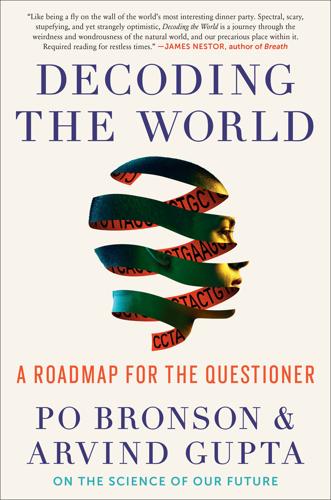
Decoding the World: A Roadmap for the Questioner
by
Po Bronson
Published 14 Jul 2020
It takes tons of repetition and adjustment. In a computer, you can design an antibody in days. But you have no idea if it will have off-target effects, so that testing takes months and months.” Melanie said she could do it in 32 days. Melanie’s approach was truly unique. Her company, Prellis, was the world leader in 3D-printing human organ tissue, using lasers and stem cells. Her goal for Prellis was right out of a science-fiction movie: She wants to print a new liver for patients when their liver is shot. She was getting close. She’d been making mini-livers. But this was wartime. “I can make dozens of mini-lymph nodes, little immune systems.
…
Worms speak pheromone. One entrepreneur got up onstage and said, “The future isn’t organic. It’s synthetic.” Sometimes, you didn’t know if these companies weren’t pranks or performance art. To stop rhinoceros poaching in Africa, IndieBio had a company that was going to flood the market with synthetic, 3D-printed rhino horns. Made with actual lab-grown rhino keratin. Exact in every way, just that these rhino horns had never been attached to a rhino. Maybe they should have tried mastodon. Before Arvind started IndieBio, he went to present his idea to the most successful venture capitalist of all time, Mike Moritz at Sequoia Capital.
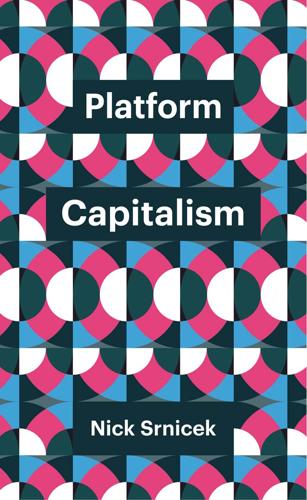
Platform Capitalism
by
Nick Srnicek
Published 22 Dec 2016
Over the past 40 years the jet engine industry has been characterised by very few new companies, and no companies leaving the industry.54 Instead the three major firms have competed intensely among themselves by introducing incremental technological improvements, in an effort to gain an edge. This technological competition continues today, when the jet engine industry pioneers the use of additive manufacturing. (For instance, GE’s most popular jet engine has a number of parts that are now 3D printed rather than welded together out of different components.55) But margins on the engines themselves remain small, and competition tight. By contrast, the maintenance of these engines involves much higher profit margins – seven times higher, according to estimates.56 The challenge with maintenance is that it is quite easy for outside competitors to come in to the market and take the profits away.
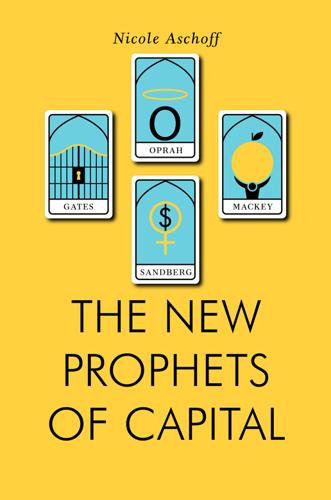
The New Prophets of Capital
by
Nicole Aschoff
Published 10 Mar 2015
“It’s about giving back.”35 The Freelancers Union is part of an emerging social movement called “new mutualism” that’s grounded in the concept of a sharing economy. Jeremy Rifkin sees the sharing economy as the next big thing. He argues that hundreds of millions of people are already on board, sharing “information, entertainment, green energy, and 3D printed products at near-zero marginal cost.” People are also sharing more personal things like clothes, homes, and household items.36 “Flexible,” “diversified” freelancers are the archetypal sharers: They mentor. They give without asking what they get. They see an opportunity and bring people together to seize it.

Platform Revolution: How Networked Markets Are Transforming the Economy--And How to Make Them Work for You
by
Sangeet Paul Choudary
,
Marshall W. van Alstyne
and
Geoffrey G. Parker
Published 27 Mar 2016
Platforms like Dribbble, Threadless, and 99designs have built large ecosystems of designers, largely owing to the democratization of the tools of design and printing over the last several years—yet another case of barriers to entry being lowered, in part through the help of platform tools. The proliferation of new production technologies further enables the emergence of new groups of producers. Just as the smartphone camera expanded the volume of content on platforms like Instagram and Vine, the spread of 3D printing is likely to lead to a new range of platforms for industry design. However, technology often needs the support of innovative business design to produce massive reconfiguration of value creation. Software for word processing, typography, and graphic design has existed for decades, but not until Amazon’s Kindle Publishing platform offered quick and easy access to a large readership did a whole new ecosystem of authors emerge.
…
Universal City Studios, Inc., 259 SoundCloud, 71 South by Southwest (SXSW), 2, 97, 98 South Korea, 66, 161 spam, 133, 167 sponsorship model, 137, 139–40, 141 sporting goods, 74–76 Spotify, 48 spreadable value units, 102, 299 Square, 275 SRI International, 147 Stack Overflow, 99, 166, 173 stakeholders, 164, 166, 178, 274 Stallman, Richard, 254–55 Stanford University, 79, 266 startup companies, 86, 91–92, 187–95, 199, 201–2, 209–10, 221, 240, 247, 257–58, 261, 263, 276 status updates, 39, 41, 251 Stigler, George, 234–35 Stock, Ethan, 112–13 stock market, ix, 32, 60, 64, 80, 84, 91, 126, 145, 171, 178, 204–5, 211, 221 “Strategies for Two-Sided Markets” (Eisenmann, Parker and Van Alstyne), ix subscriptions, 120, 122, 127, 197, 225, 244 subsidies, 107, 123, 124, 188 subsystem interfaces, 56–57 Sun Microsystems, 240 supercomputers, 171 supplier bargaining power, 207, 208, 212 supply chains, 9, 10, 11–12, 65–67, 68, 74, 76, 208, 209–10, 220 supply-side economies of scale, 32, 34, 224, 225, 228, 299, 300 Supreme Court, U.S., 259 SurveyMonkey, 101–2, 103 sustainable advantage, viii, 209–10, 224–27 Swiss Post, 94–95 switching, 213, 224, 225–26, 228, 297, 299, 300 SXSW Festival Web Award, 97 system development kits (SDKs), 152, 153 Taobao, 2–3, 215 Target, 61, 123–24, 146 task allocation, 56 TaskRabbit, 116, 233–34, 249 taxation, 92–93, 165, 230, 248–49, 260 taxi industry, 2, 12, 16–18, 49, 60–62, 231, 236, 250, 253, 258–59, 287 technology: access to, 141, 209–10, 213 creators of, 32, 33 digital, 60, 283–86 high-, 80 information, 3, 11, 36, 38, 77, 199 innovation in, 52–54, 199–200, 203, 216–17, 228, 241, 256, 258–59, 260, 283–89, 296 standards of, 138–39, 141 startups in, ix valuation of, ix, x telecommunications industry, 77, 89, 262 telephone networks, 20, 21, 29, 91 television, 9, 10, 85, 138, 144–45, 178, 204, 259, 264 Tencent, 198, 217 Tesla, 273 text messaging, 56, 91, 132, 145 Thiel, Peter, 79–82 Thomson Reuters, vii, x, 55, 200 “Thoughts on Flash” (Jobs), 214 Threadless, 25, 32, 66 “3 A’s test” (actionable, accessible, auditable metrics), 202 3D printing, 66, 284 ticket sales, 112–13 time between interactions, 193 Time Warner, 178 Tinder, 97–98 Tirole, Jean, 110, 235, 237, 242 TopCoder, 267 Toshiba, 75, 139 Toys”R”Us, 22, 207 traffic congestion, 62, 233 transaction fees, 38, 115–18, 122, 125, 127, 142 transportation industry, 60–62, 73, 77, 95, 209, 233, 237–38, 278 travel industry, 13, 37, 71, 72, 111, 137, 142, 232, 245, 287 Travelocity, 137 TripAdvisor, 13, 37, 72 trolls, 166–67 trust (participant curation), 67–68, 189–95, 202, 296, 299 turbines, 247, 273 Twitter, 3, 13, 30, 37, 40, 46, 55, 58, 66, 85, 97, 98, 103, 120, 159, 173, 197 two-sided network effects, 21, 23–24, 29, 34, 119, 219, 242, 296 Uber, vii, viii, 2, 3, 12, 16–18, 17, 20–26, 30–32, 36–38, 41, 49–51, 60–69, 115, 116, 126–27, 135, 151–52, 175, 190, 211–13, 227, 230–32, 236, 249–54, 259, 262, 264, 269, 278, 279, 295, 297 UberPool, 49 Uber Safe Rides, 126–27 Udemy, 77, 96, 265 Under Armour, 75–76 UnitedHealthcare, 33 United States, 178, 206, 225, 229–60, 283, 289 Universal City Services Card, 282–83 universal serial bus (USB), 58, 178–81 University of Pennsylvania, 266, 267 University of Southern California, 97–98 Upwork, 3, 8, 21, 24, 32, 36, 37, 64, 65, 73, 116, 117, 164, 193–94, 196, 200, 201, 230, 233–34, 248–49, 299 users: acquisition of, 66, 81–85, 97–98, 112–13, 184–95, 201–2, 299 content generated by, 87, 167–70, 218–19 curation by, 151–52, 155 feedback of, 151–52, 155 growth rate of, 191, 192, 202 identities of, 166–67 incentives of, 66, 82, 87, 101, 102, 166, 173–74, 182, 227 loyalty of, 135, 149–52, 156, 166–67, 190–91, 192, 193–94, 197–98, 219–21, 297 manipulation of, 161, 168–69 network access for, 86, 108–9, 112, 117–18, 126, 127, 146–56, 166–67, 213–14 profiles of, 48, 119, 127, 145–46, 163, 190, 195–96, 247 types of, 122–25 utilities, 272–74 value: of apps, 147, 216–17 creation of, 4, 5, 6–18, 23, 34, 36, 45–51, 58–59, 64–74, 78, 88, 90, 98, 134, 142, 147, 149, 157, 165–67, 181, 185–88, 193–94, 197, 203, 212, 216–28, 262–65, 275, 285, 289, 295–98 de-linking assets from, 68–71 lifetime (LTV), 197, 203 units of, 37, 38–39, 40, 41, 42–44, 51, 59, 90, 92, 93, 100, 101, 102–3, 105, 295, 299 Van Alstyne, Marshall W., ix, 23–24, 69, 106–7, 110, 130, 180, 241, 242 vanity metrics, 201–2 VCRs, 138–39 venture capital, ix, 16–18, 23, 106 vertical integration, 33, 74, 200, 208, 221 video-sharing sites, 37, 39–40, 49, 63, 67, 77, 84, 87–88, 92, 104, 111, 134, 147, 223–24, 299 video streaming, 63, 139, 211, 222 videotape recording, 138–39, 259 Viki, 9, 66 Vimeo, 49, 87, 88, 223–24 virality, 11, 23, 84–85, 92, 99–104, 105, 299 virtuous cycle, 17, 21, 23, 46, 65 Visa, 30, 137, 139–40, 226 visual effects, 252–53 Vodafone, 277–78 Voices, 169–70 Wales, Jimmy, 129–30 Wall Street Journal, 62 Walmart, 4, 32, 55–56, 56, 86, 145, 249 washing machines, 183–84 Washio, 233–34 Waterfind, 70–71 water rights, 70–71 Wattpad, 4–5 wealth distribution, 33, 61, 158, 160, 179, 180–81, 279–80, 300 wearable devices, 222, 245, 269–70, 277 web sites, 24–25, 95–96, 110, 112–13, 167, 244 Webvan, 22, 23 WeChat, 198 Wells Fargo Bank, 83 Wernerfelt, Birger, 208 Westinghouse, 284 Westlaw, 204 WhatsApp, 32, 46, 204 Whirlpool, 110, 204, 208, 225 Wii, 94, 211 Wikipedia, 3, 10–11, 66, 67, 129–30, 133, 135, 149–51 “Wikipedia: five pillars,” 150–51 Wintel standard, 140, 152–53 Wolfe, Jerry, 76 Wood, Graeme, 268 Woodard, C.

Human Frontiers: The Future of Big Ideas in an Age of Small Thinking
by
Michael Bhaskar
Published 2 Nov 2021
For the first time in history, as the developing world closes the gap with advanced economies, all major civilisations are operating at the frontier of knowledge. Equally, we could be at the cusp of a revolution in tools and technology as profound as that of the late nineteenth and early twentieth centuries. AI, quantum computing, 3D printing, synthetic biology, neuralink interfaces connecting computers and human brains: these are not just buzzwords, but potentially transformatory. Those forces are then weighed in the balance, before I put forward suggestions about what would help push back the frontier and meet the challenge of our times.
…
As with all these tools, it is at once exhilarating and disturbing. Nor is the ‘real’ world ignored. After all, it's in the material world of jet engines, medicines and societal resources that we have stasis. But matter itself could become a malleable platform, at first with advances in areas like additive manufacturing (3D printing) and robotics but then at a new level altogether. Nanotechnology – or atomically precise fabrication – does for the processing of matter what digital technology did for information. At an extreme, any item could be assembled quickly from the most basic building blocks.44 Fabrication instructions are ‘all’ you need.
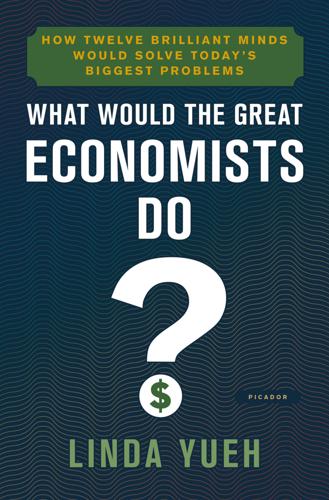
What Would the Great Economists Do?: How Twelve Brilliant Minds Would Solve Today's Biggest Problems
by
Linda Yueh
Published 4 Jun 2018
Eastern Tennessee is where the atomic bomb was developed. Federal funding now fosters advanced industries, so those with a high proportion of R&D spending, and STEM (science, technology, engineering and mathematics) workers. For instance, the funding for Oak Ridge National Laboratory supports the development of 3D printing (also known as ‘additive manufacturing’). This automated process requires only human programming for just one robotic arm to produce the husk of a car, secreting layer upon layer of plastic. The associated manufacturers who supply the parts and distribute the products also benefit. The company working with Oak Ridge to create the plastics that make the car body strong enough to withstand road stress is a reminder that manufacturing is still based in factories, as is clear from the smell of melting plastic and the loud whirling of machines that accompany this high-tech process.
…
joint-stock companies Jones, Homer Journal of Economic Perspectives Journal of Political Economy JPMorgan Juncker Plan Kahn, Richard Kant, Immanuel Keynes, John Maynard and the backlash against globalization and the Bloomsbury Group and Bretton Woods System and budget deficits counter-cyclical policies and crowding out on depression/recession The Economic Consequences of the Peace fiscal activism and Friedman The General Theory of Employment, Interest and Money and government spending on government’s role in economy and Hayek and investors Keynesian revolution legacy life and times of and Marshall and Niemeyer and paradox of thrift at Paris Peace Conference Prices and Production and public investment and Robbins Robinson and Keynes/Keynesian economics and Schumpeter and ‘socializing investment’ A Tract on Monetary Reform and the Treasury A Treatise on Money wealth Keynes, John Neville Khrushchev, Nikita Knight, Frank Kodak Korea North South Krugman, Paul Krupp Kuznets, Simon labour force growth labour productivity and work incentive laissez-faire landowners Lassalle, Ferdinand Latin America currency crisis (1981–82) see also specific countries League of Nations Lehman Brothers Lenin, Vladimir Leontief, Wassily Lewis, Arthur Lewis, Barbara (‘Bobby’) Life Extension Institute Linda for Congress BBC documentary London London School of Economics and Political Science London Stock Exchange Long Depression (1880s) Lopokova, Lydia Louis XIV LSE see London School of Economics and Political Science Lucas, Jr, Robert Ma, Jack (Ma Yun) Maastricht Treaty macroprudential policy see also central banks; financial stability Malaysia Malthus, Thomas Manchester Mandela, Nelson manufacturing additive (3D printing) automation in China and deindustrialization GDP contribution in UK German high-tech and industrialization see also industrialization Japan ‘manu-services’ ‘March of the Makers’ mass-manufactured goods and national statistics reshoring rolling back deindustrialization process and Smith trade patterns changed by advanced manufacturing US Mao Zedong Maoism ‘March of the Makers’ marginal utility analysis marginalism market forces/economy ‘Big Bang’ (1986) competition see competition and economic equilibrium see economic equilibrium emerging economies see emerging economies Hayek and the supremacy of market forces ‘invisible hand’ and laissez-faire and Marx 4 self-righting markets supply and demand see supply and demand Marshall, Alfred on approach to economics and the backlash against globalization and the Cambridge School and decentralization Economics of Industry and education’s role in reducing inequality and inequality and Keynes and laissez-faire legacy life and times of marginal utility analysis and Marx and poverty Principles of Economics and utility theory Marshall, Mary, née Paley Marx, Heinrich Marx, Henriette, née Pressburg Marx, Jenny, née von Westphalen Marx, Karl and agriculture and the backlash against globalization Capital and capitalism and China and class Communist Manifesto (with Engels) communist theories A Contribution to the Critique of Political Economy doctoral thesis The Eighteenth Brumaire of Louis Bonaparte and Engels journalism life and times of and Marshall and rate of profit and Ricardo and Russia on service sector workers surplus value theory and the Young Hegelians Marx, Laura Marx, Louise Marxism and the Austrian School and unemployment see also Marx, Karl Mason, Edward mathematical economics Mauritius May, Theresa Meade, James median income Menger, Carl mercantilist policies see also Corn Laws Merkel, Angela Mexico middle class China and economic growth and economic inequality and European revolutionaries income and industrialization and Keynes and Heinrich Marx as proportion of world population and Schumpeter social resentment US Mill, James Mill, John Stuart On Liberty Principles of Political Economy Minsky, Hyman Mises, Ludwig von Mitchell, Wesley mobile phones/smartphones monetarism see also Friedman, Milton monetary policy and Friedman tools see also quantitative easing (QE) see also central banks monopolies and Marx natural and Robinson and Schumpeter and Smith and Sraffa monopsony Mont Pelerin Society Morgenthau, Henry mortgage-backed securities (MBS) mortgage lending and the 2008 financial crisis sub-prime Myanmar Myrdal, Gunnar Napoleon I Napoleon III Napoleonic Wars national/official statistics China UK US national debt Austria and central banks China and creditors and debt forgiveness and deficits euro area and foreign exchange reserves and investment Japan major economies owed to foreigners and quantitative easing and Ricardian equivalent UK US Vietnam National Health Service (UK) National Infrastructure Commission (UK) Navigation Acts neoclassical economics convergence hypothesis ‘neoclassical synthesis’ New Neoclassical Synthesis see also Fisher, Irving; Marshall, Alfred; Solow, Robert Neoclassical Synthesis see also Samuelson, Paul New Classicists see also Lucas, Jr, Robert New Deal New Institutional Economics see also North, Douglass New Keynesians see also Stiglitz, Joseph New Neoclassical Synthesis New Rhineland News (Cologne) New Rhineland News: Review of Political Economy (London) new trade theory New York Herald New York Times New York Tribune Newcomb, Simon Newsweek Niemeyer, Sir Otto Nissan Nixon, Richard Nokia non-tariff barriers (NTBs) Nordhaus, William North, Douglass and the backlash against globalization and development challenges doctoral thesis The Economic Growth of the United States from 1790 to 1860 and institutions Institutions, Institutional Change and Economic Performance life and times of Nobel Prize path dependence theory and Smith North, Elizabeth, née Case North Korea Northern Rock Oak Ridge National Laboratory Obama, Barack Occupy movement oil industry Organisation for Economic Co-operation and Development (OECD) Osborne, George Overseas Development Institute (ODI) Oxford University Balliol College Paine, Thomas Paley, Mary Paris Peace Conference path dependence theory see also North, Douglass Peel Banking Act Philips, Lion Philips (electronics company) physical capital Physiocrats Pigou, Arthur Cecil Piketty, Thomas pin-making Pinochet, Augusto Ponzi finance populism Portugal poverty aid and development see economic development challenges eradication/reduction frictional and Marshall and Marx and median income people lifted from in South Africa productivity and agriculture ‘benign neglect’ of Britain’s productivity puzzle and computers and economic growth and education and factor reallocation and Germany and Hayek incentives and industry/industrial revolution and innovation and investment Japan and jobs labour see labour productivity and land low and Marshall moving into higher sectors of and pricing raising and Schumpeter and secular stagnation slow economic and productivity growth and the future and specialization and technology total factor productivity and trade and wages Prohibition protectionism agricultural see also Corn Laws Navigation Acts public-private partnerships public investment and Keynes public spending general government spending see government spending public investment see public investment squeeze see also austerity Puerto Rico quantitative easing (QE) Quantity Theory of Money see also Friedman, Milton; monetarism; Equation of Exchange Rand, Ayn RAND Corporation rate of profit rational expectations theory Reagan, Ronald recession/depression debt-deflation theory of depression Great Depression see Great Depression (1930s) Great Recession (2009) Greece ‘hangover theory’ of Hayek on and Keynes Long Depression (1880s) second recession (1937–38: recession within the Depression) in UK 1970s redistribution Regional Comprehensive Economic Partnership (RCEP) Reich, Robert reindustrialization Reisinger, Anna Josefina Remington Rand rent-seeking research and development (R&D) investment China Research in Motion (RIM) retail trade Rhineland News Ricardian equivalence Ricardo, David and the backlash against globalization and class comparative advantage theory and the Corn Laws Essay on the Influence of a Low Price of Corn on the Profits of Stock The High Price of Bullion international trade theory as a landlord life and times of as a loan contractor and Marx On the Principles of Political Economy and Taxation and Schumpeter and Smith wealth Ricardo, Priscilla Robbins, Lionel Robinson, Austin Robinson, James Robinson, Joan The Accumulation of Capital and the AEA and the backlash against globalization and communism Economic Philosophy The Economics of Imperfect Competition Essays in the Theory of Employment and imperfect competition Introduction to the Theory of Employment and Keynes and Keynesian economics life and times of and monopolies monopsony theory and Schumpeter and unemployment wage determination theory robotics Rodrik, Dani Rolls-Royce Roosevelt, Franklin D New Deal Russia 1905 Revolution and Lenin and Marx Samsung Samuelson, Paul and the backlash against globalization Economics factor-price equalization theorem Nobel Prize savings for capital investment and inflation and Keynes and the ‘paradox of thrift’ Say, Jean-Baptiste Schmoller, Gustav von Schumpeter, Anna, née Reisinger Schumpeter, Gladys, née Seaver Schumpeter, Joseph and the backlash against globalization as banker/investor Business Cycles and capitalism Capitalism, Socialism and Democracy ‘creative destruction’, innovation and ‘The Crisis of the Tax State’ and the Econometric Society economics and entrepreneurs on Fisher and Hayek History of Economic Analysis and Keynes legacy life and times of The Nature and Content of Theoretical Economics and perfect competition and Ricardo and Robinson Theory of Economic Development wealth Schumpeter, Romaine Elizabeth, née Boody Schumpeter Group of Seven Wise Men Schwartz, Anna Jacobson Schwarzenegger, Arnold Scottish Enlightenment Seaver, Gladys Ricarde see Schumpeter, Gladys secular stagnation self-interest services sector China and deindustrialization financial services see financial services global trade in services human capital investment invisibility of liberalization ‘manu-services’ and Marx move away from and national statistics output measurement productivity and innovation and Smith Trade in Services Agreement (TiSA) UK US shadow banking Shiller, Robert silver Singapore Skidelsky, Robert skill-biased technical change skills shortage small and medium-sized enterprises (SMEs) smartphones/mobile phones Smith, Adam and the backlash against globalization as Commissioner of Customs for Scotland economic freedom on ‘invisible hand’ of market forces and laissez-faire economics legacy life and times of and manufacturing and Marx and North and Physiocracy on rate of profit and rebalancing the economy and Ricardo and the services sector and state intervention The Theory of Moral Sentiments The Wealth of Nations social capital social networks social services socialism communist see communism vs welfare state capitalism Solow, Barbara (‘Bobby’), née Lewis Solow, Robert and the backlash against globalization with Council of Economic Advisers doctoral thesis economic growth model ‘How Economic Ideas Turn to Mush’ John Bates Clark Medal and Keynesian economics life and times of Nobel Prize Presidential Medal of Freedom and technological progress Sony Sorrell, Sir Martin South Africa South Korea Soviet Union and China Cold War collapse of see also Russia Spain specialization spontaneous order Sraffa, Piero stagflation Stanley Black & Decker state government regulation intervention in the economy laissez-faire STEM (science, technology, engineering and mathematics) workers sterling Stigler, George Stiglitz, Joseph stocks and Fisher and interest rates US railroad Strachey, Lytton Strahan, William Strong, Benjamin Sturzenegger, Federico Summers, Lawrence supply and demand see also market forces/economy: ‘invisible hand’ Sustainable Development Goals (SDGs) Taiwan Tanzania tariffs taxation and austerity devolved powers of flat for government deficit spending before Great Depression and inequality and investment Japan and Marshall negative income tax to pay off national debt Pigouvian tax progressive and Reagan redistribution through Schumpeter on Smith on Taylor, John Taylor, Overton H.
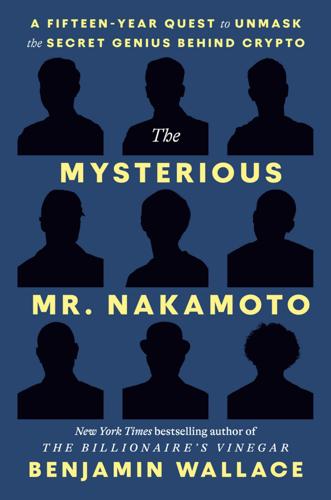
The Mysterious Mr. Nakamoto: A Fifteen-Year Quest to Unmask the Secret Genius Behind Crypto
by
Benjamin Wallace
Published 18 Mar 2025
It was also a bit unusual to see a Windows person running an open-source project; the open-source movement had arisen largely in reaction to closed systems like Windows. The Bitcoin programmers disagreed on other points. Gavin thought Nakamoto was in the top 10 percent of programmers, in terms of ability. But Amir Taaki, an early Bitcoin dev and anarchist hacker—he lived in a squat in London and would later become an activist for 3D-printed guns and fight alongside the Kurds on the front lines of Syria’s civil war—told me he didn’t think Nakamoto even had a computer science background. While Amir found the concept of Bitcoin solid, he thought the code was poorly written, with everything globbed together into two unwieldy files instead of broken into modular components, the way a pro would organize it.
…
GO TO NOTE REFERENCE IN TEXT lived in a squat in London: Joshi Herrmann, “Silicon Roundabout’s Not for Him: Meet Super-hacker, Master Coder and Bitcoin Boy Amir Taaki in His Hackney Squat,” The Standard (UK), January 29, 2014. GO TO NOTE REFERENCE IN TEXT activist for 3D-printed guns: Andy Greenberg, “Waiting for Dark: Inside Two Anarchists’ Quest for Untraceable Money,” Wired, July 11, 2014. GO TO NOTE REFERENCE IN TEXT front lines of Syria’s civil war: Andy Greenberg, “How an Anarchist Bitcoin Coder Found Himself Fighting ISIS in Syria,” Wired, March 29, 2017.

The Coming Wave: Technology, Power, and the Twenty-First Century's Greatest Dilemma
by
Mustafa Suleyman
Published 4 Sep 2023
GO TO NOTE REFERENCE IN TEXT For example, scientists have used Andrij Vasylenko et al., “Element Selection for Crystalline Inorganic Solid Discovery Guided by Unsupervised Machine Learning of Experimentally Explored Chemistry,” Nature Communications, Sept. 21, 2021, www.nature.com/articles/s41467-021-25343-7. GO TO NOTE REFERENCE IN TEXT AI has helped design and build Matthew Greenwood, “Hypercar Created Using 3D Printing, AI, and Robotics,” Engineering.com, June 23, 2021, www.engineering.com/story/hypercar-created-using-3d-printing-ai-and-robotics. GO TO NOTE REFERENCE IN TEXT Now simulations speed up Elie Dolgin, “Could Computer Models Be the Key to Better COVID Vaccines?,” Nature, April 5, 2022, www.nature.com/articles/d41586-022-00924-8. GO TO NOTE REFERENCE IN TEXT Computational tools help automate Anna Nowogrodzki, “The Automatic-Design Tools That Are Changing Synthetic Biology,” Nature, Dec. 10, 2018, www.nature.com/articles/d41586-018-07662-w.

Surviving AI: The Promise and Peril of Artificial Intelligence
by
Calum Chace
Published 28 Jul 2015
There is a huge wave of investment in businesses exploiting AI, and it is enabling new business models that are disrupting established industries at an exhilarating rate – or a terrifying rate, depending where you stand. Pretty much all media industries are being turned upside down, and so are hotels and taxi services. Transportation services generally and healthcare are ripe for disruption, and who knows what 3D printing will do to global manufacturing? These changes are going to be painful for many, but taken in the aggregate they will improve the quality of products and services and drive down their prices. We will all benefit from that. But it looks very likely that a more extreme disruption will follow within a decade or two. 9.2 – Economic singularity Automation is the replacement of human work by machines, and it has been going on since the beginnings of the industrial revolution.

Lonely Planet Amsterdam
by
Lonely Planet
Some 60 Dutch and contemporary artists set up on the square every week. 3-D Hologrammen/Printed in SpaceGIFTS & SOUVENIRS ( MAP GOOGLE MAP ; www.printedinspace.nl; Grimburgwal 2; h1-5.30pm Sun & Mon, noon-6pm Tue-Fri, noon-5.30pm Sat; j4/9/14/16 Spui/Rokin) This fascinating (and trippy) collection of holographic pictures, jewellery and stickers will delight all ages. You can even get a hologram of yourself custom-made. The shop also offers 3D printed bracelets, vases, lamps and other items. American Book CenterBOOKS (ABC; MAP GOOGLE MAP ; www.abc.nl; Spui 12; hnoon-8pm Mon, 10am-8pm Tue-Sat, 11am-6.30pm Sun; j1/2/5 Spui) Rambling over three storeys, this excellent bookshop is the biggest source of English-language books in Amsterdam.
…
The Future of Dutch Design Dutch designers to watch out for include: Lex Pott, working with raw materials including wood, stone and metal; Mae Engelgeer, a designer who incorporates tufts of colour and texture into towels, rugs and other textiles at her studio in the Eastern Islands; and Dirk Vander Kooij, who uses 3D printing to create furniture and lighting. The waves of intrepid designers have also triggered an explosion of new design stores stocking innovative pieces by established and emerging artists, which continues to feed the industry. Not simply places to view the artistic designs, gain inspiration, or even pick up products for your own home or workplace (although they are all that), these accessible galleries frequently incorporate cafes where you can browse design magazines amid the wares (and where, often, even the chair you're sitting on is for sale).

The Long History of the Future: Why Tomorrow's Technology Still Isn't Here
by
Nicole Kobie
Published 3 Jul 2024
Indeed, after Petman, DARPA requested a humanoid robot to act as a platform for its 2012 Robotics Challenge; this eventually evolved into the smaller Atlas, the robot shown in the Boston Dynamics videos. Atlas remains what’s known as a ‘research platform’ – a project that isn’t being commercialised, but gets attention and funding because the work might spur other, more useful inventions. With hydraulic joints and 3D-printed components, Atlas can backflip its way through any situation by pairing its behaviour libraries (essentially preprogrammed skills) with sensors that see around it and models that understand how the robot will interact with the world. At the time, Raibert told the world it was going to be able to not just walk but talk, too.
…
Such bionics are remarkable leaps forward for those with missing limbs, but it’s worth noting that their cost remains high and that means most people aren’t getting smart prosthetics, but basic models – ‘a hook, controlled by a bit of string and a rubber band’, Ackland said. Wonderfully, organisations such as Open Bionics are stepping in to help. This UK-based company is working to offer smart bionic arms at a lower cost using 3D printing – and, delightfully, has royalty-free licensing deals with Disney for superhero-themed designs, meaning children lacking limbs get to look as amazing as they are. Indeed, sometimes technology is less about function than form. Cochlear implants, pacemakers and prosthetics are all augmentations to help people recover an ability, but their development has also moved forward the technologies required – be it surgical implants, medical-grade materials or electrically manipulating the body’s nervous system – to create cyborgs.

The Kickstarter Handbook: Real-Life Success Stories of Artists, Inventors, and Entrepreneurs
by
Steinberg, Don
Published 14 Aug 2012
The American Revolution raised $114,419 in 30 days Bill Lichtenstein, who created this campaign to raise funds to make a documentary about pioneering Boston rock-radio station WBCN, explains: “If you look at almost any account of anybody who’s done one of these things, usually they’ll say, Don’t do more than thirty days. It will kill you. Or plan to take a two-week vacation afterward. It’s exhausting. I thought: How exhausting can it be? It’s like eBay! But it’s not.” Crania Anatomica Filigre raised $77,271 in 45 days Joshua Harker, the sculptor behind this project to produce ornate, 3D-printed skulls, explains his campaign’s duration: “I ran my campaign for forty-five days. I think a project can lose steam if overextended, but in my opinion it seems that advice is more for time-sensitive event-type projects or fund-raising. My project happened to be more of an experiment/exploration of the viability of using crowdfunding to introduce and share art, as well as to sell it.
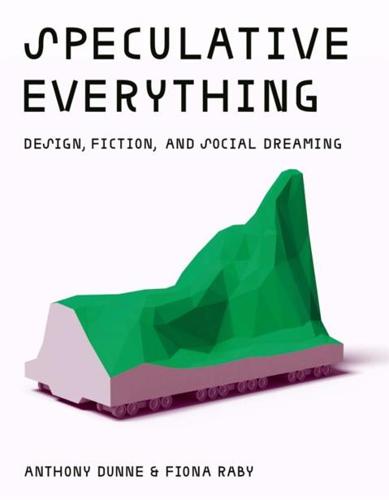
Speculative Everything: Design, Fiction, and Social Dreaming
by
Anthony Dunne
and
Fiona Raby
Published 22 Nov 2013
In some ways it probably relates more to fine art and literary speculation. They go beyond scenarios intended to communicate fictional realities by bringing a bit of unreality into the everyday. As an interesting aside, they also suggest that distributing conceptual objects might be a more plausible use for 3D printing than the replacement of product components so often cited as an ideal use for this technology. Noam Toran, Onkar Kular, and Keith R.Jones, Goebbels's Teapot, from the series The MacGuffin Library, 2008, ongoing. Photograph by Sylvain Deleu. © Noam Toran. One of the most beautiful recent examples of model aesthetics is El Ultimo Grito's Imaginary Architectures (2011).
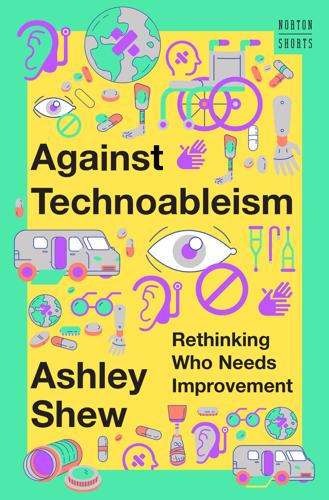
Against Technoableism: Rethinking Who Needs Improvement
by
Ashley Shew
Published 18 Sep 2023
We’ve had moments when she did something awesome she couldn’t do without her helper arm and it has brought me to tears. But those are moments. Moments Jordan wouldn’t have enjoyed without the help of prosthetics. I guess you could say they changed Jordan’s life. But prosthetics don’t make everything perfect. . . . Prosthetics aren’t a solution. . . . I believe in the use of prosthetics as a tool. 3D printed hands and arms are very cool. But they don’t change everything in the life of a limb different child. This entry was written in 2015, and Jordan is much older now. I’m in contact with Jen through disability-studies circles, and Jordan has gone on to open up space for thinking differently about arm prosthetics for children.

Super Continent: The Logic of Eurasian Integration
by
Kent E. Calder
Published 28 Apr 2019
Toward a New World Order 215 Technological and macroeconomic developments of the past decade, as suggested above, have dramatically changed this equation. Since 2005, digital freight documents have begun replacing the classical paper versions, beginning with the air-cargo supply chain, thus radically improving technical prospects for streamlining customs clearance.22 Recent trends in Internet of Things, big data, B2B e-commerce, and 3D printing have all helped shorten delivery times as well, enabling just-in-time sourcing that is also helping to rationalize trans-Eurasian production chains in the electronics, machinery, and auto industries, among others.23 Chongqing, for example, produced no personal computer laptops at all for foreign manufacturers as recently as 2009.
…
See also Association of Southeast Asian Nations (ASEAN) Southeast Asia Treaty Organization (SEATO), 209, 300n11 Index Soviet Union: collapse of, 4, 12, 22, 36, 54 – 61, 142, 170, 234, 235; oil production in, 82; relationship of to People’s Republic of China, 142 Spaak, Paul-Henri, 16 Special drawing rights (SDR), 221 Special Economic Zones (SEZs), 53, 58, 59, 134, 138, 139 Spence, Jonathan, 161–162, 163 Spratly Islands, 128 Sri Lanka: “debt trap,” 20, 99, 106 –107, 112, 187, 199, 249; ethno-religious conflicts, 60, 192, 193 Srivijaya kingdom, 123 Stalin, Joseph, 51, 54, 141, 142 Standard Chartered: and BRI finance, 107 Stanford, Leland, xiv State-owned enterprises (SOEs), 103 –104, 105, 109, 112 –113, 187 Steel industry, in China, 108 –109, 109f, 120, 178 Strait of Malacca, 74, 122, 127, 128, 133, 246 Suez Canal, 145 Sunni Muslims, 192 Sunnylands Summit, 239 –240 Super Continent, the emergence of Eurasian: the American precedent and, xiii-xvi; critical junctures and, 12 –15, 50 – 68; defined, 49 –50; geo-economics and, 1–2, 9, 15, 49; infrastructure and, 213 –218; US response to, 240 –251 Superhighways, 44, 153, 216, 229 Supply chains: ambivalence, 177; examples, 183, 215, 217; and Logistics Revolution, 44, 85 – 88, 119, 217; and collapse of the Soviet Union, 56, 92, 173, 234 –235; and the United States, 241–242, 250 Surabaya, 123, 124 Suzhou, 126, 138 Sweden, 113, 164, 167, 244 SWIFT (payment system), 223 Syndrome, concept of, 23 Syriza (Greece), 201, 202 Systems transformation, alternative routes to, 210 –211 Tajikistan, 197, 199, 283n14 Tang dynasty, 28, 29, 47 323 Tencent, 104 TEN-T Orient/East Mediterranean Corridor project, 175, 176m Thailand, 118, 124 –125, 127, 129, 131–133, 134, 135 Thatcher, Margaret, 62 “Third-wave” democratic uprisings, 238 3D printing, 215 Tianjin, 53, 92, 115, 126, 138, 248 Tianxia (all under heaven). See China: approach of to global order (tianxia) Train OSE (Greek railway company), 88 Transatlantic Trade and Investment Partnership (T-TIP), 212, 242 Transcontinental Railroad, xiii, xiv–xv, xvi Transit trade, as catalyst for deeper integration, 77, 84 –93, 98 Trans-Pacific Partnership (TPP), 203, 212, 224, 234 Transportation networks, China–Southeast Asia, 130 Transport technology, 182.
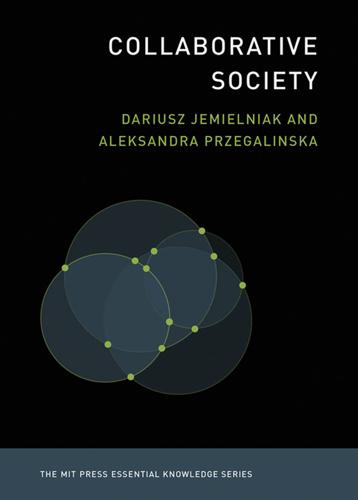
Collaborative Society
by
Dariusz Jemielniak
and
Aleksandra Przegalinska
Published 18 Feb 2020
Garcia Self-Tracking, Gina Neff and Dawn Nafus Sexual Consent, Milena Popova Smart Cities, Germaine R. Halegoua Spaceflight, Michael J. Neufeld Spatial Computing, Shashi Shekhar and Pamela Vold Sustainability, Kent E. Portney Synesthesia, Richard E. Cytowic The Technological Singularity, Murray Shanahan 3D Printing, John Jordan Understanding Beliefs, Nils J. Nilsson Virtual Reality, Samuel Greengard Waves, Frederic Raichlen Dariusz Jemielniak is Professor of Management at Kozminski University, Poland, where he heads the Management in Networked and Digital Societies (MINDS) Department, and the author of Common Knowledge?
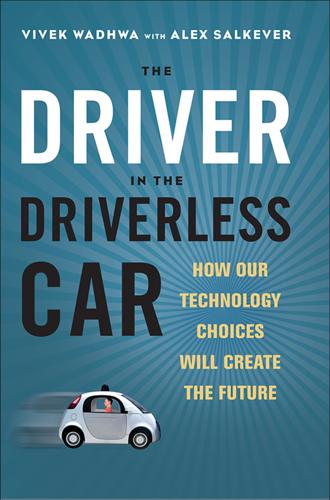
The Driver in the Driverless Car: How Our Technology Choices Will Create the Future
by
Vivek Wadhwa
and
Alex Salkever
Published 2 Apr 2017
“Equipment Authorization Approval Guide,” Federal Communications Commission 21 October 2015, https://www.fcc.gov/engineering-technology/laboratory-division/general/equipment-authorization (accessed 21 October 2016). CHAPTER FOURTEEN 1. Rob Stein, “Baby thrives once 3-D-printed windpipe helps him breathe,” NPR 23 December 2014, http://www.npr.org/sections/health-shots/2014/12/23/370381866/baby-thrives-once-3D-printed-windpipe-helps-him-breathe (accessed 21 October 2016). 2. NPR 17 March 2014,http://www.npr.org/sections/health-shots/2014/03/17/289042381/doctors-use-3-d-printing-to-help-a-baby-breathe. 3. Elizabeth Svoboda, “ ‘Watch me walk,’ ” Saturday Evening Post March– April 2012;284(2):20– 25, http://www.saturdayeveningpost.com/2012/03/14/in-the-magazine/health-in-the-magazine/watch-walk.html (accessed 21 October 2016). 4.

Asteroid Mining 101: Wealth for the New Space Economy
by
John Lewis
Published 22 Jul 2014
The gaseous carbonyl process not only affords a means of extracting and purifying the ferrous metals, but also offers a highly desirable material for either chemical vapor deposition or laser chemical vapor deposition of iron, nickel, and cobalt. The gaseous carbonyls would be of high utility in 3D printing of specialty parts. Matching Sources and Demand Sites We can see ways to provide a wide variety of products, starting with volatiles and ferrous metals, in space. But where are these products needed? Ideally, we should establish not only where these materials are needed, but the quantities in which they are needed and the present cost of meeting those demands from Earth.

Good Economics for Hard Times: Better Answers to Our Biggest Problems
by
Abhijit V. Banerjee
and
Esther Duflo
Published 12 Nov 2019
He gleefully takes on the set of future innovations futurologists predict and one by one explains why, in his opinion, none of them would be as transformational as the elevator or air conditioning, and why none would take us back to an era of fast growth. Robots cannot fold laundry. Three dimensional (3D) printing won’t affect large-scale manufacturing. Artificial intelligence and machine learning are “nothing new.”14 They have been around at least since 2004 and have done nothing for growth. And so on. It is clear of course that nothing Gordon says precludes the possibility that something entirely unexpected, perhaps some hitherto unimagined combination of familiar ingredients, will prove to be transformative.
…
Mokyr, on the other hand, sees a bright future for economic growth, spurred by nations competing to be the leader in science and technology, and the resulting rapid spread of innovation worldwide. He sees the potential for progress in laser technology, medical science, genetic engineering, and 3D printing. To Gordon’s claim that nothing much changed in fundamental ways in how we produced in the last few decades, he counters: “The tools we have today make anything that we had even in 1950 look like clumsy toys by comparison.”15 But mostly, Mokyr thinks that the way the world economy has changed and globalized produces the right environment for innovations to bloom and change the world, in ways we cannot even begin to envision.
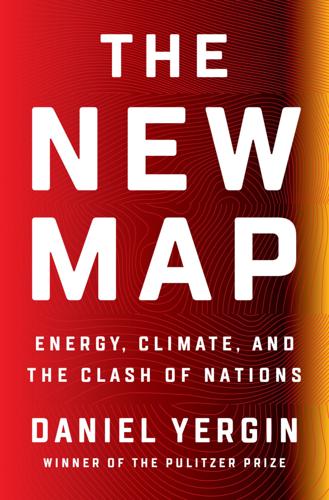
The New Map: Energy, Climate, and the Clash of Nations
by
Daniel Yergin
Published 14 Sep 2020
Indeed, some see hydrogen today as where renewables were two or three decades ago in terms of development. It is striking, too, that hydrogen does not seem to involve geopolitical issues. It is either a tool for countries to meet ambitious decarbonization goals or an opportunity for export, becoming a globally-traded commodity. Advanced manufacturing, including 3D printing, could have a major impact on energy use by reducing transportation costs. New technologies for buildings could make them much more energy efficient. Electric grid modernization and smart cities could apply digital technologies, increase resilience, and create two-way flows between energy suppliers and customers.
…
See ride-hailing services and taxis Taxonomy (EU report), 389 TC Energy (Trans Canada), 47 technological advances and Arctic gas reserves, 111 and automobile industry, xviii, 366–73, 415, 427 and autonomous vehicles, 347–57, 368–69, 373 China, 174–75 and container shipping, 161–64 and current geopolitical challenges, 425 and electric vehicles, xviii, 327–46, 368–71, 415, 427, 430 and hydraulic fracturing techniques, 7 and “low-carbon energy,” 418 and oil sands production, 46 and pace of innovation, 429 and sanctions against Russia, 97–98 and U.S. oil production levels, 64 Tengiz field, 122 terrorism, 216, 221–22, 228, 230–31, 241, 249, 253, 261–65, 270, 286–88, 296 Tesla, 330–34, 338–40, 344 Texas, 3–6, 7, 9–10, 20, 23, 24, 29–30, 399 Thatcher, Margaret, 214 3D printing, 404, 425 Three Forks stratum, 19 Three Mile Island nuclear accident, 349 Thrun, Sebastian, 349–51, 352–53, 357 Thucydides Trap, 131, 154, 425 Thunberg, Greta, 384 Tibet, 150 Time, 18, 20 TNK-BP, 76 Tokayev, Kassym-Jomart, 123 Total, 112 Toyoda, Akio, 369 Toyota, 338, 369 trade wars, 26, 130, 171, 174–75, 286 Trans-Pacific Partnership, 134 Treaty of Lausanne, 201 Treaty of Nanking, 139 Truman, Harry, 60, 211 Trump, Donald impeachment, xvi, 110 and influence of U.S., 188 and Iranian nuclear ambitions, 227 and Nord Stream 2 pipeline project, 105–7, 108 and pipeline battles in U.S., 51 and price war among petroleum producers, 317–20 relationship with Russia, 103 and Russian election interference, 78 and Saudi relations, 306 and Syrian civil war, 247 and U.S.
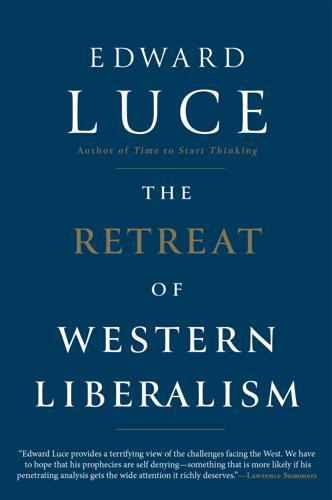
The Retreat of Western Liberalism
by
Edward Luce
Published 20 Apr 2017
There have been no comparable breakthroughs in curing mental illness, such as Alzheimer’s. Longer lives at the same rates of mental incapacity will be bad for productivity. Technology may continue to surprise in dazzling ways. But if the iPhone did not lift productivity rates, what could? Perhaps 3D printing? Or a cryonic leap into immortality? Initially, I feared Gordon’s pessimism was correct. Silicon Valley’s wilder futurologists make it easy to dismiss the future as bunk. Now my fear is that Gordon is wrong. We should be careful what we wish for. It looks increasingly likely we are going to get it.
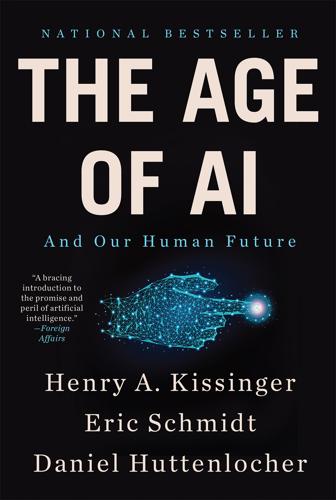
The Age of AI: And Our Human Future
by
Henry A Kissinger
,
Eric Schmidt
and
Daniel Huttenlocher
Published 2 Nov 2021
James Vincent, “Google ‘Fixed’ Its Racist Algorithm by Removing Gorillas from Its Image-Labeling Tech,” The Verge, January 12, 2018, https://www.theverge.com/2018/1/12/16882408/google-racist-gorillas-photo-recognition-algorithm-ai. 4. James Vincent, “Google’s AI Thinks This Turtle Looks Like a Gun, Which Is a Problem,” The Verge, November 2, 2017, https://www.theverge.com/2017/11/2/16597276/google-ai-image-attacks-adversarial-turtle-rifle-3d-printed. 5. And, to a lesser extent, Europe and Canada. CHAPTER 4 1. Yet some historical episodes provide instructive parallels. For a survey of interactions between centralized power and networks, see Niall Ferguson, The Square and the Tower: Networks and Power, from the Freemasons to Facebook (New York: Penguin Press, 2018). 2.
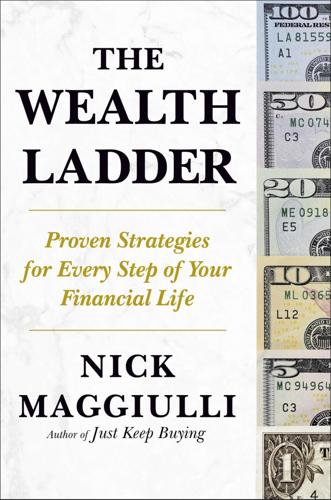
The Wealth Ladder: Proven Strategies for Every Step of Your Financial Life
by
Nick Maggiulli
Published 22 Jul 2025
And while you may not have a scary bridge in your town or a woodland creature that you can train to do watersports, there are many other moneymaking opportunities out there. For example, here are some of the things I’ve seen people do for extra cash: Part-time tutoring Freelance photography Flipping items online Chasing credit card rewards And the list goes on. I have a relative who 3D prints portable diesel heaters and sells them on Etsy. He makes good side money doing it too. The best thing about a side hustle is that it can typically be done on nights and weekends, when it won’t interfere with your day job. And if you have no plans to replace your day job, the extra cash generated by your side hustle can help you build wealth more quickly.
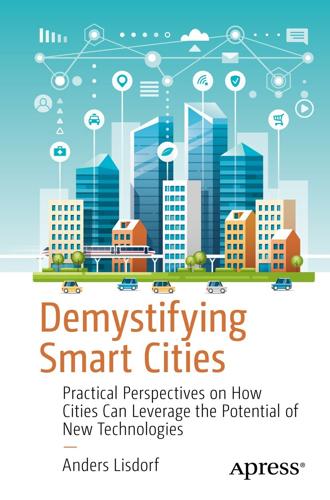
Demystifying Smart Cities
by
Anders Lisdorf
Exteros This New York startup has developed a device that can count and categorize people, for example, in a shopping mall. It uses computer vision and artificial intelligence to categorize and count people as they move through the field of vision. The device is based on a Raspberry Pi, a camera, and a 3D printed case. This is a great example of the flexibility and availability of components to make innovative IoT solutions today. Earlier a vendor would have had to find an adequate camera and microcontroller. Then the logic would have had to be developed. In this case, machine learning models need to be trained and implemented on the chip.
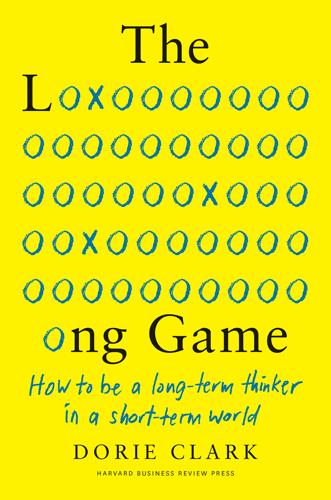
Long Game: How Long-Term Thinker Shorthb
by
Dorie Clark
Published 14 Oct 2021
But we generally have a much harder time grasping the implications of exponential growth, as in the famous story of the king who agreed to an inventor’s payment terms: one grain of rice on the first square of a chessboard, two on the second, four on the third, and so on. It sounds rather modest at first. Yet by the time he got to the sixty-fourth and final square, the king owed more than eighteen quintillion grains.2 In their book Bold, Peter Diamandis and Steven Kotler discuss what they call “exponential technologies”—innovations such as driverless cars, or 3D printing, or artificial intelligence. For a long time, sometimes decades, people dismiss exponential technologies, saying they’re overhyped and ineffective. But then, on the back half of the chessboard, they suddenly pop into public consciousness and amaze everyone: Where did this come from? How did this happen?
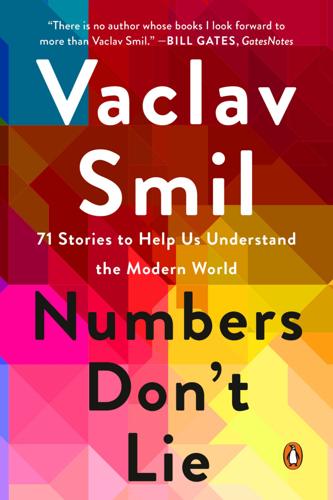
Numbers Don't Lie: 71 Stories to Help Us Understand the Modern World
by
Vaclav Smil
Published 4 May 2021
The result has been a revolution in electronics. But this revolution has been both a blessing and a curse, for it has had the unintended effect of raising expectations for technical progress. We are assured that rapid progress will soon bring self-driving electric cars, individually tailored cancer cures, and instant 3D printing of hearts and kidneys. We are even told it will pave the way for the world’s transition from fossil fuels to renewable energies. But the doubling time for transistor density is no guide to technical progress generally. Modern life depends on many processes that improve rather slowly, not least the production of food and energy and the transportation of people and goods—and such slow rates prevail not only for pre-1950 advances but also for essential improvements and innovation coinciding with the development of transistors (their first commercial application was in hearing aids in 1952).
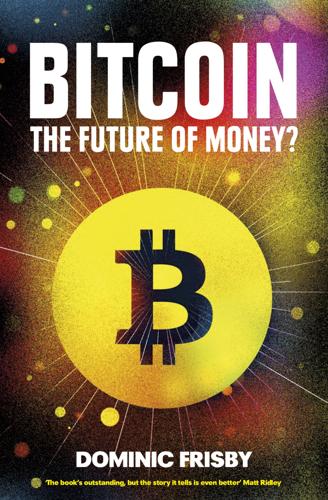
Bitcoin: The Future of Money?
by
Dominic Frisby
Published 1 Nov 2014
When I first wrote this chapter I could find 17 different so-called ‘dark sites’, where you can buy drugs with bitcoins on the Tor network: Silk Road 2.0, Black Market Reloaded, Pandora Market, Agora Market, TorMarket, The Marketplace (the M of ‘Market’ is the McDonald’s M), the Three Hares Bazaar, the RoadSilk, White Rabbit Marketplace, Outlaw Market, Bungee Discreet Global Mailorder, Blue Sky, Modern Culture, Budster, Dutchy and Utopia. At Utopia I noticed you could also buy a guide to hacking ATMs, $100 of counterfeit dollars for $35 together with instructions on how to spend them, and ‘untraceable, 3D-printed guns’. At the point of final edit, there now seem to be 25 different sites. Meanwhile, of the above, Black Market Reloaded has shut down, TorMarket disappeared in a scam, as did Budster, Three Hares doesn’t seem to have ever actually operated, RoadSilk has renamed itself Pirate Market, White Rabbit I’m advised is currently a scam, and Utopia has been busted by Dutch police.
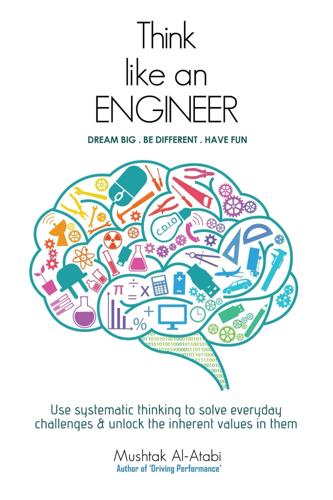
Think Like an Engineer: Use Systematic Thinking to Solve Everyday Challenges & Unlock the Inherent Values in Them
by
Mushtak Al-Atabi
Published 26 Aug 2014
When searching for ideas for improving products and services, ask yourself this question: Can I make the product or the service digital? Currently, researchers are working on 3D printers that can print variety of materials from metals to plastics and even electronics and food. Imagine being able to download pizza or your own car over the Internet one day! 3D Printing Technology. Enabling the Transformation from Shipping Atoms to Shipping Bits 4.2.5.3 Space Segmentation The next time you iron your shirt, think of the journey of the iron as a product! It started as a solid block of metal that is heated externally using coal. The improved version was a hollow iron with burning coal inside, this resulted in less material used and longer heating time, since the heating element is carried within the iron itself.
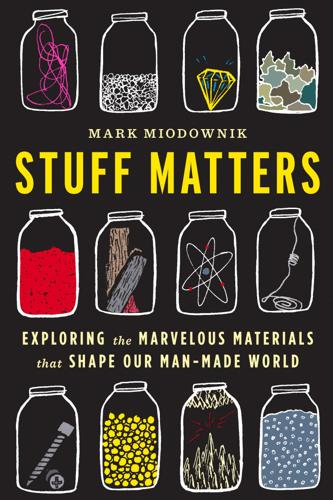
Stuff Matters: Exploring the Marvelous Materials That Shape Our Man-Made World
by
Mark Miodownik
Published 5 Jun 2013
In the case of livers and kidneys, they need not only to develop a blood supply but also to be connected to the main arteries of the body. The heart is a particularly acute problem because we have only one, and without one that functions, we die. Types of artificial heart have been developed, but the longest anyone has survived with one is a year. Artificial jawbone created using a 3D printer. It is likely that 3D printing will play a central role in any technology that involves engineering new organs. These 3D printers are already used widely for making dental implants, and in 2012 this same technology was used to create an artificial jawbone for an eighty-three-year-old woman. This jaw was made from titanium, but the printing of a scaffold material to accommodate the cells that will turn it into a patient’s own bone is rapidly becoming possible.
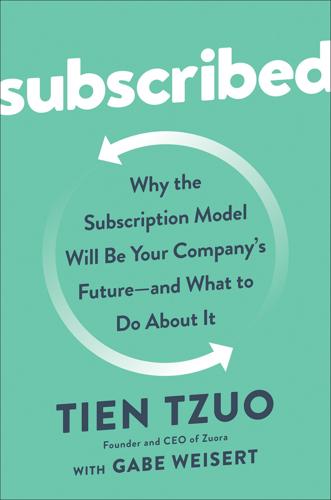
Subscribed: Why the Subscription Model Will Be Your Company's Future - and What to Do About It
by
Tien Tzuo
and
Gabe Weisert
Published 4 Jun 2018
IBM lost the war by giving the user experience over to Microsoft, and the same thing is going to happen to the legacy car companies when they inevitably hand over their dashboard intelligence to Apple, Google, and Facebook. And with all the dramatic improvements we’re seeing in manufacturing and 3D printing, maybe a whole new crop of automobile start-ups will be able to batch-print their own vehicles in Chinese factories (just like cell phones!), right? Wrong. As it turns out, it is really hard to build a safe, great car at scale. Just ask Elon Musk. Or Apple. Or Google. SILICON VALLEY VERSUS DETROIT?

The Quantum Curators and the Fabergé Egg: A Fast Paced Portal Adventure
by
Eva St. John
Published 23 May 2020
This evening’s event was to launch the new acquisition; an undiscovered Fabergé egg. I had promised Julius that it would be going to the world’s greatest museum, and here it was in the Mouseion of Alexandria. Julius and I were given pride of place as the egg was revealed. Of course, the actual egg was stored in a hermetic vault, but in front of us was a perfect 3D printed replica. ‘So, someone sitting in New York can dial this up and hold a copy for themselves?’ ‘Yes,’ I said, and smiled. It seemed funny explaining something that a seven-year-old knew inside out. ‘And they wouldn’t be able to tell the difference? Everything moves and feels the same?’ ‘Identical.
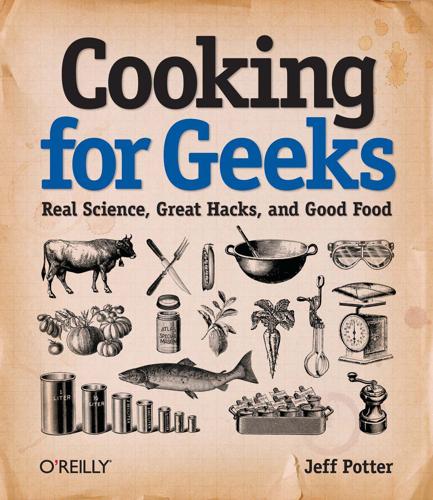
Cooking for Geeks
by
Jeff Potter
Published 2 Aug 2010
In this section, we’ll take a look at a few techniques that are common in commercial restaurants and examine ways that they can be useful to the home chef. This isn’t by any means a complete list. Rather, this should be enough to get you started thinking outside the box (or, harking back to the functional fixedness concept discussed in the opening chapter, getting to see the box in a different way). 3D Printing and Mold Making Many aspects of "playing with your food" are beyond the reach of most commercial restaurants, either because they’re not worth the time or require a geek to do it. For a few high-end restaurants, spending the time involved in making custom molds allows them to create innovative and unusual experiences.
…
, Seasonal Method Teflon, Pots and pans temperature controllers, Water heaters temperature gradients, Heat Transfer and Doneness temperature(s), Key Temperatures in Cooking (see also ) cooking at extreme, Fun with Hardware FAT TOM acronym, Foodborne Illness and Staying Safe food additives and, E Numbers: The Dewey Decimal System of Food Additives for baking reactions, Time and Temperature: Cooking’s Primary Variables for caramelization, Reading Between the Lines, Time and Temperature: Cooking’s Primary Variables, Cooked = Time * Temperature, 356°F / 180°C: Sugar Begins to Caramelize Visibly for Maillard reaction, Reading Between the Lines, Pots and pans, Cooked = Time * Temperature, 310°F / 154°C: Maillard Reactions Become Noticeable for protein denaturation, Time and Temperature: Cooking’s Primary Variables, Cooked = Time * Temperature, Key Temperatures in Cooking of common reactions, Cooked = Time * Temperature Potter’s kitchen tips, Breakfast smell and, Smell (Olfactory Sense) sous vide cooking and, Foodborne Illness and Sous Vide Cooking taste and, Smell (Olfactory Sense), Salty, Combinations of Tastes and Smells wet heat methods, Convection tempering chocolate, Chocolate testing for doneness, Time and Temperature: Cooking’s Primary Variables homemade pectin, 158°F / 70°C: Vegetable Starches Break Down positive for drugs, Cooking for Others Savage on, Cooking for Others steak tenderness, Cooking for Others Texas A&M University, Foodborne Illness and Staying Safe texture, food, Mozzarella spheres, Foodborne Illness and Sous Vide Cooking Thai cooking, Others thermal conductivity of metals, Pots and pans, Methods of Heat Transfer thermal hydrolysis, 154°F / 68°C: Collagen (Type I) Denatures thermal radiation, Approaching the Kitchen, Thermometers and timers thermal response time, Pots and pans thermocouples, Water heaters thermometers, Spoons & co. thickeners about, E Numbers: The Dewey Decimal System of Food Additives maltodextrin as, "Melts" in your mouth: Maltodextrin transglutaminase as, Meat Glue: Transglutaminase 30-Second Chocolate Cake, Cream Whippers (a.k.a. "iSi Whippers") This, Hervé, Sugar 3D printing, Commercial Hardware and Techniques time (FAT TOM acronym), Foodborne Illness and Staying Safe time and temperature, Time and Temperature: Cooking’s Primary Variables (see also ) about, Cooked = Time * Temperature as key variables in cooking, Fun with Hardware duck confit and, 154°F / 68°C: Collagen (Type I) Denatures Potter’s kitchen tips, Breakfast sous vide cooking and, Sous Vide Cooking Wiechmann on, Seasonal Method timers, Spoons & co., Time and Temperature: Cooking’s Primary Variables Tiramisu, Whipped Cream Tomato Basil Mozzarella Salad, Rice, Wheat, Grains ≅ Congee, Cream of Wheat, Porridge tomatoes peeling, Seasonal Method Tomato Basil Mozzarella Salad, Rice, Wheat, Grains ≅ Congee, Cream of Wheat, Porridge tongs, Spoons & co.

Thank You for Being Late: An Optimist's Guide to Thriving in the Age of Accelerations
by
Thomas L. Friedman
Published 22 Nov 2016
They advertised it in June 2013. As I wrote in a column, within weeks they had received 697 entries from all over the world—from companies, individuals, graduate students, and designers. According to the GE website: In September [2013], the partners picked 10 finalists who received $1,000 each. Aviation 3D printed the 10 shortlisted designs at its additive manufacturing plant in Cincinnati, Ohio. GE workers made the brackets from a titanium alloy on a direct metal laser melting (DMLM) machine, which uses a laser beam to fuse layers of metal powder into the final shape. The team then sent the finished brackets to GE Global Research (GRC) in Niskayuna, New York, for destruction testing.
…
The original bracket weighed 2,033 grams (4.48 pounds), but Kurniawan was able to slash its weight by nearly 84 percent to just 327 grams (0.72 pounds).” GE officials noted to me that the manager who ran the challenge had worked at GE longer than that kid had been alive. Kurniawan was quoted by GE as saying, “3D printing will be available for everyone in the very near future.” Kurniawan, who, GE tells us, “runs a small engineering and design firm called DTECH-ENGINEERING with his brother,” added: “That’s why I want to be familiar with additive manufacturing as soon as possible.” GE ended up offering the Hungarian intern a job.

This Is Service Design Doing: Applying Service Design Thinking in the Real World: A Practitioners' Handbook
by
Marc Stickdorn
,
Markus Edgar Hormess
,
Adam Lawrence
and
Jakob Schneider
Published 12 Jan 2018
Examples of lower-fidelity prototypes include desktop walkthroughs to explore essential steps in the customer journey, cardboard prototypes to get a first idea about the shape of a future product, or sketches on paper to visualize the early stages of a digital user interface. Higher-fidelity prototypes might include contextual simulations or pilots to test technical and feasibility aspects, 3D prints or immersive digital 3D models to evaluate a detailed look and feel, or actual code already closing the gap toward implementation. 28 → Context and audience It is a conscious choice where and when prototypes are used/run and who is experiencing them to get feedback and other data. For example: do you want to simulate in your actual shop environment with real customers during a peak period, or do you want to run a session in a safe studio environment with internal colleagues?
…
You can now safely invite the relevant stakeholders with their expert methods. Those specialists bring in specialized tools to tackle specific challenges quickly and efficiently, including but certainly not limited to: → Software prototyping tools and frameworks → CAD (computer aided design) and 3D printing → Change management toolsets and structures → VR (virtual reality) applications for architecture and experience prototyping → Fablab (fabrication laboratory) environments or makerspaces with access to tools that allow you to prototype almost any physical object When you choose suitable methods for your project, carefully assess how quickly they will allow you to build and test the prototype.
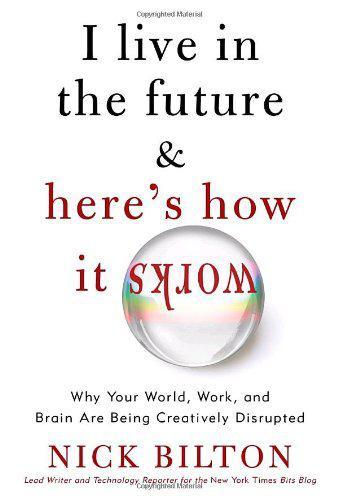
I Live in the Future & Here's How It Works: Why Your World, Work, and Brain Are Being Creatively Disrupted
by
Nick Bilton
Published 13 Sep 2010
It’s not a very practical application, but it’s a product I wanted, so I decided to build it. In the future you will be able to build your own personalized products too. Two other cofounders of NYC Resistor might be able to help. Zach Hoeken and Bre Pettis, whom I would characterize as nerds times ten, started a company called MakerBot where they build and sell “open-source 3D printing robots.” Imagine a printer sitting on your desk at home that can actually “print” objects in plastic. MakerBot is a kit that can be purchased and assembled for around $500. Once it’s together, you can download schematics from the Internet of anything from a mousetrap to a cup and actually print them out in plastic.

Whiplash: How to Survive Our Faster Future
by
Joi Ito
and
Jeff Howe
Published 6 Dec 2016
April 8, 2016. http://bostinno.streetwise.co/2016/04/08/apples-steve-jobs-and-john-sculley-fight-over-ceo/. 41 To select just a few biologically inspired projects at the Media Lab as of May 2016, Kevin Esvelt’s Sculpting Evolution group is studying gene drives and ecological engineering; Neri Oxman’s Mediated Matter group is experimenting with microfluidics and 3D-printing living materials; and Hiroshi Ishii’s Tangible Media group has created a fabric with “living nanoactuators” that use bacteria to open or close vents in the material in response to the wearer’s body temperature. 42 Malcolm Gladwell. “Creation Myth: Xerox PARC, Apple, and the Truth about Innovation.”

Makers
by
Chris Anderson
Published 1 Oct 2012
ttype=2&tid=12470 24. Neil Gershenfeld, Fab: The Coming Revolution on Your Desktop (New York: Basic Books, 2005). 25. http://www.washingtonpost.com/national/on-innovations/the-past-present-and-future-of-3-d-printing/2011/08/21/gIQAg4fJZJ_story.html 26. http://www.forbes.com/sites/richkarlgaard/2011/06/23/3d-printing-will-revive-american-manufacturing/ 27. http://investor.cafepress.com/secfiling.cfm?filingID=1193125-12-135260&CIK=1117733 28. http://www.slideshare.net/adafruit/hope2010-4790096 29. http://www.americanheritage.com/events/articles/Web/20070709-windshield-wiper-robert-kearns.shtml 30. http://www.washingtonpost.com/wp-dyn/articles/a54564-2005feb25.html 31. http://www.dieselpowermag.com/features/1005dp_local_motors_rally_fighter/ 32. http://www.meyersmanx.com/pdf-files/Meyers_Manxter2.pdf 33. http://www.jstor.org/pss/2626876 34. http://www.econlib.org/library/Essays/hykKnw1.html 35.
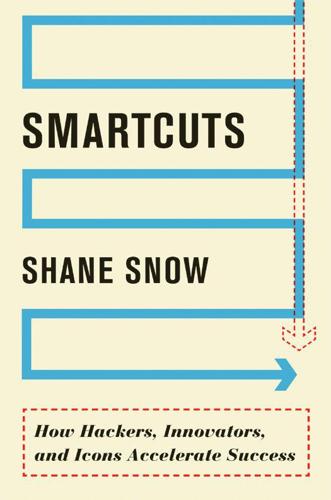
Smartcuts: How Hackers, Innovators, and Icons Accelerate Success
by
Shane Snow
Published 8 Sep 2014
He built diverse classrooms, and he recruited students and mentors from another underrepresented group in footwear: women. PENSOLE’s m.o. was to mimic the real-world shoe design process. In Edwards’s studio in Portland—and on-site at partner schools around the United States—he gave students design briefs like, “Create a shoe using 3D printing,” and taught them to do market research and build consumer profiles, sketch and design, then actually create physical shoe models out of masking tape and eventually real materials. “I learned on the job. I teach that way,” Edwards says. “I put them in the exact same position than when they’re at a company.”
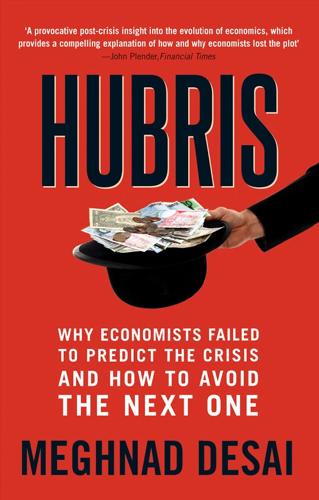
Hubris: Why Economists Failed to Predict the Crisis and How to Avoid the Next One
by
Meghnad Desai
Published 15 Feb 2015
This technology has affected record companies, newspapers and TV channels. Universities are under pressure because thousands of students can register for online courses offered by distinguished teachers for free. New innovations in payment methods have become possible which will change the way we use banks. On the industrial side we have 3D printing and robotics that may yet revolutionize manufacturing. There are advances in DNA mapping and its effects on health may be enormous. Innovations in technology have a displacement effect. Such was the case with the plight of Silesian weavers that concerned Marx. In the last few decades we have seen the recent shift of manufacturing to the East and the replacement of routine labor as a result of technological advances.
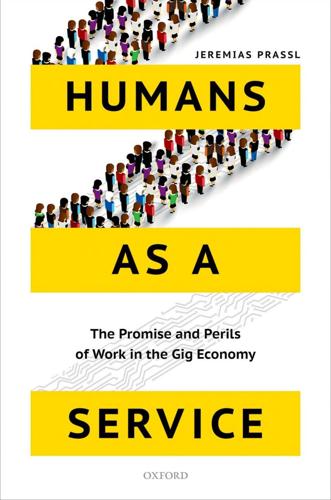
Humans as a Service: The Promise and Perils of Work in the Gig Economy
by
Jeremias Prassl
Published 7 May 2018
As Christine Lagarde, President of the International Monetary Fund (IMF), highlighted in the spring of 2017, * * * Why Should We Care? 87 economists and politicians are increasingly concerned about the ways in which innovation is reshaping markets—or rather, the ways in which it is not: Let me start with the good news. Technological innovation seems to be mov- ing faster than ever, from driverless cars to robot lawyers to 3D-printed human organs. The not-so-good news is that we can see technological breakthroughs everywhere except in the productivity statistics.67 Much ink has been spilt by commentators trying to grapple with this para- dox. One school of thought, for example, argues that recent decades haven’t seen anywhere as much innovation as we commonly think.

Cogs and Monsters: What Economics Is, and What It Should Be
by
Diane Coyle
Published 11 Oct 2021
In particular, the new technologies transforming life will need to bring wider benefits than they have so far. An economy of tech millionaires or billionaires and gig workers, with middle-income jobs undercut by automation will not be politically sustainable. Biotech or medical innovations from 3D printed organs to personalised cancer treatments cannot be the preserve of only the super-rich. The tech-driven inequalities had already disrupted politics in many countries by destabilising the solid middle. Perhaps the shock induced by Covid19 can ensure that lasting change comes about, or—melodramatic as it feels to write this—we may be in for a revolutionary period.

The Switch: How Solar, Storage and New Tech Means Cheap Power for All
by
Chris Goodall
Published 6 Jul 2016
The engineers were not just working out how to make a turbine that survived intense storms but also how to make all the components as cheaply as possible. How thin can the vertical aluminium blades be and still not buckle in 100-mile-an-hour winds? How little copper could they get away with in the alternator that generates the electricity? Could all the main components other than the blades be made using 3D-printing or injection-moulding of plastics? Like many engineers before them, the designers were desperate to keep the details of the turbine secret from the eyes of potential competitors. Photographs were banned, lest they should give any clue to the remarkable innovations that Spinetic had introduced.
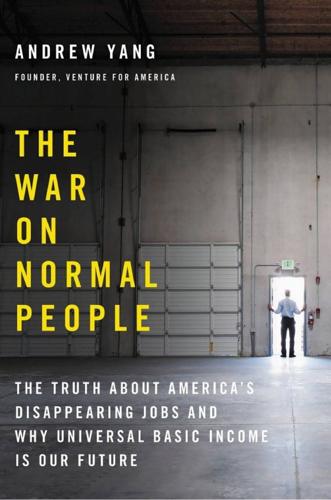
The War on Normal People: The Truth About America's Disappearing Jobs and Why Universal Basic Income Is Our Future
by
Andrew Yang
Published 2 Apr 2018
The advent of big farms, tractors, factories, assembly lines, and personal computers, while each a very big deal for the labor market, were orders of magnitude less revolutionary than advancements like artificial intelligence, machine learning, self-driving vehicles, advanced robotics, smartphones, drones, 3D printing, virtual and augmented reality, the Internet of things, genomics, digital currencies, and nanotechnology. These changes affect a multitude of industries that each employ millions of people. The speed, breadth, impact, and nature of the changes are considerably more dramatic than anything that has come before.

To Be a Machine: Adventures Among Cyborgs, Utopians, Hackers, and the Futurists Solving the Modest Problem of Death
by
Mark O'Connell
Published 28 Feb 2017
Only later that evening, as I glanced through my notes, did it occur to me that Alberto was surely a scion of the Rizzoli media dynasty, which would make him the grandson of Angelo Rizzoli, who had produced Fellini’s La Dolce Vita and 8½.) He was studying at the Cass Business School in London, but was also working on a beta-stage tech start-up, which provided 3D printing materials for primary classrooms. He was twenty-one years old, and had considered himself a transhumanist since his teens. “I certainly can’t imagine myself at thirty,” he said, “without some kind of enhancement.” I myself was thirty-five, like Dante at the time of his vision—midway upon the journey of my life.
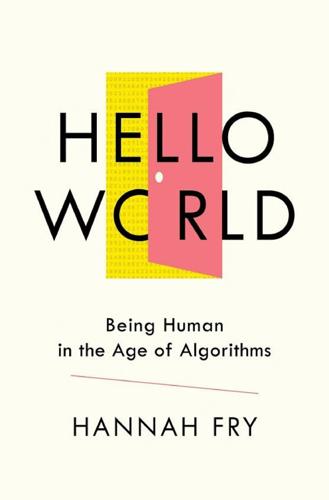
Hello World: Being Human in the Age of Algorithms
by
Hannah Fry
Published 17 Sep 2018
(Soon after the launch of Face ID, a video appeared of a ten-year-old boy who could hoodwink the facial recognition on his mother’s iPhone. She now deletes her texts if there is something she doesn’t want her son to look at.)61 There have also been reports that the algorithm can be tricked by a specially built 3D printed mask, with infrared images glued on for the eyes.62 All this means that while the algorithm might be good enough to unlock your phone, it probably isn’t yet reliable enough to be used to grant access to your bank accounts. Nor are these 3D algorithms much use for scanning passport photos or CCTV footage.
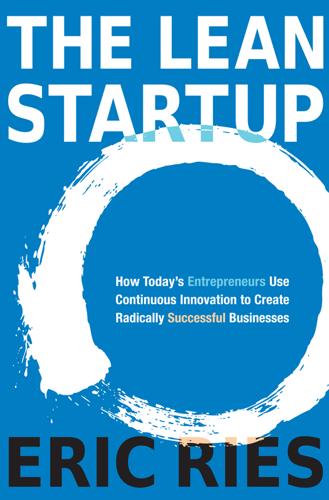
The Lean Startup: How Today’s Entrepreneurs Use Continuous Innovation to Create Radically Successful Businesses
by
Eric Ries
Published 13 Sep 2011
Historically, this has been used to offer the customer many choices of product, but in the future, this capability will allow the designers of products to get much faster feedback about new versions. When the design changes, there is no excess inventory of the old version to slow things down. Since machines are designed for rapid changeovers, as soon as the new design is ready, new versions can be produced quickly. 3. 3D printing and rapid prototyping tools. As just one example, most products and parts that are made out of plastic today are mass produced using a technique called injection molding. This process is extremely expensive and time-consuming to set up, but once it is up and running, it can reproduce hundreds of thousands of identical individual items at an extremely low cost.
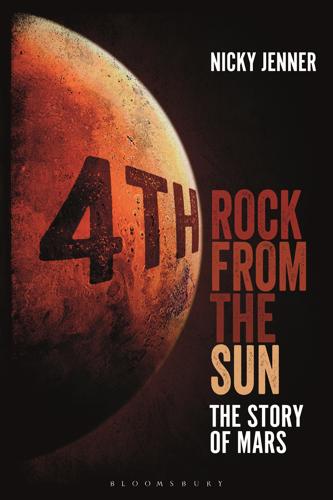
4th Rock From the Sun: The Story of Mars
by
Nicky Jenner
Published 5 Apr 2017
‘From the way it’s standing up, I would say that it’s a full statue, but is buried from the shoulders down,’ wrote Scott Waring on the ‘UFO Sightings Daily’ website in 2014, putting its ‘chances of being a real sculpture head’ at a whopping 98 per cent. ‘I highly doubt this is mere rock; it’s probably a 3D-printed substance with tech printed inside,’ he added. Odd, but perhaps unsurprising given the fact that Obama has reportedly spent some time on the Red Planet in person. This claim was perpetuated by Andrew Basiago, an American lawyer better known as an all-round voice of oddity and eccentricity in the conspiracy community and ironically named ‘truth movement’.
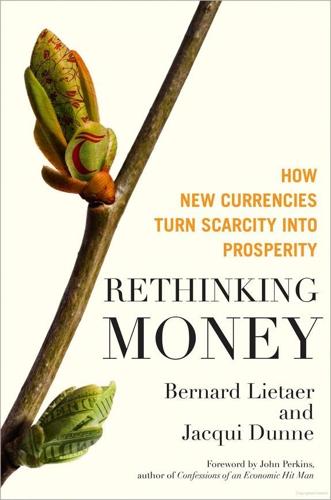
Rethinking Money: How New Currencies Turn Scarcity Into Prosperity
by
Bernard Lietaer
and
Jacqui Dunne
Published 4 Feb 2013
See also Fraud Sewerage, 21 Shari’a, 112–113 Shortage, 39 Short-termism, 44– 46, 217; mandatory growth and, 2, 52– 53; sustainable money and, 85– 86, 192; Terra and, 138–139 Slum, 141 Small and medium-sized enterprise (SME), 120–124 Smith, Adam, 29 Social capital, 2, 46– 49 Social construct, 57– 58 Social decay, 34– 35, 159 Social media, 82 Social Security, 12 Social Trade Organization (STRO), 121, 127, 170, 194 Social values, 194, 210–211 Solidus, 24, 65, 227n2, 230n9 Sovereign debt, 42– 43, 70, 145–147, 227n21 Speculation, 33 Spender-signed currency, 196–198 Spice, 160 Square, 115–116 Stamp scrip, 180–181 Sterile reserve, 40 Sternthaler, 88– 89 Stimulus, 23–24, 145–146 INDEX Store of value, 58; conflicting with medium of exchange, 66; Fisher equation and, 64; money defined as, 28; professionals describing, 1–2 Street children, 143 Strike, 96– 98 Stripe, 115–116 Student loan: debt, 17–18, 226–227n13; GI Bill and, 153; JAK and, 110 Subak, 187 Subprime crisis, 70 Subsidiarity, 69, 231n14 Success, 222 Sufficiency, 80, 222 Superstition, 3 Sustainability, 14, 32, 52– 53; decentralization and, 219; demurrage and, 67, 206; leadership and, 222; MHBA and, 128–129; in monetary ecosystem, 199; regio and, 191; self-sustaining system, 208; sustainable abundance, 5– 6, 55, 224; sustainable money, 85– 86, 192; Terra and, 134, 206; threat to, 216 Sweat equity, 165 Swedish Central Bank, 25–26, 35– 36 Taboo: academic, 35– 36; money as, 4 Talents, 155 Tally stick, 65 Tax, 26–27, 57– 58; changing behavior through, 157; Creative Currencies Project and, 155; exemption, 85; Hub and, 131; paid in C3, 123, 128; paid in civic, 147–148; paid in commodities, 27; paid in Terra, 139; paid in uang kepeng, 189; paid in Wörgl, 177–178 Taxi, 126–128 Technology, 115–117, 120, 192, 218 Tenth Amendment, 231n14 Terra Alliance, 137 Terra initiative, 67 Terra Trade Reference Currency (TRC), 5, 134–135; cash-in, 136, 139–140; circulation of, 136, 138; creation of, 136, 137; as reference currency, 140 Terra Unit Value, 137 Thank-you (T), 132–133, 183–184 Therapy, 17 259 Third Industrial Revolution, 218 3D printing, 218–219 Three-body problem, 31 TimeBank, 75, 80– 85, 81; in Blaengarw, 159–161, 161; Hub, 131; Patch Adams Free Clinic and, 165; Rotating Loan Club, 172 Time currency, 5, 74–75, 78– 85; fureai kippu as, 168; Ithaca HOURS, 162–165, 163; in Nyanza, 208 Time Dollar. See TimeBank Time Dollar Youth Court, 83 Time horizon, 44 Time-slot exchange, 195–197 Titus, 197–198 Token Exchange System, 193 Too big to fail, 96 Torekes, 74–75, 151, 151–153 Total system throughput (TST), 33 Totnes, 75 Trade reference currency.
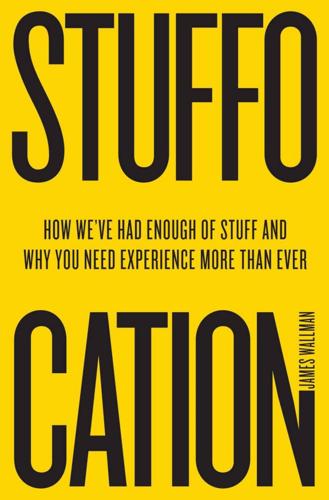
Stuffocation
by
James Wallman
Published 6 Dec 2013
The new and improved experience economy will, as it responds to Stuffocation, be a world of goods – products, services, experiences – that are far less bad, or even actually positive, for the environment. They will require fewer material resources. Rather than cluttering our homes with yet more monotonous, commoditized stuff, companies will sell us goods that are customized and 3D printed, so that they give each of us more engaging, relevant experiences. They will provide goods that take up less room, or no physical space at all. Instead of focusing on tangible objects we can have and hold, companies will sell us solutions we need or, better still, activities we can do. More of the goods we buy will be temporary, and easy to update – with new apps or software, for instance, or with re-use in mind – so that we avoid the waste of hedonic adaptation.

Scary Smart: The Future of Artificial Intelligence and How You Can Save Our World
by
Mo Gawdat
Published 29 Sep 2021
Furthermore, a variety of replicators (if you want to call them that) can now print concrete buildings. They can even print tools on the Space Shuttle. Just give the command and what you need will appear out of thin air. There are even efforts to print live organs for organ transplant. Yes! You read this correctly. Organ printing uses techniques similar to conventional 3D printing, only using biocompatible plastic. The form printed is used as the skeleton for the organ being printed. As the plastic is being laid down, it is also seeded with human cells from the patient’s organ. The printed plastic mould is then transferred to an incubation chamber to give the cells sufficient time to grow, after which the organ is implanted into the patient.

The Beekeeper of Aleppo: The Sunday Times Bestseller and Richard & Judy Book Club Pick
by
Christy Lefteri
Published 28 Apr 2019
Learn more about their work at: www.openculturalcenter.org * * * Faros (The Lighthouse) is a Christian non-profit organization that provides humanitarian care and individual support to unaccompanied refugee children and young adults in the centre of Athens. They help unaccompanied children and young adults find safety, discover their worth, and build a future perspective. They do street work to identify vulnerable minors, run a shelter for minors and provide skills development training (design, wood work, 3D printing, electronics, sewing) in their two educational centres for young men and women. Learn more about their work at: www.faros.org.gr * * * Salusbury World is a grass-roots charity supporting refugees of all ages to rebuild their lives in the UK. In 2019, it is celebrating 20 years of painstaking work, much of it with children who have gone on to achieve great things.
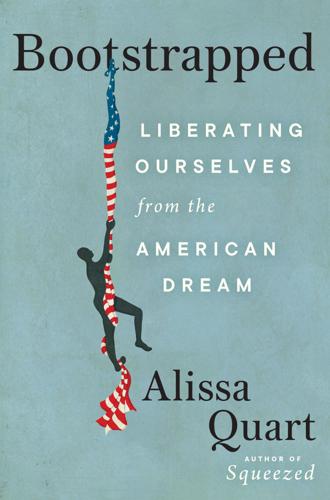
Bootstrapped: Liberating Ourselves From the American Dream
by
Alissa Quart
Published 14 Mar 2023
As Adrian Daub wrote scathingly of her allure, “Who is teaching them [bro-grammers] that when they press a button on their keyboard, millions, or even billions, of people can be affected, sometimes in terrifying ways? Is Ayn Rand their only guiding light?” All that Rand was missing was a black turtleneck and a clean interface. One suggestion for why the tech masters of the universe who like things like 3D-printed hotels buy into Rand’s rendition of bootstrapping is that she offers “an understanding of self-reliance that doesn’t really stand up to scrutiny once you’ve had to, you know, actually self-rely,” as Daub snipes at Rand in his book What Tech Calls Thinking. Daub believes that Silicon Valley’s preoccupation with prodigy and young entrepreneurs—a veritable fountainhead of youth—also chimes with Rand’s ideas.

Vassal State
by
Angus Hanton
Published 25 Mar 2024
In May 2020, the government’s buying department awarded this company a contract for £2 billion to manage the military’s catering, building works, logistics, housing and training for the next four years.22 The US government even produces analysis to help its companies to identify British takeover targets: its International Trade Administration recognises the UK’s aerospace industry as ‘the crown jewel for UK exports and… 90% of domestic aerospace production is exported’.23 In the 2019–22 period, American companies have taken over three of the largest six UK companies in the sector: Cobham (£4 billion), Meggitt (£6 billion) and Ultra (£2.6 billion). These UK companies were leaders in the emerging technologies of drones, 3D printing and space technology, which demonstrates how US executives think: they concentrate systematically on sectors that will see the greatest growth in coming years. An old adage states that ‘when California sneezes America catches a cold, and when America sneezes the world catches a cold’, but it could also be said that world consumer and industrial demand is led by the US, and within the US it is led by California.

The Impulse Society: America in the Age of Instant Gratification
by
Paul Roberts
Published 1 Sep 2014
Car companies make financing so easy that even consumers defaulting on their home mortgages can afford a brand-new pickup.‡ Smartphone apps let you scan desirable objects anywhere you find them (on the train, in a friend’s apartment, in a picture in a magazine) and have one delivered to your home.13 And to judge by the accelerating advances in consumer technologies (3D printing machines that can transmit products in real time; wearable smartphones; robots so lifelike they can serve as sex workers) the future will be only more challenging for a brain programmed to look through the wrong end of the telescope. We are fast approaching a tipping point in the already problematic relationship between the self and the marketplace—between an economy programmed to issue ever-larger increments of consumer capability and a consumer who is, to some degree, neurologically predisposed to abuse those capabilities.

Don't Trust, Don't Fear, Don't Beg: The Extraordinary Story of the Arctic 30
by
Ben Stewart
Published 4 May 2015
Anthony is thirty-two years old, a tree surgeon and director of a renewable energy company. Back home in Newport, he would tell people he was attacking climate change ‘in the same way Wile E. Coyote tries to catch The Road Runner’. Before sailing for the Arctic he was working on developing a wood gasifier to run his forestry truck off a charcoal kiln, and a 3D-printed river turbine to generate remote electricity. He’s also a talented artist and loses hours sketching the view through the window. Oleg asks Anthony to draw something for him. He wants a giant bumblebee carrying a message. And Anthony says, ‘Yeah, sure, okay.’ He sits down and makes the sketch, and when Oleg sees it his face lights up.
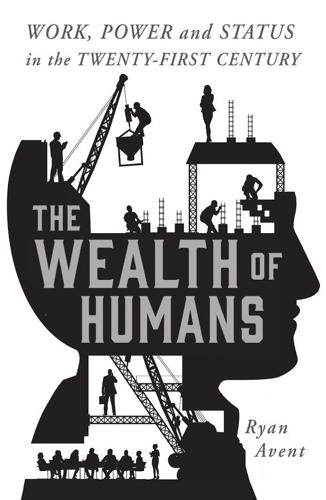
The Wealth of Humans: Work, Power, and Status in the Twenty-First Century
by
Ryan Avent
Published 20 Sep 2016
The future of the work is either one in which employment grows while pay stagnates, or in which the work becomes more productive – because much more solar energy is generated at solar-energy plants where the energy output per person is much higher – and employment stagnates. There could be other, similar opportunities in different fields. Michael Mandel, chief economic strategist at the Progressive Policy Institute, invites those sceptical of the job-creating power of new technology to imagine a world in which doctors can 3D-print new organs. In that future, humans would spend lots of time swapping out worn out livers, say, for new ones, and would need basic nursing care at every operation. Mandel might be right, but that vision of future work relies on a very specific version of biomedical advance; innovations that grow the organ on the inside of the body or repair existing organs non-surgically might, alternatively, dramatically reduce the need for medical care.6 Indeed, while fields such as education and healthcare have long been held out as the great hope for future employment growth, that hope is built on an assumption that productivity in those industries will remain low.
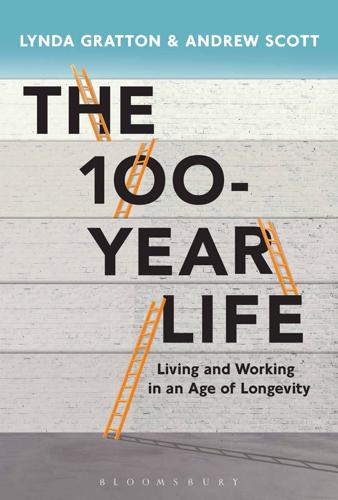
The 100-Year Life: Living and Working in an Age of Longevity
by
Lynda Gratton
and
Andrew Scott
Published 1 Jun 2016
There are those who view these types of firm as the dinosaurs of the organizational age and predict that they will succumb to the nimble-footed, smaller companies emerging around them. There are some signals that this could be true. Technology is making it easy for workers to coordinate among themselves and small-scale organizations have a flexibility that large firms find hard to achieve. With further developments of technology, such as the rise of 3D printing, the argument is that many of the scale advantages of large firms will disappear. At the time of writing, we see no evidence of this. Large companies such as Unilever or PepsiCo have scaling and mobilizing capabilities that enable them to deliver their products into almost every corner of the world and we believe this will remain the case.
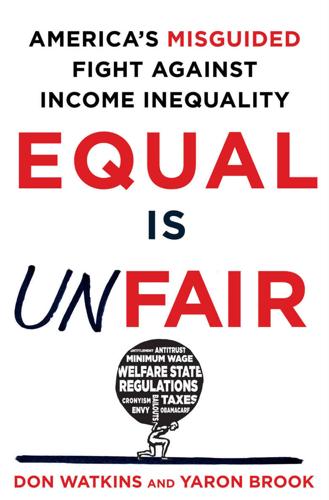
Equal Is Unfair: America's Misguided Fight Against Income Inequality
by
Don Watkins
and
Yaron Brook
Published 28 Mar 2016
If you are motivated in Silicon Valley, [then] you can make it, period.”35 What matters in the Valley is not where you were born or where (or even whether) you went to college. What matters is your ability. Talent is the currency of Silicon Valley, and individuals there use their talent to move us forward, pioneering revolutionary achievements in social media, big data, personalized health care, biotechnology, smartphones, mobile commerce, cloud technology, and 3D printing, to name just a few. Silicon Valley is the place creators like Elon Musk, Steve Jobs, and Peter Thiel go to make a fortune by inventing the future. What made it all possible? No doubt there are many forces at work, but one enormous factor is the extent to which the government has kept its hands off the Valley.
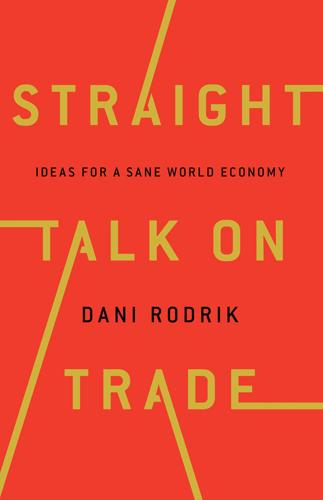
Straight Talk on Trade: Ideas for a Sane World Economy
by
Dani Rodrik
Published 8 Oct 2017
Private investment in modern industries, especially nonresource tradables, has not increased and remains too low to sustain structural transformation. The rapid digitization and automation of many traditionally labor-intensive industries will make it even harder for Africa to make its mark in manufacturing. Once shoes can be produced cheaply with 3D printing technologies, the winners will be countries like Germany, not Ethiopia. As in all developing countries, farmers in Africa are flocking to the cities. But, as a study from the Groningen Growth and Development Center shows, rural migrants do not end up in modern manufacturing industries, as they did in East Asia, but in services such as retail trade and distribution.2 Though such services have higher productivity than much of agriculture, they are not technologically dynamic in Africa and have been falling behind the world frontier.
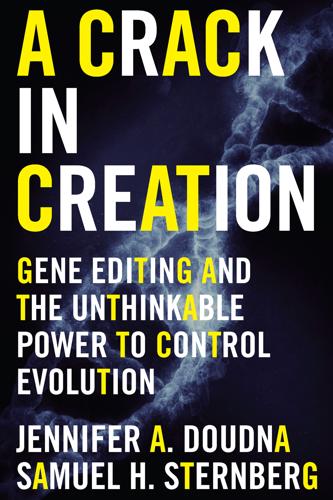
A Crack in Creation: Gene Editing and the Unthinkable Power to Control Evolution
by
Jennifer A. Doudna
and
Samuel H. Sternberg
Published 15 Mar 2017
In the spring of 2014, my son Andrew’s sixth-grade science teacher asked me to visit the classroom and explain CRISPR to the students. I was honored to be invited but also quite nervous: How would I describe gene editing to a group of kids who had only a basic knowledge of DNA? I decided to bring along a 3D-printed model of the Cas9 protein and its guide RNA attached to DNA. This model had become a centerpiece in my office, its electric-orange RNA and brilliant blue DNA entwined with the snow-white protein in a football-size unit held together by magnets. The underlying molecular details might be a bit much for the kids, I thought; I figured I’d just pass around the football so they could look at it up close.
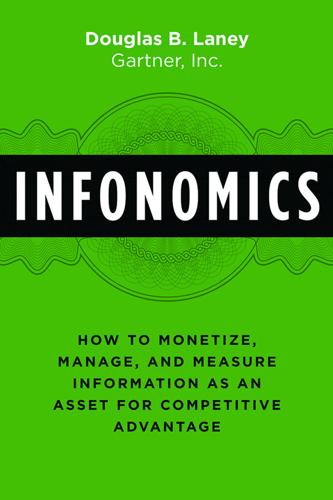
Infonomics: How to Monetize, Manage, and Measure Information as an Asset for Competitive Advantage
by
Douglas B. Laney
Published 4 Sep 2017
The rise of the machines, algorithmic sprawl, and the promise of artificial intelligence (AI) depend upon accurate, complete, timely, granular, and unique information sources. The internet of things (IoT) will become the single fastest growing source and most voracious consumer of information. Digital twins that precisely represent models of physical things and their state rely on a variety of metadata, along with condition and event information. 3D printing is entirely contingent upon information-based representations of objects, and their ability to be monetized and managed effectively. The institutionalization of ethics in the face of commercialized and politicized misinformation will require the generation and management of new information sources to emerge with built-in trust indicators.
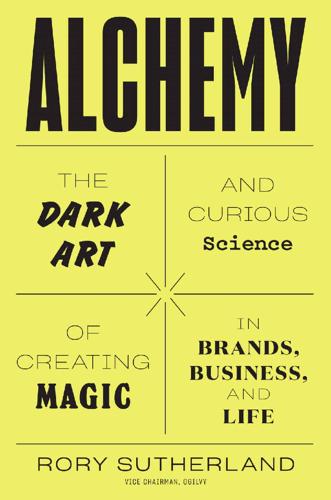
Alchemy: The Dark Art and Curious Science of Creating Magic in Brands, Business, and Life
by
Rory Sutherland
Published 6 May 2019
The result of this is that the pursuit of narrow economic rationalism will produce a world rich in goods, but deficient in meaning. In architecture this has produced modernism, a style with a marked absence of decoration or ‘spurious’ detail, and a corresponding loss of ‘meaning’.* My secret hope is that, with the 3D-printing of buildings becoming possible, a certain Gaudí-ness may reappear in twenty-first-century buildings.* 3.6: Creativity as Costly Signalling If you can’t afford to pour money into the paper or the printing of your wedding invitation, you can use another scarce commodity that I’ll call ‘creativity’, although it encompasses a variety of talents: design, artistry, craftsmanship, beauty, photographic talent, humour, musicality or even mischievous bravery.
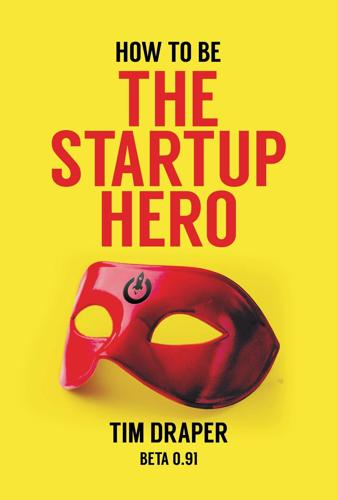
How to Be the Startup Hero: A Guide and Textbook for Entrepreneurs and Aspiring Entrepreneurs
by
Tim Draper
Published 18 Dec 2017
This can now be possible with the new Title III of the JOBS act, which allows individual investors to invest in private companies with some limitations. Reimagine retail. What will shopping look like? Will products on display be virtual? Will it be more experiential and less targeted shopping? Will people just point at items, click and have them delivered or 3D printed to their house? Reimagine boating with an electric boat that runs off energy from the ocean. Imagine new uses for Bitcoin or blockchain. You can now raise money for a token through an ICO. Dig in and decide if your vision includes a new token or coin. Create a trading platform for private stocks.
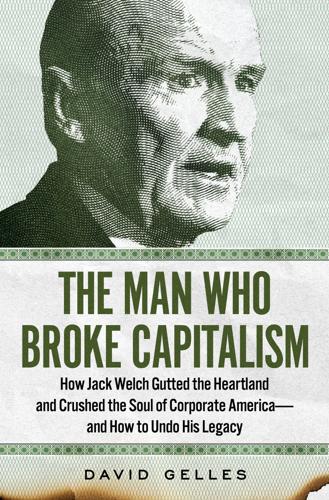
The Man Who Broke Capitalism: How Jack Welch Gutted the Heartland and Crushed the Soul of Corporate America—and How to Undo His Legacy
by
David Gelles
Published 30 May 2022
When he asked the business leaders of different units what the purpose of the company was, he said, their answer was always about delivering for shareholders. “When you tried to get anything done, you would feel the imprint of Welch,” he said. “The impact that man left was profoundly deep.” For years, Dignan burrowed into GE, encouraging Immelt to pursue 3D printing, self-driving cars, anything that might give the company relevance in the years ahead. Dignan kept telling Immelt and the board what any student of business understands: there would be up-front costs, but that if the investments paid off, the rewards could be enormous. “This is going to hurt before it gets better,” he would tell them.
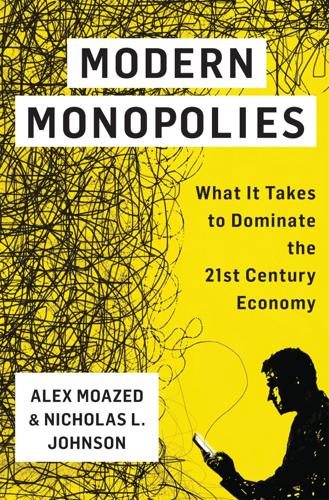
Modern Monopolies: What It Takes to Dominate the 21st Century Economy
by
Alex Moazed
and
Nicholas L. Johnson
Published 30 May 2016
Companies could coordinate the usage of employees and materials to create products and services more efficiently than the market could. In certain industries, such as the production of heavy machinery, these assumptions still hold true (though this could change quickly with the consumerization of new technologies, such as three-dimensional, or 3D, printing). But in many industries today, the most important resources often are not the ones that reside within any one organization but rather those that exist outside of it. In this new environment, Henderson’s and Porter’s theories no longer apply. The aggregator and creator of business value is no longer a company’s supply chain or value chain but rather a network’s ecosystem.

Code Dependent: Living in the Shadow of AI
by
Madhumita Murgia
Published 20 Mar 2024
But AI is simultaneously affecting other, significant areas of our society: healthcare, policing, public welfare and military warfare, creating rippling consequences and lasting social change. It is altering the very experience of being human. That’s what this book is about. * My job at Wired magazine served to turn me into an inveterate techno-optimist. When writing daily about DNA editing, flying cars, 3D-printed Moon bases and brain–machine interfaces, it is impossible not to be amazed by the ingenuity of humanity and our high-tech creations. I was also captivated by the innovators themselves: mad-cap inventors, brash entrepreneurs and irrational dreamers. So, when I began researching this book, I expected to uncover stories of how artificial intelligence had solved gnarly problems, taken on insurmountable challenges and dramatically improved people’s lives.

The Rationalist's Guide to the Galaxy: Superintelligent AI and the Geeks Who Are Trying to Save Humanity's Future
by
Tom Chivers
Published 12 Jun 2019
Chapter 16 Dreamed of in your philosophy Toby Walsh, the University of New South Wales professor of AI whom I spoke to, is extremely worried about AI safety. But he thinks that the paperclip maximiser scenario is the wrong thing to be concerned about. ‘The scenario that I wrestle with,’ he told me, ‘is 3D-printed drones. You could fill a couple of trucks with these, ride them into New York City and say, “Kill every white person who’s here.” That could be their code.’ This is not – quite – possible with real-world technology right now, he says, but it probably will be in only a few years’ time. Autonomous weapons are weapons of mass destruction, he says, and should be outlawed like atomic, biological and chemical weapons are, by international treaties; he has led efforts to lobby the UN to issue a ban.
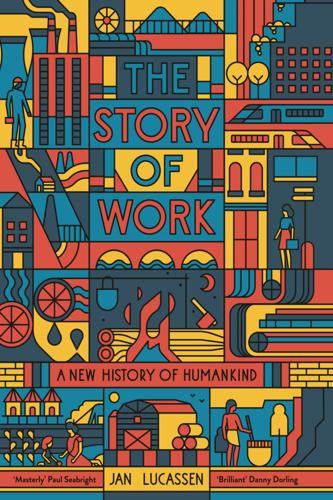
The Story of Work: A New History of Humankind
by
Jan Lucassen
Published 26 Jul 2021
And let us not forget the application of all these innovations in healthcare. Finally, there is mechanical engineering, which automated human actions. The last big step in automation, of course, is the digital revolution of recent decades, with the latest application being nanotechnology and, so essential for industry, the possibilities of 3D printing, if only because of the changes this will bring about in the transport system. It started in England and conquered the world Why did the Industrial Revolution initially take place on one continent and why was one country, Great Britain, the first to make the transition from the labour-intensive to the capital-intensive path?
…
Just as the petrol and electric engine had stimulated small industrial businesses in the early twentieth century, so did the computer a hundred years later, albeit mainly in the service sector. In part, this swapped one form of self-employment with another whereby the small retail business was replaced by internet shopping. The development of 3D printing seems to herald yet another phase. The reduction in the share of domestic work The position of the working woman in this period was fundamentally changed by a number of developments in medical science. Until the mid-nineteenth century, aside from some privileged areas in the North Atlantic, and much later in the rest of the world, women had many children, most of whom died in infancy.

Brexit, No Exit: Why in the End Britain Won't Leave Europe
by
Denis MacShane
Published 14 Jul 2017
This means I can send any packet or were I a businessman despatch any lorry from London to Lublin in Poland or Lamia in Greece on the same basis as if I were posting a packet or despatching a lorry to Liverpool. Outside the Customs Union I would lose these rights. Every British business would have to fill in numerous customs forms every time a good or service was sent for sale to Europe. British manufacturers of, say, high-tech 3D printing equipment can take their products to any trade fair from Finland to Bulgaria in the boot of their car as if still in the UK. If they go to Switzerland, they have to show they have the appropriate papers to bring in their products. A customs union works by its members abolishing all control of goods and services crossing their frontiers, but in exchange there are common duties or tariffs agreed by the members of the customs union on goods coming into the countries within the customs union.

The End of Ownership: Personal Property in the Digital Economy
by
Aaron Perzanowski
and
Jason Schultz
Published 4 Nov 2016
If greater IP protection comes at the cost of personal property rights, a licensing-only strategy may well backfire. Today, most commercially valuable copyrighted works are available for free somewhere online, with or without the copyright holder’s permission. The challenge facing copyright law—and with the introduction of 3D printing, soon patent law too—is figuring out how to convince the public to pay for things it can get for free. One way the law does that is through the stick of infringement liability. And that stick is a big one. The Copyright Act allows for damages of up to $150,000 for unlawfully downloading a single song.28 But copyright holders, despite their best efforts, cannot locate and sue each and every downloader on the Pirate Bay.29 And the probability of a lawsuit is too low to deter many of them.

The Corruption of Capitalism: Why Rentiers Thrive and Work Does Not Pay
by
Guy Standing
Published 13 Jul 2016
But what they see as adaptation, US multinationals view as a ‘blueprint for technology theft on a scale the world has never seen before’.22 Yet Chinese firms are increasingly innovative in their own right.23 While the biggest patenting areas are in alkaloid/plant extracts and pharmaceuticals (much linked to traditional medicines), China ranks with the USA and Japan in digital computing, processing and communication sectors.24 And since 2005 it has accounted for over a quarter of worldwide patents in the areas of 3D printing and robotics, more than any other country.25 In nanotechnology, Chinese applicants make up nearly 15 per cent of filings worldwide, putting China third after the USA and Japan. Many of these come from Chinese universities and public research organisations. As in the United States, the Chinese heavily subsidise the research and development that leads to patentable inventions and innovation, while leaving the income gained from patents in private hands
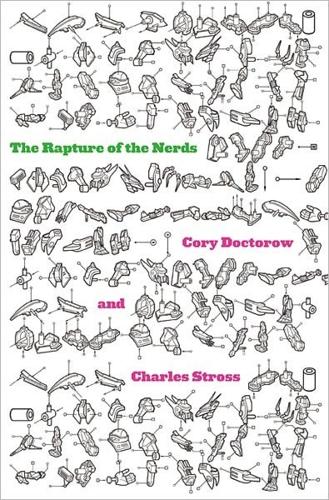
The Rapture of the Nerds
by
Cory Doctorow
and
Charles Stross
Published 3 Sep 2012
He's a fellow of the Electronic Frontier Foundation, a World Economic Forum Young Global Leader, and co-founded the UK-based Open Rights Group. In 2012, he was awarded an honorary doctorate in computer science from the Open University. Born in Canada, he now lives in London, England with his wife Alice, who runs a 3D printed toy company called MakieLab; and his daughter Poesy, who is learning to pick locks. Charles Stross, 47, is a full-time science fiction writer and resident of Edinburgh, Scotland. The author of six Hugo-nominated novels and winner of the 2005 and 2010 Hugo awards for best novella ("The Concrete Jungle" and "Palimpsest"), Stross's works have been translated into over twelve languages.
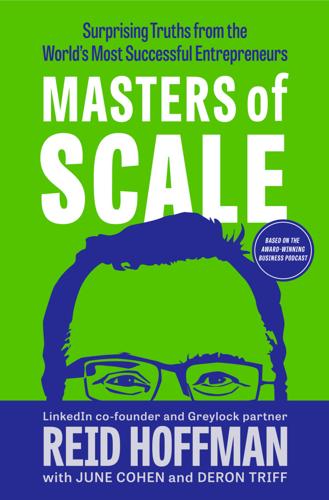
Masters of Scale: Surprising Truths From the World's Most Successful Entrepreneurs
by
Reid Hoffman
,
June Cohen
and
Deron Triff
Published 14 Oct 2021
They would come out Tuesdays and Thursdays, so the team had the information they need to make informed decisions and so they know what’s going on—because, especially not being in the office, you lose all the hallway chatter. You lose all of these informal modes of communication, and you need to supplement that with a lot more structured and formal communication.” Ellen Kullman, former CEO of DuPont (which has navigated its share of crises through the years) and now CEO of the 3D printing startup Carbon, points to the need to “create your own trajectory” during a crisis. Most leaders already have a planned trajectory for their business—but the problem is, a crisis will overturn the old plan, forcing you to pivot to Plan B, then perhaps Plan C or D. As that happens, “you really have to write your own story.
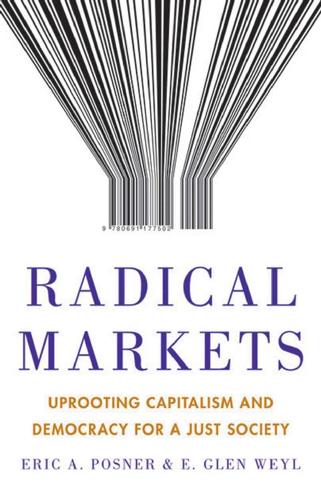
Radical Markets: Uprooting Capitalism and Democracy for a Just Society
by
Eric Posner
and
E. Weyl
Published 14 May 2018
They contrast the sweeping social changes created by electrification to the incremental entertainment supplied by smartphones; the enormous advances in human longevity produced by sanitation and antibiotics to the still-unrealized promise of stem cell research; and the fundamental change in production technology created by the assembly line to the limited impact thus far of 3D printing. Thus, while they are pessimistic about growth, they are much less concerned than techno-optimists about job displacement and changes in the labor market. Much of this debate concerns technical feasibility and creative breakthroughs by scientists and engineers about which we have little to say.
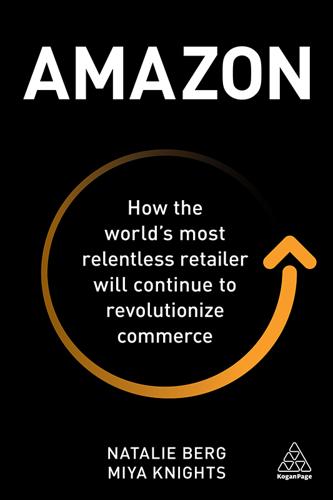
Amazon: How the World’s Most Relentless Retailer Will Continue to Revolutionize Commerce
by
Natalie Berg
and
Miya Knights
Published 28 Jan 2019
Another, slightly more leftfield innovation is the patent Amazon filed in 2015 for delivery trucks equipped with 3D printers that would enable them to manufacture products on the way to the customer destination.23 It filed a further 3D patent in 2018, covering the eventuality of cutting the manufacturer out of the equation altogether by taking custom orders for 3D-printed items to get them made and have them delivered to or collected by the customer.24 Fulfilment by Amazon If Amazon really is looking to cut the middleman out of the fulfilment process and take end-to-end control of its supply chain, it is impossible to view any moves to expand its global logistics footprint as anything other than an extension of its ‘Fulfilment by Amazon’ service, which stores, picks, packs and ships products and handles returns sold by third-party merchants on the Amazon.com marketplace, and also includes Amazon Pay.
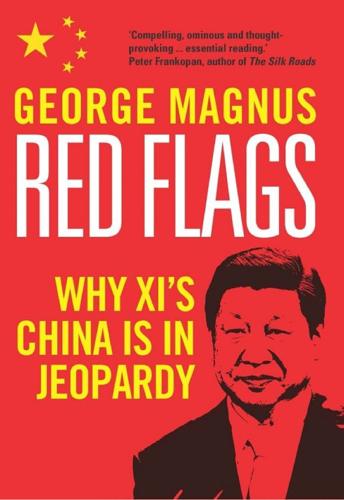
Red Flags: Why Xi's China Is in Jeopardy
by
George Magnus
Published 10 Sep 2018
It is hoping to make an even bigger splash with the C929 long-haul aircraft, which it is building together with Russia, and which is scheduled to make its first flight between 2025 and 2028. Nevertheless, it is still expected that foreign companies will be required to supply key and complex parts of the jet. China is increasingly looking further up the value chain of technology nowadays, including AI, big data and robotics, 3D-printing and nanotechnology, alternative energy and driverless vehicles, biotechnology and biomedicine, and aerospace. It aims to have a nation-wide 5G network by 2020, and is also pursuing its own space programme, which has included the launch of manned missions, cargo spacecraft, space stations, and a number of satellites and measuring and observation systems.
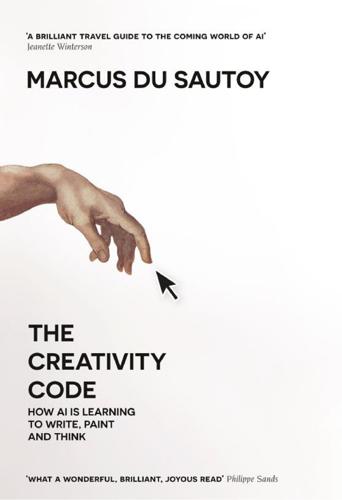
The Creativity Code: How AI Is Learning to Write, Paint and Think
by
Marcus Du Sautoy
Published 7 Mar 2019
But what distinguishes artists from Goya to de Kooning is as much the way the paint is applied to the canvas as the image it produces. Certainly the way Rembrandt layers his paint is a key feature of his late output. But the team realised that modern 3D printers would give them a chance to analyse and sculpt the contours that are characteristic of Rembrandt’s canvases. The final 3D printed painting consists of more than 148 million pixels, made from thirteen layers of paint-based UV ink. Bas Korsten, one of the creative partners working on the project, admitted that while the idea was ingenious in its simplicity its execution was anything but. ‘It was a journey of trial and error.

Freezing Order: A True Story of Money Laundering, Murder, and Surviving Vladimir Putin's Wrath
by
Bill Browder
Published 11 Apr 2022
Eva asked, startled by this breaking news. “I just got the headline. But I can’t not mention that on this show right now.” The interview ended a few minutes later. I was still desperate to leave but felt I couldn’t, so I took my seat next to the prime minister and, for the next 20 minutes, endured lighthearted segments on 3D printing and some Dutch hip-hop group. As soon as the show ended, I rushed outside and hailed a cab back to my hotel. As the taxi wound through the streets of Amsterdam, Elena Servettaz texted again. “I spoke to Vladimir KM. He’s there next to Boris… he’s destroyed.” She was referring to Vladimir Kara-Murza, Boris’s 33-year-old protégé who, like him, had been standing up to Putin in Russia and advocating for Magnitsky Acts around the world.
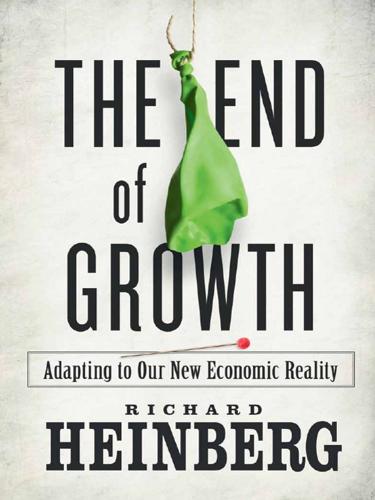
The End of Growth: Adapting to Our New Economic Reality
by
Richard Heinberg
Published 1 Jun 2011
And, despite widespread belief of the opposite, we cannot be certain that there are enough new products or technologies left to be developed for companies to be able to make use of the resources that are going to be freed from existing industries.35 For the skeptical reader such sweeping statements bring to mind the reputed pronouncement by IBM former president Tom Watson in 1943, “I think there is a world market for maybe five computers.” Fortunes continue to be made from new products and business ideas like the iPad, Facebook, 3D television, BluRay DVD, cloud computing, biotech, and nanotech; soon we’ll have computer-controlled 3D printing. However, Larsson would argue that these are in most cases essentially extensions of existing products and processes. He explicitly cautions that he is not saying that further improvements in technology and business are no longer possible — rather that, taken together, they will tend to yield diminishing returns for the economy as a whole as compared to innovations and improvements years or decades ago.
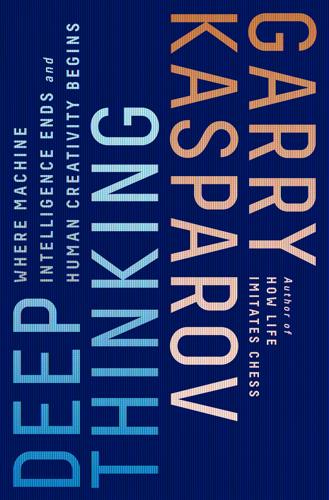
Deep Thinking: Where Machine Intelligence Ends and Human Creativity Begins
by
Garry Kasparov
Published 1 May 2017
Perhaps you will experience a similar feeling the first time you ride in a driverless car, or the first time your new computer boss issues an order at work. We must face these fears in order to get the most out of our technology and to get the most out of ourselves. Many of the most promising jobs today didn’t even exist twenty years ago, a trend that will continue and accelerate. Mobile app designer, 3D print engineer, drone pilot, social media manager, genetic counselor—to name just a few of the careers that have appeared in recent years. And while experts will always be in demand, more intelligent machines are continually lowering the bar to creating with new technology. This means less training and retraining for those whose jobs are taken by robots, a virtuous cycle of freeing us from routine work and empowering us to use new technology productively.

The Industries of the Future
by
Alec Ross
Published 2 Feb 2016
Ken Goldberg’s research team is working on treating cancer with robots that could be temporarily inserted into the human body to release radiation. Instead of radiation from an external source, which damages healthy living tissues along with cancer, these robots release a radio beam inside the body that emits radiation into cancer cells with pinpoint accuracy. Using 3D printing, a medical engineer can even create a customized implant that can travel through a patient’s body to fit perfectly where it’s needed. Despite the promise of robot-assisted surgery, it is important not to jump to techno-utopianism. Allegations of unreported injuries from robotic surgery are troublingly common.
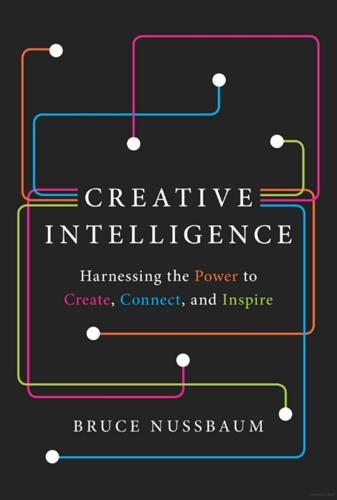
Creative Intelligence: Harnessing the Power to Create, Connect, and Inspire
by
Bruce Nussbaum
Published 5 Mar 2013
161 Christine Furstoss, Technical Director: personal interviews with Christine Furstoss and Beth Comstock, spring 2012; http://ge.geglobalresearch.com/about/ technology-directors/christine-furstoss/, accessed September 8, 2012. 161 The company found that with: personal interviews with Christine Furstoss and Beth Comstock; http://www.3dprinter.net/3d-printing- make-ge-jet-engines- lighter-efficient, accessed September 8, 2012. 161 Typically these devices are made: personal interviews with GE’s Beth Comstock and Christine Furstoss. 161 Printing them is much easier: personal interviews with GE’s Beth Comstock and Christine Furstoss; David H. Freedman, “Layer by Layer,” Technology Review, January/February 2012, accessed September 8, 2012, http://www.technologyreview.com/ featuredstory/426391/layer-by-layer/. 161 The process begins with spreading: personal interviews with GE’s Beth Comstock and Christine Furstoss. 162 “We are seeing the convergence”: http://www.ge.com/audio_video/ge/ news_events/a_look_inside _ge_garages.html, accessed September 8, 2012. 162 Recently GE “printed” out: personal interviews with GE’s Beth Comstock and Christine Furstoss. 162 Two of Chrysler’s most popular: “Imported from Detroit” and “The Things We Make, Make Us,” http://www.youtube.com/watch?
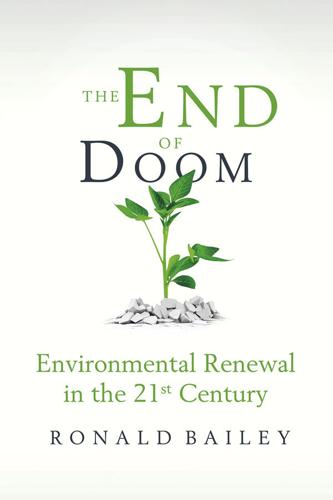
The End of Doom: Environmental Renewal in the Twenty-First Century
by
Ronald Bailey
Published 20 Jul 2015
cultured meat: Avy Roy, “Why Meat Grown in Labs Is the Next Logical Step for Food Production.” Next Nature, June 28, 2013. www.nextnature.net/2013/08/meat-grown-in-labs-is-the-next-logical-step-for-food-production/. “building a progressive food system”: New Harvest, www.new-harvest.org/. “is likely to play a significant role”: Banning Garrett, “3D Printing: New Economic Paradigms and Strategic Shifts.” Global Policy 4.1 (February 2014): 70–75. onlinelibrary.wiley.com/doi/10.1111/1758-5899.12119/full. “Additive manufacturing”: Advanced Manufacturing Office, “Additive Manufacturing: Pursuing the Promise.” US Department of Energy, August 2012. “Sustainable development”: Gro Harlem Brundtland, Our Common Future: Report of the World Commission on Environment and Development, 1987. www.un-documents.net/our-common-future.pdf.

B Is for Bauhaus, Y Is for YouTube: Designing the Modern World From a to Z
by
Deyan Sudjic
Published 17 Feb 2015
And it is the changing idea of the relationship between perfection and imperfection that will define it. Philippe Starck is not a designer that the contemporary generation of design students shows much interest in. They look at Apple’s Jonathan Ive, or the more radical approach of open-source design. Hacking, additive manufacturing, as 3D printing is now called, and critical design make Starck look dated, if not irrelevant. For all his blithe claims to have been motivated by ecology long before green became fashionable, and still is, now that it is not, he is identified, if he is identified at all, with that moment in the 1980s when the cult of the designer celebrity was born.

Human Compatible: Artificial Intelligence and the Problem of Control
by
Stuart Russell
Published 7 Oct 2019
There are dozens of grasp types just for rigid objects and there are thousands of distinct manipulation skills, such as shaking exactly two pills out of a bottle, peeling the label off a jam jar, spreading hard butter on soft bread, or lifting one strand of spaghetti from the pot with a fork to see if it’s ready. It seems likely that the tactile sensing and hand construction problems will be solved by 3D printing, which is already being used by Boston Dynamics for some of the more complex parts of their Atlas humanoid robot. Robot manipulation skills are advancing rapidly, thanks in part to deep reinforcement learning.20 The final push—putting all this together into something that begins to approximate the awesome physical skills of movie robots—is likely to come from the rather unromantic warehouse industry.

Parkland: Birth of a Movement
by
Dave Cullen
Published 12 Feb 2019
“I am in awe of these children, whose powerful message is amplified by their youthful energy and an unshakable belief that children can—no, must—improve their own futures. They are true change makers who have demonstrated most powerfully that children can move the world.” Tío Manny introduced the kids, standing beside a 3D-printed statue of Guac holding a sunflower. “Joaquin Oliver is officially a member of March for Our Lives,” he said. It was the fifteenth anniversary of the KidsRights Foundation, the organization that bestowed the award, so they brought most of the prior winners to Cape Town for the celebration. Jackie said the highlight for her was meeting the 2017 winner: “A Syrian refugee that made his own school in Lebanon.
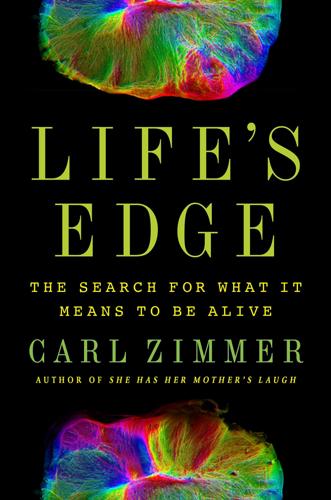
Life's Edge: The Search for What It Means to Be Alive
by
Carl Zimmer
Published 9 Mar 2021
Journal of Theoretical Biology 486:110089. Paleos, Constantinos M. 2015. “A Decisive Step Toward the Origin of Life.” Trends in Biochemical Sciences 40:487–88. Parrilla-Gutierrez, Juan M., Soichiro Tsuda, Jonathan Grizou, James Taylor, Alon Henson, and Leroy Cronin. 2017. “Adaptive Artificial Evolution of Droplet Protocells in a 3D-Printed Fluidic Chemorobotic Platform with Configurable Environments.” Nature Communications 8. doi:10.1038/s41467-017-01161-8. Peabody, C. A. 1882. “Marriage and Its Duties.” Daily Journal (Montpelier, VT), November 8, p. 4. Peattie, Donald C. 1950. A Natural History of Trees of Eastern and Central North America.
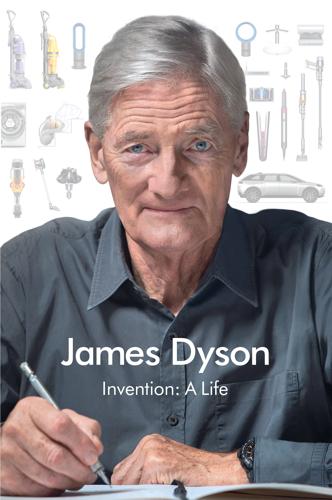
Invention: A Life
by
James Dyson
Published 6 Sep 2021
This is a carbon-neutral and biodegradable alternative to petroleum-based plastics. The idea of being able to grow organic plastic on farms sounds exciting. These, though, are early days. While PLA is used to make an increasing number of what are known as commodity plastics for food containers, packaging, and even tea bags as well as for 3D printing, it is not suitable for engineering plastics used in the manufacture of, for example, vacuum cleaners and hair dryers. We have many reasons for optimism. Equally, I have reservations about some of the things we’re doing now, like whether the production of energy trumps the production of food. How much of our energy and investment, for example, should go into the production of electricity?
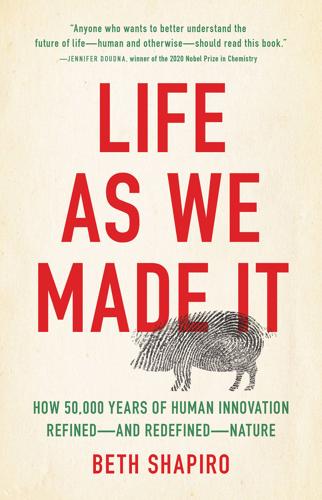
Life as We Made It: How 50,000 Years of Human Innovation Refined--And Redefined--Nature
by
Beth Shapiro
Published 15 Dec 2021
Lieberman (2014) explores pre-hominin evolution and in particular the evolution of bipedalism. Antón et al. (2014) explore the interaction between aridity in Africa and diversification of early Homo. Hublin et al. (2017) describe the 315,000-year-old modern human fossils from Jebel Irhoud, Morocco. The first description of Homo naledi is in Berger et al. (2015). Instructions for 3D printing H. naledi elements are on the MorphoSource (https://morphosource.org) Rising Star Project portal. Although the archaeological record includes some signs of a sudden shift in human behavior (see Mellars 2006 for a summary), most paleoanthropologists believe that human behavioral evolution was a slow and complex process (McBrearty and Brooks 2000).
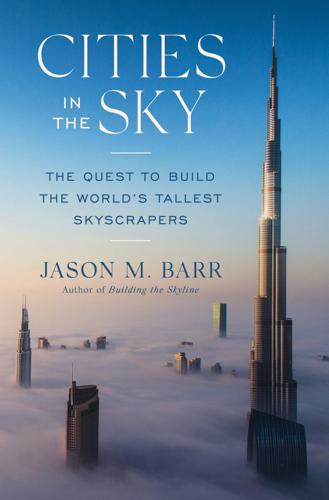
Cities in the Sky: The Quest to Build the World's Tallest Skyscrapers
by
Jason M. Barr
Published 13 May 2024
Whereas Fazlur Khan and the engineers of his generation relied on punch cards and mainframes, today architects and engineers have a vast arsenal of computing power and software that offers a Harry Potter’s wand for creating new designs. The design software is linked to the engineering software, which can be linked to manufacturing software at the foundries. We are not quite at the stage of the AI-designed-3D-printed skyscraper, but perhaps someday. Then there’s the wind—arguably the biggest challenge to creating usable tall buildings. Besides a concrete core, most supertalls have one of several standard structural elements to help provide wind bracing. The most common structural “add-on” is the outrigger.
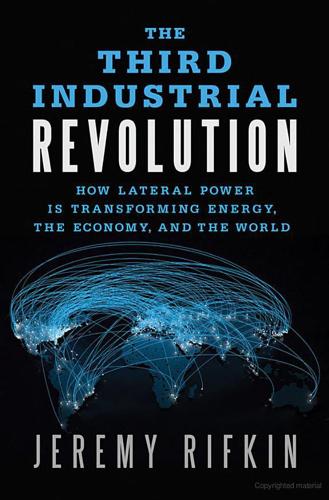
The Third Industrial Revolution: How Lateral Power Is Transforming Energy, the Economy, and the World
by
Jeremy Rifkin
Published 27 Sep 2011
Retrieved from http://www.nytimes.com/2010/11/14/opinion/14rich.html?src=twrhp. 18.Wikipedia: Size Comparisons. (2011, March 31). Wikipedia. Retrieved from http:// en.wikipedia.org/wiki/Wikipedia:Size_comparisons. 19.Wikipedia.org Site Info. (n.d.). Alexa the Web Information Company. Retrieved from http://www.alexa.com/siteinfo/wikipedia.org. 20.3D printing: The Printed World [Editorial]. (2011, February 10). The Economist. Retrieved March 29, 2011, from http://www.economist.com/node/18114221?story_id=18114221. 21.Ibid. 22.Etsy Lets Artists Create a Living. (2008, July 1). Rare Bird, Inc. Retrieved from http://www.rarebirdinc.com/news/articles/etsy.html. 23.Botsman, R., & Rogers, R. (2010).

In Our Own Image: Savior or Destroyer? The History and Future of Artificial Intelligence
by
George Zarkadakis
Published 7 Mar 2016
Although the document was created digitally using a word processor it was transformed into an analogue original that was then digitised anew, transmitted digitally, and reproduced analogously at the other end. The resistance failed because it attempted to retain an old mindset into the new technology of digital communications. Fax was replaced by the email. The advent of 3D printing renders physical objects copies without an original, just like email. Our world is increasingly populated by Baudrillardian simulacra. However, ‘simulacra’ are not only ‘things’ but ideas as well; for example, the idea of ‘democracy’. 11To further understand the difference let me introduce two philosophical terms.
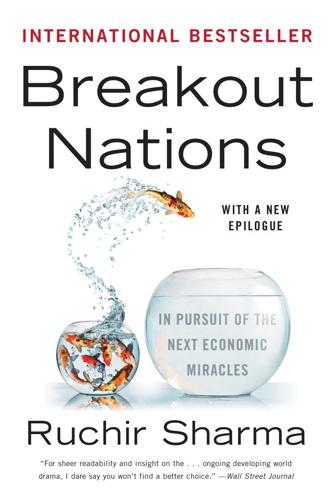
Breakout Nations: In Pursuit of the Next Economic Miracles
by
Ruchir Sharma
Published 8 Apr 2012
While venture capital still barely exists in big emerging markets, according to a 2011 research report by the brokerage firm CLSA, in the United States venture capital–backed companies accounted for 11 percent of U.S. private-sector jobs in 2010, up from less than 8 percent before the crisis of 2008. The larger point here is that technological innovation follows its own muse, at least partly impervious to recession. The ebb and flow of funding matters, but the busts of 2001 and 2008 have not stopped U.S. firms from continuing to push the innovation frontier in fields ranging from 3D printing to genomics. To a degree that is unmatched outside small nations such as Finland, the U.S. economy is built to innovate: there are whole industries dedicated to refining the next wrinkle in innovation—the latest are open innovation (basically using open-source software systems on the Linux model) and light innovation (optimizing the use of cheap new software sources like the Amazon cloud for business).
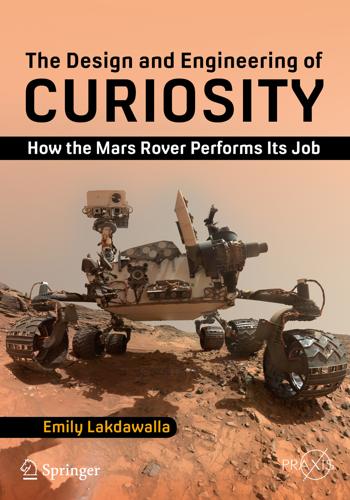
The Design and Engineering of Curiosity: How the Mars Rover Performs Its Job
by
Emily Lakdawalla
Published 5 Mar 2018
CHIMRA uses a combination of gravity and vibration to move sample around: the rover rotates the turret into a direction where the desired direction of sample motion is downward, and then uses its vibration mechanism to encourage the powder to move. CHIMRA’s labyrinthine interior is difficult to imagine even for the engineers who interact with it on a regular basis. Four 3D-printed models of CHIMRA located throughout mission operations enable engineers to twist and turn it and open and close its doors to simulate its movements physically. Figure 5.9. Parts of CHIMRA. Left Mastcam image 0032ML0000830000100870E01 of turret from initial checkout on sol 32. NASA/JPL-Caltech/MSSS/Emily Lakdawalla. 5.4.1 CHIMRA tour Engineers designed CHIMRA to avoid clogging.
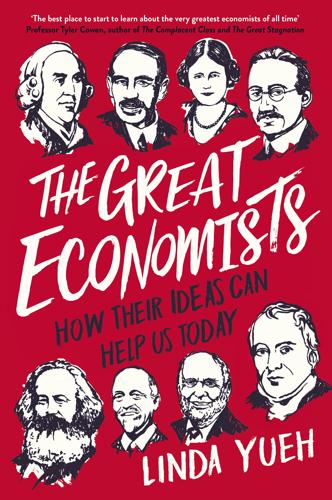
The Great Economists: How Their Ideas Can Help Us Today
by
Linda Yueh
Published 15 Mar 2018
Eastern Tennessee is where the atomic bomb was developed. Federal funding now fosters advanced industries, so those with a high proportion of R&D spending, and STEM (science, technology, engineering and mathematics) workers. For instance, the funding for Oak Ridge National Laboratory supports the development of 3D printing (also known as ‘additive manufacturing’). This automated process requires only human programming for just one robotic arm to produce the husk of a car, secreting layer upon layer of plastic. The associated manufacturers who supply the parts and distribute the products also benefit. The company working with Oak Ridge to create the plastics that make the car body strong enough to withstand road stress is a reminder that manufacturing is still based in factories, as is clear from the smell of melting plastic and the loud whirling of machines that accompany this high-tech process.
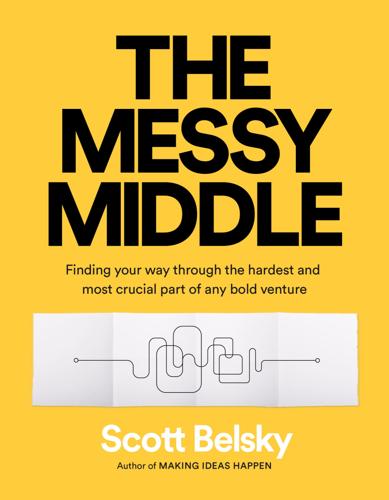
The Messy Middle: Finding Your Way Through the Hardest and Most Crucial Part of Any Bold Venture
by
Scott Belsky
Published 1 Oct 2018
During the most trying times, you may also struggle to remain composed and continue carrying the torch. While members of your team will express doubt and air their hopeless moments, you will need to keep the pace by keeping the faith. One of the entrepreneurs I have admired over the years is Kegan Schouwenburg. After some time working at Shapeways, a 3D printing company, Kegan set out to found her own business designing custom orthotics. Her company, SOLS, was on a rough ride: Kegan had to fire a cofounder, shift the business’s focus multiple times, and land subsequent rounds of funding at a time when it was hard to raise money for hardware start-ups. While her business was ultimately sold, which wasn’t the outcome she had hoped for, I was especially struck by her persistence and positivity along the way.
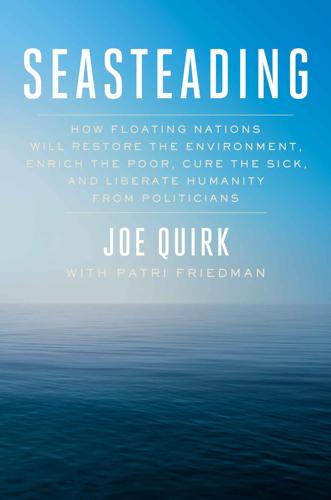
Seasteading: How Floating Nations Will Restore the Environment, Enrich the Poor, Cure the Sick, and Liberate Humanity From Politicians
by
Joe Quirk
and
Patri Friedman
Published 21 Mar 2017
A buoyant tube upholds a flexible hammock to support sand that protects vertical farms. Courtesy of Tyler Kreshover, USA. Metropolis 2055: Modular neighborhoods can detach and move to other seasteads or form new seasteads. These are the fluid mechanics of voluntary societies. Courtesy of Tyler Kreshover, USA. Seasteads 3D-printed on the ocean will not resemble skyscrapers rooted in bedrock. The City of Meriens follows the form and function of a manta ray. © Jacques Rougerie Architecte, France. THANK YOU Our story was enhanced greatly by extensive editing, feedback, and guidance from Bob Bender, Jim Levine, Michael Chorost, Randolph Hencken, Paul Aljets, Eelco Hoogendoorn, John Frederic Kosanke, Anupama Jain, Tim Potter, Max Borders, Matt Regusci, Tamim Ansary, John Bechtol, Erika Mailman, Julian le Roux, Heather Johnson, Josiah Tullis, Amanda Winther, Balaji S.

Life on the Rocks: Building a Future for Coral Reefs
by
Juli Berwald
Published 4 Apr 2022
If it hadn’t been for the snorkel in my mouth, I would have screamed, “Stop! Don’t break the coral!” Vincent handed the clump to me. I turned it around in my hands. It was the same color, same shape, had the same size branches, same puckers and knobs as Acropora. I felt the same disorientation I’ve felt holding a piece of 3D-printed plastic, something that looked like it should be heavier and harder, but was deceptively light and squishable, like rubber. I wasn’t holding a piece of coral at all, but a seaweed masquerading as a coral. Known as mimic algae (Eucheuma arnoldii), the species is edible and is harvested commercially for use as a food thickener and stabilizer.
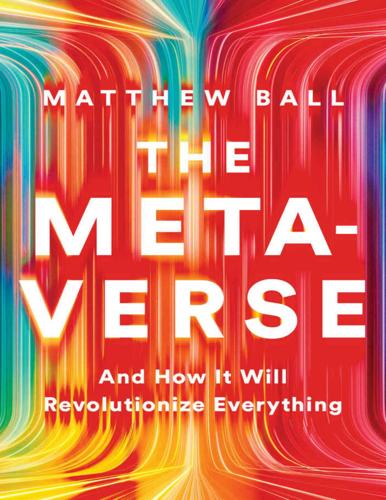
The Metaverse: And How It Will Revolutionize Everything
by
Matthew Ball
Published 18 Jul 2022
But eventually, and with the current internet, much of the Metaverse and its revenues will exist and occur out of sight from the average consumer. Consider, as an example, the 56-acre, 20-building, multi-billion-dollar redevelopment of Water Street in Tampa, Florida. As part of this project, Strategic Development Partners produced a 17-foot-diameter, 3D-printed, and modular scale model of the city, which was then supported by twelve 5K laser cameras that projected 25 million pixels atop this model, based on city data feeds for weather, traffic, population density, and more. All of this was run by an Unreal-based real-time rendered simulation that could be viewed through a touchscreen or VR headset.
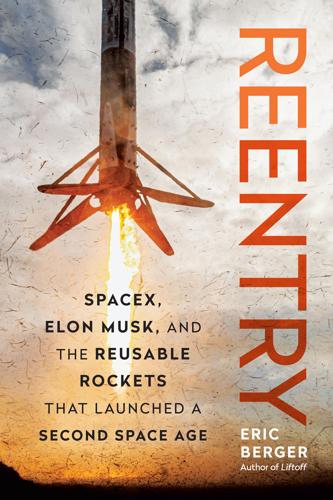
Reentry: SpaceX, Elon Musk, and the Reusable Rockets That Launched a Second Space Age
by
Eric Berger
Published 23 Sep 2024
For the suit’s gloves, which are often the most difficult component, Tenenbaum hired a mechanical engineer named Peter Homer who had independently won two NASA challenges for glove design. Homer’s gloves, initially designed for the fun of it, were made entirely of fabric for maximum dexterity even during pressurization of the suit. This basic design is flying today. SpaceX also pushed to additively manufacture the helmets and had to win over skeptics about the quality of 3D-printed material—some NASA engineers were not thrilled by the prospect of plastic protecting the heads of astronauts. But by printing the helmet, the contouring and sizing could be easily customized. In the end, Tenenbaum and his team whittled the price down to a small fraction of what David Clark had asked for.

When Computers Can Think: The Artificial Intelligence Singularity
by
Anthony Berglas
,
William Black
,
Samantha Thalind
,
Max Scratchmann
and
Michelle Estes
Published 28 Feb 2015
Permitted https://haveyoulostme.wordpress.com/tag/robot-butler/ The bright future We live at the dawn of a new age in which a stunning array of new technologies could transform the very essence of humanity. Unintelligent computers already control factory robots, automated milling machines and 3D printing. Over the next several decades computers will start to perform most of the menial day to day jobs that occupy much of humanity, from driving cars to building houses. There could indeed be intelligent household robots that look after our basic needs, eventually filling Jeeves’ key role as trusted advisory.
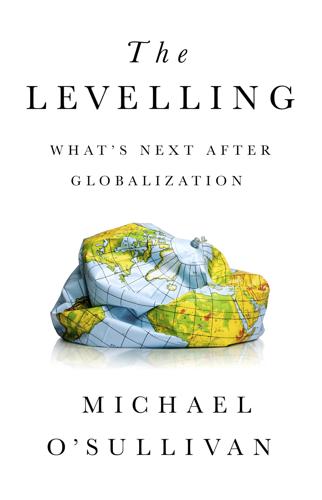
The Levelling: What’s Next After Globalization
by
Michael O’sullivan
Published 28 May 2019
In addition, the drop in productivity has led to some head scratching, especially in the context of a world that is apparently advancing technologically. One charitable view is that productivity is generally hard to measure and that its effects come with a lag—thus the impact of new approaches to and uses of technology such as social media, 3D printing, and robotics have not been reflected yet in the productivity numbers—and that even the way productivity is calculated needs to change to reflect these new approaches (e.g., to better incorporate the online economy).11 We might also argue that in order to really boost productivity, we need even more robots!

The Science of Hate: How Prejudice Becomes Hate and What We Can Do to Stop It
by
Matthew Williams
Published 23 Mar 2021
.† This may at first seem unfair considering the sometimes remarkable defence mechanisms available to other species (what human wouldn’t want to fly away to avoid a predator?) – but our brains are remarkable, even more so than the power of flight. Remarkable enough that we have been able to create artificial defence mechanisms that surpass those found in nature. Our brains are responsible for self-repairing armour, 3D-printed organs, life-prolonging drugs, earthquake warning systems – the list is long.‡ Only the human brain can develop such advanced technology to mitigate threats and contribute to the survival of our species. We have not always been able to rely on incredible feats of engineering and medicine. If we consider the whole period of the existence of our species, we’ve only had these enhanced forms of protection for a tiny amount of time.

The Job: The Future of Work in the Modern Era
by
Ellen Ruppel Shell
Published 22 Oct 2018
I got a look at New Lab, an eighty-four-thousand-square-foot “innovation hub,” its thickets of potted greenery punctuating rows of multi-hued workstations and workshops of every variety: CNC milling machines, metal and wood shops, an electronics lab for making circuits, a spray booth, laser cutters, and a 3D printing operation. Looped around an exposed steel beam very high overhead, a rusted crane hung like a vestigial memory of what the shipyard once was—and is planning to become once again. “Our vision is that New Lab will be a supportive and collaborative working environment for designers, engineers, and entrepreneurs—people trying to accomplish really hard things—not in Silicon Valley or at MIT but right here in Brooklyn,” Ehrenberg said.

Nomads: The Wanderers Who Shaped Our World
by
Anthony Sattin
Published 25 May 2022
It was the age when the British government authorised the creation of the first European settlement of Australia, bringing misery to Aborigines, the age in which ‘Asiatic’ Jones developed his theory that Sanskrit, Greek, Latin, Celtic and Persian had all ‘sprung from some common source’, which would be called Indo-European, originally a nomadic language. It was also the age of the Albion Flour Mill. For many people in London in 1786, the Albion mill represented modernity in the way that the Empire State Building would do in the mid-twentieth century and as a self-drive electric car, a biofuel plane or a 3D-printed object does today. At the time of its opening, the seven-storey mill on the Thames beside London’s Blackfriars Bridge was the world’s most sophisticated industrial building. In the course of a generation London’s population had grown by a third, to well over a million people, many of them lured off the land and into the city by the promise of work in the new markets and factories.
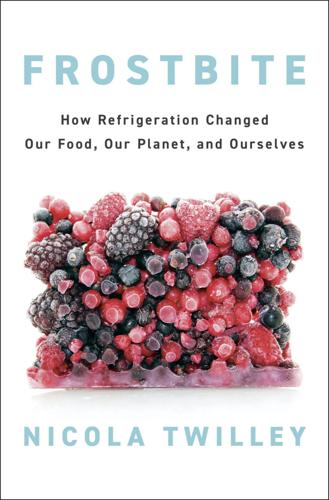
Frostbite: How Refrigeration Changed Our Food, Our Planet, and Ourselves
by
Nicola Twilley
Published 24 Jun 2024
To test how its formulations hold up, Apeel starts by sending its own instruments out to accompany produce along the supply chain. Using that data, it programs an environmental chamber to subject Apeel-coated fruit and vegetables to the exact conditions they will encounter in the real world. To make spraying Apeel seamless for fruit growers, the company has invested in a 3D-printing lab where it can design and test the hoses, nozzles, and blowers needed to apply and dry the coating correctly. For supermarkets, it built a time-lapse photography studio where coated and uncoated radishes and tomatoes sit side by side under professional lighting and a camera on rails glides around taking overhead shots of each pair every hour.
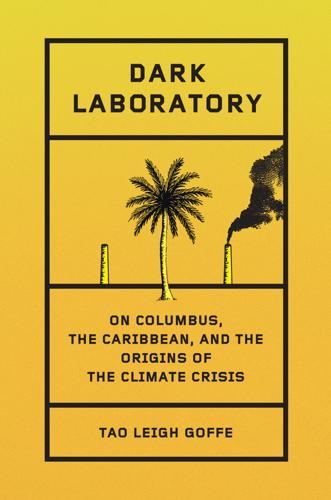
Dark Laboratory: On Columbus, the Caribbean, and the Origins of the Climate Crisis
by
Tao Leigh. Goffe
Published 14 Mar 2025
There is always an ecological cost to be factored in. When I visited the Museum für Naturkunde in Berlin in 2022 for an AI conference, the mission was to digitize the entire collection. From what I could see in the room of about a hundred people, I was the only Black person there. Museum officials celebrated a 3D printed bust of Humboldt, the patron saint of that natural history museum. I knew to be suspicious when I heard their mantra: “Digitize the world.” The same logic of collecting the world is championed by institutions such as the British Library, which promote grants and fellowships to save endangered archives.

The Contrarian: Peter Thiel and Silicon Valley's Pursuit of Power
by
Max Chafkin
Published 14 Sep 2021
On the outside, Palo Alto and the rest of the Peninsula between San Jose and San Francisco could just as well be in suburban Tucson or Tulsa—full of small houses, strip malls, and office parks. But then you’ll wander into a Panera or the breakfast buffet at a Courtyard by Marriott and see, glancing at a presentation on somebody’s laptop, plans for 3D-printed houses that are so cheap they’ll end homelessness or molecular structures for lab-grown meat. These entrepreneurs and financiers, preparing or receiving the presentation, will talk gleefully about overturning the old order—“the paper belt,” they call it. They mean New York, Los Angeles, and Washington, D.C., which they believe will one day go the way of Flint, Erie, and Youngstown.

Rule Britannia: Brexit and the End of Empire
by
Danny Dorling
and
Sally Tomlinson
Published 15 Jan 2019
As Billy Bragg recently sang, ‘Once we ruled over an empire / So it feels like some kind of defeat / To comply with rules drawn up by strangers / And measure in metres not feet.’47 Perhaps the British government intended at one point during Brexit that Britain should become a high-tech manufacturing island. In 2017, Theresa May asked Juergen Maier, UK chief of the German engineering firm Siemens, to think about what a fourth industrial revolution would look like. He produced a 246-page review arguing that robotics, artificial intelligence, 3D printing and advanced engineering would be an antidote to post-Brexit challenges.48 Or maybe, given the low level of skills in Britain as compared to other European countries, the future will be a low-skill, low-wage economy with reduced corporation taxes to persuade more overseas firms to take over more British companies, hoping that they won’t then close their UK factories and relocate elsewhere?

Doppelganger: A Trip Into the Mirror World
by
Naomi Klein
Published 11 Sep 2023
When they started showing up at the early anti-lockdown protests, they were presented as if a great secret was being revealed. What was strange, though, was that the Great Reset wasn’t hidden—it was a branding campaign that the World Economic Forum had kicked off to repackage many of the ideas it has long advanced: biometric IDs, 3D printing, corporate green energy, the sharing economy. All were hastily positioned as a blueprint for reviving the global economy post-pandemic by “seeking a better form of capitalism.” Through a series of videos, the Great Reset brought together heads of transnational oil giants to opine about the urgent need to tackle climate change, as well as politicians pledging to “build back better” and bring about a “fairer, greener, healthier planet.”
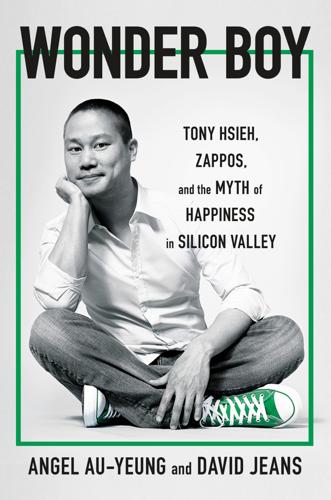
Wonder Boy: Tony Hsieh, Zappos, and the Myth of Happiness in Silicon Valley
by
Angel Au-Yeung
and
David Jeans
Published 25 Apr 2023
To manage the influx of guests arriving at the Welcome House, Suzie struck an agreement with Tony to use her company, Wellth Collective, to manage the operations of the house—organizing transportation, events, and accommodations—for a fee. People from all eras of Tony’s life were arriving by the busload with business ideas. One new arrival was asked to build a 3D printing lab at the Welcome House. Another group of people pitched an idea for cashing in on the COVID-19-driven boom in demand for personal protective equipment. One apparent deal had consumed him: a virtual reality company that had agreements with commercial landlords to set up demonstrations in malls.
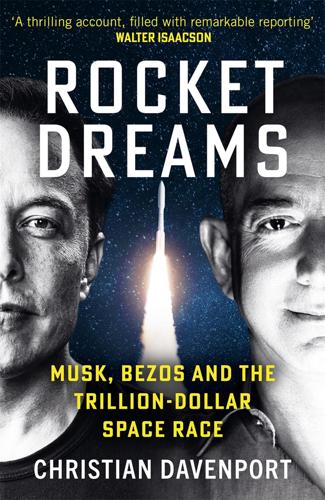
Rocket Dreams: Musk, Bezos and the Trillion-Dollar Space Race
by
Christian Davenport
Published 6 Sep 2025
If what Stamenković and his team were working on in this secretive lab came to fruition, it really could make an impact. NASA thought so too, and had awarded the company a $35 million contract as part of a program that would help companies develop technologies to build landing pads, roads, and habitats on the moon; to create nuclear power for energy and in-space 3D printing for manufacturing; and even to lay high-voltage power lines across the lunar surface. The contracts would help the commercial space industry “develop technologies that could support long-term exploration on the moon and in space,” NASA said at the time. But the total dollar amount came to a mere $150 million.

The Precipice: Existential Risk and the Future of Humanity
by
Toby Ord
Published 24 Mar 2020
But the bigger revolution may instead come from using nanomachinery to create macro-scale objects. In his foundational work on the topic, Eric Drexler describes how nanotechnology could allow desktop fabricators, capable of assembling anything from a diamond necklace to a new laptop. This atomically precise manufacturing would be the ultimate form of 3D printing: taking a digital blueprint for the object and the raw chemical elements, and producing an atomically precise instance. This may allow us to construct things beyond our current technological reach, as well as cutting prices of existing objects such as computers or solar cells to near the cost of their raw materials, granting the world vastly more computing power and clean energy.

Mastering Blockchain, Second Edition
by
Imran Bashir
Published 28 Mar 2018
Moreover, the possibility of combining intelligent Oracles, intelligent, smart contracts, and AAs will give rise to Artificially Intelligent Decentralized Autonomous Organizations (AIDAOs) that can act on behalf of humans to run entire organizations on their own. This is another side of AI that can become norm in the future. However, more research is required to realize this vision. Also, convergence of blockchain technology with other fields such as 3D printing, virtual reality, augmented reality, and the gaming industry is also envisaged. For example, in a multiplayer online game, blockchain's decentralized approach allows for more transparency and can ensure that no central authority is gaining unfair advantage by manipulating the game rules. All these topics are active areas of research currently and more interest and development are expected in these areas soon.

Fancy Bear Goes Phishing: The Dark History of the Information Age, in Five Extraordinary Hacks
by
Scott J. Shapiro
In other words, the tape must contain the instructions for making a child, but not for printing the child’s internal blueprint. Next von Neumann split self-replication into two parts: construction and copying. Self-replication begins when the UC’s control unit switches to the construction phase. In this first stage, the parent UC follows its internal blueprint and 3D prints a child UC. Since the internal blueprint is incomplete, the child does not yet contain an internal blueprint. To get the blueprint into the child, von Neumann included a 2D copier. Its sole function is to copy the tape containing the blueprint. (You can actually buy a 3D printer with a copy machine from Amazon in the “Home Office” section!)
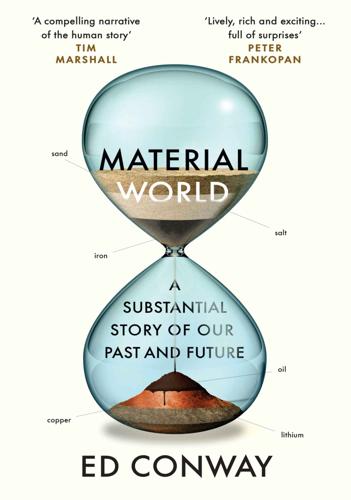
Material World: A Substantial Story of Our Past and Future
by
Ed Conway
Published 15 Jun 2023
Today’s ship-grade steels are considerably more resilient, and they make up a small section of an overwhelming number – thousands – of different grades of this metal. There are steels that are bendy, steels that are stiff, steels thicker than tree trunks or thinner than kitchen foil, armour-plated steels from Sweden, landing-gear steel from Sheffield, vacuum-moulded steels, powdered steels for 3D printing … Yet making such steels is not always simple. Much of the steel produced in China was, up until recently at least, of pretty poor quality. It was used as reinforcement bars in concrete, where it would often rot away, leading to structural deficiencies in bridges and highways. In 2015, the then premier Li Keqiang visited the World Economic Forum in Switzerland, picked up a ballpoint pen and was stunned.
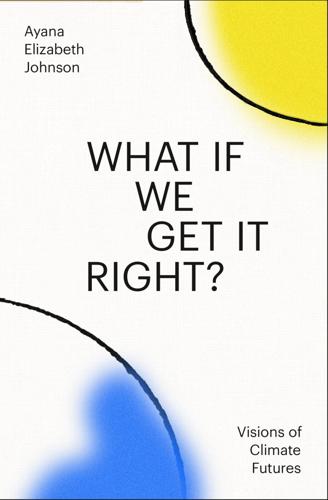
What If We Get It Right?: Visions of Climate Futures
by
Ayana Elizabeth Johnson
Published 17 Sep 2024
For instance, at the LUMA Foundation in Arles, France, there is a lab that studies algae, which are a renewable resource and also often the byproduct of the pollution of our waters. Their Algae Platform initiative gives workshops in different cities, teaching people to transform their local algae into biomaterials that can then be 3D printed to create traditional objects. The idea of digging out a new memory from pollution is beautiful. There were also some works in the exhibition by Neri Oxman, a remarkable architect whose oeuvre is emblematic of an approach to design based on working with nature. Two projects in particular, one about co-creation with silkworms, and the other experimenting with melanin as an architectural element.

Aerotropolis
by
John D. Kasarda
and
Greg Lindsay
Published 2 Jan 2009
Here’s the story behind its latest version, the chumby one, as told by the company’s one and only hardware engineer, Bunnie Huang, on his blog: The idea sort of slow-rolled through the first few months of 2009, and after chinese new years, I taped out the first prototype board in late March. Around May we contracted an industrial designer to do some sketches, and by June we had a near-final [design]; our first 3D printed prototypes were made around then … In July, we inked a PO for steel tooling and by August we had first-shot plastics. September was spent refining and de-bugging the design, and October was spent doing more testing, refining, and ramping up mass production. And, here we are now, in November. When I wrote this, the first shipment of chumby Ones were somewhere 35,000 feet above the Pacific Ocean en route to LAX.

The Price of Time: The Real Story of Interest
by
Edward Chancellor
Published 15 Aug 2022
As Gordon’s book The Rise and Fall of American Growth went to press in early 2016 (its publication facilitated by digital technologies), the internet continued to disrupt countless industries while the media fanned fears of an impending ‘second machine age’, in which robots replace human workers. Gordon’s Northwestern colleague Joel Mokyr suggested that a ‘shortfall of imagination [is] largely responsible for much of today’s pessimism’. Mokyr listed a number of revolutionary new technologies then under development, including 3D printing, graphene and genetic engineering, to which might be added autonomous cars and clean energy.19 Finance writer William Bernstein accused secular stagnationists of conflating what they couldn’t conceive with that which was not possible.20 Hansen made the same mistake. The most reliable prediction, Bernstein concluded, is to assume that past economic trends continue.

Four Battlegrounds
by
Paul Scharre
Published 18 Jan 2023
Researchers have altered traffic signs using small stickers, in one case fooling image classifiers into misidentifying a stop sign as a forty-five-mile-per-hour speed limit sign. Researchers have also used stickers to fool image classifiers into seeing traffic signs that weren’t there. Adversarial attacks have been embedded into physical objects, such as a 3D-printed turtle that was subtly altered to fool an image classifier into misidentifying it as a rifle. Even more alarming than stickers on stop signs, in a real-world driving experiment researchers used black box methods to create a physical adversarial object that was able to evade detection by the laser-based detection systems used by self-driving cars.

MONEY Master the Game: 7 Simple Steps to Financial Freedom
by
Tony Robbins
Published 18 Nov 2014
He is the nation’s #1 life and business strategist. He’s called upon to consult and coach with some of the world’s finest athletes, entertainers, Fortune 500 CEOs, and even presidents of nations. Robbins is a founder of or partner in more than a dozen companies in industries as diverse as a 5-star Fijian island resort to custom 3D-printed prosthetic limbs. Through the Anthony Robbins Foundation and his matching funds, Tony feeds 4 million people per year in 56 countries. He has also initiated programs in more than 1,500 schools, 700 prisons, and 50,000 service organizations and shelters. He lives in Palm Beach, Florida. MEET THE AUTHOR, WATCH VIDEOS AND MORE AT SimonandSchuster.com authors.simonandschuster.com/Tony-Robbins We hope you enjoyed reading this Simon & Schuster eBook
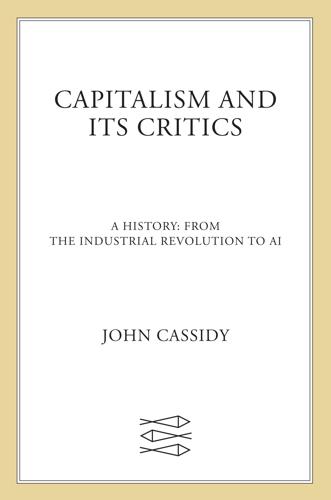
Capitalism and Its Critics: A History: From the Industrial Revolution to AI
by
John Cassidy
Published 12 May 2025
The options being touted included a technology-driven revival in productivity and income growth that would give free market capitalism another lease on life; a drastic shift away from materialism and economic growth in the name of sustainability; a retreat into protectionism and economic nationalism; and the creation of a new managed capitalism for a postindustrial age of algorithms and platform monopolies. * * * Hovering over many of these discussions was the emergence of potentially transformative digital technologies, such as self-driving vehicles, drones, 3D printing, robotics, and, most ominously, large language artificial intelligence models. In their 2014 book The Second Machine Age, Erik Brynjolfsson and Andrew McAfee, two economists at MIT, wrote: “The key building blocks are already in place for digital technologies to be as important and transformational to society and the economy as the steam engine.”17 Modern economists refer to a technology that impacts the entire economy over extended periods as a “general purpose technology.”

Enlightenment Now: The Case for Reason, Science, Humanism, and Progress
by
Steven Pinker
Published 13 Feb 2018
Artificial intelligence, crunching big data on genomes, symptoms, and histories, will diagnose ailments more accurately than the sixth sense of doctors, and will prescribe drugs that mesh with our unique biochemistries. Stem cells could correct autoimmune diseases like rheumatoid arthritis and multiple sclerosis, and could populate cadaver organs, organs grown in animals, or 3D-printed models with our own tissue. RNA interference could silence pesky genes like the one that regulates the fat insulin receptor. Cancer therapies can be narrowcasted to the unique genetic signature of a tumor instead of poisoning every dividing cell in the body. Global education could be transformed.

Growth: From Microorganisms to Megacities
by
Vaclav Smil
Published 23 Sep 2019
These advances have led to the unintended effect of raising general expectations regarding the pace of technical progress. This is a clear pars pro toto mistake or, as I have called it, Moore’s curse (Smil 2015a). Rapid progress is now assumed to improve everything from the energy density of batteries to 3D printing of living organs in short periods of time. These advances have also raised unrealistic expectations about the general progress of dematerialization. Thanks to Moore’s law, that trend has been quite impressive as far as computation is concerned, with the mass per unit of RAM ratio having been cut by nine orders of magnitude since 1981 (Smil 2014a).

The Rough Guide to New York City
by
Rough Guides
Published 21 May 2018
Gulliver’s Gate 216 W 44th St • Daily: May–Sept 9am–10pm; Oct–April 10am–8pm • Tickets gulliversgate.com • Subway N, Q, R, W, S, #1, #2, #3, #7 to Times Square-42nd St; A, C, E to 42nd St-Times Square One of the newer – and more unusual, which is saying something – sights in Times Square, Gulliver’s Gate attempts to render the world’s regions and landmarks in miniature, much of it through the magic of 3D printing. The tiny models are not to scale nor do they follow traditional geography (or time; note Zeus on Olympus and NYC’s West Village looking like something from Wild West times), but they are decent fun to investigate; there’s even running water in the Panama Canal and lots of bits that move around with the turn of a key.

Artificial Intelligence: A Modern Approach
by
Stuart Russell
and
Peter Norvig
Published 14 Jul 2019
Remote agent: To boldly go where no AI system has gone before. AIJ, 103, 5–48. Muslea, I. (1999). Extraction patterns for information extraction tasks: A survey. In Proc. AAAI-99 Workshop on Machine Learning for Information Extraction. Muth, J. T., Vogt, D. M., Truby, R. L., Mengtic, Y., Kolesky, D. B., Wood, R. J., and Lewis, J. A. (2014). Embedded 3D printing of strain sensors within highly stretchable elastomers. Advanced Materials, 26, 6307–6312. Myerson, R. (1981). Optimal auction design. Mathematics of Operations Research, 6, 58–73. Myerson, R. (1986). Multistage games with communication. Econometrica, 54, 323–358. Myerson, R. (1991). Game Theory: Analysis of Conflict.